
Savvy Travel Advice

Belfast Travel Guide: Top 40 Things to do in Belfast Northern Ireland
Last updated: May 21, 2024 - Written by Jessica Norah 16 Comments
Belfast is the capital and largest city in Northern Ireland, and there are so many things to do in Belfast! Belfast is probably best known for being where the RMS Titanic was built as well as for the violence and suffering here during The Troubles in the later part of the 20th century.
However, today the city offers a lively historic city center, the famous Titanic Quarter, fun pubs, excellent museums, hundreds of street murals, beautiful gardens and green spaces, Victorian architecture, and a growing tourism industry. Belfast is perhaps not as well-known as Dublin to international travelers, but the reward of visiting here is a less crowded city where experiences feel more authentic.
We’ll share our guide to Belfast attractions, highlighting all the top things to do in Belfast, from central Belfast to the surrounding area. We’ll also share information about how to get there, when to go, public transport options, where to stay, day trip ideas, and other travel information.
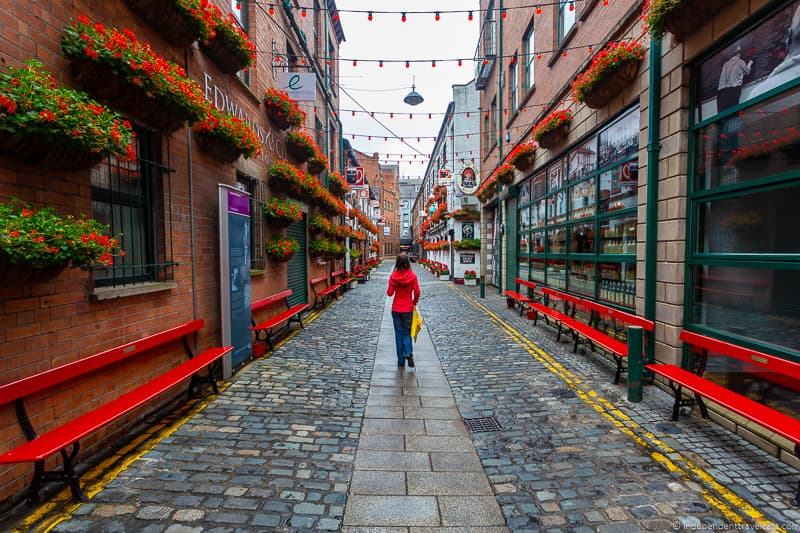
Table of Contents:
Basic Info on Visiting Belfast
Before we share all the things to do and see in Belfast, we wanted to give you all the basic information you’ll need to plan your trip including how to get to Belfast, best times of year to visit, and where to stay.
Where is Belfast?
Belfast is the capital and largest city in Northern Ireland within the United Kingdom. It is situated alongside the River Lagan on the northeast coast of the island of Ireland.
Note that politically the island of Ireland is divided between the Republic of Ireland and Northern Ireland. Northern Ireland is part of the United Kingdom whereas the Republic of Ireland is not and is a separate country.
Getting to Belfast
There are multiple options for getting to Belfast.
By Plane. Belfast has two airports, Belfast International Airport and George Best City Airport , both of which have flights from a number of domestic and international destinations, primarily within the UK and western Europe. If there is no direct flight, you can get connecting flights from other cities in the UK such as London, Manchester, Edinburgh, or Glasgow.
If you fly into Belfast International Airport, the airport is a short shuttle bus ( Airport 300 service ), taxi ride , Uber, or private transfer from Belfast.
If you fly into George Best City Airport, you can take a short shuttle bus ( Airport Express 600 Service ), train ride (it is about a 12 minute walk to the station or you can take the airport shuttle to Sydenham train station), taxi ride , Uber, or private transfer into the city.
Alternatively, you can fly into Dublin Airport which has a lot more international connections and then get a bus or train or drive to Belfast. It takes about 2 hours by car or 2.5 hours by bus from the airport. If you are in Dublin, you can also take a train from Dublin to Belfast which takes about 2 hours 15 minutes.
By Train. Belfast can be reached by train from within the island of Ireland, including the cities of Dublin, Cork, Limerick, and Galway. You can save money on fares by booking train tickets in advance. Check routes, fares, and schedules on Irish Rail .
By Bus. If you are in the UK or Ireland, there are daily coach connections to Belfast from a number of cities. Routes from England, Scotland, and Wales all include ferry transport. You can check Translink and National Express for coach connections.
By Car. For drivers, Belfast is about 70 miles from Derry/Londonderry (about 1 hour, 30 minutes), 105 miles from Dublin (about 2 hours), 260 miles from Cork (about 4 hours, 15 minutes). If you are coming from England, Scotland, Wales, or continental Europe, you’ll need to get a ferry to reach Belfast.
By Ferry. Ferries to Belfast regularly depart from Liverpool (England), Cairnryan (Scotland), and the Isle of Man. The main ferry company we recommend is Stena Line . Check out their ferry routes and schedules here .
Getting around Belfast
Belfast has a good public bus transport system run by Translink . Metro is the name of the main bus service for all of Belfast.
Driving in and around the city is also fairly easy although finding parking in the central area can be difficult at times although there are several paid public parking structures. Walking or using a bus is recommended for reaching central locations.
There are also, of course, taxis and Uber (mostly operates to and from airport). Taxi tours are also very popular ways to see the city with a driver guide.
Bikes are available to rent through the city’s bike share program , and kiosks are available in many popular tourist areas.
There’s also the City Sightseeing Bus which is a hop-on, hop-off bus that will take you to all the highlights in the city and provides commentary so you can learn a bit more about the city and the sites you see. It stops near most of Belfast’s major attractions including the Titanic Belfast museum, St. George’s Market, Botanic Gardens, and the Shankill Road wall murals.
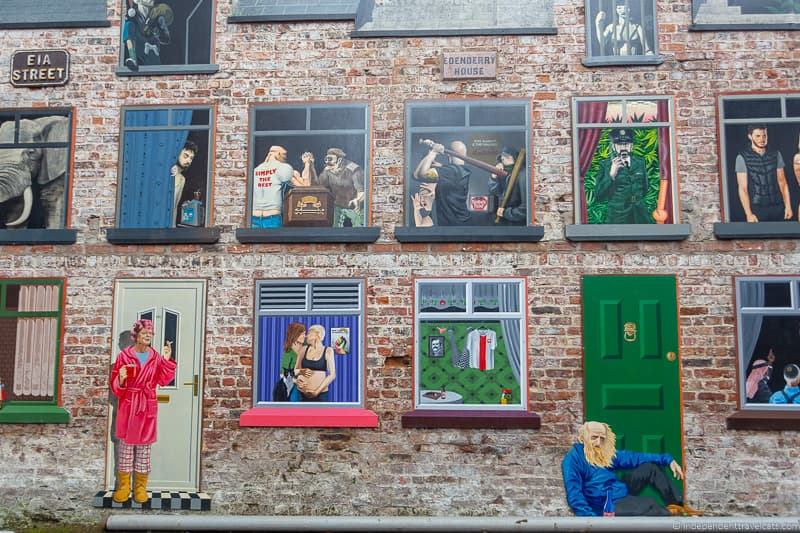
Currency Used in Belfast?
Belfast is part of the United Kingdom so the pound sterling (GBP) is the legal currency. This is the same currency used throughout the rest of the United Kingdom (England, Wales, Scotland).
Note that if you travel south and visit the Republic of Ireland (e.g., Dublin), you will need to get euros as the euro is the official currency of the Republic of Ireland. Northern Ireland is part of the United Kingdom whereas the Republic of Ireland is not.
Best time of year to visit Belfast?
The best time of year to visit depends a lot on what you want to do. If you are looking for the warmest weather, you’ll want to travel in summer between June and August. April is often the month with the least chance of rain, humidity, and crowds.
Our favorite times of year to travel in Northern Ireland are May, June, and September. The weather is generally decent, the days are long, and the attractions are not too crowded.
Although note that most attractions in Belfast are rarely that crowded. The exception is the attractions in the Titanic Quarter which can be pretty crowded in summer and during holidays and school breaks. Other popular sites in Northern Ireland like the Giant’s Causeway are also very busy in the summer months.
If you want to go to a certain event or festival (e.g., concert, Christmas markets, Belfast International Arts Festival ), then we’d recommend you can check the events calendar and plan around those dates!
However, any time of the year is a good time to visit Belfast as most attractions are open year round. Generally, it will be warmer in summer and colder in winter, but predicting the weather is impossible as it can be sunny in January or cool and raining in August.
We’d suggest just checking the weather forecast before you visit, and be prepared for variable weather by bringing plenty of layers and rain gear no matter when you plan to visit.
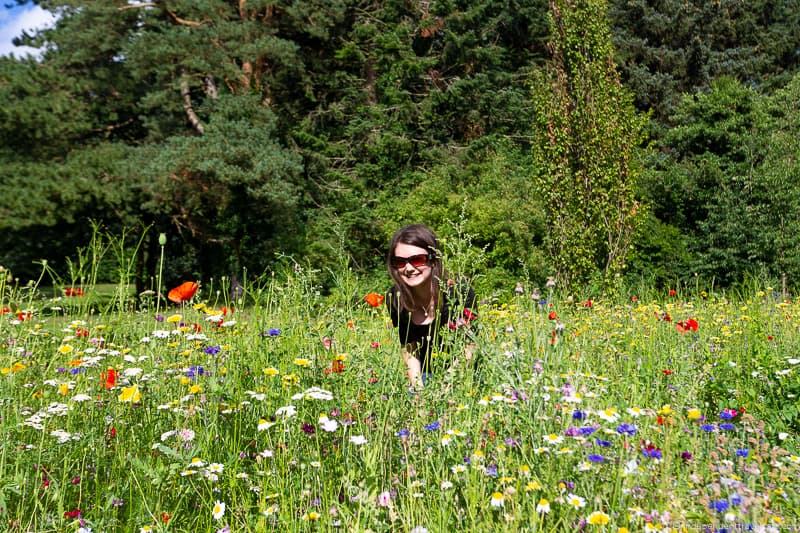
How many Days should I Spend in Belfast?
This depends primarily on how much time you have and what you want to do. But I would recommend spending at least 2 full days and nights in Belfast to get a good taste of the city. You can see our 2 day Belfast itinerary for ideas.
If you just have a day, you’ll still be able to see a few of the city’s highlights. Just be sure to plan your time ahead or join a tour to mae the most of your time.
If you are visiting Belfast because of an interest in the RMS Titanic , then we recommend checking our Belfast Titanic attractions guide . This article includes a suggested 2 day itinerary that includes all the city’s main Titanic and maritime attractions.
For those who have more than a couple of days, there are also several excellent day trips you can take from Belfast as well and we’ll highlight a few of these at the end of the article. If you have longer than a couple of days, you can easily spend a week here and not run out of things to do.
To figure out how many days to spend in Belfast, I would suggest using this post which lists all the main highlights and things do in Belfast to create a list of places you want to visit. I would then figure out how many days it will take you to see all the Belfast attractions you want (e.g. 3-5 attractions per day), and that should give you a good answer.
Discount Passes in Belfast?
There is no must-have pass for Belfast but there are a couple of discount passes that may help you save money, depending on what you want to do and how you plan to get around Belfast.
Belfast Visitor Pass
Belfast does have a city Visitor Pass which offers free public transport around the city, which includes unlimited travel on all Metro buses, NI Railways, and Ulsterbus services. It also includes the Airport Express 600 services to and from George Best Belfast City Airport (but not the Airport 300 service to Belfast International Airport). You can buy a pass valid for 1, 2, or 3 days.
The pass also includes discount offers on a number of restaurants, attractions, and shops in Belfast. Currently with the pass you can discounts on entry to Titanic Belfast, Crumlin Road Goal, Ulster Folk Museum, Ulster Transport Museum, Titanic Distillers tours, Belfast Zoo, and Belfast City Tours. You can check out the latest discount offers here to decide if it is a good pass for you.
You can purchase the Belfast Visitor Pass in person from Visit Belfast Welcome Centre (9 Donegall Square North), Belfast airport tourist information desk (at both airports), or at any Translink station in Belfast. Or you can purchase it online before your trip.
National Trust Touring Pass
If you plan to travel throughout the UK and visit several historical or cultural attractions, you might save money with a National Trust Touring Pass which allows for free entry to over 300 stately homes, gardens, castles, and historical attractions in the UK. The pass is good for a select amount of days and includes sites across England, Wales, and Northern Ireland.
A few of the most popular sites covered by the pass in Northern Ireland are Carrick-a-Rede, Castle Ward, the Giant’s Causeway, and Downhill Demesne and Hezlett House.
Accessibility in Belfast
If you or a travel companion has reduced mobility or is traveling in a wheelchair or mobility scooter, check out the accessibility page on the Visit Belfast website. It provides information on accessible public transport, attractions with step-free access and wheelchair accessibility, wheelchair hire, locations of accessible public toilets, etc.
Safety Issues in Belfast?
Northern Ireland is generally considered a safe place to travel, and we haven’t had any safety concerns during our visits.
However, it is no secret that not too long ago, Belfast resembled a bit of a war zone and was not a place many tourists had on the top of their list from the 1960’s to the end of the 1990’s. The Troubles brought a lot of division, hardship, and violence to Belfast and much of the rest of Northern Ireland. Those scars remain today and there are still divisions, but sectarian violence is now rare.
However, rioting does occasionally break out over political and religious issues as it has recently in March and April 2021 . Although most marches and protests are peaceful, we recommend just avoiding any protests, gatherings, or marches if you see them taking place.
As with any place, we always recommend protecting your valuables, protecting yourself against pickpockets, and being aware of your surroundings at all times. Take the normal precautions you would in any other city.
Where to Stay in Belfast?
Belfast has many lodging options, ranging from budget to upscale, and you should not have a problem finding an option that suits your style and budget. Belfast’s tourism industry is also growing rapidly and there are several new hotels planned to open in the next year or two, and lots of good deals.
If you are looking for lodging, then we’d recommend you check out the Belfast accommodation listings on Booking.com which lists a large variety of hotels , apartments , guesthouses , and hostels .
We recommend staying in a central location, especially if you have limited time in the city, so you are within walking distance (or a short bus ride) from the city center.
Alternatively, if the Belfast Titanic museum and other Titanic Quarter sites are your prime reason for visiting, then you might want to stay in the Titanic Quarter so you can easily walk to all the sites in this area. Although you can walk to the Titanic Quarter from central Belfast, it can take 25 to 35 minutes depending on where you are located.
If you don’t mind staying a little bit out of the city center and are looking for a nice bed and breakfast, we can recommend the highly-rated James Clow B&B along the waterfront. it is about a 25 minute walk to the Belfast city center and a 35 minute walk to the Belfast Titanic.
Here are some specific hotel recommendations:
Accommodation in City Centre / Cathedral Quarter Area
- Bullitt Hotel – This lively centrally-located 4-star hotel offers 3 room types to suit almost any budget. The hotel also has a bar, a cafe, a restaurant, a popular rooftop bar area, and 24-hour desk service. It is a 2 minute walk to the Cathedral Quarter and about a 8 minute walk to St. Georges market or the Belfast City Hall. We spent 4 nights here and can definitely recommend it if you are looking for a central hotel!
- The Merchant Hotel – If you are looking for a 5-star historical luxury hotel, The Merchant, located in a beautiful 1860 building, should definitely be high on your list. Centrally located in the Cathedral Quarter, the hotel offers all the luxury amenities you would expect, including a restaurant, bar and lounge, spa, hot tub, and a rooftop gymnasium.
- Fitzwilliam Hotel – This 5-star hotel is a more modern one (built in 2009) with understated contemporary decor and all the modern amenities. Offers a restaurant, cocktail bar, 24-hour front desk, fitness center, and valet parking. Located next to the Grand Opera House and a 5 minute walk from Ulster Hall.
- Leonardo Hotel (formerly the Jurys Inn) – This 4-star hotel offers spacious rooms, breakfast buffet, bar, and restaurant. This hotel chain usually provides good value for the money. Located near Belfast City Hall and the Opera House, it is just a 5 minute walk from the Great Victoria Street rail station.
- Ramada – This well-rated 3-star hotel is located in the Cathedral Quarter. The budget hotel offers an informal restaurant and bar, 24-hour front desk, and free Wifi. Located near Belfast Cathedral and The MAC.
- Belfast International Youth Hostel – This hostel offers the best location if you are looking for a centrally located hostel. Hostel offers both private shared and private dormitory rooms, an on-site cafe, linens, a communal kitchen, a breakfast menu, self-service laundry, and even free parking.
Accommodation in Titanic Quarter
- Titanic Hotel – This 4-star hotel sits within a historical building that was once the Harland and Wolff headquarters and drawing offices (the company that designed and built the RMS Titanic !). A beautiful historical property that offers Art Deco themed rooms, Titanic memorabilia, bar, restaurant, and room service. We’ve had a lovely 3-night stay here. Only a 2 minute walk to the Titanic Belfast museum.
- Premier Inn – This 3-star hotel offers king sized beds and an on-site bar and grill. It is a 7 minute walk to the Titanic Belfast museum. This no-frills budget chain also offers two other Belfast locations around the city center.
- CK Serviced Apartments – These well-reviewed serviced apartments are great for those looking for a self-catering option in the Titanic Quarter. There is an on-site restaurant, grocery store, cafe, and private parking available. They are only a 7 minute walk away from the Titanic Belfast.
- The Bullitt Hotel , AC Hotel , and the Hilton (next to the waterfront) are across the river but are both within a 25 minute walk (or 12 minute bus ride) of Titanic Belfast. These can be good hotels for reaching both the city center and Titanic Quarter if you don’t mind the walk.
We’ve also stayed in an apartment in Belfast during our first visit to Belfast which was great value for money. You can see the local listings on Vrbo here .
You can also take a look at this list of Airbnb alternatives for more apartment rental options.

Where to find more Information?
If you are looking for a good sample Belfast itinerary, check out our 48 hour Belfast itinerary which should help give you a good starting point. We also have a suggested 2 day Belfast Titanic itinerary for those interested primarily in Titanic and maritime-related attractions.
Belfast makes an excellent base for exploring Northern Ireland, and you can see our guide to the best day trips from Belfast for some inspiration. If you are looking for a drive along the coast, see our guide to a suggested Causeway coastal route road trip .
Game of Thrones fans will love exploring the filming locations for the show in Northern Ireland. You can read about many more filming locations in our guide to Game of Thrones filming locations in Northern Ireland here . We also have a detailed guide to visiting the Dark Hedges .
If you are looking for a printed (or digital) guidebook, there are few that just focus on Belfast and Northern Ireland, such as this one by Rick Steves and this one by Lonely Planet , but most cover the whole island of Ireland, such as these ones . Just be sure to get a recent edition.
If you are also heading to Dublin, you can check out our 2 Day itinerary and 3 Day Dublin itinerary as well as our Dublin street art guide and Dublin Pass review .
Once in Belfast, you can get information from local experts, pick up maps and brochures, and make bookings at the Visit Belfast Welcome Centre located at 9 Donegall Square North. This is also a visitor center for Northern Ireland so has information for Belfast as well as the rest of the country. You can also call them at +44(0)28 9024 6609 or email them at [email protected].
If you are looking for additional information about planning your trip to Belfast, you can check out the official Belfast city’s tourism website and the Discover Northern Ireland tourism website . If your travels are taking you further afield into Ireland, we also recommend the official Ireland tourism website which covers the entire island of Ireland.
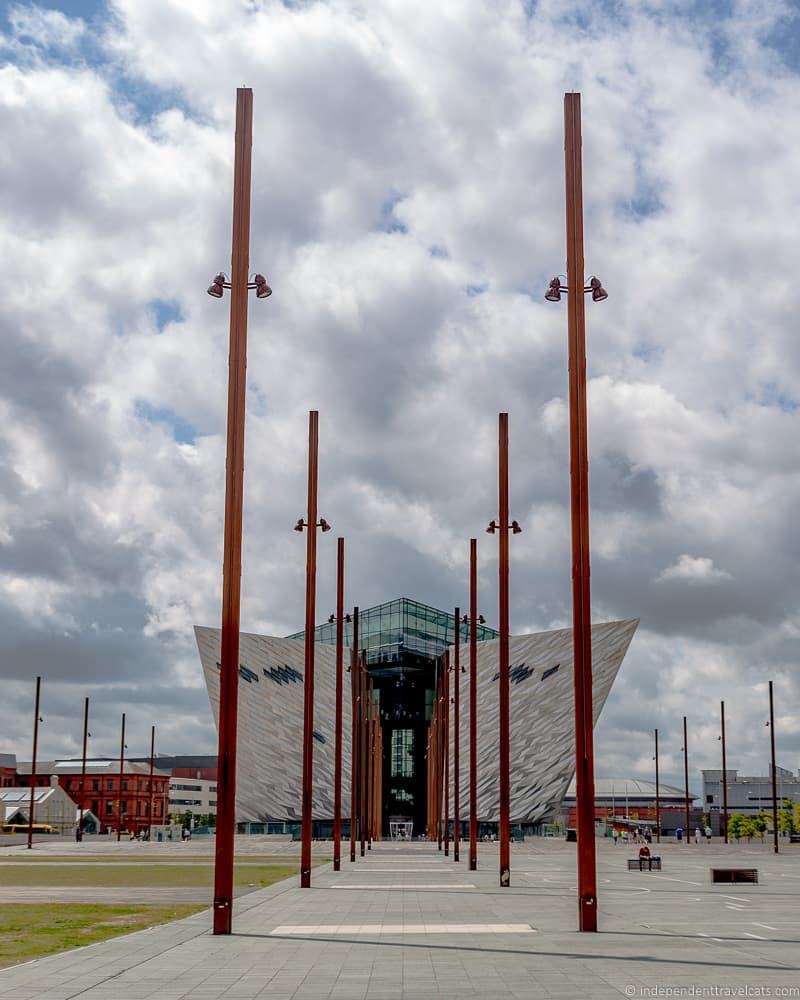
Top Things to do in Belfast: Central Belfast
There are many things to do in Belfast and many are conveniently located within central Belfast. We are roughly categorizing central Belfast as encompassing the areas that are often referred to as Belfast City Centre, the Cathedral Quarter, and the Linen Quarter. Once here, you can reach anything within this general area within a 20 minute walk or less.
The Belfast City Hall is the center point of the city and nearby is the Visit Belfast Welcome Centre, which is a great place to start your tour of the city. The Cathedral Quarter, named for St. Anne’s Cathedral, is the city’s historic trading quarter and is packed with Victorian architecture, cobbled streets, and quirky pubs and restaurants. The Linen Quarter is the area south of Belfast City Hall and was an area once dominated by the linen industry in the 19th century and includes a lot of old architecture, restaurants, and the Grand Opera House.
We are also including the Titanic Quarter, the former shipbuilding area formerly known as Queen’s Island where the RMS Titanic was built, within this section since most visitors plan to visit the Titanic Belfast museum. The Titanic Belfast can be reached by walking via a 30 minute walk across the bridge from the Belfast city center area. All of the attractions in the Titanic Quarter can be reached within a 45 minute walk, a 20 minute public bus ride, or by the hop-on hop-off sightseeing buses.
All the attractions in this first section are located within a 25 minute public bus ride from Belfast City Hall (Donegall Square) although most are within a 10 to 20 minute walk.
Use this list of things to do in Belfast to choose the attractions of interest to you and put together your own personalized Belfast itinerary!
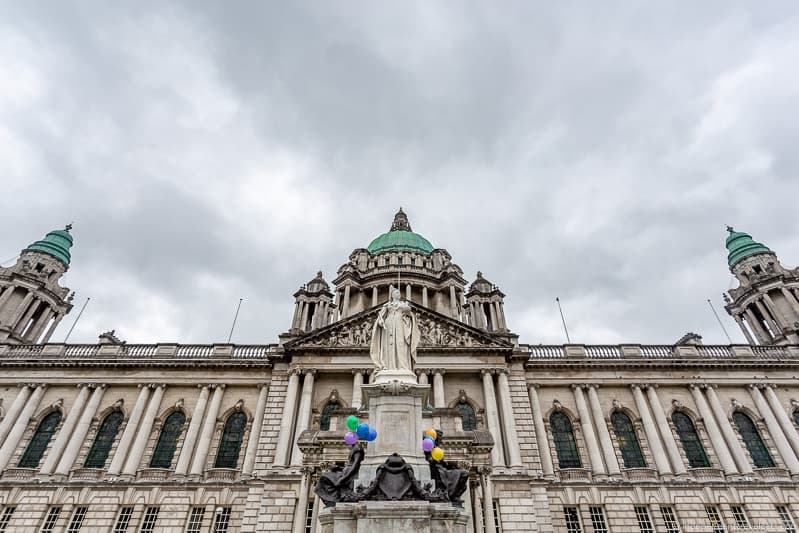
Sightseeing Bus or Walking Tour
A walking tour or sightseeing bus is always a good way to get a feel for a city and see some of its highlights. We often like to do these on our first day in a new city. Most of these start from the city center area.
Walking tours are a great way to explore a certain area of the city or focus on a specific topic. Available tours focus on highlights, the Titanic Quarter, architecture, whiskey, Queen’s University, the Troubles, and other topics. You can see a list of walking tours here and more walking tours here .
Bike tours around the city are also possible, such as these ones , and even these beer bike tours where you can bring your own alcoholic drinks to enjoy while pedaling a 16-set bike and listing to guide.
For food and drink tours also see Taste and Tour which offers gin, whiskey, beer, and food walking tours around central Belfast.
There are two hop-on hop-off sightseeing buses in Belfast, the City Sightseeing buses and the City Tours buses. These buses each stop at 20 to 30 different places and make it easy to reach and visit many of the city’s most popular attractions.
In Belfast, you also have Black Cab tours which are a popular way to see the city and most of these tours focus on the political history of Belfast and its street murals. We cover these tours in greater detail later in the article.
If you prefer boat tours, you might consider this boat sightseeing tour which takes you past the Titanic Quarter.
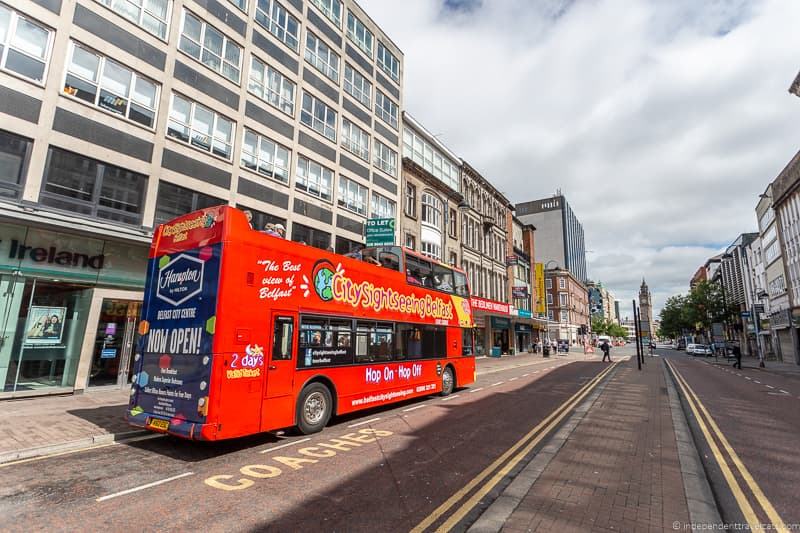
Belfast City Hall
Belfast’s City Hall was built after Queen Victoria granted Belfast city status in 1888 to reflect its growth in terms of population, economy, and industry. The building, which sits in the center of Donegall Square, was designed by Irish architect Alfred Brumwell Thomas in the Baroque Revival Style and it was completed in 1906. The City Hall is a great centerpiece for the city as well as a functioning government building that serves as the headquarters of the Belfast City Council.
Inside the building, there is a free public exhibition space that you can visit. The exhibition was much larger than we expected and currently encompasses 16 different rooms! It tells the history of Belfast through information, photos, and artifacts, and it explores the city’s government, people, famous events, industries, diversity, festivities, and much more.
It is also possible to take a free guided tour of City Hall. A guided tour includes information about the history and government of Belfast and visits to many of the grandest and most important areas and rooms in the building, including the Grand Staircase, Principal Rooms, the Reception Room, and the Chamber. One of the interesting features of the building is the large number of stained glass windows, most of which are original to the building and date to 1906.
Tours are given on a first come, first serve basis and you need to register for them at least 10 to 15 minutes before the stated tour time. So we’d recommend going at least 20 to 30 minutes before the tour time to get a spot. The guided tours of City Hall last around 1 hour, and run at various times throughout the day, depending on the time of year. You can see the tour times on the official website here .
Outside, there is a large park and gardens area around the building that is a popular place for people to meet and gather. During our last visit, it was being used for a family event and outdoor cinema screenings.
There are also a number of statues and memorials worth seeing around the City Hall building, including the grand 11-foot statue of Queen Victoria, the Belfast Cenotaph , and a 9/11 plaque. You’ll also find the Titanic Memorial Gardens here, which includes a memorial statue as well as a list of all those who perished in the disaster.
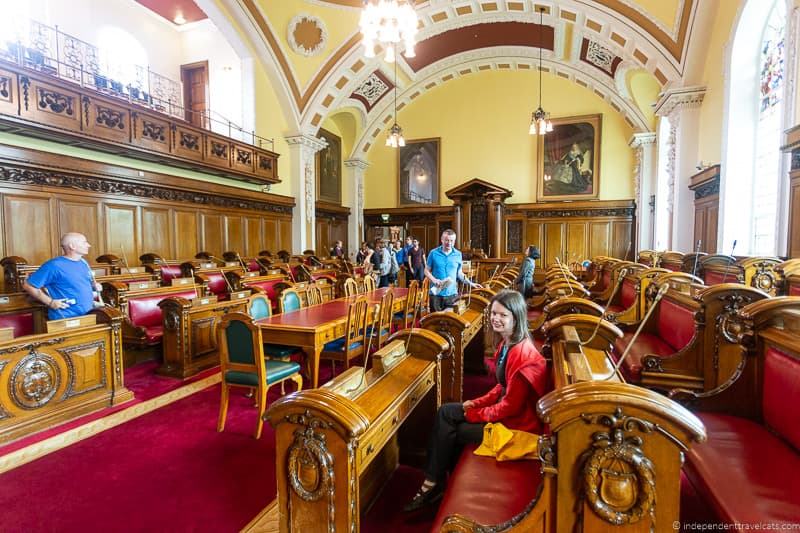
St. Anne’s Cathedral
St Anne’s Cathedral , also known as Belfast Cathedral, is an Episcopalian (Anglican) cathedral and one of the best known churches in Belfast. It was consecrated in 1904 and serves two separate dioceses with two Bishop’s Seats.
A former smaller church, consecrated in 1776, was also called St. Anne’s and stood here until the new and much larger cathedral was built. The old St. Anne’s had become too small to accommodate the large number of people moving to Belfast during the Industrial Revolution and a second Anglican church, St. George’s Church (located on High Street), was completed in 1816. It too was not enough and so a new St. Anne’s was built.
The church’s foundation stone was laid in 1899, but the church was rebuilt and expanded a number of times over the next 100 years to reach its present day form. The most interesting recent development was the addition of a stainless steel spire, called the Spire of Hope, to the church in 2007. A church spire was not originally added to the church because the church could not support the weight. The spire is usually illuminated at night.
Inside the church there are a number of elements you can check out if you decide to explore the church. These include the Good Samaritan Window (the only remaining piece of the 1776 St. Anne’s Church), mosaics on the roof of the baptistery and Chapel of the Holy Spirit (St. Patrick is depicted), and the Titanic funeral pall.
There is only one tomb in the cathedral, which is the tomb of Lord Edward Carson , an important 20th century unionist political leader in Ireland. He is one of only a few non-royal people to ever receive a British state funeral.
There is a small fee to visit as a tourist. Visits are self-guided but guided tours can be arranged in advance. Belfast Cathedral is an active church and there are regular worship services and events.
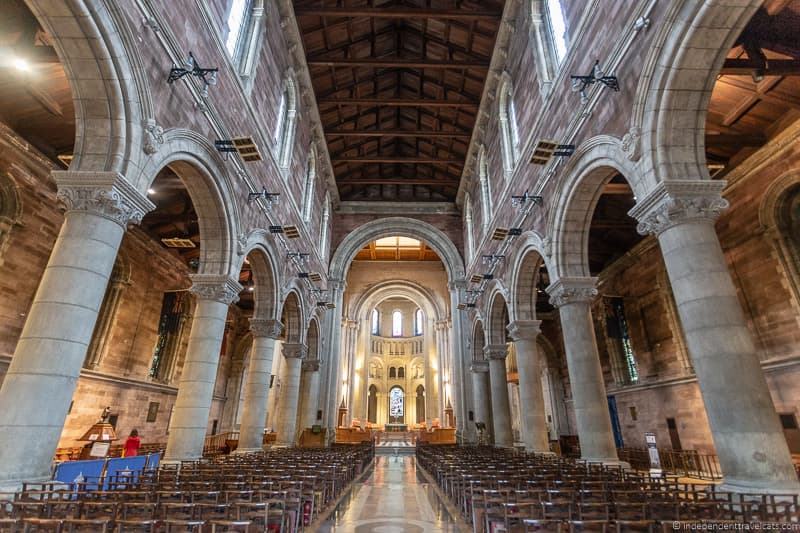
St. George’s Market
St. George’s Market is one of Belfast’s oldest attractions, and it is believed that a weekly market has been held in this location since 1604. The current Victorian building was built between 1890 and 1896, and today it holds markets each Friday, Saturday, and Sunday. Since its refurbishment in 1997, it has won a number of awards in the UK and Ireland.
The market vendors include fresh produce and food stuff, arts and crafts, souvenirs, spices, clothing, books, jewelry, and more. The market is particularly well-known for its number of fish and seafood vendors. The market also has food stalls selling prepared food, sandwiches, coffee, and snacks. On most days, there is live music from local artists and bands. The market is a popular and lively place to go on weekends.
Markets are held on Fridays, Saturdays, and Sundays. You can find the latest hours here . A free market shuttle bus runs every 20 minutes, 11am – 3pm, to and from the market from locations in central Belfast (Friday and Saturday only).
The market changes each day it is open with different vendors, although some are there all three days. The venue is also used to host a range of events throughout the year, including musical performances and charity events.
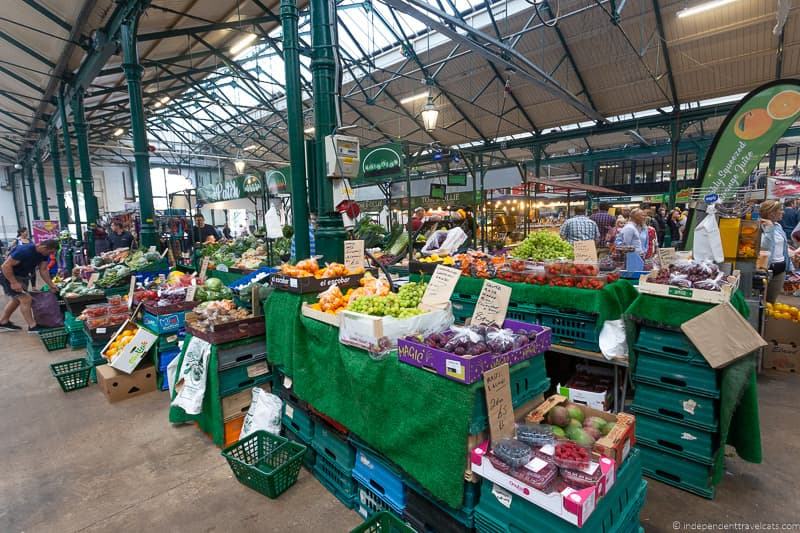
Grand Opera House
The Grand Opera House was built in 1895 by famous English theater architect Frank Matcham . The Grand Opera House has become a city landmark and is well-known for its beautiful interior. It is the only Victorian theater still remaining in Northern Ireland.
Originally, the theatre could seat over 2,500 guests and it hosted a number of operas, plays, musicals, and pantomimes. It was later used for variety shows throughout the early 20th century. In the 1950’s it was converted into a cinema and then in 1972, it closed. The building was almost demolished in the 1970’s during The Troubles, but was saved and reopened as a theater in 1980.
Today, the Grand Opera House is still running as a theater although today it only seats 1,000 people. Current performances include musicals, plays, dances, family shows, recitals, ballets, pantomimes, operas, and educational talks.
You can also book a theatre tour of the Grand Opera House. Guided tours include a behind-the-scenes tour of the Grand Opera House to learn about the history, day-to-day life of the staff and actors, and to tour the various rooms and areas of the theatre. Tours last about 1 hour, and are normally given on weekends about twice a month.
If you book an opera tour, it is a good idea to show up a little early to explore the self-guided Heritage Exhibition that can be accessed by tour participants.
You can check the performance schedule, check tour times, and book tickets here .
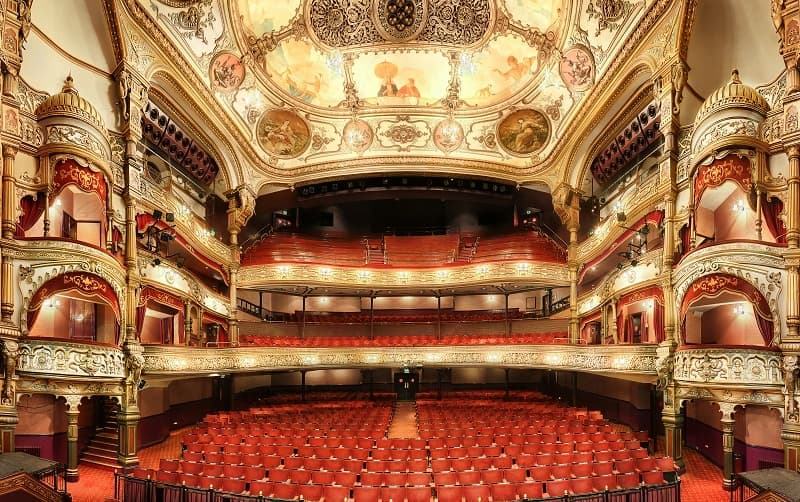
Albert Memorial Clock
The Albert Memorial Clock is a sandstone clock tower that was built as a memorial to Prince Albert, the husband of Queen Victoria. It is located at Queen’s Square in the center of Belfast and was built by Irish architect W.J. Barre and completed in 1869. Today, the Albert Memorial Clock is a popular local landmark in Belfast
The clock tower is 113 feet high and includes a number of intricate carvings. The main feature is a statue of Prince Albert wearing his Knight of the Garter robes. The clock’s bell weighs 2 tonnes. The clock tower has sustained damage by both German WW2 bombs and IRA bombs.
It is Belfast’s own “leaning tower of Pisa” as the tower leans due to being built on reclaimed marshy land. The clock tower started to lean soon after it was built and the tilt has worsened over time. In 2002, a restoration project was undertaken by the city to try to strengthen the foundation and to clean and restore the leaning monument.
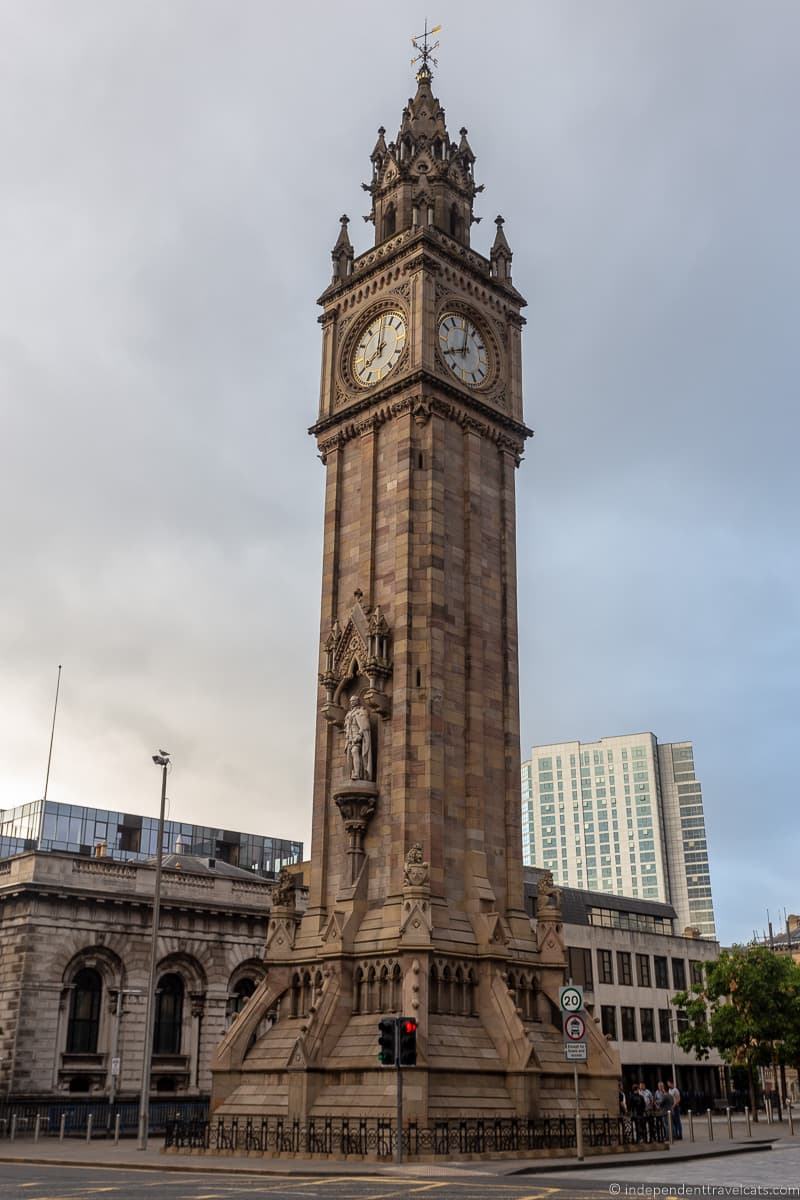
Metropolitan Arts Centre (The MAC)
The MAC, Belfast’s Metropolitan Arts Centre, was opened in 2012 and is a public art center that includes three major art galleries. The exhibitions vary throughout the year and most are free to visit, but some do have a fee.
The focus of the art is generally modern, contemporary, and experimental pieces and performances. You can see what’s on during your visit by visiting the art exhibition page .
The MAC also regularly has events and workshops, including art classes, art shows, performances, talks, and family-friendly activities. You can see the full event listing here .
The MAC has a café bar serving coffee, tea, snacks, hot meals, and alcoholic drinks.
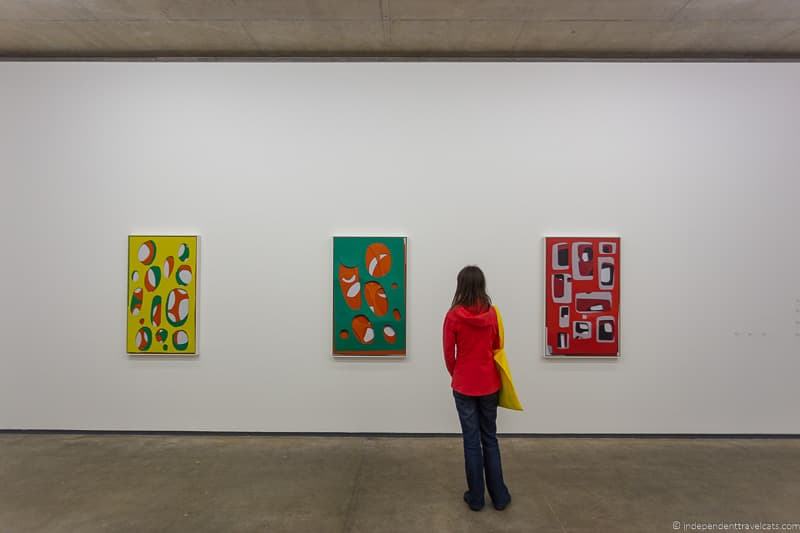
North Ireland War Memorial Museum
The Northern Ireland War Memorial Museum is a small museum that covers Northern Ireland’s involvement in World War II. The informational exhibits cover the Belfast Blitz, the roles of women during the war, the Ulster Home Guard, and the presence of a large number of American forces in the area. There are uniforms and medals on display as well as a memorial screen.
It is a small museum fit into one large room, but it is thoughtfully done and well-organized and primarily run by local volunteers. We really enjoyed our visit. Highlights were listening to some of the recordings by people who lived during the war, the lovely stained glass window, and learning more about the Belfast Blitz of 1941.
Belfast was initially thought to be out of the range of Nazi bombers so the military and residents were unprepared for air attacks when they first started happening, resulting in a lot of damage and deaths.
The Northern Ireland War Memorial Museum is free to visit although donations are greatly appreciated. It is centrally located in the Cathedral Quarter near St. Anne’s Cathedral.

Crown Liquor Saloon
The Crown Liquor Saloon, better known as the Crown Bar, is the most famous pub in Belfast. The pub was opened around 1826 by Felix O’Hanlon as The Railway Tavern but it would be its renovation and renaming in 1885 by the Flanagan family that would turn it into the pub we know today. It was known as one of the most beautiful Victorian era gin palaces in the world.
It is ornately decorated and still retains many of its original fixtures and decorations (most of which have been restored) including tiled mosaics, original gas lamp features, stained glass, a granite bar top, snugs, heated footrests behind bar, and carved wooden ceiling. It is now owned by the National Trust who helps protect it but it is run as a pub by Mitchells & Butlers.
The place is a very popular stop for tourists and the bar attracts a number of famous visitors. Famous visitors have included Brad Pitt, Prince Harry and Meghan Markle, and most of the cast of Game of Thrones .
The pub has a full bar menu and serves both lunch and dinner. There is also an upstairs dining area. It is a popular place so if you plan to stop and eat here, I’d recommend booking a table in advance. You can see the menus and contact info here .
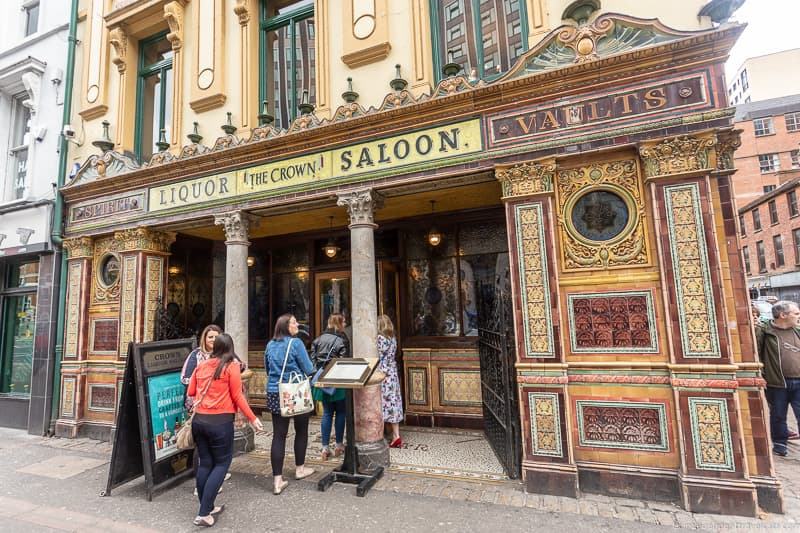
Belfast Black Cab Tours
The Black Cab tours of Belfast are one of the most popular things to do in Belfast for tourists. The use of taxis in Belfast grew during The Troubles when the cabs were used to transport locals and visitors during the Troubles as they were considered much safer than city buses which were sometimes bombed or attacked by snipers. Also many buses were stolen, burned, and used for barricades in certain parts of the city, resulting in limited public transit.
So more taxi drivers were needed during this period. Many drove defunct bus routes and most drivers operated only in Loyalist/Unionist/Protestant neighborhoods or only in Republican/Nationalist/Catholic areas. For the most part, Protestant drivers picked up Protestant passengers and Catholic drivers picked up Catholic passengers. Both used the same London black taxi models. Following the Good Friday agreement in 1998, the need for taxi services by locals decreased as public transit became safer and more available.
Today, many of the now iconic black taxis are still used to give visitors tours of the city. Most of the cab tours focus on the political history, the Troubles, and the political murals so this is one of the best ways to find out more about the political struggles in Belfast. However, you can also do tours that also include general neighborhood tours and those that focus on general history and culture.
Some of the Troubles focused tours may also stop at places like the Eileen Hickey Irish Republican History Museum and/or the Shankill Bombing Memorial, which are both located not far from the Peace Wall. If these are sites of interest, let your driver know.
Most drivers were also drivers during the Troubles and can share stories about what it was like during that time. Drivers try to provide objective and neutral information; however, as you can imagine this is a difficult thing since many were on one side or the other of the struggle. Most people in Belfast lost family and/or friends during the Troubles. There are many “versions of the truth” about certain events out there.
We did a black cab tour with Touring Around Belfast and had the pleasure of having one of the best known Belfast black cab drivers Billy Scott as our driver guide. Billy is a Blue Badge guide (highest qualification in UK) and was friendly, informative, and made the tour fun. He would stop often and join us in the back seat to give us history and information about places and share relevant stories. He knows so much about Belfast, the Troubles, and the city’s attractions, and is a man that is always up for some great craic.
We had a 2 hour tour scheduled with Billy, and he let us decide what parts of the city we wanted to visit and what we wanted to see and learn about. We asked for a tour that was equally focused on politics as well as general history/culture. We also didn’t know the city well so asked to see some of the highlights of the main city neighborhoods.
It was a great introduction to Belfast, its main neighborhood and attractions, and the Troubles. We saw parts of several neighborhoods including Cathedral Quarter, Queen’s Quarter, the Linen Quarter, Sailortown, and the Titanic Quarter. We also visited the Peace Wall and saw a large number of political murals in both traditionally Loyalist and Republican neighborhoods, including along Falls and Shankill Roads. Most of the tour was in the cab but we were also given the opportunity to get out and walk around a bit at a few of the stops.
We definitely recommend considering a black taxi tour if this is your first time to Belfast or if you want to learn more about the Troubles. It is best to book a cab tour in advance.
We booked with Touring Around Belfast , but there are also several other options including this tour focused on the political murals and these cab tours .
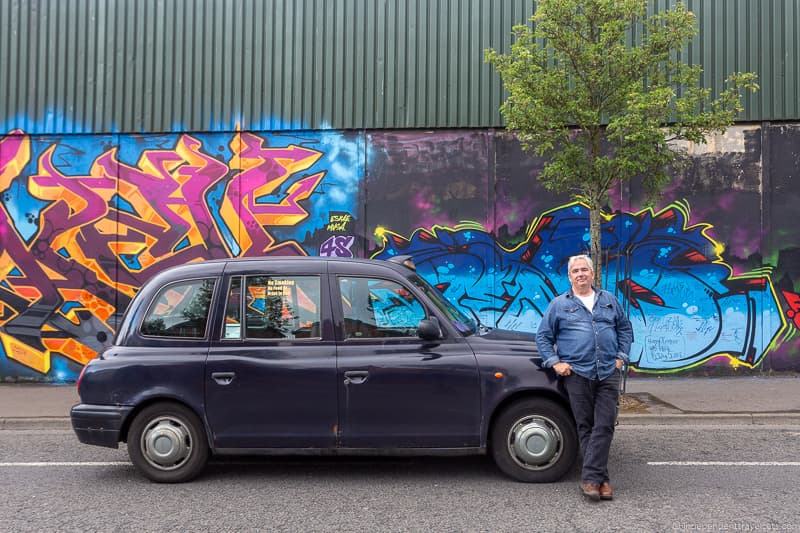
Victoria Square Shopping Centre
Victoria Square is a centrally located public square and the area is a popular place for shopping and dining. The Victoria Square Shopping Centre is a 4-storey shopping mall and leisure complex opened in 2008. It contains a number of stores, restaurants, a spa, and a cinema. There is also a viewing platform within the central glass dome that offers a good panoramic view of the city.
Outside on Victoria Square is the Jaffe Memorial Fountain that was erected in 1874 by Otto Jaffe as a memorial to his father Daniel Joseph Jaffe. Otto Jaffe was Belfast’s first Jewish Lord Mayor and his father had been a local linen merchant who had helped fund the building of Belfast’s first synagogue at Great Victoria Street.
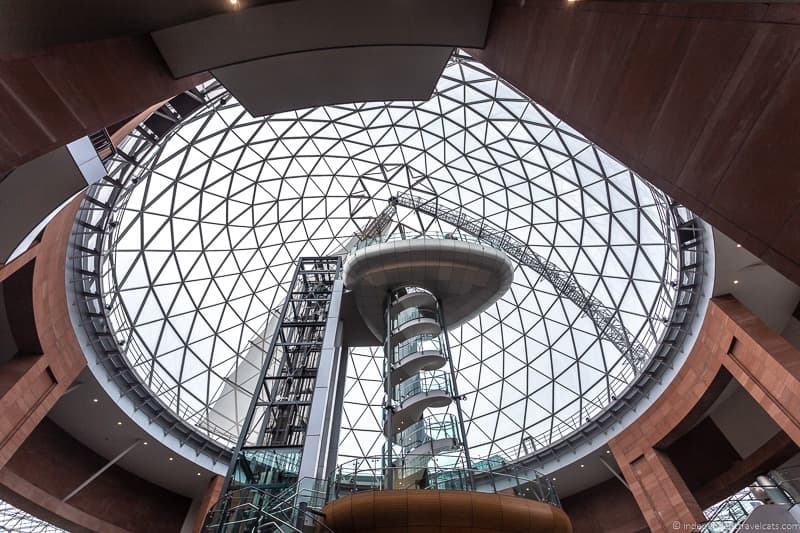
Explore the Waterfront Area
The waterfront area is located along the River Lagan. Here you’ll find a number of sculptures, bridges, Sinclair Seaman’s Church, the old Customs House, the Barge Museum, and Waterfront Hall (a large entertainment venue).
If you have some time to explore this area, we’d suggest walking the Maritime Mile, which is an outdoor trail that is about 1 mile long, connecting a number of maritime sites. There are information panels along the way. It starts at the City Quays and then continues along across the river to the Titanic Quarter, ending at the HMS Caroline and Titanic Dock . You can find out more about it here .
A pedestrian footbridge, built in 2015, crosses the River Lagan and connects the Waterfront area to the Titanic Quarter.
At the Belfast Harbour offices in Corporation Square, you can stop to visit the Heritage Room exhibition at the Belfast Harbour offices in Corporation Square. The exhibition focuses on Belfast’s maritime history and includes artifacts and artwork.
Outside the AC Hotel is the first of the six Games of Thrones large stained glass windows that were placed here in 2019 to celebrate 10 years of the show’s filming. Each depicts an iconic scene from the show. You can see all 6 by following the Maritime Mile trail along the waterfront.
If you just have a short time, two of our favorite things to stop and see here are the Salmon of Knowledge and the Beacon of Hope.
Salmon of Knowledge
The Salmon of Knowledge, better known as the Big Fish, is a large sculpture of a salmon along the waterfront. It was made by local artists John Kindness. It is located at the meeting point of Belfast’s two major rivers, the River Farset (from which Belfast gets its name) and the River Lagan.
The Salmon of Knowledge is a mythical creature figuring in the Fenian Cycle of Irish mythology. It is said that the Salmon of Knowledge gained all the world’s knowledge after it ate hazelnuts from a holy tree. If caught it could grant universal knowledge to whoever eats it. In one story, it is eaten by Fionn mac Cumhaill who gains universal wisdom.
The Big Fish sculpture is covered in printed ceramic tiles, and each one tells a different story related to the city’s history. Tiles include all types of information and images, from historical images to drawings from local school children.
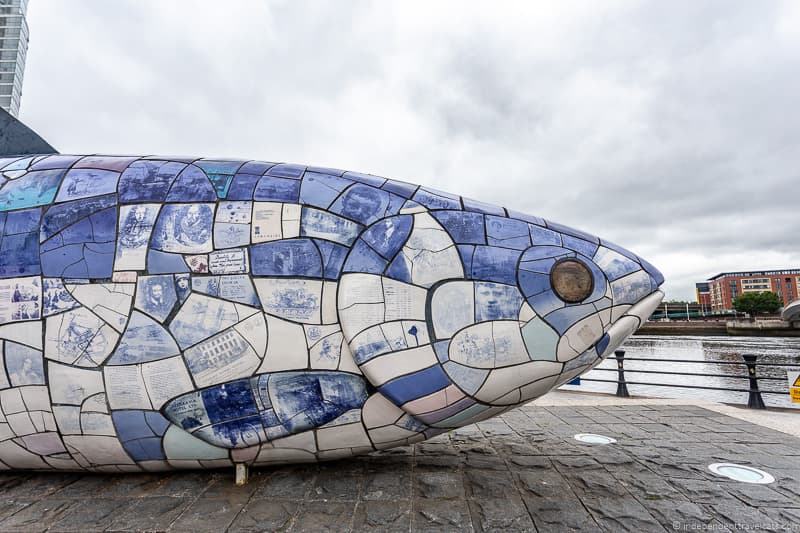
Beacon of Hope
The Beacon of Hope, or Thanksgiving Square Beacon, is a large stainless steel and bronze sculpture of a lady holding a large ring, which is meant to symbolize thanksgiving. The woman has a globe at her feet which celebrates peace and harmony, and which is marked with the global cities that have been significantly associated with the people and industries of Belfast.
It sits within Thanksgiving Square near the entrance to the Victorian era Queen’s Bridge. It was made by artist Andy Scott in 2006.
Belfast Barge Museum
The Belfast Barge Museum is a small museum set on a barge that tells the story of Belfast’s industrial heritage and maritime history.
The MV Confiance is a former cargo barge that was purchased in 2006 and sailed to Belfast, and turned into a museum, event space, and a café. It is moored in the River Lagan in Belfast’s waterfront area.
There is a small fee to visit the Belfast Barge Museum. You can find out more information here .
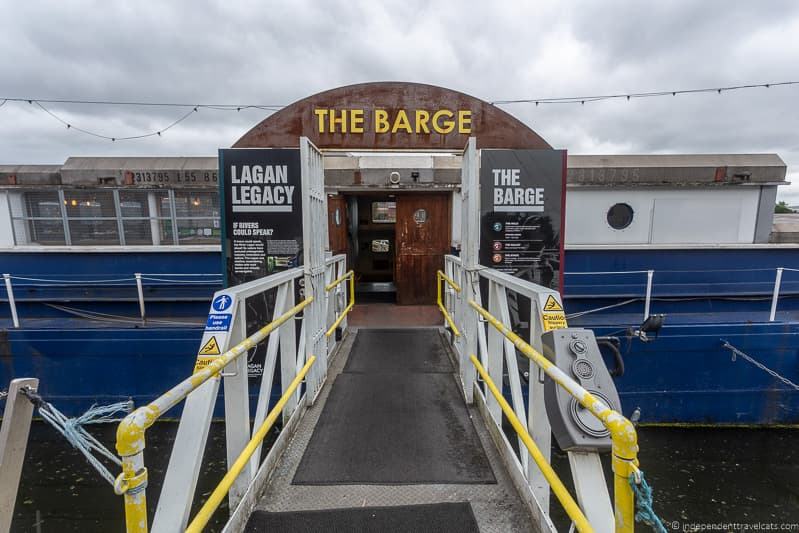
Titanic Belfast Museum
The Titanic Belfast is the most popular attraction in Belfast and a must-see for most visitors. It is a huge attraction where visitors are self-guided through a series of galleries to learn the history of the RMS Titanic .
Belfast was chosen as the site for the Titanic visitor attraction because the RMS Titanic was built in Belfast’s dockyards by local shipbuilding firm Harland & Wolff . Other famous ships built here include the RMS Olympic and HMS Belfast (currently docked as a museum ship in London). The shipyard continued to build ships until 2003 and today is focused on making offshore wind turbines.
When you visit the museum, you follow a self-guided path (audioguides are available to rent for a small fee) that begins with information about Belfast in the 20th century. Then you continue to follow a path that takes you through a series of galleries that tells you about shipbuilding in Belfast, the building of the RMS Titanic , the launch of the Titanic , its maiden voyage, its sinking, and the aftermath of the tragedy.
There are lots of informational panels, models, photographs, replica interiors of the Titanic , artifacts, and interactive exhibits to enhance the experience. One of the galleries is explored while on a mini-car ride. There are of course references to James Cameron’s famous 1997 film Titanic as well. The final room allows visitors to see video footage and photographs of the Titanic as she now lies at the bottom of the ocean.
If you have any interest in the RMS Titanic or shipbuilding, we highly recommend a visit here. Visitors often spend 1.5 to 2 hours exploring the museum, but leave more time if you are a huge Titanic fan and/or if you plan to eat here.
There is a large gift shop, a grab-and-go cafe, and a restaurant on site. There is also the Hickson’s Point pub located just outside the building.
The Belfast Titanic museum operates a timed ticketing system, with entrances every 15 minutes from opening time. At last check, pre-booked timed tickets were required due to the COVID-19 pandemic safety precautions.
Of all the things to do in Belfast, this is the most popular attraction so we recommend you get your ticket in advance here to avoid standing in and line, and coming early to avoid the crowds. Tickets bought online also include your entrance to the SS Nomadic , which is located next to the Titanic Museum.
If you are planning to visit here, we recommend checking out our Titanic sites in Belfast guide as it covers visiting the Titanic Belfast and several other attractions in and near Belfast.
We also recommend leaving some time to explore the area just outside of the Titanic Belfast building. You can see the Titanic and Olympic slipways and the Titanic sculpture by Rowan Gillespie, both are located next to the building. Also next door is the Titanic Hotel which occupies the former Harland & Wolff Headquarters and Drawing Offices where the designs for Titanic were completed.
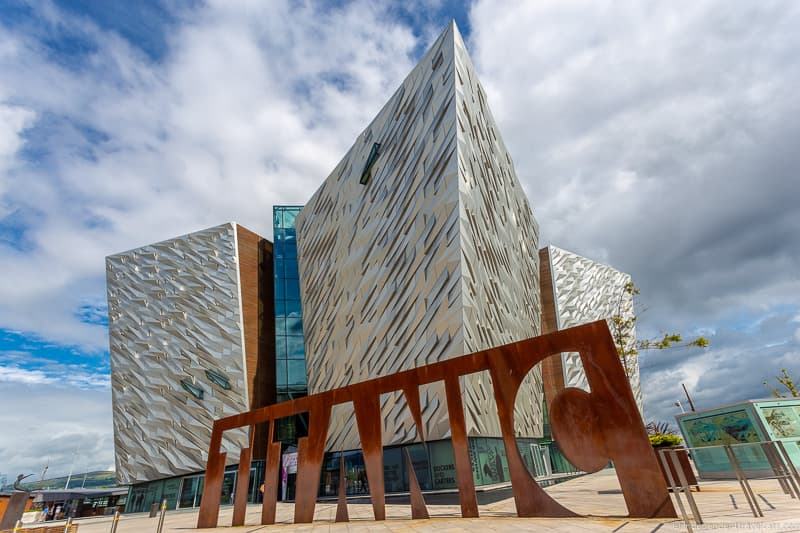
The SS Nomadic was built by Harland & Wolff in Belfast as a tender boat to serve White Star Line passenger ships such as the RMS Titanic and the RMS Olympic in places where the ships were too large to dock. The ship launched in April 1911, and the SS Nomadic is now the last surviving White Star Line ship in the world.
On April 10, 1912, the SS Nomadic was used to ferry first and second class passengers, their luggage, and ship supplies onto the RMS Titanic from Cherbourg Harbor in France. Many of the most famous passengers sailed on the SS Nomadic to reach the Titanic, included John Jacob Astor IV and his wife, Margaret Brown, and Benjamin Guggenheim.
The SS Nomadic was also used as a passenger ship tender for the RMS Olympic and later for Cunard ocean liners. During WWI and WW2, the ship was used as a minesweeper and troop transport ship. She was retired from service in 1968, and later was used as a floating restaurant ship on the Seine River in Paris for almost 30 years.
In 2006, the Northern Ireland government purchased the SS Nomadic and brought the ship back to Belfast to be restored and turned into a ship museum. Following extensive restoration, the SS Nomadic was opened to visitors in June 2013.
Today, you can tour the beautifully restored ship and learn all about its construction, uses, restoration, and history. The SS Nomadic was built by the same company at the same time as the Titanic so is the closest you can get to having a sense of what it was like on the grand ill-fated ship.
We’d recommend visiting this in conjunction with the Belfast Titanic museum, as you can purchase an entry ticket that will get you access to both the Titanic Belfast and SS Nomadic on the same day. The two attractions are only a short walk apart.
If you plan to only visit the SS Nomadic , you can normally also book a ticket online on their website or purchase one in person at the ship. However, these individual tickets have not been available since the start of the COVID-19 pandemic and it is unclear when and if they will be sold again. So for the time being you need to purchase a combination ticket if you want to visit.
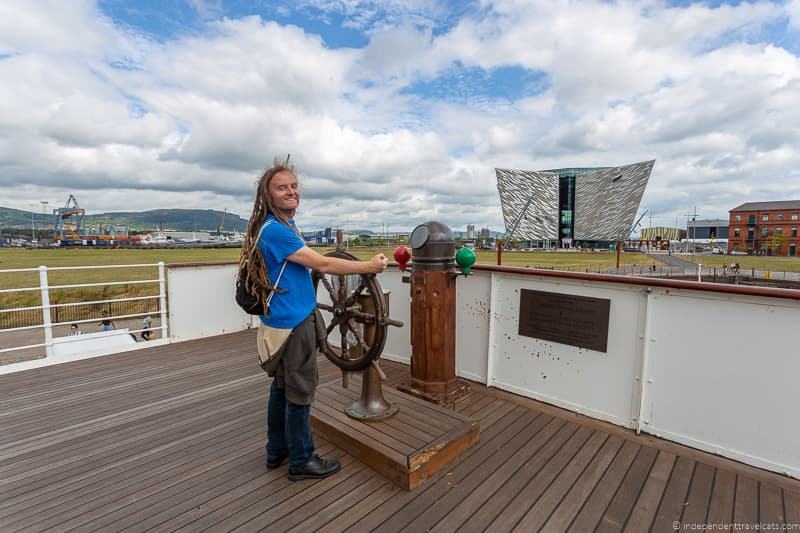
W5 Science & Discovery Centre
The W5 Science & Discovery Centre is an interactive science center that is designed to inform and entertain children and families. It contains over 250 interactive exhibits spread across four exhibition areas that are designed for children to be able to be active and engage in hands-on learning and discovery. There is also a daily program of live science demonstrations, talks, and shows.
There is a coffee shop on-site serving sandwiches, soup, snacks, coffee, and drinks.
There is a fee to enter the W5 Science and Discovery Centre. Tickets can be purchased on-site or online in advance.
The W5 is located within the larger Odyssey Pavillion within the Titanic Quarter. There is parking on-site, or you can get here via public bus or the hop-on hop-off sightseeing buses. The W5 is about a 25 minute walk from Belfast city center or a 10 minute walk away from the Titanic Belfast museum.
In addition to the W5, the Odyssey Pavillion is also home to the SSE Arena which is home to the Belfast Giants (ice hockey team), a multi-plex cinema, a bowling alley, a sports bar, a pizza place, a Segway company, and a coffee shop.

HMS Caroline
The HMS Caroline was a light cruiser built in Birkenhead, England in 1914 for the British Royal Navy. She served during WWI, including during the Battle of Jutland , which was the largest naval battle of the war, and is now the sole survivor from that battle.
In 1924, the HMS Caroline was moved to Belfast Docks to form the headquarters for the Ulster Division of the Royal Naval Volunteer Reserve. She would serve as a depot ship and strategic operations base for convoy protection during WWII.
The HMS Caroline would serve as part of the Ulster Division of the Royal Navy reserve until 2009 and was decommissioned in 2011. The ship was restored and opened as a ship museum in Belfast’s Titanic Quarter in 2016.
Today, you can do a self-guided tour of the HMS Caroline and learn about her construction, history, and the living and working conditions on board through exhibits, films, recreated historic spaces, and interactive touch screen displays. Start at the Dockside Museum (small museum next to the ship) to learn about the people who served on the ship and then board the ship. There are also nice views of the harbor from the decks of the ship.
There is a small café and a gift shop on the ship. You can purchase tickets on-site or in advance online. You can save a little money by booking your tickets in advance .
The HMS Caroline sits in the Alexandra Graving Dock right next to the Titanic Pump House. It is about a 15 minute walk away from the Titanic Belfast museum. There is parking located here for visitors, and you can also reach it via public bus or the hop-on hop-off sightseeing buses.
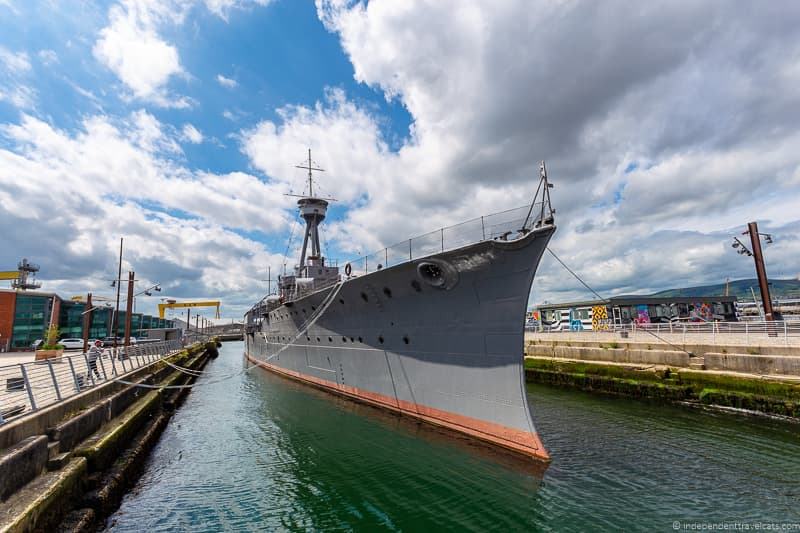
Samson & Goliath Cranes
Samson and Goliath are two large shipbuilding cranes owned by Harland and Wolff, and they are situated within the Titanic Quarter in the Harland & Wolff shipyard. They were built in 1969 and 1974 at a time when Harland & Wolff was still one of the largest shipbuilders in the world. They were named after the Biblical figures of the same name.
These were obviously not used in the construction of the Titanic. However, an enormous steel gantry, called the Arrol Gantry, was created in 1908 over the slipways for the Olympic and Titanic. It was also a dominant feature in the Belfast skyline for decades and was in use until the 1960’s.
You can’t get too close to the cranes as they are in an active and private industrial area, but they are easy to spot. The two yellow cranes with the H&W logo dominate the skyline and can be seen from many parts of the city.
Although Harland & Wolff are not much involved in shipbuilding and the two cranes are rarely used today, they have remained as they have become popular symbols of the city of Belfast. They are now sort of protected by the Northern Ireland Environment Agency, and it is hoped they will continue to remain in Belfast.
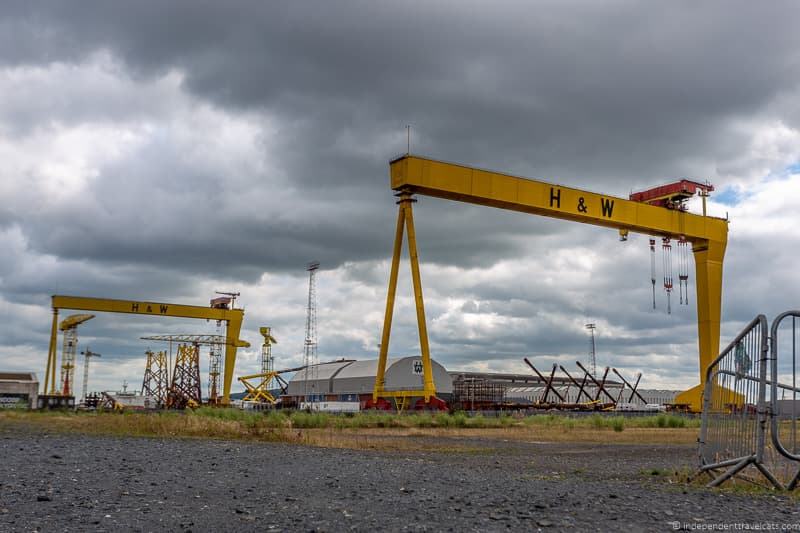
Titanic Walkway
The Titanic Walkway is a 500 meter (0.3 mile) walkway on Victoria Wharf which connects the Titanic Slipways to the HMS Caroline . The maritime walkway was first opened in 2018 as a way to make it easier for pedestrians to visit some of the popular attractions within the Titanic Quarter.
The walkway goes along the water and docks. Notable attractions along the route include the Titanic Belfast, Titanic and Olympic Slipways, Mew Light, public art (including a couple of the Games of Thrones windows), the HMS Caroline , and the Titanic Dock and Pump House.
From the walkway, you can also see the Titanic Exhibition Center (giant conference center) and Titanic Studios (filming studios where Games of Thornes was filmed). You’ll also see the Samson & Goliath cranes in the distance.
The Mew Light, or the Great Light, is the world’s first and largest hyper-radial Fresnes lighthouse lens. It was first used at Tory Island Lighthouse in 1887 and later moved to Mew Island in 1928. It was removed from Mew Island in 2014, and has been restored and situated along the Titanic Walkway. Panels around the light tells about its history and how it works.
The Titanic Walkway is a great way to connect a visit to the Belfast Titanic to either the HMS Caroline and/or the Titanic Pump Room & Dock. To start the walk, just head outside the Titanic Belfast museum and head towards the water to visit the Olympic and Titanic Slipways, then head northeast along the walkway towards the HMS Caroline .
If you want a different perspective of the Titanic Quarter, consider a River Lagan boat cruise which allows you to see all the Titanic Quarter sites from the water with onboard commentary. In the summer, there is also the chance to see seals.
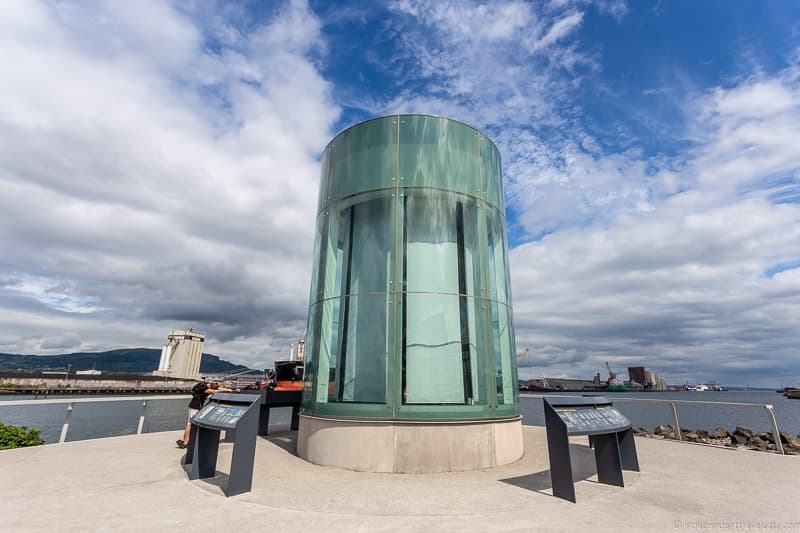
Titanic Dock & Pump House
The Titanic Dock and Pump House is a great place to visit to get a better sense of the large scale of the RMS Titanic. This was where the Titanic sat in dry dock before her sea trials and maiden voyage in April 1912.
The White Star liners RMS Olympic and RMS Titanic were the largest ocean liners ever built at the time, and so larger dry docks had to be built for them. This is where the ships were fitted out and completed in dry dock after being constructed at the slipways across from the Titanic Belfast museum.
Construction on the Titanic began in 1909 and took 3 years. The Thompson Graving Dock, often now called the Titanic Dock, was where the Titanic was fitted out and completed in 1912. The adjacent dock pump house, now called the Titanic Pump House, was used to pump out water from the Thompson Graving Dock as well as the Alexandra Graving Dock (where the HMS Caroline now sits).
Visitors can do a self-guided tour of the Titanic Pump House as well as the Titanic Dock. Walking around and climbing down into the Thompson Graving Dock gives you a good sense of the massive size of these ocean liners as the whole footprint of the graving dock would have been the size of the ship’s hull. Informational placards tell you about its construction, fitting out, the lives of the dock workers, and how the pump room worked.
There is a small fee to visit the Titanic Pump Room & Titanic Dock, payable in Cafe 1404 which is also where you can access the sites. If you’d rather have a guided experience, you can book a guided tour of the dock and pump room or join a walking tour which includes the visit here.
The Titanic Pump House and Dock is located about a 1 minute walk from the HMS Caroline and a 10 minute walk from the Titanic Museum.

Check out the Street Murals
The street murals in Belfast are well-known worldwide and it is a popular city for street art enthusiasts. Even if you are not interested in street art, you are bound to run into some of the city’s street murals as they are everywhere.
Initially, most of the street murals were political and related to The Troubles in Northern Ireland, and were created by people with a variety of perspectives from both sides. Most of the more politically focused murals are further from the city center with many located around the Peace Wall.
There are still a large number of political street murals that you can see and these are the primary focus of many Black Cab and street art tours in Belfast. Some serve as memorials to people who were killed or incarcerated during the Troubles. We saw a number of these murals on our Black Cab tour, which a great way to explore them as they are spread apart.
Within the city center, there is still a lot of street art to see but the majority is not strongly political or religious in nature. Although some do tackle serious topics, you’ll also find street murals of dogs, famous people, fairies, local landmarks, dragons, and monkeys. Some are created by relatively unknown local artists and some are by more famous artists like Smug, and there have been local initiatives that have helped fund legal street art in Belfast.
We did a street art walking tour that primarily focused on the non-political murals with Seedhead Arts . But there are a variety of street mural tours in Belfast including walking tours such as this one and Black cab tours such as this one .
See our guide to street art in Belfast for more information about finding and appreciating Belfast’s and a photo essay of some of the popular murals.
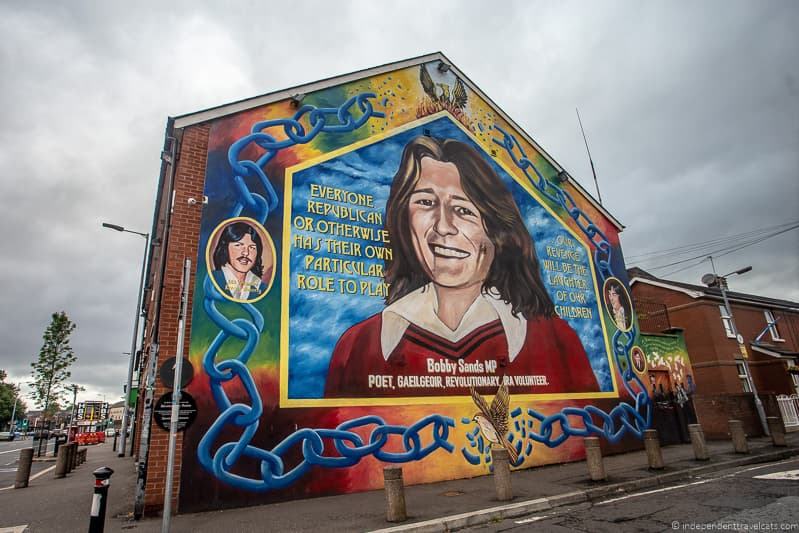
Check out some Evening Entertainment
There is always something going on in Belfast and whether you are looking for a play, stand up comedy act, art exhibit, or just a local band at a pub, you’ll likely find something happening in Belfast. You can find out what’s happening by asking around, visiting the Visitor Center, checking a local newspaper, and/or checking out this page and this website .
We already mentioned the Grand Opera House earlier, but two of Belfast’s others main centrally-located concert and entertainment spaces are the Ulster Hall and Waterfront Hall. If you are looking for a concert, play, comedy show, or festival, I’d check out what’s happening at each of these venues during your visit.
Opened in 1862, Ulster Hall was by designed by William J. Barre. A wide variety of notable performances and events have been held here from readings by Charles Dickens to rock concerts by AC/DC and Iron Maiden to political talks by Lord Randolph Churchill and Lord Carson. Ulster Hall underwent a larger restoration in 2007, and it houses one of the few surviving functioning classic English pipe organs.
Belfast Waterfront is a multi-purpose entertainment and conference center located on the waterfront. It opened in 1997 and is used for a number of purposes, including concerts, theatre shows, stand-up comedy, business conferences, and other events. It is a key venue for Belfast International Arts Festival events.
You can see what’s on during your visit at both Waterfront Hall and Ulster Hall here .

Try the Local Drinks in Belfast
Belfast is a great place to have a drink. The city is probably best known for beer and whiskey, but gin is currently a very popular spirit in the city as well. Craft breweries and new distilleries are opening up around Northern Ireland and it is an exciting time to sample some of these new arrivals.
If you are looking for craft beers on tap, a few brewery names to look out for are Hilden, Sheelin, Hercules Brewing (known for their Yardsman beers), Whitewater, and Farmageddon. Northern Irish gins include Shortcross, Jawbox, and Copeland.
The most popular Northern Irish whiskey brand is Bushmills, but Echlinville and Rademon Estate also produce whiskey. Head to The Friend at Hand whiskey shop in the Cathedral Quarter to learn more about Irish whiskey and purchase a bottle, the store says it has the largest collection of Irish whiskey.
We actually did a really fun gin tour around central Belfast with a company called Taste and Tour that included 7 generous drinks and some nibbles in several locations. Gins included famous international brands as well as local ones. The company also does whiskey walks, beer crawls, and food tours around Belfast.
If you are looking for a few suggestions for a place to drink, here are several places we’ve been:
- The Crown Bar – An elaborately decorated Victorian era gin palace that is a local landmark and popular tourist stop. Full bar and restaurant. Reservations recommended if you want to sit and eat.
- Muriel’s Cafe Bar – Muriel’s is the place all the locals tell you to go if you want a cocktail. But you can get everything at the small quirky bar from a traditional pint to a range of craft gins. Also serves food.
- John Hewitt Bar – A traditional style bar with live music and full range of drinks. Owned and operated by the Belfast Unemployed Resource Centre.
- The Duke of York – This traditional pub has been a staple of the Cathedral Quarter for over 200 years. It was rebuilt after being flattened by a bomb in 1972 during the Troubles. The pub is a local institution and is popular with tourists. It has interesting furniture and decorations and is filled with local memorabilia related to brewing and distilling. It also has colorful outdoor murals.
- Sweet Afton Bar & Brewery – A bar and restaurant in the Linen Quarter serving classic favorites and local craft beers. They also serve a few American craft beers.
- Sunflower Public House – If you are looking for a simple pub, the Sunflower Public House may be your spot. The corner pub is probably best known for keeping its security cage around its front door which became a common occurrence during The Troubles. Good place for a pint and often has live music.
- Babel Bar: If you’re looking for a rooftop bar, the Babel Bar in the Bullitt Hotel is a great choice. One of the few rooftop bars in Belfast. Also a second bar located in the hotel courtyard. Full range of drinks and cocktails.
- The Cocktail Bar – If you are looking for a classy bar and don’t mind the higher price of drinks, The Cocktail Bar at The Merchant Hotel is likely the place for you. This Victorian era luxury hotel is a beautiful setting for a drink. Hotel also has a jazz bar, a classic pub, a champagne lounge, and other dining spots.
- Whites Tavern : If you like old historical taverns, Whites Tavern may be the place for you. This tavern has been serving drinks since 1630. Serves hearty pub food and regularly has live music.
- Bittles Bar. Found near Victoria Square, this curiously shaped pub is not dissimilar to the Flat Iron building in New York. Built in 1868 and has been service great beer ever since.
If you are looking to experience a local brewery, we’d recommend a trip just outside Belfast to Lisburn (10 miles away) where you can visit Hilden Brewery , Ireland’s oldest independent brewery. Hilden is a well-known craft brewery and you can sample the beers, take a tour of the distillery, and eat in their restaurant.
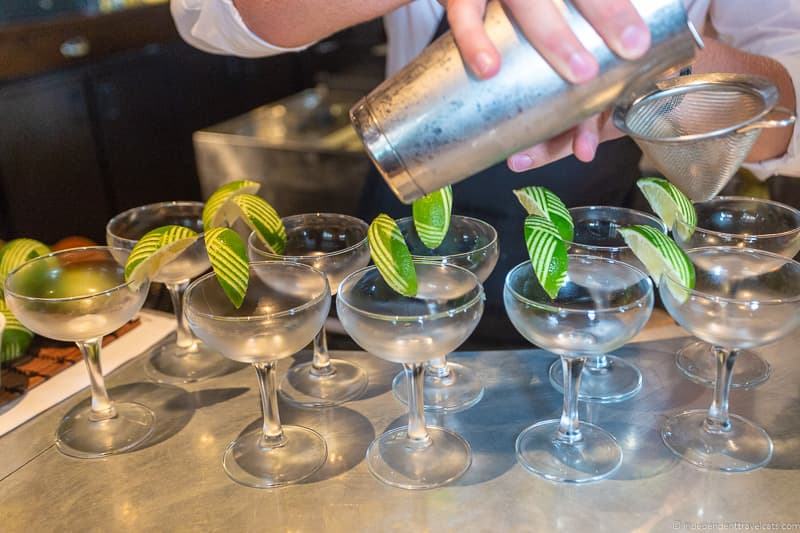
Sample the Irish Food
The dish most associated with Northern Ireland is Ulster fry. An Ulster fry is the Northern Irish version of the British “full breakfast” that you’ll find throughout the UK and Ireland. It normally includes fried eggs, sausage, back bacon, soda farl, tomato, black pudding, and potato bread. White pudding, hashbrowns, fried mushrooms, and baked beans are also normal accompaniments. Served with tea or coffee and eaten in the morning for breakfast.
You’ll find many of the dishes common throughout Ireland and the UK in Northern Ireland so dishes like Irish stew, bangers and mash, Sunday roasts, and fish and chips are common. Potatoes have long been important to Ireland so you’ll find potato dishes like colcannon (mashed potatoes with cabbage or kale), potato bread, boxty (potato pancake), and champ (mashed potatoes with spring onion, cheese, and butter). Seafood dishes are common particularly fried eel and salmon.
Agriculture is a major industry in Northern Ireland and you can find a lot of locally grown, raised, and produced food products. These are easy to find at St. George’s Market as well as in local grocery stores and on the menus of local restaurants in Belfast. Some to look out for are dairy products (Abernethy butter, milk, cheese, ice cream), local seafood (salmon, eels, oysters), breads (soda bread and potato bread in particular), Bramley apples (as well as apple juice, jam, and cider), and locally raised meats (beef, pork, venison).
If you have a sweet tooth, a popular Northern Irish candy is Yellowman which is a chewy honeycomb toffee-like candy. Aunt Sandra’s Candy Factory is a popular local spot to buy handmade candies, chocolates, and fudge.

Things to do in Belfast: Beyond Central Belfast
If you have more than a day or two in Belfast, you may have time to explore beyond central Belfast and the Titanic Quarter. Your choices of things to do in Belfast beyond the central area are varied and include museums, gardens, parks, a zoo, political sites, and a Victorian prison.
We particularly recommend the Queen’s Quarter area which includes Queen’s University, the Ulster Museum, and the Botanic Gardens. The Crumlin Road Gaol will appeal to those who enjoy touring old prisons. The Cave Hill Country Park includes hiking trails, the Belfast Zoo, Belfast Castle, and a children’s playground. The Peace Wall is a popular stop for seeing the political murals, usually during a Black Cab tour. There are also plenty of green places around Belfast for hiking, walks, and even wildlife viewing.
Most of these attractions are located within the city of Belfast but some lie in areas just outside Belfast. Most can be reached by public bus within 30 to 40 minutes, and some can be visited using the hop-on hop-off sightseeing buses. All are located within a 30 minute drive fo the city center, and some are less than a 10 minute drive from the city center.
The first physical divides or peace lines were built in 1969 after the outbreak of riots in Northern Ireland and the beginning of the Troubles. The walls, fences, and other barriers were used to divide predominately Ulster/Protestant/Unionist areas of a neighborhood from predominately Loyalist/Catholic/Nationalist areas of a neighborhood.
The initial walls were meant to be temporary measures to help protect people on both sides, but they became bigger, longer, and more sturdy over time. Today there are over 40 wall structures, called peace lines or peace walls, stretching for miles in Belfast. These are primarily in the residential areas in the northwest areas of Belfast. They also exist in a few other towns and cities in Northern Ireland such as Londonderry/Derry.
Interestingly, the number of Peace Walls has not decreased since the Good Friday Agreement in 1998, but have actually increased. Some of the walls have gates which allow access during daylight hours but these gates are closed after dark. They are sometimes policed, but not so much these days. Sectarian violence has significantly decreased, but many residents still find the walls comforting and many people in these neighborhoods have grown up with the walls.
In recent years, the walls and political murals painted along or near the walls have become tourist attractions. Most black cab tours stop here as ours did. Visitors have the opportunity to write their own message on the Peace Wall, which has been covered in murals, as well as signed by famous people including the Dalai Lama and former U.S. President Bill Clinton.
There is a large movement to remove the Peace Walls in the near future, and the government hopes the walls will be removed by 2023 in cooperation with people on both sides of the wall.
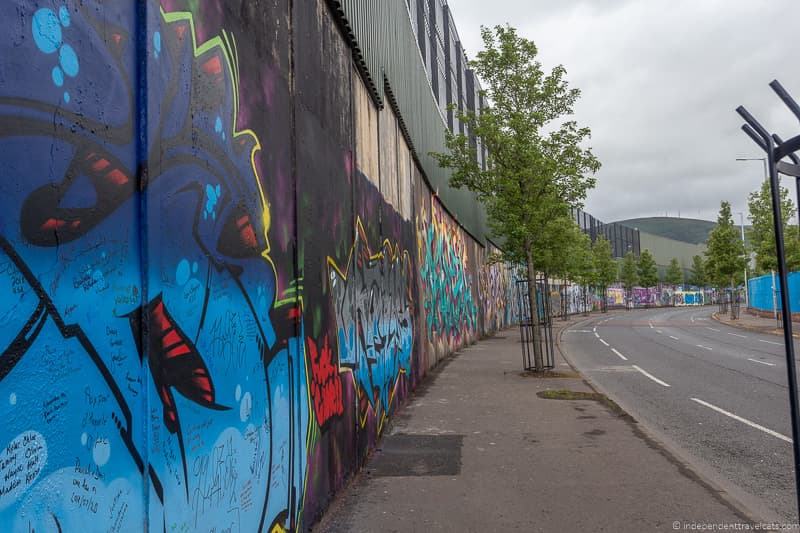
Crumlin Road Goal
The HMP Crumlin, better known as the Crumlin Road Gaol , is a former prison that opened in Belfast in 1846. For over 150 years, it was one of Northern Ireland’s main prisons, and is today the only surviving Victorian era prison in Northern Ireland.
At the time the prison was built, it was one of the most up-to-date prisons of its time and was designed to house up to 500 prisoners. However, in later years, during the Troubles, there were so many people sent to prison that it was forced to hold many more than this, resulting in cramped conditions. The Crumlin Road Gaol closed in 1996 as a prison, and following an extensive restoration project, was opened as a visitor attraction in 2012.
Visits are timed and guided. Guides lead you through the major parts of the prison and explain the entry process for new inmates. The tour includes a visit to the cell blocks, the tunnel which linked the prison with the courthouse over the road, and the execution chamber. Seventeen prisoners were executed on site by hanging, with the last execution taking place in 1961.
The knowledgeable guides on the tour share lots of information about the history of the prison, its architecture, and notable inmates. The regular tours lasts about 75 to 90 minutes. There are also sometimes specialty tours offered such as paranormal tours and night tours of the prison.
There is a fee to tour the prison, and tour times can be booked in advance online or on site. It’s definitely worth booking your tour in advance, as this is both cheaper and will also guarantee the time you want. Tours run about every 30 minutes.
There is a gift shop and an on-site coffee shop where you can get sandwiches and drinks.
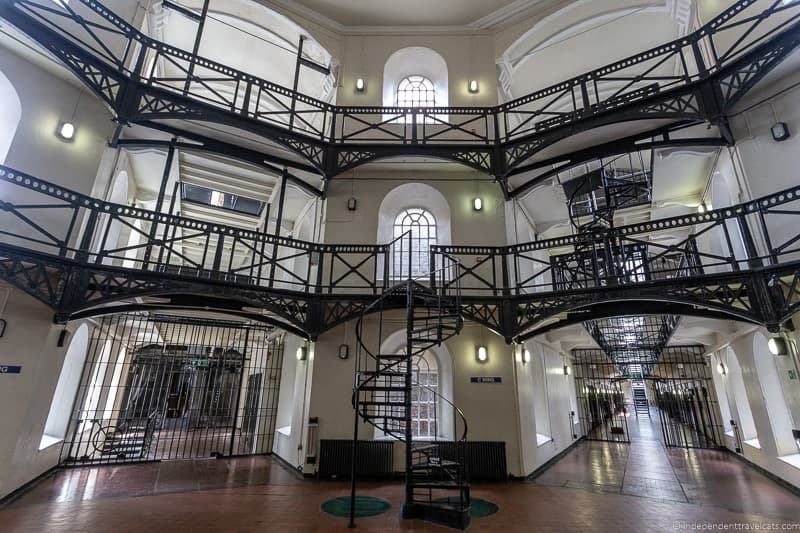
Stormont Estate – Northern Ireland Parliament
The Northern Ireland Parliament buildings are located on the Stormont Estate. The Northern Ireland Assembly, the legislative body for Northern Ireland, was established under the Belfast Agreement 1998 (Good Friday Agreement). Before being used for government purposes, the estate belong to Reverend John Cleland.
The main Northern Ireland Assembly building was designed by Sir Arnold Thornely and is 365 feet wide (one for each day of the year) with six floors and six front pillars (one for each NI county). It was completed in 1932.
The public can visit the Parliament buildings during most of the year, Monday to Friday. Tours are free and last about 1 hour. The tours include stops to learn about the history and architecture of the buildings and to see the Great Hall, the Senate Chamber, and the Assembly Chamber. The public can also sit in on Assembly debates and committee meetings. See latest tour times here .
Outside, you can admire the building and wander along some of the walking nature paths around the parkland. There are several statues and memorials, and there is also a picnic area, fitness area, and children’s play area.
There is a coffee shop and gift shop within the main building. The Members’ Dining Rooms are also open to the public for meals and afternoon tea, reservations are recommended.
The Stormont Estate has parking and can also be visited by public bus or by using the hop-on hop-off sightseeing bus. There is no fee for visiting the Stormont Estate or Parliament Buildings; however, you will need to go through a security check at the gate and airport-style security to gain entrance to the building.
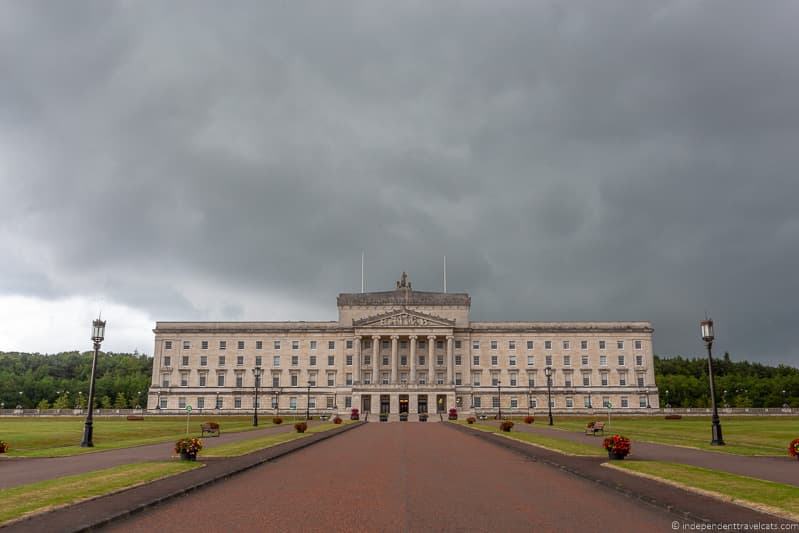
C.S. Lewis Square
The C.S. Lewis Square is a square located in East Belfast dedicated to the Belfast author Clive Staples Lewis . C.S. Lewis is most famous for his children’s fantasy book series The Chronicles of Narnia series as well as his Christian apologetic adult nonfiction books such as Mere Christianity .
The square contains a number of large bronze sculptures depicting characters from The Lion, the Witch, and the Wardrobe including Aslan, The Beavers, and The White Witch. The sculptures were made by Northern Irish artist Maurice Harron and are situated in a place not too far from Lewis’s birthplace. This is a fun place to bring any fan of the Narnia series!
Fans of C.S. Lewis may also want to see other sites related to Lewis in the area, including this birthplace on Dundela Avenue (Blue Plaque marks spot), Little Lea (family home on Circular drive), St Mark’s Church (where he was baptized and grandfather was rector), Holywood Arches Library (“The Searcher” statue), Belmont Tower, and Campbell College. You can follow a self-guided trail or book a local tour guide.
Next to C. S. Lewis Square is the EastSide Visitor Centre which is a great place to stop to learn more about the city’s attractions and things to do in East Belfast, including self-guided walking trails and walking tours. The local Greenways (walking and cycling routes on disused railway lines) also run right past here. The Centre also has a coffee bar called JACK Coffee Bar which features locally sourced food, products, and artwork.
The square is can be reached by public bus about 20 minute from center. There is parking available nearby.
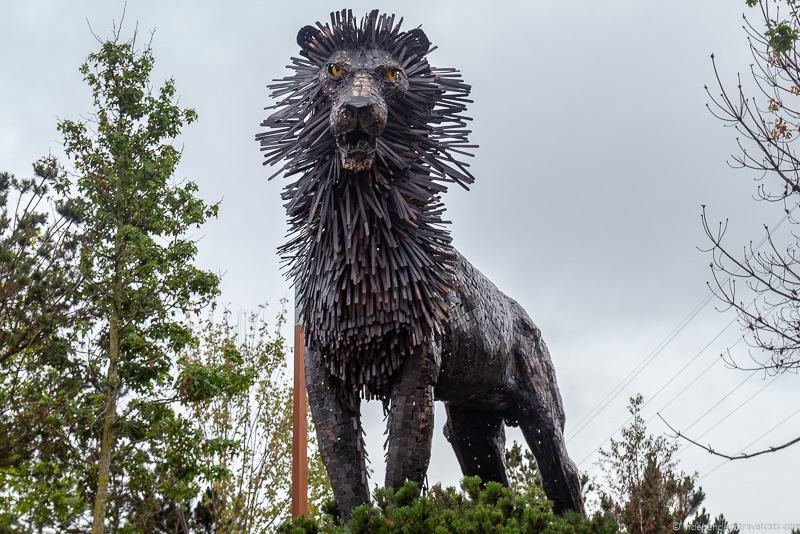
Queen’s University
Queen’s University was chartered in 1845 and opened in Belfast in 1849. It was built to encourage university education for Catholics and Presbyterians at the time as Trinity College in Dublin was at that time an Anglican university.
There are some beautiful buildings in terms of architecture on the Queen’s University campus, particularly the Lanyon building designed by English architect Charles Lanyon. You can check out the Naughton Gallery , an art gallery with both permanent and temporary exhibitions, which offers free public admission. You might also want to see what’s playing at the Queen’s Film Theatre , a popular independent cinema.
Queen’s University is situated next to the Botanic Gardens in Queen’s Quarter, which is a lovely area of Belfast. It is a university student area with lots of coffee shops, independent retail stores, small entertainment venues, and the excellent Ulster Museum. A great place to wander around and explore.
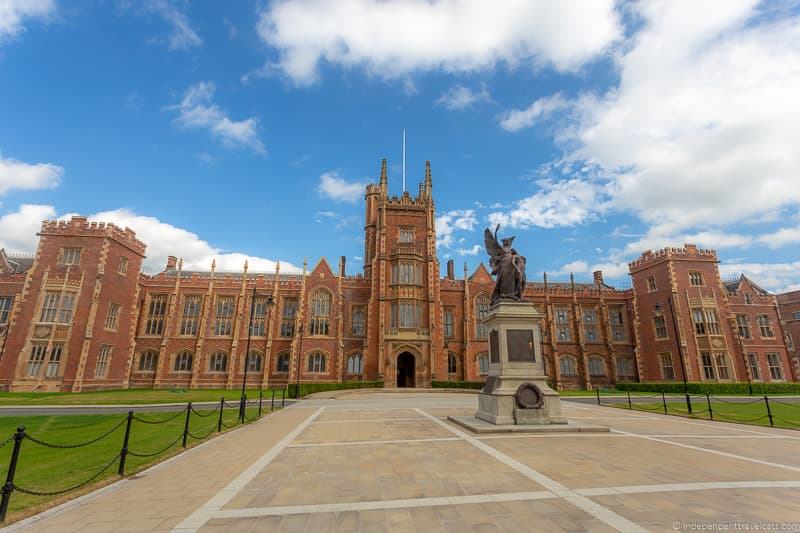
Botanic Gardens
The Botanic Gardens are located in south Belfast within the Queen’s Quarter near Queen’s University. The gardens were originally started as a private park in 1828 but became a public park in 1895. The gardens were one of the most popular Belfast attractions in the Victorian era, and structures in the garden have recently undergone major renovations.
Two of the main features of the gardens are the Palm House conservatory and the Tropical Ravine House. The Pam House is a curvilinear cast iron Victorian glasshouse designed by Charles Lanyon and built by Richard Turner, and display a range of tropical plants. The Tropical Ravine features a sunken ravine and includes a number of the oldest seed plants around today, as well as banana, cinnamon, bromeliad, and orchid plants. There is also a rose garden.
The Botanic Gardens is an important venue for concerts, festivals, and other local events, The Ulster Museum which sits near the main entrance to the gardens. The gardens are a popular place for students of next door Queen’s University to take walks and study.
The Botanic Gardens are open to the public during daylight hours and free to visit. The Palm House and Tropical Ravine have more limited hours.

Ulster Museum
The Ulster Museum is Belfast’s largest museum and one we highly recommend taking the time to visit. The museum has over 1 million objects in its collection which include items related to art, history, and natural science. The museum is located near the main entrance to the Botanic Gardens.
We really enjoyed our time in this museum as there is a bit of everything so just about everyone can find a section of the museum to enjoy. There were dinosaur bones, Neolithic stone axes, jewels, fine art, meteorites, and history exhibits detailing ancient and recent history including the partition of Ireland and the Troubles. If you want relative objectivity in relation to Belfast history, this is probably the best place to find it.
The museum has a number of permanent exhibitions, but also has changing temporary exhibitions. When we visited one of the exhibitions was a massive Game of Thrones Irish linen tapestry that tells the full story of the TV series and sewed locally. The GoT linen is not currently on display but you can see it and learn more about it here .
The museum has an on-site coffee shop which serves hot food and drinks. There is also a cloakroom with lockers that can be rented for £1.
The museum is free to visit, although donations are greatly appreciated.
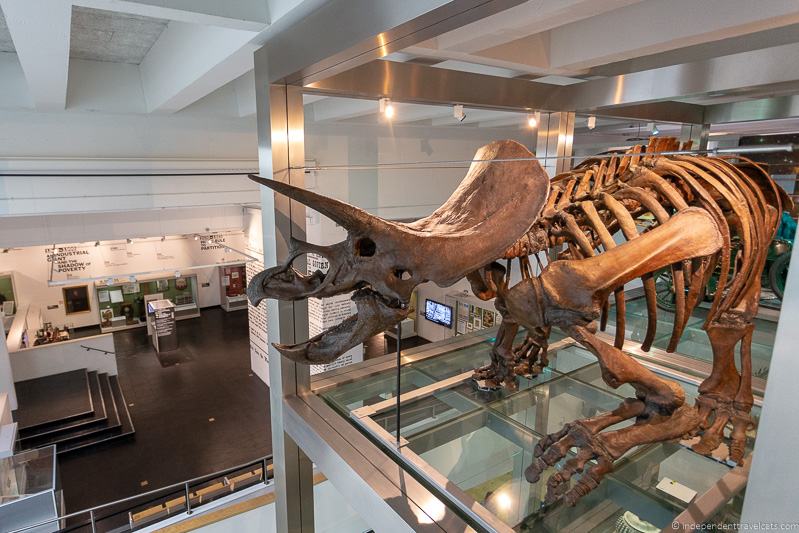
Museum of Orange Heritage
The Museum of Orange Heritage is a museum and interpretive center that covers the history, culture, and traditions of the Orange Order, also known as the Loyal Orange Association. If you want to learn more about the Orange Order, this is a good place to do it. However, it is a good idea to be aware of the religious, cultural, and political significance of the order before you choose to visit.
If you are not familiar with the Orange Order , they are a Protestant fraternal organization that is strongly associated with the Ulster loyalists and British unionism. The main stated goal of the order is to protect and promote Protestantism, although opponents have criticized the group for being anti-Catholic. The group is probably best known for their marches and parades, known as Orange walks, particularly those that take place on July 12th. Some of these walks have been controversial.
Their history dates back to 1795 and it is from King William III, the Prince of Orange, that the organization gets its name. King William III was a Protestant king who defeated the Catholic king James II in the Williamite-Jacobite War in Ireland in the 17th century. The first Orange Order societies formed to commemorate King William III’s victory at the Battle of the Boyne in July 1690.
The museum includes informational and interactive exhibits, and includes artifacts including items owned by King William II. Obviously, the information is going to have a pro-Loyalist bias given its being presented by the society. A good counterpoint if you are planning to visit is the Eileen Hickey Irish Republican History Museum.
The center also has a research and genealogy facility for those wanting to research their family history within the Orange Order.
The museum is located at Schomerg House in the Castlereagh area of Belfast and is generally open Monday through Saturday. It is a 15 to 20 minute bus ride from the town center.
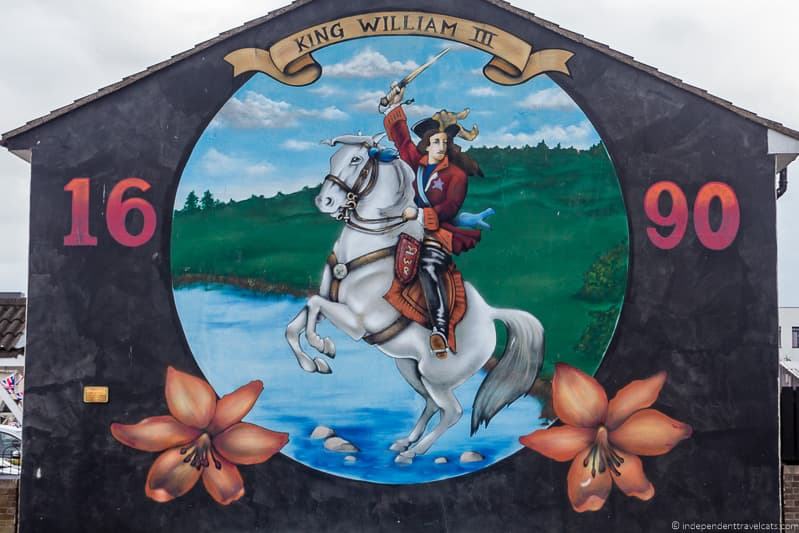
Eileen Hickey Irish Republican History Museum
The Eileen Hickey Irish Republican History Museum is a small museum in West Belfast dedicated to the history of the Republicans in Ireland since the 1960’s. It is situated in the Conways Mill Complex and the mill dates back to 1842. The museum focuses a lot on internment and imprisonment experiences during the Troubles.
The museum is named after Eileen Hickey, a woman who herself was imprisoned in Armagh in the 1970s, and a large portion of the artifacts were collected by her. The museum includes informational exhibits and a number of objects related to the Troubles, particularly related to internment during that time.
The Eileen Hickey Irish Republican History Museum obviously has a Republican (Nationalist / Catholic) bias and focuses on the more positive aspects of the Republican side. But it does have some inclusive information and objects as well. So just know this when you visit and it can be a good counterpoint to a visit to the Museum of Orange Heritage.
The museum is free to visit although donations are greatly appreciated. Some black cab tours stop here.
There are several parking spaces here for drivers. You can also get here by public bus but there is no bus stop super close by (10 to 15 minute walk away). I would recommend stopping here as part of a Black Cab tour or Troubles related tour as it is not far from the Peace Wall.
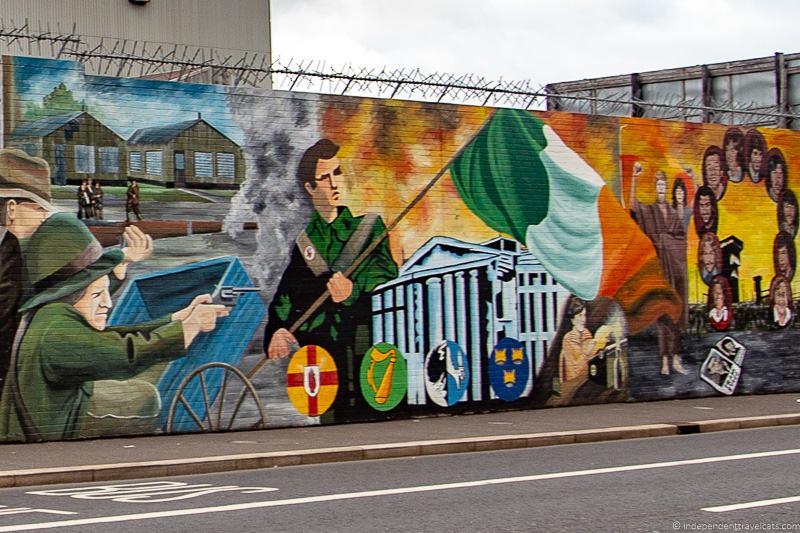
RSPB Window on Wildlife (Belfast Lough Reserve)
The Belfast Lough Reserve is an area of grassland, lagoon, and mudflats that is considered a special place for local wildlife. It is protected and maintained by the Royal Society for the Protection of Birds (RSPB), a bird charity in the UK. There are four components of the reserve: Belfast’s Window on Wildlife, Harbour Meadows, Holywood Banks and Whitehouse Lagoon.
The area provides a place for local birds and wildlife as well as migrating bird species. Over 100 bird species have been observed here and species that are regularly seen include wigeons, teals, oystercatchers, Arctic terns, curlews, and godwits. There are also konik ponies and small mammals who live here.
The public can best learn about the species and have a chance to observe them by visiting the RSPB Window on Wildlife . It is a small center run by staff and volunteers that provides information on local and migrating species and an area with a large window where you can view species in the lagoon and mudflats surrounding the center. There are also a couple of hides and the staff sometimes offers guided walks during certain times of the year.
At the center, you can borrow binoculars to see more from the window and staff can help point out different birds. When we visited we saw several bird species as well as rabbits. The staff member we talked to was very friendly and this place seems a world away from downtown Belfast!
There is a small charge to visit the center and use the shelters. It is free for RSPB members.
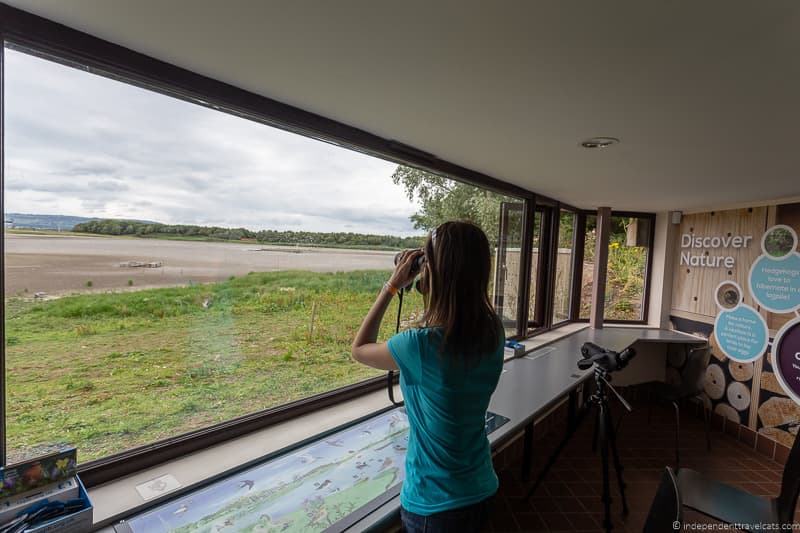
Cave Hill Country Park
Cave Hill, also written as Cavehill, is a large hill formed by basalt lava flows that overlooks Belfast. It has long been a popular spot for local and tourists, and some believe that the hill with its “Napoleon’s Nose” rock formation was the inspiration for the giant in Jonathan Swift’s famous book Gulliver’s Travels .
Cave Hill Country Park is known for its caves, rock formations, ring fort remains, walking and hiking paths, and for being the site of the Belfast Zoo, Belfast Castle, and a large playground. It is a great place if you want to get out of Belfast, do some hiking, and get some nice views over the city (you can see all the way to Scotland on clear days). Given the attractions located here, it is easy to make a whole day of it out here.
The hiking trails are well-signed and range from relatively short and easy to longer and more strenuous. The trails take you near many of the landmarks in the park, including Belfast Castle, Napoleon’s nose, caves, McArt’s fort, Devil’s Punchbowl, and Volunteer’s Well stream, and interpretive signs help point out features, geology, and history.
Cave Hill Country Park is about a 5 mile (8 km) drive out of central Belfast. You can also get here via public bus from Belfast.
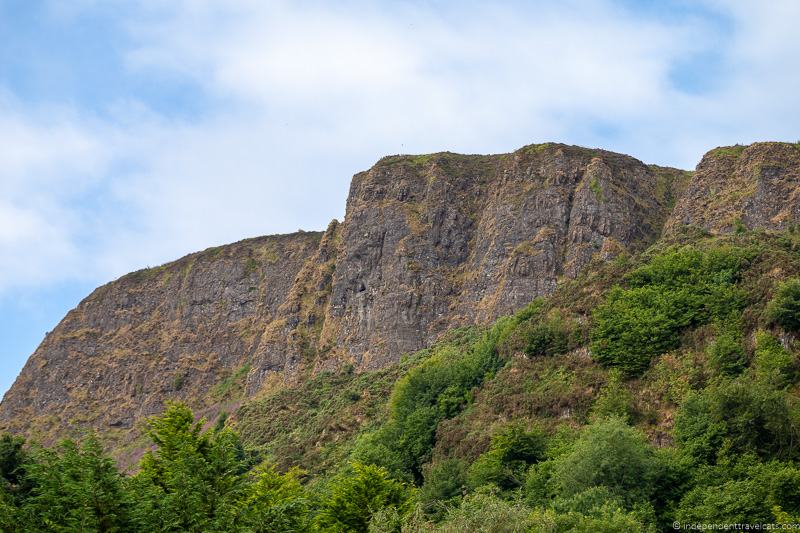
Belfast Zoo
The Belfast Zoo is located on the outskirts of Belfast on the slopes of Cavehill, encompassing 55 acres and has over 1,000 animals from over 100 different species. The zoo offers daily zookeeper talks, feeding times, and other activities.
The zoo opened in 1934 and is one of the most popular paid attractions in Belfast. It suffered a lot during the Belfast Blitz and the 2018 family-friendly film Zoo focuses on the true story of the “elephant angel” who cared for a baby elephant during WWII.
In addition to the animals, the zoo also recently opened a new children’s playground called the Adventurers’ Learning Centre. The zoo is also home to the 1930’s Art Deco Floral Hall, once a popular dance and music venue. The Floral hall was shut and became derelict during the Troubles, but there are plans to refurbish and reopen it as an event space in the future.
The zoo has two cafes on site which serve hot food and drinks as well as a picnic area. There is also a large visitor center and a gift shop.
Most of the zoo and its facilities are wheelchair accessible; however, the zoo is situated on the side of Cavehill so many parts are uphill and some of the paths are steep. There are wheelchairs for free rental and a zoo-mobile vehicle, which can be reserved in advance with the zoo.
The zoo can be reached by public bus from central Belfast, and the zoo offers free parking for visitors. You can purchase tickets on-site or in advance.

Belfast Castle
Belfast Castle was commissioned in the 19th century by George Hamilton Chichester, the 3rd Marquess of Donegall and was designed by Charles Lanyon and his son. If you’ve been to Scotland, the castle may look familiar as it was built in Scottish baronial style. There was an original Belfast Castle built in the 12th century by Normans and it sat not far from where the Belfast City Hall stands today.
Only a small portion of the castle is open to visitors today as much is used as space for offices, conference and event rooms, and dining. It is a popular wedding and conference venue today.
But if you are in visiting Cave Hill Country Park, Belfast Castle is definitely worth a stop. Can be a good place to stop before or after a hike or a visit to the nearby Belfast Zoo. Also close to the Fortwilliam Golf Club.
There is a small exhibit inside about the history of Belfast Castle worth taking a look at. There is also a restaurant and cafe where you can get a meal, coffee, or drink. Outside, the formal garden are beautiful and offer nice views over the city, and they also have cat statues!
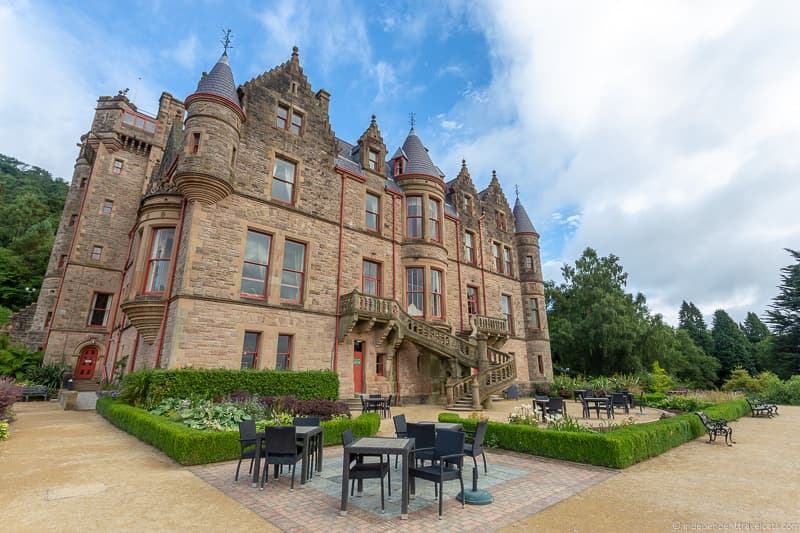
Ulster Folk Museum & Transport Museum
The Ulster Folk and Transport Museum is two separate museums with the Ulster Folk Museum and Transport Museum being located at different but adjacent sites. You can purchase admission to each museum separately, or buy a dual ticket to visit both museums.
The Ulster Folk Museum focuses on telling the story of the people and culture of Northern Ireland from the past to present, with a focus on the early 1900s. The museum is spread out across over 20 buildings set up to resemble a traditional village which includes a number of dwellings of the early 1900’s as well as replicas. These include thatched cottages, farm houses, schools, churches, shops, a mill, workshops, and more. There are also costumed guides, daily demonstrations, and activities such as open-hearth cooking, needlework, weaving, and craft demonstrations.
The Transport Museum focuses on the history of transport in Ireland from its early history to the modern era, from horse-drawn carriages to airplanes. One of the big draws to the museum is that it contains the largest railway collection in Ireland, and includes steam locomotives, passenger carriages, and a large amount of memorabilia. Other popular exhibits include pogo sticks (invited in Northern Ireland), a DeLorean DMC-12 car (the manufacturing plant was in Northern Ireland), a vertical take-off airplane, and a Titanic exhibition which includes some original artifacts.
If you plan to visit both museums, be sure to purchase the dual ticket to save money on admission fees. There is a cafe on-site in the Ulster Folk Museum which serves snacks and drinks.
The Ulster Folk Museum & Transport Museum are situated in the town of Cultra which is about 7 miles (11 km) east of Belfast. There is free parking on-site for visitors, the museums can be reached by bus from Belfast (30 to 40 minute ride), or you can take a train (nearest stop is Cultra Halt).
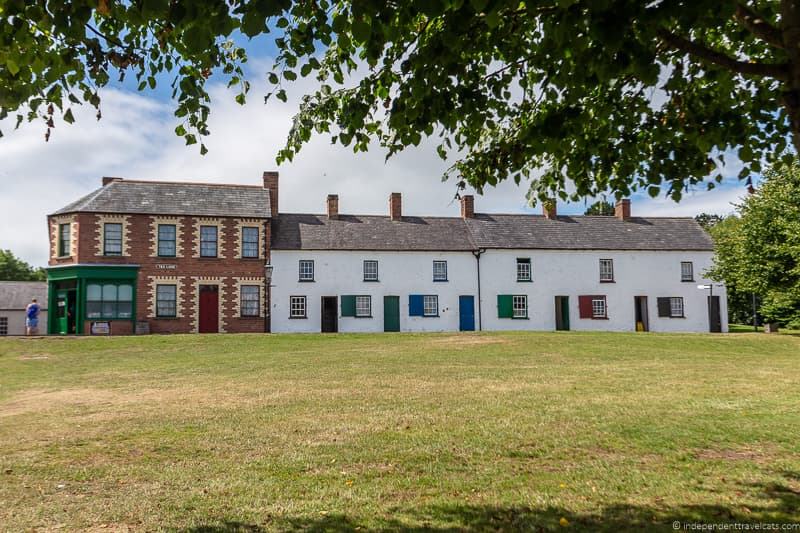
Minnowburn is a natural area of meadows and woodland around the Lagan River on the southern edge of Belfast. It is a perfect place for a walk, family picnic, or gentle hike in a bucolic setting.
Terrace Hill is a popular spot to get a view across the Lagan Valley and to have a picnic, and the trail here is dotted with sculptures and has a garden on top. The garden was built by Frederick Russell who wanted a garden to go with Terrace Hill mansion (circa 1856). The Russell family had earned their money from the linen industry and later the flour industry.
This area is now maintained by the National Trust and is a lovely place to come if you want a bit of an escape from the city. There are a few main trails and paths here that you can follow, some that run through the small village of Edenderry. It is easy to spend a few hours here on a nice day.
If you are looking for a nice gentle hike, we can recommend the Giant’s Ring trail. It is an easy 2.2 mile circular trail that takes you along the riverbank and through woodland and farmland, and past the Giant’s Ring. The Giant’s Ring is a Neolithic henge earthen monument, believed to have been constructed around 2700 BC.
Located about 4 miles outside of Belfast. No great public transit connections, although there are bus stops within a 15 minute walk of Minnowburn.
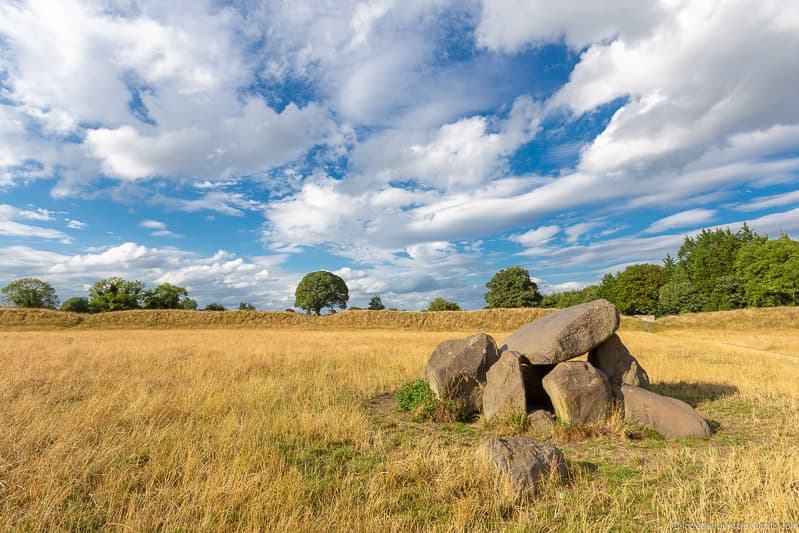
Sir Thomas & Lady Dixon Park
Sir Thomas and Lady Dixon Park is a 128 acre park located in South Belfast. The park consists of woodland, meadows, fields, a walled garden, formal rose gardens, and a Japanese garden. There is also a children’s playground and there is a coffee shop located in the former stables. The park is a popular place for local families and walkers.
The park was laid out around Wilmont House, a Victorian house originally built for James Bristow, but later purchased by Sir Thomas Dixon and Lady Edith Stewart Dixon . The Dixons would leave the house and park to the city of Belfast and it is currently maintained by the Belfast City Council.
The Sir Thomas and Lady Dixon Park is particularly known for its formal gardens and roses. Its roses are world famous and each year the roses attract thousands of visitors. The annual highlight here is Rose Week, a weeklong event where there is a flower show, games, concerts, puppet shows, family events, food vendors, and more. We attended Rose Week in 2018 and it was a lot of fun.
The park is located about 6 miles from Belfast city center and there is free parking available. You can also reach it by public bus with stops within a 5 minute walk of the park.
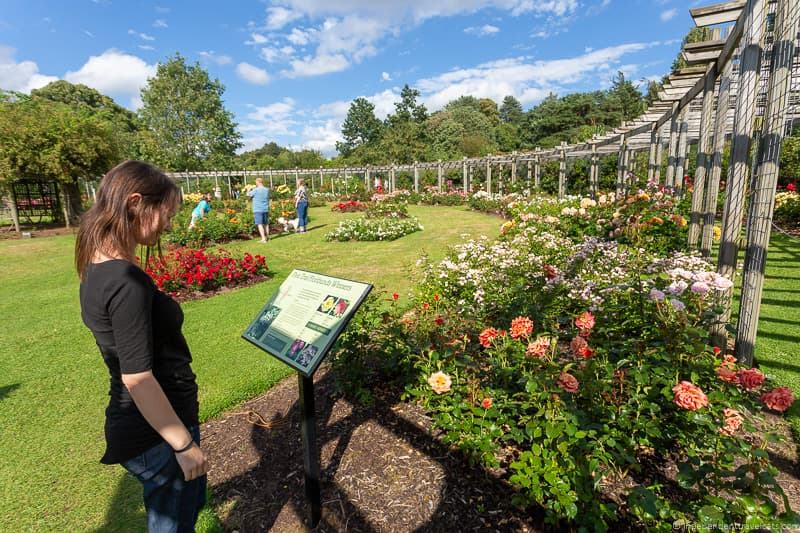
Belfast Map of Top Belfast Attractions
The map below shows the locations for each of the mentioned main things to do in Belfast, including the centrally located and nearby attractions. You can use this to help guide and plan your itinerary. We recommend trying to group together locations that are close together.
Click here or on the map below for a closer look and to see exact locations:

Things to do in Belfast: Day Trips from Belfast
Run out of things to do in Belfast? If you have more time in Northern Ireland and want to venture further afield, there are lots more things to do within a 1 hour to 2 hour drive of the city.
If you are looking for a day trip or quick overnight trip, our top recommendations depending on your interests would be to drive along a section of the Causeway Coastal Route, visit the Giant’s Causeway, do a whiskey tour, explore Saint Patrick Country, do a Game of Thrones tour of filming sites, or visit a few of the many castles and historic homes in Northern Ireland.
We have some of our favorites below, and we also have a complete guide to the best day trips from Belfast here .
Giant’s Causeway
The Giant’s Causeway is the most famous natural attraction in Northern Ireland and its only UNESCO world heritage site. The Giant’s Causeway is a geological feature, which consists of approximately 40,000 hexagonal basalt columns that form a staircase-like pathway out to sea. It has been featured in a number of films, TV commercials, and advertisements.
The site is managed by the National Trust, and there are a number of visitor services here including parking, a shuttle bus, an exhibition center, a gift shop, and a cafe. Although it is free to visit the site if you arrive on foot or by bicycle, there is a fee and ticket needed to park, visit the exhibition center, get the audioguide, use the shuttle bus etc. It is definitely worth it to get a ticket to take advantage of these services.
Entry is free for National Trust members. If you are planning on visiting both the Giant’s Causeway and Carrick-a-Rede rope bridge, you might consider investing in a National Trust Touring Pass . This will give you free access to both these attractions, as well as many other National trust properties across Northern Ireland and the UK.
You can drive (about 1 hour and 20 minute drive from Belfast), take public transit, or join a group or private tour from Belfast (or Dublin) to visit the Giant’s Causeway. You can see a number of available day tours to the Giant’s Causeway here and here .
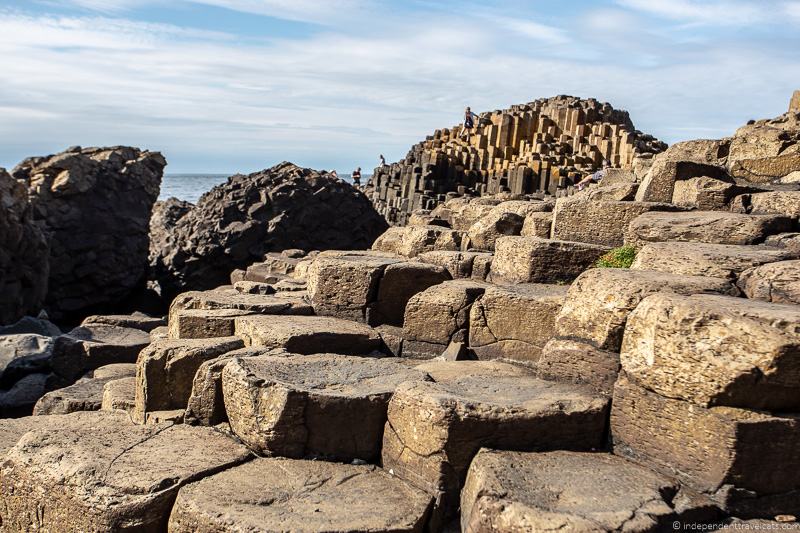
Causeway Coastal Route
The Causeway Coastal Route is a scenic tourist driving route that winds approximately 120 miles from Belfast to Londonderry (or Derry). Most of the route is along the coast with lots of scenery as well as a number of Northern Ireland’s top attractions.
Some of the most popular stops along the Causeway Coastal Route are the Giant’s Causeway , Carrick-A-Rede Rope Bridge, Dunluce Castle, and Bushmills whiskey distillery. Just off of the route are also popular stops like the Glenariff Nature Reserve, Rathlin Island, and the Dark Hedges .
Most of the route is accessible to all drivers, but there is a narrow and windy section that is not suitable for those driving in larger vehicles and campervans. Many of the attractions, depending on the time of the year, can be visited by public transit. I would not recommend this as a day trip if you want to do the full route, but you can visit a few of the highlights on a day trip.
Many people see parts of the route as part of a day tour from Belfast so they can avoid renting a car and don’t have to worry about drinking if stopping for whiskey tasting. Day tour options include tours such as this full day tour from Belfast.
We have driven the Causeway Coastal Route twice and really enjoyed it! See our guide to the highlights of the Causeway Coastal Route to help plan your own trip.
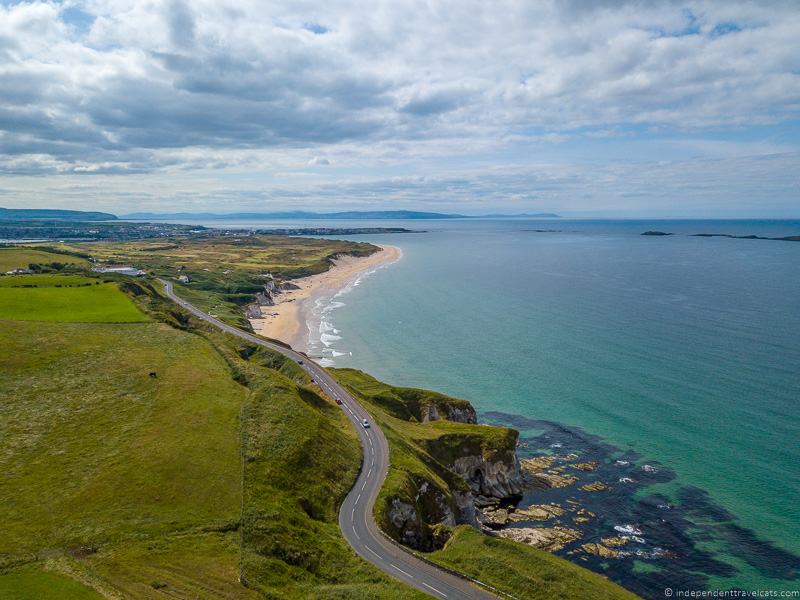
Learn about Saint Patrick
If you are interested in the history, life, and religious beliefs of Saint Patrick, there are a number of sites within Northern Ireland associated with the saint. Saint Patrick was born in Roman Britain and came to Ireland first as a slave of Irish pirates and later as a Christian missionary. He would become a bishop in Ireland during the 5th century and is often regarded as the founder of Christianity in Ireland.
St. Patrick is the patron saint of Ireland, both Northern Ireland and the Republic of Ireland. He is a venerated saint in a number of Christian religious faiths including in the Roman Catholic Church, Anglican Church, and the Lutheran Church. Saint Patrick’s Day, March 17th, is observed in Ireland (and in many other countries) as a religious and cultural holiday, celebrating his life and the arrival of Christianity into Ireland.
A few important places associated with Saint Patrick in Northern Ireland are The Saint Patrick Centre in Downpatrick (an informative and interactive exhibition about Saint Patrick’s life and legacy, a good starting point!), Down Cathedral (where Saint Patrick is believed to be buried) and Struell Wells in Downpatrick, Slemish Mountains (where Saint Patrick is believed to have been forced to work as a slave), and the two Saint Patrick’s cathedrals of Armagh.
Counties Down and Armagh are the two counties that are collectively known as Saint Patrick’s Country and have the most St. Patrick’s related sites. For more places associated with Saint Patrick, see this list of sites . Most of these places are located within a 1 hour drive of Belfast.
If you are looking for one place to go to learn more about Saint Patrick, I’d recommend heading to Downpatrick as there are several sites in and around the town associated with the saint. If you visit Downpatrick and are looking for a guide, this very good value 2-hour walking tour may be of interest.
If you are looking for a day tour, there are not many that are focused on Saint Patrick, but this group day tour from Belfast includes a visit to The Saint Patrick Centre, Down Cathedral, historic ruins of Monasterboice, and Dublin. There is also this private day tour by minivan from Belfast which focuses on Downpatrick sites and County Down.
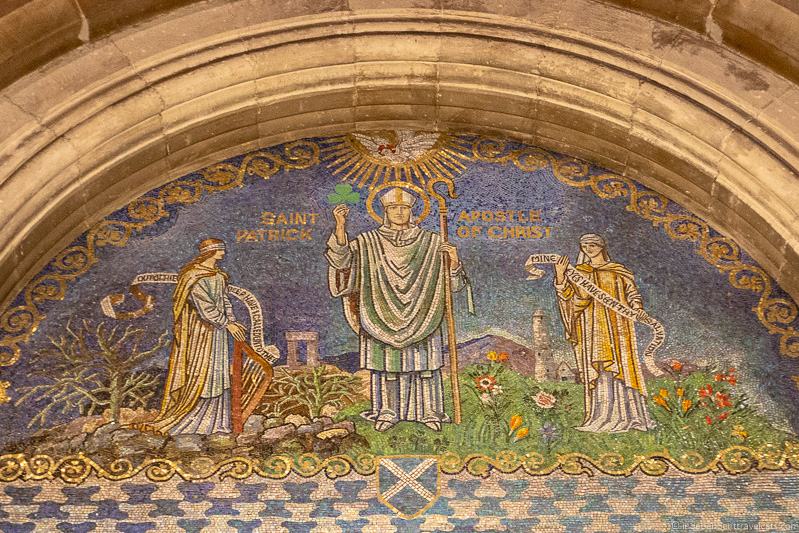
Games of Thrones Tour
The popular American HBO TV series Game of Thrones (2011-2019) was filmed primarily in Belfast at Titanic Studios, but also in a number of real-world locations around Northern Ireland. Over 20 filming locations have been used in Northern Ireland, most of them outdoors, to represent different locations such as Winterfell, Lordsport Harbour, Dothraki Grasslands, Kingsroad, Robb Stark’s camp, and the forest of the direwolves.
Note that some filming locations are on private land and are not accessible, but most are open to the public. The locations have included Tollymore Forest, Cushendun Caves, Murlough Bay, the Dark Hedges , Ballintoy Harbour, Larrybane, Castle Ward, Inch Abbey, and Downhill Strand.
You see this list of the Games of Thrones filming sites in Northern Ireland to help you plan your itinerary.
You can visit many of these locations on your own, or you can join a tour. If you want to be amongst other fans and learn more behind-the-scenes information, there are many Game of Thrones themed tours that leave from Belfast and focus on GoT sites and attractions. Many also include the chance to use props and dress up like characters from the Game of Thrones for photos. Some are even led by those who worked on the show.
Here are a few tour options to consider:
- This full day tour includes 9 stops which include Dark Hedges, Ballintoy Harbor, Larrybane, and Cushenden Caves. Also visits the Giant’s Causeway and Carrick-A-Rede rope bridge.
- This GoT day tour includes filming locations such as Dark Hedges, Carnlough Harbour, Cusheden Caves and Dunluce Castle. Tour also includes the Giant’s Causeway and a view of the Carrick-A-Rede Rope Bridge.
- This full day GoT tour includes visits to Castle Ward, Inch Abbey, and Tollymore Forest.
- This private guided day tour includes a guide who was an actors or extra in the Game of Thrones series
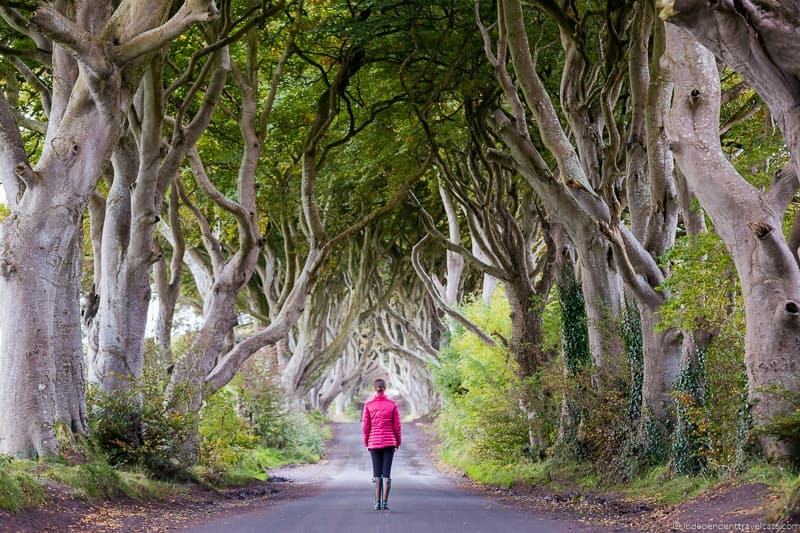
Go Whiskey Tasting
Ireland is well known for its whiskey and one of the most famous and oldest distilleries in Ireland is located in Northern Ireland. Along with Jameson in Dublin, Bushmills is one of the brands most associated with Irish whiskey worldwide.
Bushmills was established in 1784, although the first license to distill whiskey on the current site was granted back in 1608! Today, Bushmills is one of Ireland’s best selling Irish whiskey brands, offering both blended and single malt whiskeys. The whiskey is produced on the Bushmills Distillery site using water from Saint Columb’s Rill, a tributary of the River Bush.
Old Bushmills Distillery is a very popular place to visit and you can take a tour of the distillery to see how and where the whiskey is made, do a tasting, visit the gift shop, and/or have a meal here. Public tours are on a first come, first serve basis unless you are in a group of 15 or more so we recommend arriving at least 20 minutes before you want to do a tour. The distillery is about a 1.5 hour drive from Belfast city center.
Another whiskey distillery Echlinville Distillery , opened in 2013, also offers public tours and tastings. Be sure to make a reservation in advance if you wish to visit here. Echlinville was the first Northern Irish distillery to be granted a distilling license in almost 125 years! The distillery is located about a 50 minute drive from Belfast city center.
There are a number of distilleries expected to open throughout Ireland in the next several years, so if whiskey is a strong interest, I’d do some research on any recent openings. Just note that most distilleries when they first open are not offering their own whiskey yet.
If you do not have a car, you can reach Bushmills Distillery by bus or by a combo of bus and train. You can also book a private transfer or join a group tour that stops at the distillery, like this one .
Just note that most group tours only allow time for you to do a quick tasting, not a distillery tour.
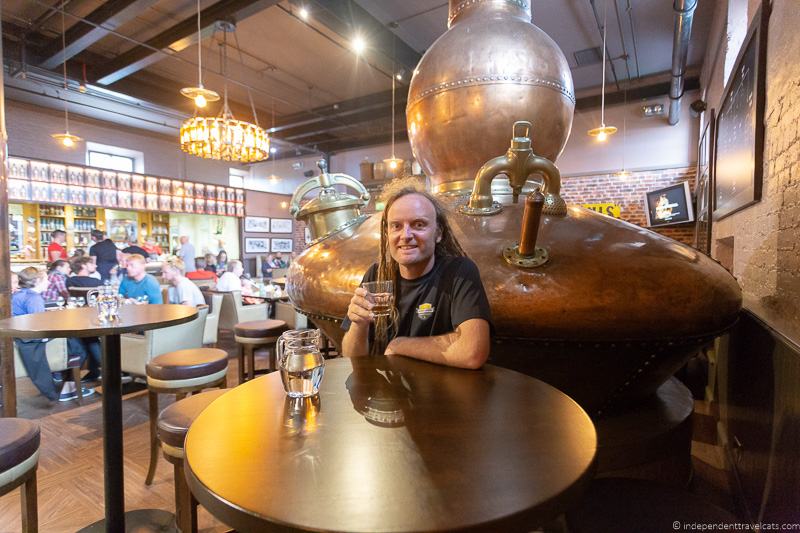
Castles, Palaces, and Country Homes
The UK is known for its many castles, palaces, and stately homes, and Northern Ireland has several that are open to the public to visit. Most are located within a 1 hour drive of Belfast. Some are only open seasonally so do check dates and hours before planning your visit.
Here are several to get you started:
- Carrickfergus Castle – A 12th century castle built for Sir John de Courcy alongside the Belfast Lough (3 sides are surrounded by water). Today it is one of the best preserved medieval buildings in Northern Ireland. This castle saw a lot of action and was besieged by the Scottish, Irish, English, and French and was used by the military until 1928. There is a fee to visit.
- Castle Coole – A 18th-century neo-classical mansion and landscape park in Enniskillen that was built for the Corry family. The property is now owned and managed by the National Trust but many of the contents of the mansion are still owned by the Earl Belmore (Corry family) who still lives on the estate. The house is open to the public in the summer months and the estate is open year-round. There is a fee to visit.
- Castle Ward – An 18th century mansion house built for Lord Bangor and his wife, known for having two different exterior architectural sides on each side (one side Palladian, one side Georgian Gothic). Estate also has a medieval tower house, farmyard, and gardens, and was home to the Ward family from 16th century until the estate was given to National Trust in 1952. Also a Game of Thrones filming location and there is a GOT archery experience offered here. There is a fee to visit.
- Dunluce Castle – A 15th century castle ruin perched alongside the sea that was lived in by the MacDonnell family until around 1690. Castle ruins are a popular stop for visitors on the Causeway Coastal route. There is a fee to visit.
- Hillsbourgh Castle – An 18th century Georgian house build for the Hill family. It is now an official government residence in Northern Ireland and managed by the Historic Royal Palaces. It is currently used as the residence of the Secretary of State for Northern Ireland and the official residence of the British Monarch and other member of the British royal family when visiting the region. Fee to visit and best to book in advance if you want to visit the house interior as tickets numbers and tour times are limited.
- Mount Stewart – A grand 19th-century neoclassical mansion house and garden in County Down built for the Marquesses of Londonderry. Now owned and managed by the National Trust. The property is well-known for its beautiful interiors, large collection of art and furniture, family memorabilia, and its world-class gardens. If you love gardens, we recommend visiting here in the late Spring or Summer months to see them in their full glory. Fee to visit.
Note that Castle Ward, Castle Coole, and Mount Stewart are all National Trust properties so members get free entrance. If you are planning to visit these, or other Trust properties in Northern Ireland such as the Giant’s Causeway or Carrick-A-Rede Rope Bridge, you may save money with a National Trust Touring Pass .
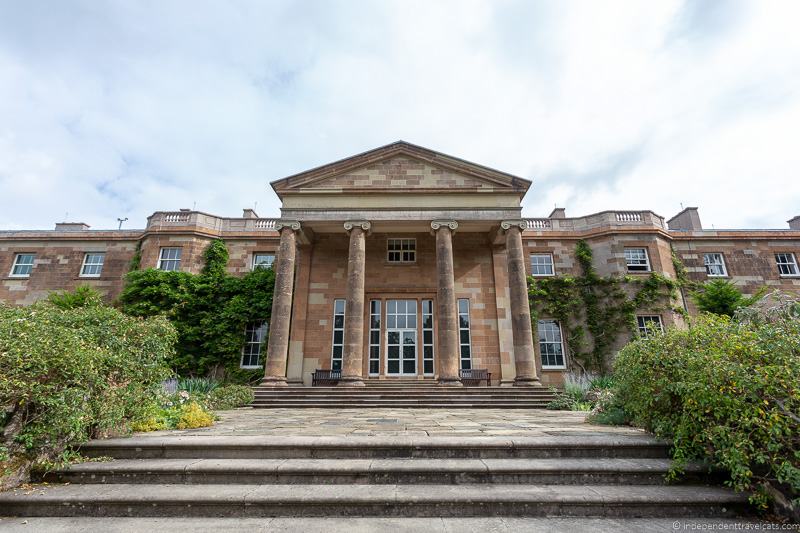
So there is our list of things to do in Belfast Northern Ireland! Have you been to Belfast? If so, any favorites among the above or places you’d add to this list? If you haven’t visited yet, which of these Belfast attractions would make it on your Belfast itinerary?
As always, feel free to ask us any questions you may have about things to do in Belfast or planning a trip to Northern Ireland!
Planning a trip to Belfast? Pin this article on Pinterest to read it later:
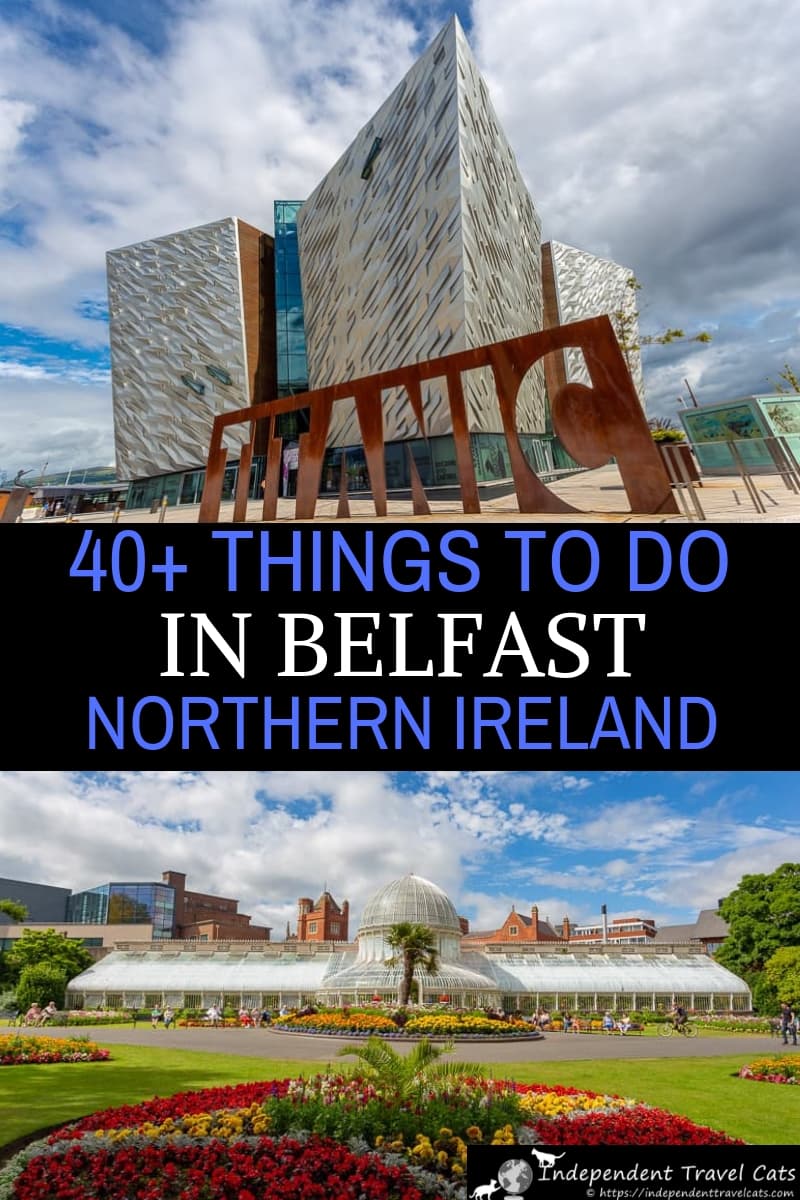
**Disclosure: We partnered with Discover Northern Ireland who helped us plan the logistics of our second trip to Belfast, and who also covered our accommodation and arranged some of our visits to local attractions in order for us to share our experiences as travel writers. However, as always, this article contains only our own honest thoughts and opinions. You can read more in our Ethics Code about how we accept work.**
Share this Post!
There are 16 comments on this post.
Please scroll to the end to leave a comment
Evie mason Post author
December 21, 2023 at 3:50 am
I stumbled upon a fantastic Belfast itinerary that highlighted the must-visit spots in the city, and it really made my trip planning a breeze. So many helpful hints and great attractions reviewed here. The mention of the Visit Belfast Welcome Centre at Donegall Square was invaluable–helped me snag some discounts for my sightseeing tours and even a bike tour around the city.
Jessica & Laurence Norah Post author
December 21, 2023 at 3:11 pm
Glad that you had such a wonderful visit to Belfast and that our Belfast Travel Guide was helpful to you in planning your trip. Sounds like you got a chance to do visit a lot of attractions and do a lot of tours, and glad you were able to find some discounts on a couple of your tours!
Best, Jessica
Janell Richison Post author
August 27, 2019 at 10:23 am
I love this site, and it is so informative, thanks so much. I am planning a trip in the very near future, after finding out my ancestry is far from what I thought it was, which I thought was just African and French, turned out to be anything but that. I did two test, and both came back with ties to England, Ireland, Scotland, and Finland, i.e. on the European side, and AMD (Age Macular Degeneration, being the only hereditary ailment, with a low risk, which is common in Ireland). In Ireland, the lineage points to Belfast, only; in Scotland, Edinburgh, Glasgow, and Fife; in England Merseyside, Manchester, Wales, Lancashire, and Country Durham. That being said, is it possible to visit all of these places from Belfast? My twin and I would love to kill three birds with one stone. Any suggestions?
August 27, 2019 at 12:41 pm
Glad you are enjoying our travel blog! It is exciting to learn more about one’s genealogy and then go visit the places where one’s ancestors lived.
So it looks like your lineage points to all four countries of the UK: England, Northern Ireland, Wales, and Scotland. Wales is its own country (not part of England), but both are part of the UK. So that’s a lot of places to try to visit. How much time do you have? I’d recommend at least 2 weeks if you are trying to visit all these places.
Also note that some places you list are cities like Edinburgh and Manchester, but others are counties or regions like Lancashire and Fife, whereas one is an entire country (Wales). So unless you have a lot of time, you would want to narrow those places down to where you’d actually want to visit. For example, maybe you want to visit St. Andrews in Fife and Liverpool in Merseyside. Maybe you want to visit Cardiff and Snowdonia National Park in Wales.
Then I’d decide how you plan to get around. Are you wanting to get around by public transportation, join a tour (or series of tours), or drive yourself? Or some combination of those?
So yes, there are ferries that you can take from Belfast to Scotland as well as England. But you could not use it as a base to visit the other places as they are too far away. But it would be a good beginning or ending point for your trip.
If you want to try to see all (or most of these places) I’d probably recommend flying into London and leaving out of Belfast. Or flying into Belfast and leaving out of London.
Happy to help more once you have an idea of how much time you have and how you’d like to travel around the UK.
Tamara W Post author
July 22, 2019 at 8:33 pm
I love your site! It is very well organized. I’ve spent some time in Northern Ireland on two separate occasions and can vouch for all you have said about the people (the best that I’ve ever met….but I must include Dubliners, as well) and how they do not know their own land as well as they would like. I would like to add that the Mourne Mountains are GORGEOUS and about an hour’s cab drive (but trains go there as well).
My favorite spot is all the way down to the border to Rostrevor for Kilbroney Nature Park overlooking Carlingford Lough. Stunning landscape and views in summer when the heather is in bloom! Beautiful hiking with very good facilities. Also, there is a LOT to do in Bangor which is a 20-minute cab drive (trains and busses also will take you there) from Belfast City Center. In Bangor you will see the marina, the excellent North Down Museum, Bangor Castle and more. Birthplace of Christianity in Ireland! For C.S. Lewis fans, the Old Inn in Crawfordsburn nearby is where many literary authors used to hang out, and where C.S. Lewis took his friends and honeymooned with his wife Helen Joy Davidman. There is a statue to Amy Carmichael, missionary to southern India and founder of Dohnavur Fellowship there, at Hamilton Road Prebyterian Church, as Amy’s family was significant in Millisle where she was from, and then Belfast as well.
In Belfast, you can see her church and mission that is still going in the Shankill district (“The Welcome Evangelical Church” and its new facility for the disabled “The Amy Carmichael Center” next door). Down the road from the Mission is a statue of the mill worker girls called “shawlies” that Amy helped and the old mill where they worked is across the street from the statue. The Welcome church was built just for the mill girls so they could go to church. There are a HOST of C.S. Lewis sites: The Shand Theatre, Campbell College, St. Mark’s (where his grandfather was rector and there is a red door with a lion door pull that played a large part of Lewis’s Aslan imaginings), his home Little Lea on Circle Street, his mural on the Hop-On-Hop-Off bus tour of Belfast, etc. I had more fun with the extremely friendly cab drivers showing them where these places are and what these Belfastians did that they were not aware of. They were happy to learn about it!
I am looking at your Dublin itinerary and will keep coming back as I am planning a third trip out to extend the trip. Glenlara Elite Travel did a WONDERFUL tour of the Antrim Coast if anyone is interested. Frances is an excellent tour guide and made our trip just amazing. Cave Hill park is one of my favorite in-town hikes. Also St. George’s Market in downtown for shopping.
July 23, 2019 at 3:50 am
Hi Tamara, So glad you are enjoying our posts on Dublin and Belfast and thanks for providing some of our favorite places in Northern Ireland. We have mainly explored Belfast and surround and then along the coast, but there is definitely much more to see in Northern Ireland and you have listed a number of places we have not been like Bangor. We will have to go there on our next visit! Yes, Cave Hill is nice place to hike in Belfast and we list a few places you might want to try next time if you haven’t been in our Belfast itinerary.
We agree that Dublin is great as well and plenty to do there and in the surrounding area! Wishing you a wonderful return to Ireland & Northern Ireland!
Bea Post author
December 31, 2018 at 2:41 am
I am very keen to visit Northern Ireland this year! Looks like I have great things to look forward to 🙂
January 1, 2019 at 1:28 pm
Hi Bea, Yes, there is lots to do and see in Belfast and the rest of Northern Ireland. Just let us know if you have any questions as you plan your trip. Best, Jessica
Anisa Post author
December 30, 2018 at 12:24 pm
I have wanted to go to Belfast for a few years now but haven’t made it yet. This is a great guide, so comprehensive as always. The Titanic Museum is top of my list, but I also want to go to Giants Causeway. Hopefully, I can find a weekend to fit it in soon. Happy New Year to you both
December 30, 2018 at 4:43 pm
Hi Anisa, Hope you can a chance to visit Belfast soon. Have a wonderful New Year’s! Best, Jessica
Lolo Post author
December 30, 2018 at 3:03 am
Quite an extensive guide to Belfast you have here! There definitely seems to be way more things to do than I originally knew about! I’m especially interested in the Opera House! Saved for later! Happy Holidays!
December 30, 2018 at 6:29 am
Hi Lolo, Yes, if you like opera houses, the Grand Opera House is the only Victorian theater remaining in Northern Ireland. It will be getting a facelift in 2020 😉 Best, Jessica
Anda Post author
December 29, 2018 at 3:53 pm
Excellent travel guide, like always! I’m going to bookmark this for our future travel plans. My husband and I always wanted to visit Ireland and if we make it there we’ll definitely want to see Belfast. Having so much useful information in one single post will make my life so much easier. I usually have to search the web for hours and hours, before I am able to put together a decent itinerary. Thanks for sharing this, Jessica. I wish you and Laurence a wonderful New Year!
December 29, 2018 at 4:57 pm
Hi Anda, Yes, I had been working on this post for a while and I actually took some places off the list that we visited as there were just so many. We were really surprised how many thing we have done there!
If you go to Ireland, I hope you get a chance to visit, there are lots of neat things to see/do in Belfast and Northern Ireland in general. All of Ireland is great of course (we still have much more to see ourselves!) but I do have some special feelings towards Belfast.
In many parts of the UK, people still look at you a bit strange if you say you are going to go spend time in Belfast as most people lived through The Troubles and you did not go to Belfast “for fun”. But we really have loved our two visits. On a few of the tours we did, we were the only people not from Ireland as so many Irish people told us that they never really had the chance to explore their own city growing up and they are excited about all the new things that are available now. It was really nice to be able to hear their stories and hear about how much they’ve seen the city change. It is great to hear about positive change and to see so many derelict buildings getting a second life.
Wishing you and your husband a wonderful 2019!!
Jill Post author
December 29, 2018 at 2:44 pm
I’m visiting Ireland for my first time next year and I’m so excited. Unfortunately, due to time constraints I won’t be visiting Northern Ireland but I am sure I will be back. I’ve heard such wonderful things about Belfast that I know I will visit it someday!
December 29, 2018 at 4:37 pm
Hi Jill, Ireland is a great country to explore and I am sure you’ll have a great trip. If you are going to Dublin, we do have a 3 day Dublin itinerary that may be useful in planning your time there. Northern Ireland will still be there next time, we’d recommend a week to see many of the highlights. Northern Ireland is easy to combine with a trip to the rest of Ireland as well as Scotland as well as there are regular daily ferries between the two 😉 Happy travels! Jessica
Leave a Reply Cancel reply
Your email address will not be published. Required fields are marked *
Notify me of replies to my comment (just replies to your comment, no other e-mails, we promise!)
Subscribe to our monthly Newsletter where we share our latest travel news and tips
We only ask for your e-mail so we can verify you are human and if requested notify you of a reply. To do this, we store the data as outlined in our privacy policy . Your e-mail will not be published or used for any other reason other than those outlined above.
15 best things to do in Belfast: everything you need to try in Northern Ireland’s capital

Apr 1, 2022 • 15 min read

Belfast has an exciting mixture of things to do for all ages, including kids © Ajay Panigrahi / EyeEm / Getty Images
You may not go to Belfast for the weather, but there are plenty of other reasons to book a sojourn to Northern Ireland’s capital. This small, idiosyncratic city has long punched above its diminutive weight in terms of cultural impact.
This is the hometown of Ulster Frys and Belfast baps; of CS Lewis, George Best, and Van Morrison; of the RMS Titanic and the Harland and Wolff shipyard; and of deeply politicized murals enlivening its red-brick gable walls.
Though Belfast bore witness to one of the most violent civil unrests in 20th-century Europe – known, in an incredibly downplayed Northern Irish way, as The Troubles – the scars have begun to heal, giving rise to a rejuvenated city that reflects on, rather than shies away from, its history.
Belfast today has a thriving performing arts scene and a nightlife culture that fuses haute cuisine with cozy pubs and Irish folk music. Carefully curated museums and tours provide nourishment for history buffs, whilst walking enthusiasts can find nature on the city’s doorstep. And though locals might bemoan the rising price of a pint, Belfast remains an affordable travel destination for most budgets. These are the best things to do.

Dive into Belfast’s history at the Titanic Belfast museum
The Titanic Belfast museum, rising in star-like fashion from the grounds of Harland and Wolff shipyard, is much more than a mere maritime showcase. Told through interactive exhibitions, it’s a comprehensive exploration of Belfast’s storied history, from an 18th-century trading town on the River Lagan – Belfast’s original name, Beal Feirste , meant ‘Crossing of the River’ – to the industrial explosion that gave rise to world-leading linen, shipbuilding, rope-making, and tobacco-manufacturing industries. The journey culminates with an extensive deep dive into the RMS Titanic , whose ill-fated Atlantic voyage in 1912 eventually crippled the city’s number one industry.
As the central hub of Belfast's burgeoning Titanic Quarter, the museum nestles under the watchful gaze of its twin industrial icons: a pair of large yellow cranes named Samson and Goliath . You’ll want to set aside a few hours to meander through the five-story museum followed by a walk along the harbor. Finish up in nearby public house Hickson’s Point for a pint of Guinness – it’s unmissable thanks to the Docker’s Rest mural, portraying stout-swilling shipyard workers, on its exterior wall.
Watch a show at the theater
Belfast’s murky past has ensured that art and tragedy (and indeed comedy) deeply intersect, and perhaps nowhere is this more apparent than at the Lyric Theatre . First opened in 1968 – the same year the conflict began – Northern Ireland’s premier playhouse has cultivated a raft of world-renowned talent over the subsequent half-century, from Oscar-nominated actors Liam Neeson and Ciarán Hinds to award-winning playwrights Martin Lynch and Marie Jones. Be it conflict-era dramedies in the main auditorium or developmental pieces in the Naughton Studio, a night at the Lyric is a wonderful introduction to modern Belfast’s artistic prowess.
Serious theater heads should book a show in the Grand Opera House in Belfast city center, the go-to venue for large-scale productions, including West End and Broadway shows as well as Belfast-vernacular pantomime and Disney musicals. For independent productions and one-off performances, the Modern Arts Center, aka the MAC , and the Waterfront Hall are not-to-be-missed venues.
Go for a hike up Cave Hill
When the weather’s on your side (invariably difficult to predict, irrespective of the season) take a hike up Cave Hill which rises to a humble height of 368m (1207ft) above the low-lying city. The most famous of Belfast’s surrounding cliffs, it also goes by the colloquial epithet ‘Napoleon’s Nose’, due to its sharp profile which resembles that of the former French dictator. (Some also credit this profile as the inspiration for Jonathan Swift’s sleeping giant in Gulliver’s Travels .)
A 4.5-mile round-trip, starting and finishing at Belfast Castle , is the optimal walking course. En route, you’ll pass by the Devil’s Punchbowl (a large hollow set below the eponymous caves), the site where McArt’s Fort once stood, and views of Belfast Lough to the east and the Mourne Mountains in County Down to the south. On a clear day, the Isle of Man and the western tips of Scotland are also visible. The walk rarely gets too congested, but New Year’s Day and Boxing Day are favored brisk mornings for sweating out the festive cheer on Cave Hill. Solid footwear is recommended.

Visit Westeros in Belfast
Film and TV have become major pillars of the Northern Irish economy, and the primary catalyst for this was HBO’s Game of Thrones , with on-site filming locations littered across the country and major scenes shot on studio sets in Belfast. As a result, visitors to the capital are treated to a flavor of Westeros in a place where much of it became a reality.
Start with the Glass of Thrones walking tour , which connects six stained-glass artworks depicting epic scenes from the series. From John Snow wielding Longclaw near the waterfront AC Hotel to a depiction of the Lannisters’ bloodthirsty reign near decommissioned naval cruiser HMS Caroline , the 1.5-mile jaunt is a great way to stretch the legs early in the day.
Next, head to the cobble-laned Cathedral Quarter to see Belfast’s inclusion in the Journey of Doors. This project stemmed from Storm Gertrude which felled a couple of trees along the Dark Hedges – better known to GOT fans as the King’s Road – in 2016. Wood from the two toppled beech trees was turned into 10 doors, depicting Game of Thrones iconography. They were subsequently beset in the walls of public establishments around Northern Ireland. Grab a table at The Dark Horse coffee house and bar and look out for a door bearing the Lion of Lannister rising above Baelor’s Sept.
You could also set aside a morning for visiting the Linen Mill Studios in Banbridge, 25 miles outside of Belfast, where a Game of Thrones Studio Tour opened for business in early 2022. Showcasing sets, props, weapons, costumes, and visual effects from the show, it’s required-visiting for any serious fan of George R.R. Martin’s fictional world.
Bar hop in the Cathedral Quarter
In the Cathedral Quarter you’ll find some of Belfast's most iconic bars centered around a narrow walking street in the heart of the city. Grab a pint at the Duke of York , a cozy pub whose cramped confines are filled with hand-carved mirrors, chattering imbibers, and vintage ephemera from the nine counties of Ulster.
On long summer evenings, retreat to the beer gardens at The Thirsty Goat or The Dirty Onion (patio heaters and awnings included). The Harp Bar is roomy and chic with excellent live music throughout the week – and has Irish Harp lager on tap. Whilst Muriel’s is a suave hideout for craft spirits and artisanal cocktails.
Alternatively, more frivolous travelers may opt for the arched dining hall at the five-star Merchant Hotel , a classy spot for afternoon tea, or a couple of stiff whiskies and minor sevenths at the hotel’s in-house Berts Jazz Bar .
While you’re in the Cathedral Quarter, take a stroll past the Umbrella Passage mural, portraying famous local faces crowded around a table under a canopy of umbrellas, and St Anne’s Cathedral , the grand Church of Ireland edifice from which the area gets its name.

Take a black taxi tour of Belfast’s political murals
As the late Northern Irish poet, Seamus Heany, once opined, “The end of art is peace”; a sentiment the Belfast black taxi tour echoes. In the backseat of a black cab – many of which appeared during the early days of The Troubles due to a lack of public transport in north and west Belfast – you’ll chart a course through some of the city’s most divided neighborhoods and past a rich tableau of murals borne out of the late-20th-century tensions.
Many of those who contributed to the fractured sociopolitical landscape – the martyred republican hunger striker, Bobby Sands; 17th-century icon of Ulster unionism, King William of Orange; paramilitaries on both sides of the Unionist-Nationalist divide – are portrayed in the mural iconography of the tour. Each offers a visual aid to understanding the complex history of Troubles-era Belfast. You’ll also swing by the peace walls – around which the conflict was once at its most violent – which still divide two ostensibly opposed sides of the community.

Indulge in a fish supper
Fish suppers are the quintessential, hearty fast-food repast of nearly every Northern Irish childhood. Taking advantage of its seaside location, Belfast is awash in “chippies” selling this enduring guilty pleasure. There is no fluff when it comes to fish supper composition: It features battered and deep-fried white fish (usually cod, occasionally haddock) on top of a bed of chips. Tartare sauce, mushy peas, and salt and vinegar are common additions.
On the recently gentrified Ormeau Road, Kings Traditional Fish and Chips has stuck to its roots and still serves up some of the finest fish suppers in south Belfast. Spence's Fish & Chip – formerly Eddie Spence’s – in east Belfast is little known outside local quarters, but its longevity (in business since the 1920s) is a testament to its quality. Once a cult favorite, John Long’s Fish & Chips , the oldest shop of its kind in the city, is now the prime spot for fish suppers in the center of town. Your options are aplenty, and seldom does quality not match the quantity.
Break your fast on an Ulster Fry
No punches are pulled with breakfast food in Belfast either; a fact personified by the Ulster Fry. Taking its name from the Province of Ulster, which encompasses Northern Ireland and three counties in the Republic, Ulster Frys are a combination of eggs, bacon, sausages, beans, tomatoes, mushrooms, potato bread, soda bread, and white and black pudding. Most cafes and pubs will serve some version of this (often throughout the day).
Maggie May’s near the venerable halls of Queens University has become popular for its humongous Ulster fry, while Cyprus Avenue in east Belfast, named after the Van Morrison song of the same name, matches its boutique vibe with fancy takes on the nation’s favorite breakfast. Harlem Cafe in the center of town also comes highly recommended.
Check out the street art at CS Lewis Square
Over the last decade, east Belfast has been subject to a variety of district rejuvenation projects, most notably, CS Lewis Square ; it’s a homage to the eponymous creator of the fictional world Narnia and a portal to the other side of his most famous wardrobe.
Head down to see the dramatis personae of Lewis's bestselling series recreated in statue form: A distinctly Westerosi Aslan, looking as though he were crafted from melted swords, alongside sculptures of the White Witch, Mr. Tumnus, the Beavers, and a replica of the Stone Table. You’ll also find the Luminaries and Legends mural splashed across a gable wall here, celebrating famous “easties”, including Van Morrison, Thin Lizzy guitarist Gary Moore, and CS Lewis himself.
After admiring the art, take a seat at nearby cafe JACK , as CS Lewis was known to his closest acquaintances, for a cup of craft coffee and toasties made with locally-sourced ingredients. Alternatively, nip into Freight , a quirky cafe built inside a freight container pinned to the corner of the square, serving brunch inspired by cuisines from around the globe.

Soak up the local music scene
Belfast’s Celtic roots have ensured the live music scene is baked into the foundations of its nightlife culture. And in 2021, it became a UNESCO City of Music , recognizing its “rich musical heritage” and “the importance of music to its future”. Be it session nights at the John Hewitt (named after the famous Belfast poet) or journeyman musicians performing at the Black Box , travelers on the hunt for live music will never be far from twanging guitar chords and rippling fiddles.
Fibber Magees and The Points are two great spots for trad and folk music seven nights a week. Voodoo offers a good alternative option, which following its hipster makeover, has become a favored spot for club and LGBT nights, as well as indie rock and metal events. For marquee names, grab a ticket for the summer Belsonic festival in the leafy environs of Ormeau Park; former acts include Liam Gallagher, Stereophonics, Ellie Goulding, DJ Tiesto, Stormzy, and many more.
Watch live sports – rugby, football, ice hockey
Northern Ireland has a rich sporting heritage and watching one of the local professional teams in action is a great way to kick off a night on the town. The Kingspan Stadium , affectionately known by its previous name “Ravenhill”, is the home of Ulster Rugby.
After undergoing renovation from 2012 to 2014, the stadium now accommodates 18,000 spectators, typically welcoming a full house for Friday evening and Saturday afternoon games. Guinness is served on tap in the beer tents, while The Errigle and The Pavillion (sometimes called “The Big House”) bars on nearby Ormeau Road are popular haunts for pre-match tipples and post-match celebratory toasts.
Windsor Park , Northern Ireland’s home football stadium in south Belfast, also underwent a recent renovation (completed in 2015). The “Kop end” of the stadium – officially, the West Stand – has one of the best atmospheres in world football, evidenced by the Medal of the City of Paris awarded to Northern Irish fans during the 2016 UEFA European Football Championships. Tickets at Windsor Park are hot commodities during Euro and World Cup qualifying campaigns.
Ice hockey doesn't garner the same levels of fandom in Belfast as its field sports counterparts, but catching a Belfast Giants game at the SSE Arena ’s ice rink is a surprisingly fun night out. The sport is exhilarating and abrasive, while the lively atmosphere caters well to families.
Dine out on Michelin-star fare
Belfast’s burgeoning culinary scene was given another boost at the beginning of 2022 when all three of its Michelin-star-rated restaurants retained their lofty status. The most recent addition to the culinary pantheon is the Muddlers Club , hidden down a cobbled entryway in the Cathedral Quarter, which specializes in creative tasting menus using homegrown produce. The kitchen is partially open to the dining floor, creating a sense of theater within its urbane confines, while the mixologists pay as much attention to detail with their cocktails as the chefs exercise towards the food.
Deanes Eipic is perhaps a little more bougie, but is no less deserving of its Michelin star, thanks to incredibly delicate tasting menus inspired by the seasons. The in-house sommelier learned his craft in the Loire Valley and curates inspired wine pairings to complete the dining experience.
Started by a chef duo who underwent culinary tutelage in Paris, OX Belfast was awarded a Michelin star in 2016, which it has retained ever since. Elegant seasonal tasting menus are once again the order of the day, alongside wine pairings, and beer, cider, and spirits from around Ireland.

Get thrifty at St George’s Market
St George’s Market in the city center, open from morning to early afternoon Friday through Sunday, is Belfast’s premier permanent market space, crammed with stalls selling vintage clothing, Celtic jewelry, boutique artworks, handmade crafts, and gastronomic pleasures. Though the market, situated in a Victorian-era building, is a mainstay of the Belfast townscape, the goods on offer are cyclical.
The Friday variety market, whose origins date back to 1604, focuses on local farming produce alongside a smattering of books, clothes, and antiques. Saturday is more artisanal, with arts and crafts taking center stage, joined by continental cuisine and coffee bean stalls. The Sunday market marries the best of the Friday and Saturday editions and frequently features local artisans peddling their most recent handiwork. If the Belfast Bap Co is in attendance, don’t miss out on its signature offering: A Belfast bap (crusty white bread roll) filled with the ingredients of an Ulster Fry.
Dark tourism at Crumlin Road Gaol
Opened in 1846, the Victorian-era Crumlin Road Gaol is a brooding prison that closed its doors in 1996 after 150 years of operation. Self-guided tours with audio guides and holograms are the best way to explore its cavernous tunnel, shoebox cells, and macabre graveyard. From Eamon de Valera, who would go on to be Taoiseach (Prime Minister) of the Irish Republic, to the Sinn Fein politician Martin McGuiness and loyalist militant Michael Stone (who eventually attempted to bomb the Stormont parliament buildings ) many high-profile figures were confined with the gaol’s walls.
Crumlin Road Gaol is also now used as an event space, including cabaret nights, escape room-style games, and destination weddings. A full list of “Live at the Crum” events is available on their website .
Ye olde history at the Ulster Folk Museum
If you want to travel further back in time, the Ulster Folk Museum is a recreated township in the rolling hills of Ballycultra on the Belfast outskirts. Complete with thatched-roof cottages, live traditional crafting sessions (including smithing and tweed-weaving), shops selling period-appropriate food and trinkets, and permanent exhibition spaces, it explores the humble residential life of early 20th-century Ulster.
A Languages of Ulster project has also been unveiled, paying tribute to Northern Ireland’s linguistic roots. Guided through the museum via a booklet or app you’ll follow the Cúl-Trá-il trail and learn about the traditions of Hiberno-English, Irish, and Ulster Scots and their respective fights for survival.
You might also like: Belfast: A local's guide on where to go Where to find Game of Thrones tours and attractions after the finale First time Northern Ireland: a small destination with Titanic appeal
Explore related stories

Mar 5, 2024 • 9 min read
For such a small island, Ireland doesn’t lack for beautiful spots to visit. We’ve rounded up our favorites.
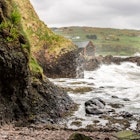
Sep 23, 2021 • 6 min read
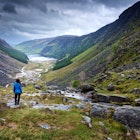
Sep 18, 2018 • 6 min read

Apr 18, 2018 • 5 min read
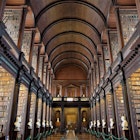
Aug 14, 2014 • 5 min read

Jan 20, 2012 • 4 min read

Dec 5, 2023 • 7 min read

Jul 31, 2022 • 6 min read

Jul 28, 2022 • 6 min read

Jul 26, 2022 • 8 min read
Best Museums
Coolest Murals to See
Food to Try
Top Restaurants
Best Time to Visit
Weather & Climate
Belfast International Airport Guide
Public Transportation
Safety in Northern Ireland
48-Hour Itinerary
One Week in Northern Ireland
Things to Do in Belfast
The Top 11 Things to Do in Belfast
:max_bytes(150000):strip_icc():format(webp)/NatalieKennedy-5acc5535303713003794200e.jpg)
Henryk Sadura / Getty Images
Moving beyond its turbulent past, the capital of Northern Ireland is a vibrant city with a rich array of cultural, foodie and historical attractions to explore. Belfast first grew into a city thanks to its prolific shipyards where workers built boats to cross the seas — including the famed Titanic. The late 1960s brought the start of the Troubles, but peace finally arrived in Belfast with the Good Friday agreement of 1998.
Without ever forgetting its past, the city has moved beyond the time of the Troubles, experiencing a kind of Renaissance starting in the cool Cathedral Quarter, all the while ensuring the beloved landmarks like St. George’s Market and Cave Hill remain an important part of city life today. The northern city is also the gateway to discovering the treasures of County Antrim, such as the Giant’s Causeway .
From the iconic stops like the Belfast Zoo and the city’s castle to the street art and museums, here are the top things to do in Belfast , Northern Ireland.
Delve into History at the Titanic Museum
Henryk Sadura / Getty Images
The shimmering metal façade of Belfast’s famous Titanic Museum is mesmerizing, but the real historical treasures lay inside the modern, multi-media exhibition space. Built on the same dockyards where the ill-fated ship was constructed over 100 years, the museum is one of the best things to do in all of Ireland and a must-see when visiting the Northern Ireland capital. There is an impressive collection of artifacts from the sunken ship, but the most amazing features are the interactive galleries which allow visitors to feel as though they are walking the decks or traveling to the depths of the ocean.
Check out the Cathedral Quarter
William Barton / Getty Images
Named for the towering St. Anne’s Cathedral church, the Cathedral Quarter is one of the oldest areas in Belfast. The neighborhood was once the center of literary life in the city, with several newspapers and publishers tucked away along the blocks. These days, the Cathedral Quarter is the Belfast’s main nightlife destination and is best known for its lively pubs. In addition to bars and restaurants, the neighborhood is also home to great cultural destinations, including the contemporary galleries of the MAC (Metropolitan Arts Centre) and the Oh Yeah Music Centre .
Have Lunch at St. George’s Market
Spencer Robertson / Design Pics / Getty Images
St. George’s Market is the last covered Victorian market that is still in operation in Belfast today. The market stalls have a long history, and there has been a Sunday market on this spot since 1604. The current market building was constructed in the late 1800s and underwent an award-winning refurbishment in the 1990s. On Friday, the Variety Market features nearly 250 stalls selling fresh produce, local seafood and street food. On Saturday and Sunday, the market switches gears to focus on arts and crafts as well as antiques, but the food stalls remain open — making this one of the best places to grab a weekend lunch in the city.
Seek out the Many Murals
William Murphy / Flickr / CC BY-SA 2.0
The political murals of Belfast are a famous part of the city backdrop. Painted during the Troubles, the wall-high are often poignant memorials to the people and politics which defined a turbulent time in the history of Ireland. In addition to these deeply meaningful (though divisive) paintings, a new kind of street art has recently emerged in Belfast’s cool Cathedral quarter. The rainbow-hued murals depict everything from wild animals to David Bowie and add a fun splash of character to the former warehouse district.
Visit the Crumlin Road Gaol
Rossographer / Geograph.ie / CC BY-SA 2.0
Known to locals as The Crum, the Crumlin Road Gaol is a Victorian-age jail that offers fascinating tours. The jail first opened in 1846 and housed 25,000 prisoners over its 150 years of operation. The jail closed forever in 1996, but not before the high-security setting gained special notoriety for being the place where many Republican and Loyalist prisoners were detained during The Troubles. The 70-minute tours will lead you through the cells and execution chambers, all while highlighting parts of the jail’s colorful but tragic history.
Take in the Views From Cave Hill
Niall Majury / Getty Images
Named for the five caves that are tucked away in its slopes, Cave Hill is one of Belfast’s most recognizable landmarks. Sitting high above the city, the hill offers amazing views of the port and the capital. It is also home to a playground, park, the Belfast Castle and the zoo. For a truly local hike, head towards Napoleon's Nose — a rocky peak that is said to have inspired the book "Gulliver's Travels."
Take a Stroll in the Botanic Gardens
The Belfast Botanic Gardens have been one of the best places to take a stroll in the city since 1828. The gardens were created to satisfy a growing public interest in plants of all sorts and the park is now full of rare and exotic trees, shrubs, and flowers. The most recognizable features are the two Victorian greenhouses, the Tropical Ravine and the Palm House, where you can find everything from bananas to cinnamon growing in a lush setting. The rest of the park is outdoors and ideal for a sunny Irish day. In the summer, the Botanic Gardens are often used for concerts and other festivals.
Spend the Day at the Zoo
Lindsay Wilson / Flickr / CC BY 2.0
Tucked away from the city lights and sounds of traffic, the Belfast Zoo is a unique animal sanctuary on the slopes of Cave Hill. The zoo is home to over 140 species of animals; offering the opportunity to see giraffes, elephants, lemurs, penguins, and more as they frolic in beautiful enclosures.
Indulge in a Pasty
John Long's Fish & Chips
Belfast has an incredible food scene with new pubs and restaurants serving up the best international cuisine. The favorite hometown snack, however, remains the humble pasty. This battered pie is a diet killer, but it is worth it to indulge at least once while you are exploring the city. A Belfast pasty is made of a battered sausage that is then slipped between two pieces of buttered bread (a ‘bap’). If you prefer, you can skip the bread and enjoy your pasty with a side of French fries. It's not the healthiest dinner, but it is a true Belfast experience. The best in town can be found at John Long’s Fish & Chips.
Find all the Cats in the Belfast Castle Garden
TripSavvy / Bernd Beige
The original Belfast Castle was built in the 12th century in the center of Belfast. When the Norman structure burnt to the ground several centuries later, the noble family who controlled the castle decided to rebuild on the slope of Cave Hill, overlooking the growing city. The 19th-century castle is now a venue for meetings and special events, but its lovely garden can be visited for free. Inside the manicured garden are several artistic cats – in the form of sculptures, tiles, and mosaics. Hunting for the castle cats is a fun family activity while exploring all that Cave Hill has to offer on a day out.
Learn About the North of Ireland at the Ulster Museum
There are nine counties in the province of Ulster, including all of the six counties which make up Northern Ireland. Arguably Belfast’s best free museum, the Ulster Museum dives into the history of the north of Ireland and human history more broadly. The collections stretch back to the time of the dinosaurs, and also include an Egyptian mummy, in addition to the exhibits which are exclusively dedicated to this history of human life in this part of Ireland. The free museum is located inside the Botanic Gardens.
Belfast Guide: Planning Your Trip
10 Foods to Try in Belfast
The 10 Best Museums in Belfast
Ireland's 20 Largest Towns and Cities
48 Hours in Belfast
The 10 Best Hotels in Belfast
18 Best Things to Do in Toronto With Kids
20 Best Things to Do in Dublin
Touring Northern Ireland in a Week
Carrickfergus Castle: The Complete Guide
The Best Time to Visit Belfast
The 8 Best Bars in Belfast
The Top 10 Things to Do in County Antrim
The 7 Best Day Trips from Belfast
Dublin Guide: Planning Your Trip
Travel on the Trail of Saint Patrick in Ireland
30+ Best Things to Do in Belfast, Northern Ireland (+Travel Guide)
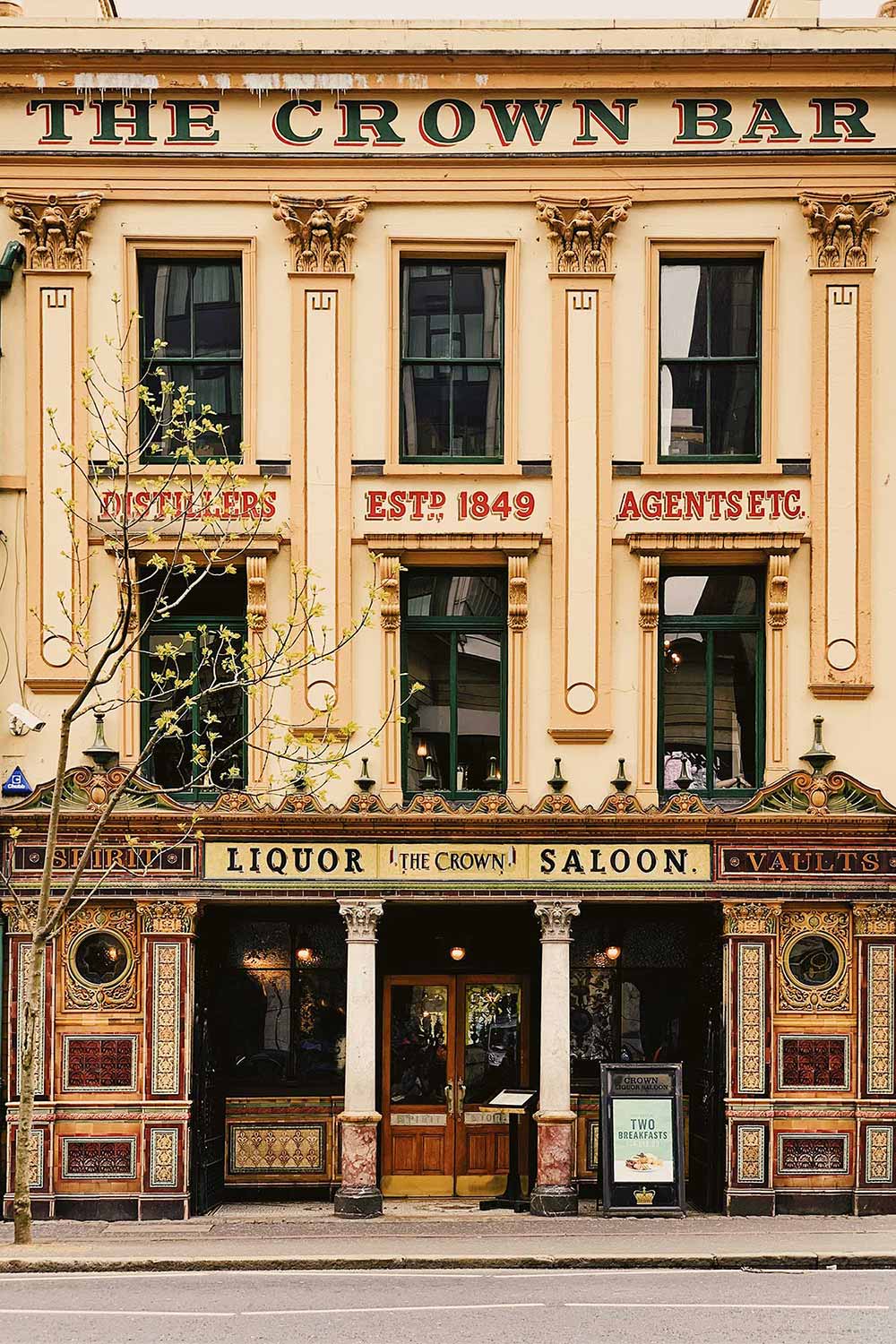
Visiting Belfast
“Everyone comes to see our disasters”, our taxi driver said, with a bemused grin.
After 3 incredible days in Belfast, we were leaving Northern Ireland and recounting all the great sights and activities we had done with our driver. We paused, awkwardly laughed and didn’t quite know what to say in response..
A second later we pulled up to Belfast Central Station and were off on our way. Still, his parting words stuck with us on the 3 hour ride back to Dublin.
ADVERTISEMENT
It’s true – every city has its touristy sights, but nearly all of Belfast’s revolve around troubled times and major conflicts. It’s part of what makes the city quite so fascinating.
For thirty years, all people knew of Belfast were its Troubles. Images of hunger strikes, bombs and ‘terrorists’ were all that were broadcast to the international media.
Before that, Belfast withstood the rise and fall of the Industrial Revolution, the launch and sinking of the Titanic, the division of Ireland, the global depression of the 30s and the Nazi bomb blitz in the 40s. So the city hasn’t had it easy.. to say the least.
But today, Belfast is booming. Large sections of the city have been re-developed, a burgeoning film industry (notably Game of Thrones) has changed the employment landscape and a swath of (affordable!) hip hotels and colorful bars have encouraged a sharp uptick in tourism numbers.
Personally, we couldn’t believe how interesting and modern the city was. While yes, most of our visits were to districts, museums and areas made famous by Belfast’s difficult past, it is the city’s unique and remarkable history that make it such a compelling place to visit.
Today we’re sharing a travel guide to Belfast, covering the top things to do in Northern Ireland’s capital!
Keep reading or save this article for later ⇟
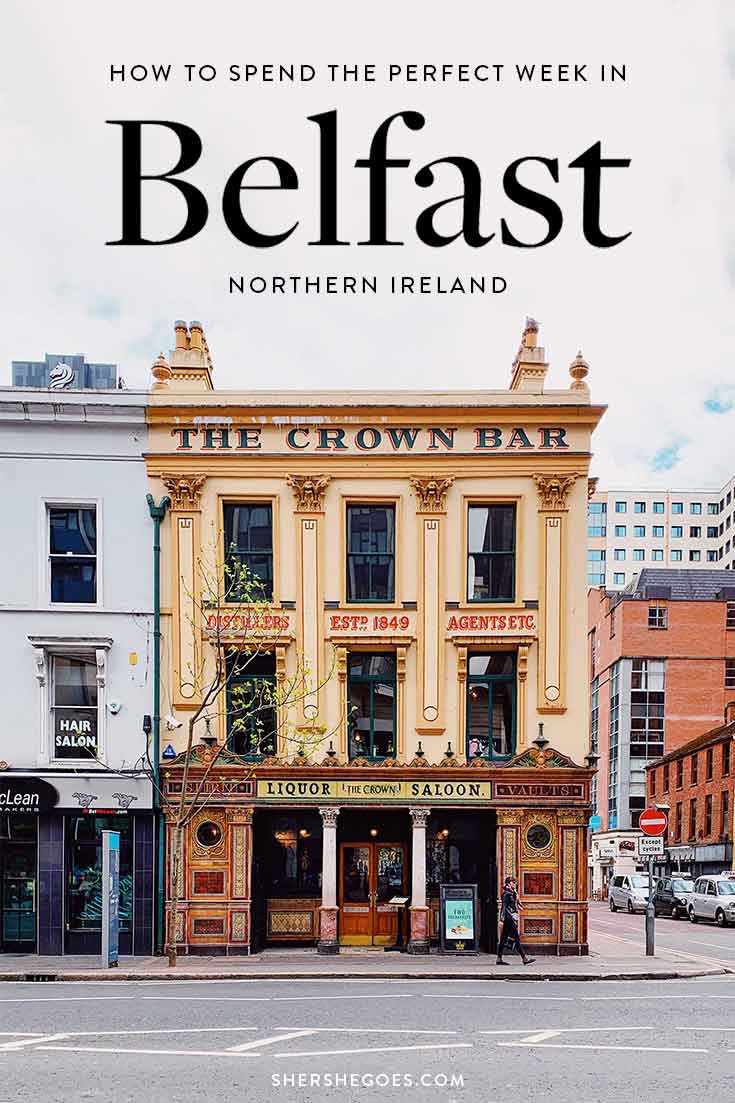
Belfast, Northern Ireland
Belfast has an infectious atmosphere. It feels slightly grittier and more working class than Dublin, with a toughness and vibrancy that make it feel comfortingly similar to New York.
The first thing we noticed upon arrival?
The accents – and how difficult it was for us to understand them! Belfast speech is a unique dialect of English, characterized by two major developments in its history.
First, the Plantation of Ulster in the 17th century where large numbers of Scottish Lowlanders settled in Northern Ireland and Scots Gaelic influenced the vernacular.
Second, the Industrial Revolution of the 19th century when large rural communities from provincial mid-Ulster moved to the city for work and Irish infused the local dialect.

Belfast Travel Guide
Despite our hearing issues, the people of Belfast are friendly and welcoming, happy to talk about the city’s change and current character. If you’re planning a trip to Belfast, we’ve got you covered. Today’s travel guide will cover everything you need to know about visiting Belfast.
Planning a Trip to Belfast
Keep reading for highlights of Belfast’s sights or jump right to a section below to start planning your trip.
Getting Around
- Where to Stay
- Sights & Things to Do
Day Trips from Belfast

Best Things to Do in Belfast
The city’s tourist sights are concentrated in a small area that make it easy to get around on foot, which I appreciated! No need to rent a car (unless you wish to) so it’s incredibly easy to enjoy the growing number of fantastic places to eat, drink and be entertained in Belfast!
We’ve organized the top sights of the city by Belfast neighborhoods:
- Titanic Quarter
- City Center
- Troubles Tour
Game of Thrones
- Cathedral Quarter
Queens Quarter
The titanic quarter.

1. Visit the Titanic Belfast
There are a couple Titanic museums in the world, but the Titanic Belfast is the world’s largest and the most prestigious (it was named the best tourist attraction in the world in 2016).
Regardless of whether or not you like museums, the Titanic Belfast is worth checking out! Inside, interactive exhibits across 6 floors (there’s even a small amusement park ride) tell the entire story of the ocean liner, from conception to construction, launch to sinking.
And naturally, the experience ends with an ode to the Titanic story in film, so you walk out with Celine Dion’s ‘My Heart Will Go On’ hypnotically replaying in your head for the rest of the day.
Book tickets in advance and budget ~3 hours or so for the moving experience.

2. Have Tea at the Titanic Hotel
The Titanic Belfast is a brand new building, with an exterior design meant to resemble the prow of 4 ships. But the actual site where Titanic and its sister ships were designed, built and launched is next door… at the Titanic Hotel .
The offices of ship manufacturer Harland and Wolff is today a gorgeous hotel . Even if you’re not staying here, stop in for a look. All the decor is ship themed, and the original drawing room where ships were designed is today the hotel bar!
From the upper floor, ship buyers could watch architects draw the ship plans right on the floorboards (hence the two story space, with huge arched windows to let in light) and the ballroom features a replica of the Titanic grand staircase.
If it’s a rainy day (as Belfast typically is), stop in for afternoon tea . The scones are delicious and gigantic. If it’s later in the day, have a drink!
We also had dinner at the fantastic hotel restaurant and particularly enjoyed the Jack & Rose cocktail , served in two glasses so that the ‘Rose’ drink is out of the water ;)

3. Tour the SS Nomadic
Tickets to the Titanic Belfast also include entry to the SS Nomadic , so why not stop in for a look?
Head to Hamilton Dock to see the last remaining White Star Line vessel, which has been fully restored to its original condition. You can step on board the SS Nomadic, walk the decks like a passenger on the Titanic maiden voyage and learn about 100 years of maritime history.
What we found most interesting was the difference in conditions between the class tickets.
The SS Nomadic was designed and built in Belfast. Its original purpose was to serve as the Titanic’s tender ship, ferrying first and second class passengers from the port of Cherbourg to the massive ocean liner (which was too large to dock in the French port).
After the fateful sinking, the SS Nomadic was requisitioned in both World Wars and then served as a floating restaurant in Paris in the 80s and 90s.
It was meant for the breaker’s yard until it was rescued in 2006, when it was brought to Belfast!

4. Visit the HMS Caroline
If you’re not exhausted of ships, there’s one more maritime attraction in Belfast’s Titanic Quarter: the HMS Caroline .
The United Kingdom’s last surviving Royal Navy Cruiser was painstakingly restored into a floating museum.
It’s got quite the unique story!
The HMS Caroline was the only survivor of the Battle of Jutland, the most significant naval battle in World War I. On board, you can explore the engine room, sick bay, mess deck and officer’s quarters and also watch a film dedicated to the ship’s most famous battles.

5. Spot the Iconic H+W Crane
Once you visit the Titanic Belfast, you’ll understand the significance of Harland and Wolff to the city of Belfast.
The company was one of the world’s greatest shipbuilders and a dominant employer during Belfast’s shipbuilding era. But by the late 1950’s, as demand for massive ocean liners slowed, both the company and the city had fallen on hard times.
So when Harland and Wolff built two yellow gantry cranes in the late 1960’s, it was seen as a sign of faith in the future for Belfast’s residents.
Today Belfast is no longer a shipbuilding city, and its docks have transformed from work sites to museum sights, but the cranes are land marked for posterity and have become iconic symbols of the city.
Spot the unique landmarks as you walk along Belfast’s waterfront and take a photo of the two sunny cranes, nicknamed Samson and Goliath.

6. Stroll the Waterfront & See the Big Fish
Belfast’s waterfront area is a relatively new developed area.
Walk along the waterfront on a sunny day to enjoy the view and stop by for a look at the Big Fish. The ceramic sculpture nearly 10 meters long was created by John Kindness.
From a distance, it looks like a giant blue fish, but up close, you’ll find that it’s actually made from individual ceramic tiles… decorated with text and images that illustrate the history of Belfast!
See if you can spot the Ulster Fry, the hearty and classic Belfast breakfast of choice :)
Belfast City Centre

7. Take a Walking Tour of Belfast
So, as we mentioned, one of the great things about Belfast is that the city sights are compact and the city is very walkable.
You can join a guided tour, use the hop-on, hop-off bus , or simply take your own walking tour of the city! Start at Belfast City Hall, which runs free public tours and is a great source of pride for the people of Belfast.
With beautiful stained glass windows and lots of interactive exhibits, we thought it was a great introduction to the history of the city.
Also right across the street is the tourism office, where you pick up brochures, book day trips + tours, or get some directions and advice.
From Belfast City Hall, you can visit the Titanic Memorial Garden outside and spot the first Glass of Thrones, which depicts Jon Snow.

8. Albert Memorial
From City Hall, make your way to the Cathedral Quarter and use Albert Memorial Clock to guide your direction.
Located on Queens Square, on the left bank of the River Lagan, the clock tower was built in the late 1860s in memory of Queen Victoria’s husband, Prince Albert.
It was Queen Victoria who granted Belfast city status.

9. Find the City’s Wall Art
As you walk around Belfast, you’ll find a TON of colorful murals.
Some are pure art, others are marketing for beer and restaurants…and many are political.
From para military images to glory slogans, you’ll find every type of wall art imaginable. In Belfast city center, most of the wall art is colorful and lighthearted.
If you’re interested in seeing more political messages, you’ll typically find those in local neighborhoods a bit outside town.
It’s a bit too far to walk to them, so the best way to see Belfast’s political murals is through a Black Taxi tour .
The Troubles

10. Join a Black Taxi Tour
Although it’s less obvious today, it’s simply inescapable that Belfast is a divided city.
As Rick Steves put it, only in Northern Ireland is a marriage between a Catholic and Protestant referred to as a ‘ mixed marriage ‘.
To better understand the political turmoil and past conflict, you’ll definitely want to join a Black Taxi tour . The cab drivers double as tour guides, and are a wealth of knowledge as they have first hand experiences of living through The Troubles.
On our tour, we were treated to a history of the city center, then drove out to Falls Road, Shankill Road and the most politically charged subsections of town.

11. Sign the Peace Wall
During the height of the troubles, the city erected Peace Lines – huge walled barricades to shut off Loyalist (Protestant) and Republican (Catholic) communities from each other. At night, the walls would be locked shut, in an effort to contain the violence.
Although the Good Friday Agreement brought an end to the Troubles in 1998, the Peace Lines never came down.
There are over 60 of these walls all around Belfast, stretching 34 kilometers long. It’s crazy to see them in person – they’re incredibly thick and tall brick walls, with barbed gates on top.
Graffiti-ed over, the Peace Lines now have visitor wishes etched on to them, in addition to political murals. On our Black Taxi tour we saw the barriers up close and couldn’t believe how isolating they were.
Supposedly, the Peace Walls are meant to come down (eventually), but in reality, who knows? Now that they’re a tourist attraction, they may never be dismantled.

12. Learn About Crumlin Road Gaol
Crumlin Road Gaol was a notorious jail in Belfast, originally built in 1850 to convey prisoners from the courthouse across the street…to behind bars and eventually the execution chamber.
But the old Victorian jail is most famous for housing Unionist and Republican terrorists . The prison cells have an incredibly fascinating history, with various escape attempts, 17 executions and even a Provisional IRA bombing which took place.
After 150 years, the prison closed in 1996 and today is mostly a museum. Oddly enough, it also doubles as a concert and wedding venue.
For regular tours, definitely book tickets in advance , as Crumlin Gaol is unexpectedly one of the most popular sights in Belfast (as voted by TripAdvisor reviews)!
If you’re feeling brave, you can book a Paranormal tour to see the spookiest sections and execution chamber. Crumlin Road Gaol is said to be one of the most haunted places in Belfast!

13. Explore C.S. Lewis Square
Did you know CS Lewis , the author of Narnia, was born in Belfast?
In fact, the Northern Ireland countryside inspired many of the places in The Lion, the Witch and the Wardrobe . The city created CS Lewis Square in East Belfast in commemoration, and there’s even a self guided trail you can take to find all the places which inspired the author.
We stopped by C.S. Lewis Square, which has 7 Narnia inspired sculptures, including Aslan the lion.
Don’t forget to stop by JACK Coffee Bar for an afternoon espresso – CS Lewis was known as ‘Jack’ to his friends and family.

14. Geek Out at the GOT Exhibition
“Game of Thrones…is basically Belfast,” said Isaac Hempstead Wright, the actor who plays Bran.
While the show has been filmed in exotic locations all over the world, one of the longest serving places has been Belfast and Northern Ireland, thanks to its rugged coast, historic castles and thick forests.
Almost anyone you meet in Belfast can recount either personal experience working with the show, or a friend who has worked on the show, so Belfast and Game of Thrones are inextricably linked.
If you love GOT, stop in to the Touring Exhibition which is open from April to September of 2019. It’s a moving pop up space that re-creates the amazing set of Westeros and Essos, displaying costumes, props and exhibits from filming. The sets are huge and there’s lots of interactive exhibits and photo opps too!
We really enjoyed checking out the Touring Exhibition – you can see a snippet of the exhibits on my Instagram stories under the Ireland highlight, if you want a peek inside.

15. Find the Glass of Thrones
To commemorate the epic fantasy series, Belfast created 6 giant stained glass windows, one for each episode of the last season.
Each installation is spaced out throughout Belfast, creating a Game of Thrones trail if you will. Take a walking tour to see the city, and make sure to take a selfie in front of each window!
It’s incredible seeing the glass stained windows up close – they’re vividly colored masterpieces, created by local artisans from Northern Ireland.
Each window depicts key moments from the show that relate to House Stark, House Lannister, House Baratheon, House Targaryen and the White Walkers.

16. Drink to the Game of Thrones Doors
The famous Kingsroad is a real life road of trees in Northern Ireland, locally called the Dark Hedges.
After the show aired, tourists and massive buses descended upon the road, weakening the trees’ roots. Storm Gertrude hit the coast and 2 of the massive trees actually blew over.
What did the country do with the felled wood?
They created a series of 10 beautifully intricate doors to celebrate the show! Each door was carved to show a piece of Season 6 and the doors were given to local businesses where the cast had spent significant time.
Go on a Journey to find all Game of Thrones doors – they’re spaced out across Northern Ireland near iconic filming locations, and found inside local pubs, cafes and inns, so why not take the chance to do a pub crawl while you’re at it?
Die hard fans can even pick up a passport book and at each Door location, the owners will happily stamp your book. It makes for a nice souvenir!

17. Visit Castle Ward aka Winterfell
One of the highlights in visiting Belfast is to take a Game of Thrones day trip to see the gothic mansion that was used as the set of Winterfell in the early seasons of the show.
The castle dates back to the 18th century and is set on a rolling hill in County Down, near the tranquil waters of Strangford Lough. It’s incredibly lush and beautiful to see in person. Walk through the Victorian Sunken Garden, canoe on the Lough or have afternoon tea on the grounds!
Game of Thrones fans can book a tour here to see the set of Winterfell in full glory. Not only do you get to dress up in Stark costumes , but each tour is led by an actor who was an extra on the Game of Thrones set.
You can also book extra activities, like archery and axe throwing. They even offer events, where actors will dress up as the White Walkers or bring the direwolves!

18. Day Trip to the Iron Islands
I told you Game of Thrones was big in Northern Ireland.
Ballintoy Harbor , on the northwest, was the set for the Iron Islands. Another optional tour from the same Game of Thrones tour company is this option, which combines local sights with GOT geekdom.
We took this all day tour and had a blast, visiting the Giant’s Causeway, Carrick-A-Rede rope bridge and rocky beaches of Ballintoy!
While you can also take a do-it-yourself approach to visiting each of these locations, Game of Thrones fans should book the tour. Like with the Winterfell tour, this tour is led by guides who appeared as extras on the show. The guides have the inside scoop about what it’s like to be a part of the huge HBO franchise and how everyday locations were utterly transformed for the show.
We even had the chance to dress up as House Greyjoy members, with Yara and Theon costumes. It was a highlight of our time in Belfast and definitely a tour that we recommend.
The Cathedral Quarter

19. Do a Pub Crawl
Belfast’s Cathedral Quarter is basically synomyous with nightlife.
The bars here are both fun and historic. Stop in to Duke for some live music and a pint of Guinness, or just to check out the Game of Throne door inside. Local Belfast band Snow Patrol used to play some of their early gigs here!
Explore the cobbled alleys and colorful murals along Commercial Street to find Muriels, a fabulous Gin bar that’s named after a woman who was originally a prostitute. The drinks are incredible and the decor is interesting to say the least!
If you want a meal before a night out, stop in to Coppi for an excellent Italian meal. They have great dishes like seafood pizza, goat pappardelle and of course, incredible wine and tiramisu.

20. Visit St Anne’s Cathedral
The most famous church in Belfast is St Anne’s Cathedral.
Built in stages on top of an older parish church, the current cathedral is a neo-Romanesque masterpiece. You can pay a fee to wander freely, or simply peek in to a cordoned off section for a free glance.
St Anne’s is atypical as it serves two separate dioceses and has the seats of two bishops: the Bishop of Connor and the Bishop of Down & Dromore.

21. See a Performance at the MAC
Right next to St Anne’s square is the Metropolitan Arts Centre of Belfast.
This theater has three galleries with a rotating program of free exhibitions, including dramas, music, art, dance…and everything in between! Sometimes you’ll even find roller disco and mind reading shows!
Culture lovers will definitely want to check out this wacky, weird and wonderful art center.
22. Buy Whiskey at The Friend at Hand
In the early 1900s, Belfast was a heavy industrial city – known for producing rope, ships, linen, tobacco…and whiskey.
At the height of the whiskey making boom, 10 of the largest distilleries were based around the city. While ship building and linen have largely disappeared, whiskey is kept alive at The Friend at Hand.
The whiskey shop doubles as a whiskey museum, with old whiskey paraphernalia, historic bottles of 100+ year old vintages…and over 200 whiskeys for sale!
The owners also sell their own label, a 13 year old single malt that’s only available at the store. The Irish Whiskey comes in 8 unique bottles, each with a pun-y name that references Belfast’s past (for example, Reconciliation and Pride Not Prejudice)
If you’re looking for a fantastic souvenir, this is the place to get one!

23. Have Dinner at the Merchant Hotel
One of the best restaurants in town is at the luxury Merchant Hotel .
We definitely recommend staying at the hotel, but if you only have time for a meal, pop in to the Great Room for an experience of a life time.
The restaurant is set in an old bank, with a giant dome, crystal chandelier and luxurious plush red couches. Both the food and cocktail menu here is extensive and delicious, and well worth treating yourself to.
In particular, we think the tasting menu is a good deal. 7 courses featuring dishes like seared scallops, halibut and beef, for 90 pounds.
It’s also an iconic spot for afternoon tea!

24. Experience the Ulster Museum
The Ulster Museum is perfect for any families visiting Belfast.
It’s got a kooky mix of everything inside – a history of Belfast’s industrial past, a real life Egyptian mummy, tons of artwork and even a ship from the Spanish Armada!
If you have kids, take them to see the dinosaur exhibit, which holds the only dinosaur bones that were ever found on the Emerald Isle.
On the top floor is a Game of Thrones tapestry, a huge long and intricate piece of fabric that illustrates key moments from the show.
Best of all, the Ulster Museum is free!

25. Spend an Afternoon in the Botanic Gardens
The Queen’s Quarter area is named after the gorgeous university.
Right in between the school building and the Ulster Museum is the peaceful Botanic Gardens. Originally built as a private park, it’s since been opened to the public and is definitely worth a walk through!
Right inside the main gate is a statue of Lord Kelvin, a Belfast born scientist who invented the Kelvin scale! Keep walking along the path and you’ll find the Palm House, a gorgeous glasshouse with exotic specimens.
There’s also a pretty gorgeous Rose Garden, bowling alley and Tropical Ravine, a huge brick greenhouse that holds a sunken garden, exotic plants and even tropical birds!
On sunny days, the Botanic Garden is the perfect place to spend an afternoon.

26. Take a Food Tour of St George’s Market
St. George’s Market is a local institution.
Built in 1896, the Victorian building is Ireland’s longest running market. It opens each week from Friday to Sunday, with antiques, books and clothes being sold on Friday.
On Saturdays, the vendors change to local food and drink producers. On Sundays, it’s a bit of a mix of both, with a variety of clothes, food and handmade crafts.
We opted to visit on Saturday, and booked the local Belfast Food Tour! It was a fantastic 4 hour tour where we discovered some of the best stalls and restaurants in Belfast. We tried Irish tea and coffee, fresh bread, beef and sausages from Armagh and then headed into the Cathedral Quarter for even more eats!
Skip breakfast and lunch, and book this tour instead. You’ll get a mix of 25 different local food and drink establishments, some incredibly popular spots and some off the beaten track!

27. Have a Drink at The Crown
Stop in at The Crown for a drink or two! This Victorian gin palace dates back to the late 1800s and is one of the most beautiful bars in the city.
Not only is the exterior ornate, but the interior is even better! There are wood carvings on the ceiling, colorful plaster work along the bar, and vintage booths with gas lamps inside.
The Crown Liquor Saloon was built by Italian craftsmen – coincidentally, the same workers who also built many of the city’s churches!
The bar is such an architectural masterpiece that Harry and Meghan visited it when they came to Belfast. Finally, the Crown is officially owned by Northern Ireland’s National Trust. So a drink here is basically equivalent to visiting a cultural institution… :)
Those are our top recommendations for sights and attractions in Belfast! If you have more time, here are a couple other things to do that came recommended.
28. Explore Cave hill Country Park
29. visit belfast castle, 30. spend a day at belfast zoo, 31. see an opera at the grand house opera, 32. explore the ulster folk musuem.

Getting In to Belfast
Belfast has two airports, the International terminal 19 miles from the city center, and George Best city airport, 3 miles from the city center. Check flight routes and set fare alerts here .
Belfast is connected to Liverpool and Cairnryan by the ferry company Stena Line. Or, you can take the train from Belfast to Larne and then take one of the P&O ferries
Belfast has 2 train stations . Rail service connects Belfast to the major cities of Dublin, Larne and Londonderry, with some regional stops in between. Check routes and book train tickets here .
Belfast to Dublin Train
Taking the train sounded easiest to us, so that’s what we did! The comfortable ride took approximately 3 hours and dropped us into Belfast’s Central Station, which was a short 10 minute cab ride from our hotel, the Europa .
Here are a couple tips for taking the train from Dublin to Belfast
- Buy online in advance to save as fares go up with time. Round trip train fare ran us about 40 euro on our spring trip.
- Hold on to your ticket since you will need the same piece of paper for each leg of the trip.
- If you book in advance you can reserve seats . Most train cars have seats of 4 that face each other with a table in between and a smattering of seats of 2 without a table.
- There’s a luggage rack at one end that will fit even the largest suitcases and at the other end of the car, some empty space where you can also store bags.
- A snack cart will ride through offering drinks and small food bites for sale. There’s even free wifi on board and plenty of electrical outlets!
If you self drive, the route will be faster, but overall the train is a great comfortable and affordable ride for those who don’t wish to rent a car.
Renting a Car in Northern Ireland
You don’t need a car to explore the city of Belfast itself. The downtown portion of the city is quite compact and walkable, and there’s plenty of cabs if you need one.
But if you want to get out of the city, you’ll need a car!
A popular road trip in Northern Ireland includes Belfast, the Antrim Coast, Londonderry, and Carrickfergus. It’s the perfect road trip for those who love dramatic scenic landscapes and history, as there’s some gorgeous rock formations and coastlines to see, plus other cities that were part of The Troubles.
We took a couple day trips to see the Giant’s Causeway, which was fantastic!
I’ve found that car rental rates in Ireland depend on the season. In peak summer tourist season, rates can be incredibly expensive, but bottom out to very affordable rates in spring and fall.
I always recommend Auto Europe when searching for rental cars.
It not only has affordable rates, but it aggregates all the individual car rental companies like Alamo , Enterprise , Hertz , National , Dollar , Sixt , Thrifty and Budget together, so you can price compare. It saves a lot of time rather than searching them each individually!
Check car rental rates for your trip here .

If you choose a hotel in the city center, you can easily get around to most sights in Belfast on foot. Or, you can hail a cab and even pre-arrange for a drive.
We took advantage of Uber on rainy days and spent one afternoon on a Black Cab tour of the city which was fantastic.
The Emerald Isle is split in two, with the south recognized as the independent Republic of Ireland. Meanwhile, Northern Ireland is part of the United Kingdom. Like England, Scotland and Wales, Northern Ireland uses the £ sterling so make sure to bring pounds to Belfast!
The city does not use the Euro and you’ll find few stores willing to accept it. You can use credit cards however – bring Mastercard or Visa.
Don’t forget to pick up a copy of Rick Steves’ Ireland guide for your trip. I found his guidebook to be quite helpful for visiting Ireland!
Where to Stay in Belfast
Choose a hotel in the City Center, to be within walking distance of all the main sites. For a breakdown of Belfast’s different neighborhoods, read our guide to the city’s best hotels here . Or, check last minute hotel deals here .
We recommend spending at least 2 nights in Belfast. If you want to explore some of the popular day trips outside the city, like exploring the Giant’s Causeway, Carrick-a-Rede Bridge and Dunluce castle, then opt for 3 nights.
We stayed at The Europa , perhaps the most historic hotel in town. The luxury hotel has hosted various American presidents and world leaders…and also has the unique distinction of being the most bombed hotel in the world, during the time of the Troubles. Rooms are comfortable, spacious and affordable. Breakfast is included and there’s free wifi!
Book: Hotels.com , Booking.com
Check prices: TripAdvisor
We did a couple day trips from Belfast and LOVED them, so hopefully you have time to do the same! The Antrim coastline of Northern Ireland is incredibly scenic, with gorgeous beaches, romantic castle ruins and epic basalt cliffs.
There’s also the town of Derry, or Londonderry, one of the walled cities of Northern Ireland, and the Causeway Coastal Route for those who want to take a road trip.
Don’t have a car? No worries!
We didn’t either and instead booked a couple day trips to see the highlights. Here are the ones we recommend:
Giant’s Causeway & Game of Thrones
This incredibly popular tour is for Game of Thrones fans who also want to see the local sights. Think of it as part fandom, part ‘best of’ Northern Ireland.
On an exhaustive all day trip, it drives to all the top sights of the Antrim coast : Giant’s Causeway, Carrick-A-Rede rope bridge, Dunluce Castle and the Dark Hedges! We loved it and felt like it checked all the highlights in a short amount of time!
Check availability here .
Belfast to Derry Day Trip
This phenomenal day trip is for those who are interested in The Troubles. Like Belfast, Londonderry was a city divided.
Take a day trip to learn about Bloody Sunday, see the old town walls and learn about both sides of the political conflict. Derry is also a very cute, compact city to explore!
Northern Ireland Highlights Tour
If you want to see as much as possible in 1 day, book this excellent tour of the Antrim Coast. Unlike the more popular tours, this one is a private small group option , so you can see the scenic beauty of the coast…all to yourself.
Visit Carrickfergus Castle, Glenarm Castle, Carnlough Library, Glenariff Forest Park (which inspired CS Lewis to create Narnia) and more.
If we were to revisit Northern Ireland, we’d opt for this tour! It includes a ton of local sights that are off the beaten path, which most don’t see.
Game of Thrones Iron Islands
For die hard Game of Thrones fans, you won’t want to skip this tour . Led by guides who were extras on the series, it takes you on an inside look at the production of the show.
It’s an all-day tour, and includes filming locations like the Iron Islands – where you can even dress up in Greyjoy costumes!
Game of Thrones Winterfell
So many places throughout Northern Ireland were used as filming locations on the show. If you head west, you can see the Iron Islands, but if you head southeast, you’ll visit Castle Ward , the location used as Winterfell in the early seasons of the show.
On this tour, you also get to dress up (but in Stark costumes ), meet the dire wolves and hear about filming from guides who were extras on the series.
And that’s our guide to Belfast! What are you most looking forward to doing?
Essential Tips for Visiting Northern Ireland
Getting In | Belfast is located in Northern Ireland, and part of the United Kingdom. Although there’s no hard border between Ireland and Northern Ireland , they do have different governments and use different currencies. If you’re in Europe, you could easily fly into Belfast. Set a fare alert and check flight routes here .
If you’re already in Ireland or the UK, the train is a great option! We didn’t feel like renting a car for this trip, so we took advantage of the comfortable and convenient 3 hour train from Dublin to Belfast. Just book train tickets ahead of time to save.
Where to Stay | Base yourself in Belfast for at least 2 nights to fully soak in the city. Stay downtown in the city center to be within walking distance of the major sights. Or, take advantage of Airbnb for a local experience!
Protect | Lastly, be sure to visit Ireland with travel insurance . Whether you get injured and need to be hospitalized, your phone gets stolen, or a flight delay leaves you with nothing but the clothes on your back, travel insurance will help when you need it most.
The Emerald Isle is prone to storms – Hurricane Ophelia hit on our first trip to Ireland and Storm Hannah on our second trip so pack solid rain gear and get travel insurance. You can get a quote for your trip here .
You Might Also Enjoy:
Northern Ireland Vacation Planning Articles
What to Wear in Ireland
Republic of Ireland
What to Know Before Visiting Ireland (+Travel Tips)
The Perfect Ireland Itinerary + Road Trip
The Most Beautiful Places in Ireland
How to Master Driving in Ireland (as a tourist!)
7 Useful Tips for Renting a Car in Ireland
Where to Stay: 10 Enchanting Irish Castle Hotels
For Foodies: All the Best Food We Ate in Ireland
Follow me @Sher She Goes on
Youtube | Tiktok | Instagram
You may also enjoy:
21 copenhagen museums that show the unique beauty …, santa barbara itinerary: how to spend 3 days …, pulling the plug: our digital detox in …, the grand palace in bangkok.
- Pingback: Where to Stay in Belfast as a First Time Visitor
Leave a Reply Cancel reply
- 1.1 Visitor Information
- 2.1.1 George Best Belfast City Airport
- 2.1.2 Belfast International Airport
- 2.1.3 From Dublin
- 2.2 By train
- 2.5 By boat
- 3.2 By Black Taxi
- 3.3 By conventional taxi
- 3.4 By bicycle
- 4.1 Central
- 4.4 Titanic Quarter and East
- 5.1 Theatre and film
- 7.1.1 Multiple locations
- 7.1.2 City centre
- 7.1.3 Adelaide
- 7.1.4 Botanic
- 7.2 Mid-range
- 7.3 Splurge
- 8.1 Central
- 9.2 Mid-range
- 9.3 Splurge
- 10 Stay safe
- 11.1 Consulates
Belfast ( Irish : Béal Feirste ) is the capital and largest city of Northern Ireland . Historically most of it lay in County Antrim west of the River Lagan, with about a third on the east bank in County Down , but it's always been governed as a separate metropolis, with a population in 2020 of about 630,000. It's had a troubled history but is nowadays safe to visit and has the best-developed visitor facilities in Northern Ireland. And its situation means that Belfast can confidently claim to be the most fascinating city in both the United Kingdom and on the island of Ireland.

This noble city is named for a mud bank and is built upon sludge. The lower River Lagan is tidal and receives a dozen small tributaries (nowadays culverted) which drop their silt, forming banks of sand and mud. The lowest point at which you could ford the river at low tide is where the Lagan road bridge now crosses, and in Irish this is Béal Feirste , "river-mouth of the sand-bank ford". The tributary joining at that point, the Farset, is likewise named for the mud bank, not vice versa. And besides the man-made channels and culverts, a great volume of water seeps through the alluvial silt on both sides of the Lagan. It's a slimy, thixotropic impediment to building — clay dug out of a trench quickly feels homesick and slides back in — and a deterrent to high-rise; but Paris grew up on similar foundations.
Pre-industrial Belfast was a small provincial place. It grew rapidly in the 18th century with the linen trade, and in the 19th with smokestack industry, especially ship-building along the estuary. It sucked in labour, including Catholics moving off the land. In 1921 Ireland was divided: Dublin and the Republic fell behind economically, while Belfast found itself the capital city of Northern Ireland and, after the Depression, busily tooling up to fight the Second World War.
It slumped in the late 20th century as textiles and smokestack industries were lost to foreign competition. Tension rose between factions and communities, the Catholic minority faced blatant discrimination in many aspects of their lives, and both sides had a 200-year old tradition of paramilitary thuggery, which escalated. All of Northern Ireland, but especially Belfast, then suffered a notorious 30 years of "The Troubles" from 1969. Civilian rule broke down and the British Army was heavily deployed to keep order; they too became targets of violence. Riots, shootings and bombings were the daily grist of the newsreels. Barriers, checkpoints and armoured vehicles marked the junctions, helicopters throp-throp-thropped over a scarred, smoke-blackened city.
By the 1990s all sides were war-weary, and a confluence of political drives within Northern Ireland and externally from Britain, Ireland, the European Union and the USA led to the 1998 "Good Friday Agreement". There had been so many short-lived ceasefires and peace initiatives, and the Omagh bombing suggested that the GFA might be yet another - yet for the most part this one stuck. Cautiously the city de-militarised and normalised, though the "Peace Walls" to separate warring communities still stand. Hotels, pubs and other visitor amenities re-opened, and the city's Victorian and Edwardian heritage re-emerged. There was some mileage in "Troubles Tourism" but the final ingredient that Belfast needed was a new story to tell of itself with pride. This it received in 2012 with the opening of the Titanic Quarter east of the river.
Visitor Information
- Visit Belfast , 9 Donegall Square North BT1 5GB ( facing City Hall ), ☏ +44 28 9024 6609 . M-Sa 9AM-5:30PM, Su 11AM-4PM . They can book accommodation and tours, recommend itineraries and places of interest and sell you tacky souvenirs. ( updated Sep 2020 )

George Best Belfast City Airport
Between BHD and city centre: Bus 600 runs every 30 min from the airport to Queens Square, Victoria Square, Wellington Place and Europa bus station. It runs 6AM-10PM daily, taking less than 15 min, adult single fare is £2.60. Taxis might cost £11 to most parts of the city, but check at the outset whether the fare you're quoted includes the £2.50 airport supplement, or the taxi driver may try to add it on when you arrive.
Elsewhere: Sydenham railway station is 1 km southwest of the terminal and there's a free shuttle bus (or walk), enquire at the info desk. (It's walkable, the difficulty is in crossing the busy A2.) Sydenham is on the railway line from Portadown via Lurgan , Lisburn , a dozen stops downtown including Great Victoria Street, then west from Sydenham to Bangor on the coast. Trains run 6AM-11PM every 30 min (but hourly on Sundays), adult fare £2 to the city and £4.70 to Bangor. So you can use it instead of Bus 600 to reach city centre for a small saving but the main advantage is to reach south-side locations (e.g. Botanic, for Queens University) for a single flat fare.
Belfast International Airport
Between BFS and Belfast: Ulsterbus 300 runs every 30 min daily from the airport via Templepatrick and Queen St to Europa bus station, taking just under an hour. The last bus from airport to city is towards 10PM and the first bus out from the city is at 5:30AM. Adult fare is £8 single, £11.50 return (cash, prebooked tickets, or Translink cards only, no credit/debit cards). Taxis might cost £40 to Belfast city centre.
Elsewhere: Ulsterbus 109A runs every hour to nearby Antrim town, which is on the railway to Ballymena, Coleraine, Portrush and Derry. Those passengers can buy a £2 Airlink supplement to their rail ticket to include the bus, which can be bought at the Visit Belfast booth in arrivals or on the bus (coins or banknotes only no cards ). Antrim bus station and train station are beside one another; platform 1 is for Derry and Portrush, while platform 2 over the footbridge is for Belfast. Lisburn is on the railway from Bangor and Belfast to Lurgan and Portadown. You might also travel that way to reach south-side Belfast, but it's much slower for little saving compared to the 300 bus.
From Dublin
Dublin Airport ( DUB IATA ) is often a good way to reach Belfast, with excellent flight connections from the UK and Europe, many by budget carriers. Its big advantage is direct flights from North America (with US pre-border clearance on return) and from the Gulf (e.g. connections from Australia) - and the full-fare carriers handle connections much better than the budget carriers. Dublin airport is also some miles north of Dublin city, so by rental car you turn straight onto the motorway north, 100 miles (160 km) to Belfast. Hourly buses from Dublin Busáras call at the airport then take two hours to Belfast Europa station. Operators are Ulsterbus , Bus Éireann and Aircoach , so there's price competition. Don't take the train as this involves doubling back via Connolly station in central Dublin. And don't have any truck with the taxis hanging around the airport bus stop. One other wrinkle is, don't change money here (though it's a decent rate) as you'll get euros, use your bank card to pay for transport then buy pound sterling in Northern Ireland.
The Enterprise Train runs from Dublin Connolly station via Drogheda , Dundalk , Newry and Portadown to 54.595 -5.917 3 Belfast Lanyon Place , taking just over two hours, with eight M-Sa and five on Sunday. It doesn't serve Dublin Airport, or Belfast Great Victoria Street station which is next to the main bus station - change at Portadown for this and other suburban stations to Bangor.
Lanyon Place used to be called Central Station, but it's half a mile (800 m) east of the centre, and a 20-min walk to Europa / GVS station. It's close to the Courts, the Waterfront Hall and bus stops towards east Belfast.
Great Victoria Street Station is in the city centre on the street of that name. If you are heading for the centre this is more convenient than Lanyon Place. GVS is in the same building as Europa Bus Centre which has regular buses across Northern Ireland and from Dublin city centre and airport.
Other trains stop at several city stations:
- hourly from Derry via Castlerock , Coleraine , Ballymena and Antrim (for Belfast International Airport) to Lanyon Place and Great Victoria Street.
- every 30 min from Portadown via Lisburn and a dozen city stations, to Sydenham (for Belfast City Airport) and Bangor .
- hourly from Larne via Carrickfergus and Whiteabbey (for Newtownabbey ) to Lanyon Place and Great Victoria Street.
Translink is the rail and bus operator across Northern Ireland. Check their website for timetables, fares and ticket purchase.
Buses run hourly from Dublin Busáras and airport to Belfast Europa station, taking 2 hr 20 min, adult fare €20 single and €30 return. Operators are Ulsterbus , Bus Éireann and Aircoach , so there's price competition. Day-trip excursions from Dublin also visit Belfast.
Citylink / Ulsterbus 923 runs 2-3 times a day from Glasgow via Ayr to the Cairnryan ferry for Belfast. The buses don't join the ferry so you have to lump your luggage off to board, then onto the waiting bus at the other end.
National Express normally runs daily from London Victoria and Manchester to Cairnryan, but as of 2022 this remains suspended, and they send you to Glasgow to join the Citylink.
A cross-border Ulsterbus plies from Cavan and Monaghan via Armagh , running four times a day. From Donegal, change in Derry; from Galway, Limerick or Cork, change in Dublin.
Bus routes across Northern Ireland radiate from Belfast, with the hourly bus from Derry taking 2 hours.
54.594 -5.937 4 Europa bus station is the transport hub, enter on the north side via Glengall St. It's next to Great Victoria Street railway station which has local trains, but not the Enterprise Train from Dublin. All inter-town buses run to Europa, except those from Bangor and Newtownards to the east: they terminate at Laganside, see below.
Belfast is the focus of the road network in Northern Ireland, and has good links to the Republic. The main roads are well-maintained and patrolled, your main task is to avoid rush hours.
From Dublin follow M1 / N1 / A1; there's a toll at Drogheda (€1.90 for a car). There are no checks at the border, all you'll see are signs that speed limits are in miles per hour.
Car rental: all the major companies have desks at Belfast City Airport, International Airport, and central Belfast (though in 2020 some city centre offices are closed). Their fleets are small so best book in advance. You should be able to hire from any of the above locations and return to any for no additional charge, but a one-way rental from Dublin to Belfast (or vice versa) will cost plenty. Check that a Dublin-to-Dublin rental is insured for Northern Ireland.
Park and Ride if you're only visiting for the day. There are four sites, all free, you just pay the normal bus fare. They close around 7PM which rules out evening use. They're at:
- Sprucefield, M1 junction 8, near Lisburn , for bus 651
- Black's Road, M1 junction 3, for bus 650
- Cairnshill, A24 Saintfield Rd, for bus 652
- Dundonald, A20 Upper Newtownards Rd, for buses G1 and 655

Foot passengers should always look for through-tickets by bus, train and ferry. They are considerably cheaper than separate tickets, and they take care of the connection between city and ferry port, which can be the trickiest part of the journey.
In 2021 the ferries are plying the equivalent of a winter service until further notice.
- From Cairnryan near Stranraer in Scotland, Stena Line sail a fast catamaran five times a day taking 2 hr 15 min. P&O also sail from Cairnryan to Larne.
- From Birkenhead across the Mersey from Liverpool, Stena sail daily, 8 hours. Cabins and meals are available.
- From Douglas, Isle of Man , IOM Steam Packet sails to Belfast 4 days a week, taking just under 3 hr.
You can also sail to Dublin from Birkenhead, Holyhead, Isle of Man, Cherbourg, Rotterdam and Zeebrugge. The Holyhead-Dublin route is usually the most convenient from England. There are no direct ferries to Northern Ireland from the Continent and it may be easier to sail into Rosslare or Dublin rather than trundle across Great Britain. Dublin port is connected by tunnel to the motorway north, so you're quickly on your way and not snarled in central Dublin traffic.
54.63 -5.895 5 Belfast ferry terminal is at the foot of Dargan Road, 3 miles northeast of city centre. Bus 96 meets some sailings and runs to Upper Queens Street, a short block away from Europa bus station; adult fare £2.10. Otherwise a taxi to the centre might be £10. Motorists should head west on Dargan Road to join M2.

Walk to all the central sights. The centre is within a mile or two of the Botanic Gardens, Queen's University and Titanic.
Belfast buses are run by Translink , a public corporation - check their website for timetables and fare deals such as day tickets. A single adult fare within city centre is £1.60 in 2020. There are three types of buses, which run from around 6AM to 11PM; there are no night buses.
- Metro are pink. Buy on board if you don't have a card.
- Glider is a long purple bendy-bus, and for these you must buy your ticket before boarding from the machine at the stop. There are two Glider routes: G1 crosstown from Stewartstown Road and Falls Road in the west to Newtownards Road east, for Stormont and Ulster Hospital; and G2 from city centre to the Titanic area.
- Ulsterbuses are blue and run to the outlying towns but you can use them for city travel, e.g. the bus for Lisburn to reach the Botanic Garden.
Almost all Ulsterbuses run from Europa bus station; the Metro and Glider buses don't go in there.
54.6 -5.923 6 Laganside Buscentre by the river weir is the terminus for buses from Bangor, Holywood, Newtownards and the Ards peninsula. It's also a hub for the Metro buses, but you normally just board those on the street.
By Black Taxi
The Black Taxi is Belfast's equivalent to the dolmuş or marshrutka - they're shared taxis running over a fixed route for a fare similar to the bus. They mostly pick up and drop off at the bus stops but will stop anywhere that traffic allows along the routes, which connect the centre and the outlying housing estates.
The Black Taxis came about in the 1970s when it became difficult for buses to run. Especially in west Belfast, there were terrorist attacks against buses, passengers and staff, and roads or whole districts might be blocked off by riots or makeshift barricades. The worst attack was on 21 July 1972, "Bloody Friday", when the Provisional Irish Republican Army planted 24 bombs against the city transport system. Twenty exploded; nine people were killed and 130 were injured. Oxford St bus station was the worst hit, and bombs also went off at Smithfield bus station, three railway stations, the ferry terminal, a truck depot, a taxi firm, and several bridges and filling stations. This deepened the spiral of violence and among the many repercussions, it left the outlying districts without a bus service.
Individuals then bought up traditional London black hackney cabs and brought them to Belfast; this became an organised community initiative, and small businesses were formed. Belfast Taxis CIC emerged as the leading operator and are still plying routes. They've operated now for 50 years though the Black Taxis were suspended in summer 2020 because of Covid-19. Dolmuş literally means "stuffed full" and an old joke asks how many passengers can you fit in? Answer: "Mmm, maybe another two?" In autumn the taxis resumed with much reduced capacity and other anti-Covid measures, but this makes them non-viable unless they hike their fares. Meanwhile the buses are running and benefit from public subsidy, schools contracts, concessionary fares, greater safe capacity and so on. So it's not clear what the future holds for Black Taxis: ask around for which routes are running, and with what hours and frequency.
The Black Taxis are also comparable to the tuk-tuk or rickshaw, as a piece of cultural history. They're used for organised tours, especially of west Belfast - see "Do".
By conventional taxi
Standard taxi operators include Fonacab ☏ +44 28 9033 3333 , Value Cabs ☏ +44 28 9080 9080 , and Castle Cabs ☏ +44 28 9024 1111 .
Uber is available in Belfast. In Sept 2020 they quoted around £10 for downtown rides including City Airport.
Belfast Bikes , the public bike hire scheme operated by Nextbike, has 40 rental stations. You need to register once and pay either £6 for a 3-day membership or £25 for a year. This gives you free bike rides for 30 min. Rentals up to 1 hour cost £0.50, then £1/hr to four hours, thereafter £2/hr, an incentive to release the bike between trips. The maximum rental is 24 hours then you're stung for a £120 late-return penalty. You can only rent bikes between 6AM-midnight, but you can return them at any time.
Belfast city centre is focused on Donegall Square and Belfast City Hall. The main thoroughfare north from the square is Donegall Place, a retail street leading to the Cathedral. The centre is bounded to the east by the River Lagan, to the south by Donegall Pass, and to the west by the convenient but ugly dual carriageway Westlink. The centre is safe enough at all hours but falls very quiet after 8PM.
- The Crown is the gorgeous Victorian pub that greets arrivals emerging from the bus station. It's owned by the National Trust, see Drink for hours etc, but it's worth looking in even you don't intend a drink. Aw go on, maybe just a quick one then.
- Linen Hall Library is north side of the square facing City Hall. Amongst others, it has a huge collection of Irish books. It's open M-F 09:30-17:30.
- St Malachy's Church is Roman Catholic, opened in 1844. It has a Tudor Revival exterior but what's most remarkable is the elaborate fan-vaulted interior, likened to "a wedding cake turned inside out". It's on Alfred St at the corner of Clarence St, two blocks south of City Hall.

- 54.5974 -5.9231 5 The Legal Quarter is the block between Victoria shopping centre and the river, with the courts and other legal buildings. You can't go inside them unless you're already in trouble, but the exteriors are interesting. Good examples are the former town hall (now a court house), the Royal Courts of Justice, and the Bar Library.
This starts with a commercial area along Bedford St and a loyalist neighbourhood on Donegall Pass. Then south of Shaftesbury Square you come into the student quarter around Queen's University. A retail-and-pizza strip straggles along Lisburn Road while the rest is leafy streets and student accommodation. It's the most affluent part of the city, often referred to by its postcode BT9, and generally safe at all hours apart from the occasional aggressive drunk. Buses 8a,b,c,d run to this area from the centre, plus Ulsterbus 22 / 24 towards Lisburn .
- Golden Mile is the ironic name for the strip from Europa bus station south through Shaftesbury Square to Queen's University. It's more for retail and bars than sight-seeing, and the only gold deposits you see on the pavements are upchucks of turmeric-stained rice.
- 54.5845 -5.93513 7 Queen's University , University Rd ( bus as above ), ☏ +44 28 9097 5252 . Visitor Centre M-F 8:30AM-5PM . August red-brick Victorian building in Tudor style modelled on Magdalen College, Oxford, with extensive grounds. On University Square note the fine Union Theological College: the Northern Ireland Parliament spent its early years here until Stormont was ready in 1932. ( updated Sep 2020 )
- Naughton Gallery is on the first floor of the QUB Lanyon Building. There's a large permanent collection of University artwork plus rotating exhibitions, mostly modern. It's open Tu-Sa 11AM-4PM, free.
- 54.582 -5.933 8 Botanic Gardens ( Multiple access points, main entrance is off University Rd by the museum ). Daily 07:30-dusk . Established in 1828 and becoming a public park from 1895, this is an extensive leafy green space, popular with office workers and students from nearby QUB. The Palm House, completed in 1840, is an elegant cast-iron glasshouse by Lanyon and Turner (who went on to build similar glasshouses at Kew, London and Glasnevin, Dublin) with a cool and a tropical section. Near it is the Tropical Ravine House, where visitors walk around a raised balcony observing tropical flora and fauna. There are also extensive lawns, a herbaceous border as long as the Zambezi, a rose garden and woodlands. Presiding over the main entrance is Lord Kelvin, who famously declared that X-rays are a hoax and that heavier-than-air aviation is impossible, but he earned his peerage and statue here for opposing Irish Home Rule. Free . ( updated Sep 2020 )
- Further south the city breaks up into parklands and golf courses along the Lagan valley towards Lisburn . Minnowburn is an attractive section upstream of the A55 bridge.
- 54.553 -5.958 11 Malone House is a Georgian mansion edge-of-city that's primarily an events venue, but you can see the art collection and stroll the extensive grounds and sculpture park.
- 54.541 -5.983 12 Sir Thomas and Lady Dixon Park is a large park by the river at the south edge of the city. The big attraction is the extensive Rose Garden.
- 54.54 -5.95 13 Giant's Ring is a Neolithic earthwork 200 yards in diameter with a dolmen in the centre.
- 54.561 -5.888 14 Lisnabreeny is a woodland walk, passing a memorial at the temporary graveyard for US servicemen, up to a Rath - an ancient hillfort, now just grazing land.

This area suffered the worst of the Troubles in Belfast. It was - and remains - the largest example of an "interface area" where a Protestant/unionist/British-loyalist community lives alongside a Catholic/nationalist/Irish-republican community: the former to the north along Shankhill Rd and Crumlin Rd, the latter south along Falls Rd. Most sights of interest relate to that conflict.
- 54.6 -5.955 16 Peace Wall : these are found in several places across Northern Ireland, but especially in West Belfast, and this one along Cupar Way is a good example. Walls were built from 1969 as civil unrest grew, and they became ever longer, sturdier, and higher to prevent bombs and bricks being hurled over. They continued growing after the 1998 Good Friday Agreement: both communities felt safer that way, and the Omagh bombing showed that murderous splinter groups remained active. There are several gates in the wall, open in daytime (and safe to visit) but closed by dusk. There is agreement in principle to remove all the walls by 2023, but this ideal prompts deep intakes of breath and slow sad head-shaking by residents.
- Political Murals are likewise found in many places but especially in the interface areas. They're mostly seen on gable walls of buildings along the Shankhill Rd and Falls Rd, reflecting local allegiances. They come and go with political events, ask around if there are any out-of-the-way examples worth tracking down.
- Divis Tower is the dreary high-rise block of flats at the start of Falls Road. It's named for the hill seen to the west, and is the last survivor of 12 blocks built here in the 1960s. Divis Tower was mired in the Troubles: in 1969 a 9-year old boy was killed when an army patrol machine-gunned the Tower in the approximate direction of a sniper. Like Divis hill, the top floors of the tower became an army lookout, with troops helicoptered in and out since they didn't dare venture into the lifts and stairwells. Nor should you. The space was refurbished as flats in 2009, but it's people's homes not a zoo or museum.
- 54.5922 -5.9612 18 Cultúrlann McAdam Ó Fiaich ( Irish Language Cultural Centre ), 216 Falls Road BT12 6AH , ☏ +44 28 9096 4180 . M-Th 9AM-6PM, F Sa 9AM-9PM, Su 11AM-4PM . The hub of Irish language activities in Belfast. An Chultúrlann (for short) is a cultural centre with visitor information, art, trad music, a cafe and a bookshop. They put on regular Irish language classes, from beginners to advanced. ( updated Sep 2020 )
- Falls Park is the large green space just south of City Cemetery and north of Milltown Cemetery. Buses 10a-h run this way.
- 54.607 -6.009 19 Divis is the basalt crag and moorland west of the city, rising to 1568 ft / 478 m. It was long a military area, for training, telecoms and lookout, but in 2005 was handed over to the National Trust. It's easiest approached by the lane from the car park on Divis Road to the southwest.
Three large cemeteries demonstrate different aspects of Belfast's history: City Cemetery, Milltown, and Balmoral. While Balmoral may only be of interest if you are researching ancestors, the other two, especially Milltown, are worth a visit.

Titanic Quarter and East

East Belfast is mainly residential, traditionally Protestant, bounded to the west by the river and A24. The inner parts are terraced housing, further out are leafy suburbs. Its northern part along the riverbank had the shipyards, and remains industrial. But in 2012 the area was revitalised and re-branded by the opening of the Titanic Exhibition.
- 54.6081 -5.91002 23 Titanic Belfast , 1 Olympic Way, Queens Road BT3 9EP , ☏ +44 28 9076 6386 . Daily 10AM-4:30PM . For a century this was the "T-word" in Belfast, even more than the Troubles, an unwelcome reminder of a catastrophe reflecting badly on the city. This exhibition, opened in 2012 in a striking modern building, has revitalised a whole city quarter and rescued RMS Titanic as a source of local pride, for its construction and its crew. You progress through the metal-bashing boomtown of Victorian and Edwardian Belfast, through the design, construction by Harland & Wolff, fitting out and test sailings, to events of the first and final voyage. Titanic left Southampton on 10 April 1912, picked up passengers by tender from Cherbourg and Cork, and sailed out into the Atlantic. She left behind a confident Britain that daily expected news of Captain Scott's triumphant return from the South Pole. They show excerpts from films about her sinking, gashed by an iceberg that calved from a Greenland glacier about the same day the ship was launched. One myth that is nixed is the 1997 James Cameron film treatment, where patrician British officers near-as-dammit hold the Irish 3rd-class passengers' heads underwater while the gilded rich are helped to safety and the band plays on. In truth one group had an even worse survival rate than 3rd class, and that was the ship's crew, many of them Irish. The final part of the exhibition has submersible images of the wreck, which lies in two pieces 12,500 ft / 3800 m deep off Newfoundland. Adult £19, child £8.50, conc £15.50 . ( updated Sep 2020 )
- The Great Light is a navigation light on the quayside behind the Titanic Exhibition, distinctly over-engineered for its purpose. It's two huge Fresnel Hyper-Radial first-order lens made in 1887 for Tory Island lighthouse off Donegal. In the 1920s they were re-cycled as a repair for Mew Island lighthouse at the entrance to Belfast Lough, and remained lit until 2014 when they were replaced by an LED. They're now housed here in a glass obelisk, looking like two cosmic gherkins in a pickle jar.
- Titanic's Dock and Pump House , Queens Rd BT3 9DT ( behind Titanic Exhibition ). Daily 10AM-5PM . Impressive dry dock where the ship was launched, and the pump house which drained and flooded the dock. Adult £6, child £2.50 . ( updated Sep 2020 )
- 54.60467 -5.915 25 W5 , Queens Quay BT3 9QQ ( behind Odyssey Stadium ). 10AM-6PM . Interactive science museum aimed at younger children. Adult £7.80, child £6.20 . ( updated Jun 2022 )
- 54.598 -5.907 26 Short Strand is a Catholic enclave within the mostly Protestant east side. So it's an interface area with a sorry history of sectarian troubles, most recently in 2011 with an armed riot and in 2015 with a tit-for-tat murder. By day you can view the political murals and sections of Peace Wall. Don't wander around here after dusk.
- 54.599 -5.866 27 Belmont Tower is a Gothic-style building of 1890, formerly a school.
- 54.571 -5.894 29 Museum of Orange Heritage , Schomberg House, 368 Cregagh Rd BT6 9EY , ☏ +44 28 9070 1122 . Tu-F 10AM-5PM . Oranges don't grow in Ulster, so how come there are so many institutions and events that sound like a Spanish street fiesta? Well, in 35 BC Roman army vets founded Arausio in the south of France, named for a Celtic water god, which grew into the city of Orange and became conflated with the name of the fruit. This museum picks up the story from the 17th century, when William, Prince of Orange, ousted the Catholic king of the British Isles and began Protestant rule. The Orange Order was founded in the strife that followed, and which has continued on and off for over 300 years. Free . ( updated Mar 2023 )
- Further out, see Holywood for Ulster Folk Museum and Ulster Transport Museum , facing each other across the Bangor Road 8 miles northeast of city centre, and easily combined on a visit. Take the Bangor train to Cultra, two stops beyond Holywood station.
The patch around Antrim Road and Limestone Road is an "interface area"; you have no reason to linger there.
- 54.647 -5.951 31 Cave Hill is the basalt crag that looms north of the city. With a summit at 1207 ft (368 m) there are great views over Belfast, and on a clear day you can see the Isle of Man and Scotland. The Castle is on the east slope. Higher up are three large caves, and McArt's Fort which is a ringfort. The White Stone was a WWII navigation marker for RAF planes approaching Aldergrove airfield, now the international airport. Buses 1a-j run up Antrim road on the east side, by car you can also use the west car park on B95 Upper Hightown Road.

- What's on? For local events and listings listen to Belfast 89FM on 89.3 MHz or read The Belfast Telegraph , The Irish News and The News Letter , all published daily.
- 54.59746 -5.91966 1 Waterfront Hall , 2 Lanyon Place BT1 3WH , ☏ +44 28 9033 4400 . Large events venue on the west bank of the river, see website for upcoming shows. ( updated Sep 2020 )
- South: Sir Thomas and Lady Dixon Park, Ormeau Park and Botanic Gardens, and the Lagan towpath to Lisburn .
- North: Waterworks, Belfast Castle estate, Cave Hill and Alexandra Park
- West: Dunville and Falls Park, Colin Glen Forest Park and the City and Milltown cemeteries
- East: Orangefield and Victoria Park
Theatre and film
- Queens Film Theatre , 20 University Square BT7 1PA ( at QUB ), ☏ +44 28 9097 1305 . Belfast's art house and repertory cinema, and the main venue for the Belfast Film Festival. ( updated Sep 2020 )
- Black Taxi Tours use the London-style taxis which also ply regular city routes. They pick up from central locations and a knowledgeable local driver takes you for a spin round some of the western sites. The main operator is Taxi Trax , +44 28 9031 5777. A 90 minute tour might be £40 for two.
- Bus tours are run by Belfast City Sightseeing and City Tours Belfast . Both use bright red open-top double-deckers, you hop-on and hop-off at the various sights. They also run tours to the Giant's Causeway and anywhere vaguely associated with Game of Thrones .
- Walking tours are run by Belfast Mural Tours .
- Watch Rugby Union i.e. 15-a-side. Ulster Rugby are one of the four Irish professional teams playing in Pro14, the top European (predominantly Celtic) league. Their home ground is Ravenhill (sponsored as Kingspan Stadium), capacity 18,000, south of Ormeau Park.
- Linfield FC often win the Premiership and qualify for European tournaments. Their home ground is Windsor Park (capacity 18,000) which also stages international matches. It's two miles south of city centre, take the bus down Boucher Rd or train to Adelaide station.
- Cliftonville FC play home games at Solitude Stadium, capacity 3200, north side of the city on Cliftonville Rd.
- Crusaders FC play at Seaview, capacity 3880, a mile north of the centre off Shore Rd.
- Glentoran FC notoriously rejected the young George Best for being too small and light. Their home ground The Oval has a nominal capacity of 15,000. It's east of the centre in Sydenham towards the airport that's named for that light skinny fellow.
- Watch Gaelic games: Casement Park ( Páirc Mhic Asmaint ), by junction 2 of M1, was the principal stadium of the GAA in Ulster . In 2020 it's derelict (even before covid) and games are being played elsewhere.
- Golf: see Holywood for Royal Belfast Golf Club. The south edge of the city and Lagan valley is strewn with golf courses.
- Ice Hockey: Belfast Giants play in the Elite Ice Hockey League, the UK's top tier. Their home rink is the SSE Arena.
- Cathedral Quarter Arts Festival is in January. CQAF also run the Out to Lunch Festival in May.
- St Patrick's Day on 17 March (whenever that falls in the week) is almost as big an event here as in the Republic.
- Belfast Film Festival was previously in March, but the next is 15-16 July 2023.
- City Marathon is in early May, with the next on Su 5 May 2024. They also stage a half-marathon in September.
- Belfast Book Festival is held in Crescent Arts Centre on the QUB campus, with the next on 11-16 June 2024, tbc
- Orange Order Parades are a piece of living history, catch one if you can. They're held across Northern Ireland throughout summer, but the biggest is in Belfast on 12th July, a public holiday commemorating the 1690 Battle of the Boyne. (When the 12th falls on Sunday, the parade and public holiday is Monday 13th - this next occurs in 2026.) There's a morning and an afternoon parade: both start as feeders from various quarters of the city, which combine around Donegall Square and then head south through the University area and Lisburn Road.
- Belfast Pride is next held 21-30 July 2023.
- Féile an Phobail is a community arts festival, with the next on 3-13 Aug 2023.
- Belfast International Arts Festival is next held 11 Oct - 9 Nov 2023.
- Central Belfast has a large retail area, with Castle Court on Millfield to the west through Corn Market to Victoria Square on the east.

- 54.60141 -5.93385 1 Smithfield Market , Winetavern Street BT1 1JE . M-Sa 10AM-5PM . North side of Castle Court, but a much better experience than the main mall, with an array of independent retailers. ( updated Sep 2020 )
- 54.58692 -5.93263 3 No Alibis , 83 Botanic Ave BT7 1JL ( junction with Ireton St ), ☏ +44 28 9031 9601 . M-Sa 9AM-5:30PM . Renowned quirky independent bookshop, specialising in crime and US fiction. ( updated Sep 2020 )
- 54.5814 -5.9777 4 O'Neills Sportswear , Unit 45-46 Kennendy Centre, 564-568 Falls Road BT11 9AE , ☏ +44 28 9062 9879 . M-W Sa 9:30AM-6PM, Th F 9:30AM-9PM, Su 1-6PM . They stock O'Neill brand sportswear, but their usp is an outlet for Gaelic Sports equipment, jerseys and memorabilia, ideal for a distinctive souvenir. ( updated Sep 2020 )
- Inns Cross Farmers Market [dead link] is off Saintfield Rd (A24) south edge of the city near the A55 junction. It's 10AM-2PM on the first Saturday of the month.
Multiple locations
- Maggie Mays , Branches at 50 Botanic Ave, 2 Malone Rd and 44 Castle St . M-Sa 8AM-7PM, Su 10AM-7PM . Traditionally this is where you rock up with a hangover, for colossal servings of Ulster breakfast - bacon, sausage, egg, fried bread, soda bread, and anything else cardiologically incorrect. But maybe times are changing, they can even cater for vegans. ( updated Jan 2023 )
- Boojum . A Mexican chain, open daily noon-10PM. ( updated Feb 2023 )
City centre
- 54.599628 -5.927622 1 Bright's Restaurant , 23-25 High St BT1 2AA , ☏ +44 28 9024 5688 . M-Sa 9AM-5:30PM . Old style breakfast and lunch, and traditional ambiance right down to the biddy brushing under your table as you're trying to eat. Their other outlet on Castle St has closed. ( updated Jan 2023 )
- 54.594671 -5.933655 2 Little Italy , 13 Amelia St BT2 7GS , ☏ +44 28 9031 4914 . Su-Th 5PM-2AM, F Sa 5PM-3AM . There when you need it - pizza takeaway next to Crown Bar and facing Europa bus station. ( updated Jan 2023 )
- 54.593076 -5.931638 3 The Bridge House ( J.D. Wetherspoon ), 35-43 Bedford St BT2 7EJ . Su-Th 8AM-midnight, F Sa 8AM-1AM . Reliable chain pub, good value food and drink. ( updated Jan 2023 )
- 54.5997 -5.92634 4 Grapevine , 5 Pottingers Entry . Home cooking style of food. They make a really good Piri Piri chicken baguette. Very fresh, all made to order. Good for breakfast and lunch. ( updated Feb 2023 )
- 54.600461 -5.927767 5 Mikey's Deli , 6 Bridge St . American street-food. NY-vibe. Recommended are the Bronx nachos. ( updated Feb 2023 )
- 54.60195 -5.92849 6 The John Hewitt , 51 Donegall St BT1 2FH , ☏ +44 28 9023 3768 . M-Sa 11:30AM-2AM, Su 3-8PM . Friendly pub with real ales, often live music, food served until 9PM. ( updated Jan 2023 )
- 54.602675 -5.927154 7 Established Coffee , 54 Hill St BT1 2LB , ☏ +44 28 9031 9416 . M-Sa 8AM-3PM . Light meals and coffee, with much connoisseur-type folderol over which coffee beans to grind. ( updated Jan 2023 )
- 54.577989 -5.952366 8 Doorsteps , 455 Lisburn Rd BT9 7EY ( by Adelaide railway station ), ☏ +44 28 9068 1645 . M-Sa 7:30AM-4PM . Stonking great sandwiches (hence the name) and trad meals, you'll need a hearty appetite. ( updated Jan 2023 )
- 54.584933 -5.928995 9 Common Grounds , 12-24 University Ave BT7 1GY , ☏ +44 28 9032 6589 . M-Sa 8AM-6PM . Light meals and coffee in Fair Trade community centre which supports local charities. ( updated Jan 2023 )

- 54.598187 -5.930651 10 Queen's Cafe Bar , 4 Queens Arcade BT1 5FF , ☏ +44 28 9024 9105 . Daily 11:30AM-4PM . City centre pub does good grills. ( updated Jan 2023 )
- 54.58934 -5.9334 11 Lee Garden , 14-18 Botanic Ave BT7 1JQ , ☏ +44 28 9027 8882 . Daily noon-10:30PM . Reliably good place, especially good value for lunch and dim sum. ( updated Jan 2023 )
- 54.59895 -5.92709 12 Little Wing Pizzeria , 10 Ann St BT1 4EF , ☏ +44 28 9024 7000 . M-Th 11AM-10PM, F Sa 11AM-midnight, Su 1-10PM . Slick friendly place serves pizza Napoli-style. Also has branches on Lisburn Rd and Upper Newtownards Rd. ( updated Jan 2023 )
- 54.58681 -5.93261 13 Scalini , 85 Botanic Ave BT7 1JL , ☏ +44 28 9032 0303 . M-W 5-10PM, Th-Sa 5-11PM, Su 4-9:30PM . Excellent pizzeria and trattoria near QUB, they make sure you realise they're Italian. ( updated Jan 2023 )
- 54.589069 -5.934382 14 Darcy's , 10 Bradbury Place , ☏ +44 28 9032 4040 . M–Th 4–9:30PM, F Sa 1–10PM, Su 1:30PM–9:30PM . Large servings of delicious Belfast cuisine in an old-fashioned candlelit ambiance. Excellent vegan/vegetarian menu. ( updated Jan 2023 )
- 54.5916 -5.93292 15 Archana , 53 Dublin Rd BT2 7HE , ☏ +44 28 9032 3713 . Daily 5-10PM . Good Indian restaurant, the lunchtime deals are great value. ( updated Jan 2023 )
- 54.601266 -5.9258 16 Great Room Restaurant , 16 Skipper St ( The Merchant Hotel ). Magnificent. ( updated Feb 2023 )
- Deanes . Chain with five city locations. ( updated Feb 2023 )
- 54.581 -5.949 17 Shu , 253 Lisburn Rd BT9 7EN , ☏ +44 28 9038 1655 . Tu-Sa noon-2PM, 5:30-9:30PM, Su 12:30-6:30PM . Stylish modern French restaurant. ( updated Jan 2023 )

- 54.59867 -5.92426 4 Bittles Bar , 70 Upper Church Ln, BT1 4QL BT1 9FZ ( alley off Victoria St ), ☏ +44 28 9031 1088 . Su-W noon-11PM, Th noon-midnight, F Sa noon-1:30AM . Atmospheric little pub in a flatiron building. ( updated Sep 2020 )
- 54.59942 -5.92628 5 Morning Star , 17 Pottinger's Entry, BT1 4DT , ☏ +44 28 9023 5986 . M-Th 11:30AM-midnight, F-Su 11:30AM-1AM . Grand alehouse since 1810, the food gets mixed reviews. LGBTQ-friendly. ( updated Sep 2020 )
- 54.59285 -5.92868 7 Katy Dalys ( Limelight ), 17 Ormeau Ave, BT2 8HD , ☏ +44 28 9032 7007 . M-Sa noon-1AM . Standard pub early evening, then late night there are four music and club areas: the main bar, Limelight 1 and 2, and the rooftop Rock Garden. ( updated Sep 2020 )
- 54.60096 -5.92628 8 The Spaniard , 3 Skipper St, BT1 2DZ , ☏ +44 28 9023 2448 . Daily noon-1AM . Small friendly bar with tapas and cocktails. Great fun. Lesbian friendly. ( updated Sep 2020 )
- 54.60178 -5.92732 9 Duke of York , 7-11 Commercial Court, BT1 2NB , ☏ +44 28 9024 1062 . M 11:30AM-11PM, Tu-Sa 11AM-1AM, Su noon-9PM . The main DoY Bar is a classic mirrored beer hall, Harp Bar is a trad saloon with live music, The New Orpheus is its swish extension, The Friend at Hand is the whiskey collection, and The Dark Horse is their events venue. ( updated Sep 2020 )
- 54.6001 -5.92846 10 Whites Tavern , 2-4 Winecellar Entry, BT1 1QN , ☏ +44 28 9031 2582 . M-W noon-10PM, Th-Su noon-midnight . Founded in 1630 and may well be Belfast's oldest. Cosy bar with live music on Friday nights, the Oyster Rooms are the bistro. ( updated Sep 2020 )
- Europa Hotel (see Sleep): the Piano Bar tinkles away on the first floor.
- 54.58818 -5.93264 11 Belfast Empire , 42 Botanic Ave, BT7 1JQ , ☏ +44 28 9024 9276 . M-W 11:30AM-11PM, Th-Sa 11:30AM-11PM, Su 12:30-10PM . This former church has three floors of bars and music venues. ( updated Sep 2020 )
- 54.57602 -5.91702 12 Errigle Inn , 320 Ormeau Rd, BT7 2GE , ☏ +44 28 9064 1410 . Su-W 1-10PM, Th-Sa 1-11PM . Unchanged since it opened in 1935, this is a popular authentic southside Belfast boozer. ( updated Sep 2020 )
- Merchant Hotel (see Sleep) has Bert's Jazz Bar in Art Deco style, The Cloth Ear with Victorian decor, and the Cocktail Bar if your budget extends to Champagne.
- 54.5915 -5.93233 13 The Points , 44 Dublin Rd, Belfast BT2 7HN . 2PM-1AM . Classic Irish with a whiskey selection. ( updated Apr 2023 )
- 54.59479 -5.93394 14 Robinsons Bar ( Fibber Magee ), 38-40 Great Victoria Street, BT2 7BA ( next to Crown Bar, opposite Europa Hotel ), ☏ +44 28 9024 7447 . M-Sa 11:30AM-1AM, Su 12:30PM-midnight . Good "long" pub, established 1895. The saloon (front end off GVS) is decorated with Titanic memorabilia, this is the area for a quiet pint. Head to the first floor bistro for food, served until 9PM. The back bar is Fibber Magees, which you can also enter via the alley behind Travelodge: this has trad music every night. ( updated Sep 2020 )
- 54.60305 -5.93276 15 Sunflower , 65 Union St, BT1 2JG , ☏ +44 28 9023 2474 . Retains the security cage around the front door ( updated Apr 2023 )
- 54.600137 -5.93371 17 Maddens Bar , 74 Berry St, BT1 1FJ . M-Sa 11:30AM-1AM, Su 1PM-midnight . Buzzing pub with trad music at weekends. You may have to press the buzzer for entry. ( updated Sep 2020 )
- 54.60009 -5.92537 18 Muriel's Cafe Bar , 12 Church Lane, BT1 4QN , ☏ +44 28 9033 2445 . M-F 11:30AM-1AM, Sa 10M-1AM, Su 10AM-midnight . Lesbian-friendly pub serves great gin. ( updated Sep 2020 )
- 54.59699 -5.92816 19 Thompsons Garage , 3 Pattersons Place, BT1 4HW ( off City Square, in alley opposite Titanic Memorial ). Daily 9PM-2AM . Long-established club, but COVID-19 forced them to become a late-night pizzeria and bar with music. ( updated Sep 2020 )
- 54.58566 -5.92292 21 Hatfield House , 130 Ormeau Rd, BT7 2EB , ☏ +44 28 9043 8764 . M-Sa 11AM-1AM, Su noon-midnight . Buzzing southside pub in 1850s trad building, often has live music and Gaelic sport on TV. ( updated Sep 2020 )
- 54.58371 -5.94357 22 Ryan's Bar & Restaurant , 116 Lisburn Rd, BT9 6AH , ☏ +44 28 9050 9850 . M-Sa noon-1:30AM, Su 1PM-1:30AM . The ground floor has an informal family-friendly grill restaurant and there's a late night bar. ( updated Sep 2020 )
- 54.60374 -5.93076 23 Kremlin , 96 Donegall Street, BT1 2GW , ☏ +44 28 9031 6060 . F Sa 9PM-1AM . Soviet-themed gay dance club. ( updated Sep 2020 )
- 54.60386 -5.9316 24 Union Street Bar , 8 Union St, BT1 2JF , ☏ +44 28 9031 6060 . M-Sa noon-midnight, Su 1:30PM-midnight . LGBTQ-friendly pub and wine bar with Med food. Shoe Factory is the late club next door. ( updated Sep 2020 )
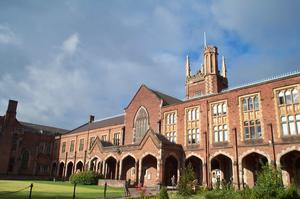
- 54.58 -5.942 1 Belfast City Backpacker , 53-55 Malone Ave BT9 6EP , ☏ +44 28 9066 0030 . Okay simple hostel near Botanics, a mile south of town. Dorm £15 ppn . ( updated Sep 2020 )
- 54.585 -5.93 2 Lagan Backpackers , 121 Fitzroy Ave BT7 1HU , ☏ +44 28 9514 0049 . Clean well-run small hostel. Dorm £12 ppn . ( updated Sep 2020 )
- 54.5892 -5.9358 3 Belfast International Youth Hostel , 22-32 Donegall Road BT12 5JN ( oOff Sandy Row ), ☏ +44 28 9031 5435 . Basic hostel, central location near Shaftesbury Sq. ( updated Sep 2020 )
- 54.586 -5.939 4 Botanical Backpackers ( formerly Arnie's ), 63 Fitzwilliam St BT9 6AX , ☏ +44 7572 950502 . Small independent hostel near QUB, well-run and good atmosphere, LGBTQ-friendly. ( updated Sep 2020 )
- Travelodge Belfast Central , 15 Brunswick St BT2 7GE ( opposite GVS bus & railway station ), ☏ +44 870 191 1687 , [email protected] . Chain hotel in great location, decor and cleanliness variable. Park at NCP Francis St, £15 for 24 hours. Double (room only) £50 . ( updated Sep 2020 )
- 54.5862 -5.9283 5 Global Village , 87 University Street BT7 1HP , ☏ +44 28 9031 3533 . Hostel open all year, chilly in winter. Basic dorm, no private rooms. Dorm from £18 ppn . ( updated Sep 2020 )
- Premier Inn have three hotels: "Cathedral Quarter" on Waring St, "City Centre" on Alfred St, and "Titanic Quarter" at the marina.
- Ibis have two hotels: "City Centre" on Castle St, and "Queens Quarter" on University St.
- 54.587462 -5.935947 6 Vagabonds Hostel , 9 University Road , ☏ +44 28 90209600 , [email protected] . Check-in: 1PM , check-out: 11AM . Lively hostel with friendly staff, reliable wifi, a kitchen, and a large comfortable shared space for hanging out. Aim for a bottom bunk if you can (the top bunks have a tendency to shake when the person below moves around). £15–18 for a dorm room, £50 for a private twin or double . ( updated Nov 2021 )
- 54.574 -5.958 7 All Seasons B&B , 356 Lisburn Rd BT9 6GJ ( near Adelaide railway station ), ☏ +44 28 9068 2814 . Clean friendly B&B. B&B double from £70 . ( updated Sep 2020 )
- 54.58911 -5.935 8 Benedicts , 7-21 Bradbury Place BT7 1RQ ( by Botanics railway station ), ☏ +44 28 9059 1999 . Lively clean mid-range hotel near QUB with good restaurant. B&B double £100 . ( updated Sep 2020 )
- 54.583 -5.943 9 Camera Guesthouse , 44 Wellington Park BT9 6DP ( ignore wacky postcode on their website ), ☏ +44 28 9066 0026 . Smart comfy little place in a Victorian southside house. No dogs. B&B double from £80 . ( updated Sep 2020 )
- 54.59288 -5.93597 10 Holiday Inn , 40 Hope St, BT12 5EE , ☏ +44 28 9024 2494 . Check-in: 3PM , check-out: 11AM . ( updated Apr 2023 )
- 54.59607 -5.93514 11 Leonardo Hotel ( formerly Jury's Inn ) ( a block north of the railway and bus station ), ☏ +44 28 9053 3500 . A reliable mid-range place. ( updated Apr 2023 )
- 54.582 -5.9425 12 Malone Lodge , 60 Eglantine Ave BT9 6DY , ☏ +44 28 9038 8000 . Well-run courteous hotel, southside near QUB. Some rooms are in the apartment block 200 m away. B&B double £80 . ( updated Jan 2021 )
- 54.573 -5.914 13 Ravenhill House , 690 Ravenhill Rd BT6 0BZ , ☏ +44 28 9028 2590 . Cosy welcoming B&B open Feb-mid Dec, no children under 10 or dogs. B&B double from £175 . ( updated May 2020 )
- 54.566 -5.95 14 Old Rectory , 148 Malone Rd BT9 5LH , ☏ +44 28 9066 7882 . Comfy charming B&B near university. No dogs. B&B double £100 . ( updated May 2020 )
- 54.588 -5.931 15 Tara Lodge , 36 Cromwell Rd BT7 1JW ( by Botanics railway station ), ☏ +44 28 9059 0900 . Smart small hotel for B&B near Botanics and QUB. B&B double £100 . ( updated Sep 2020 )
- 54.59588 -5.93019 16 Ten Square , 10 Donegall Square South BT1 5JD , ☏ +44 28 9024 1001 . As central as you can get, facing city hall, can be noisy. Most visitors have a good stay but there's an occasional shambles. B&B double £110 . ( updated Sep 2020 )
- 54.597 -5.919 17 Hilton Belfast , 4 Lanyon Place BT1 3LP , ☏ +44 28 9027 7000 . Decent mid-range chain hotel next to the Waterfront Hall. B&B double from £110 . ( updated Sep 2020 )
- Titanic Hotel , 8 Queen's Rd BT3 9DT ( Dockland, next to Titanic museum ), ☏ +44 28 9508 2000 . Swish modern hotel in the former Harland & Wolff offices. B&B double £180 . ( updated Nov 2021 )
- 54.594 -5.932 19 Park Inn by Radisson , 4 Clarence Street West BT2 7GB , ☏ +44 28 9067 7700 , [email protected] . Comfy enough, could do with a lick of paint. With fitness centre, sauna and meeting rooms. No dogs. B&B double £80 . ( updated Sep 2020 )
Belfast is for the most part a safe, welcoming city. Though there is trouble beneath the surface, it's locals settling old scores, and tourists aren't involved. After dark you should avoid the "interface areas" noted earlier. Beyond that, just follow the same obvious rules you'd follow in any other big city. Keep your nose and big mouth out of local politics (which stretch back 300 years), and expect some banter if you wear the wrong colour of football jersey.
One of the biggest consequences of The Troubles are the city's massive socioeconomic inequalities, which consequently lead to a good amount of petty and not-so-petty crimes. It is not uncommon to see rowdy youth act violently throughout the city, especially on Fridays and weekends. Thankfully, they very rarely target tourists, but you should still be on your guards at night when going out.
In addition to the "interface areas", some sections of town that require extra vigilance include Shaftesbury Square (the road linking Queen's University with Great Victoria Street Station), Botanic Station, and Strandtown.
To call a number in Northern Ireland from the Republic, use area code 048 with no country code. The +44 28 versions given above will work but incur international rates.
As of July 2021, the city has a good 4G signal from all UK carriers, and there is 5G from O2.
There is no land-based mobile signal on the ferries. Switch off in case your phone latches onto the ferry company WiFi, they'll be delighted to connect you at international rates.
- Transport routes radiate from Belfast so virtually all of Northern Ireland is within a day trip.
- Hillsborough is a picturesque village in County Down , with the grand powerbase of Hillsborough Castle.
- Giant's Causeway is the standout on the north coast, and can be reached by train or bus. But with a car you can meander along the whole coast, from Carrickfergus and Larne into the beautiful Antrim Glens to Ballycastle . The Glens are quiet so the Causeway will feel very touristy by comparison.
- Bangor is a cheery seaside town, with frequent suburban trains from Belfast. There are good beaches at Holywood on this route.
- Derry is a fascinating historic city within its ancient walls.
- Dublin can be day-tripped by bus or the "Enterprise Train" but deserves much longer.
- Has custom banner
- Has map markers
- Airport listing
- Has mapframe
- Maps with non-default size
- Listing with Wikipedia link but not Wikidata link
- See listing with no coordinates
- Articles with dead external links
- Do listing with no coordinates
- Eat listing with no coordinates
- Sleep listing with no coordinates
- Has routebox
- Has Geo parameter
- Guide cities
- Guide articles
- City articles
- County Antrim
- All destination articles
- Pages with maps
Navigation menu
Finding the Universe
Travel tales, photography and a dash of humor
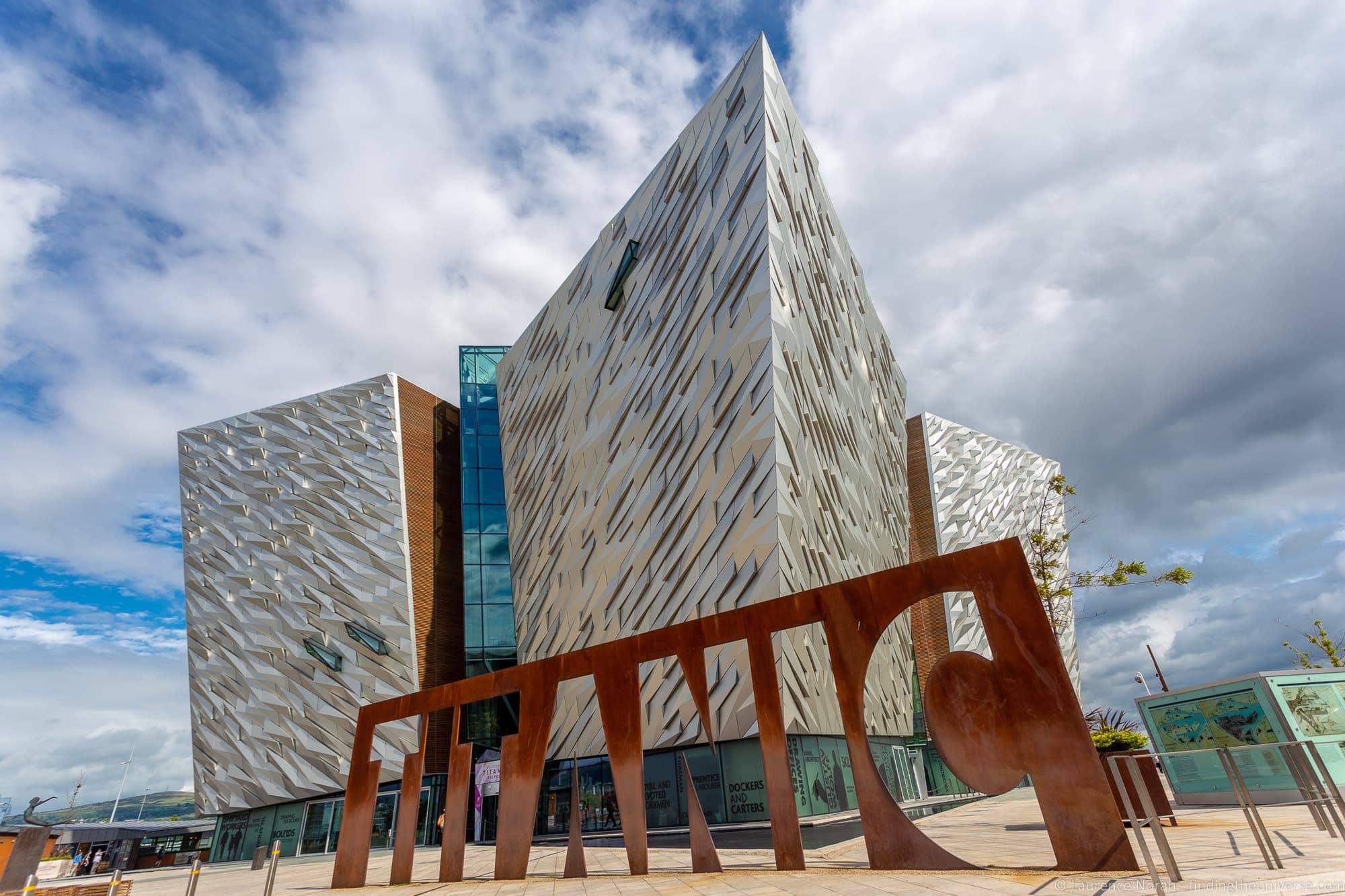
2 Days in Belfast: A 48 Hour Belfast Itinerary
Last updated: June 23, 2024 . Written by Laurence Norah - 6 Comments
Heading to Belfast? The capital of Northern Ireland impressed us on a recent trip here, and we wanted to share some of our findings with you. Our first post on Belfast is a guide to spending 2 days in Belfast, although we spent a few more days than that here, and were far from running out of things to do.
Whilst it is hard to fit all the highlights of Belfast into 2 days, we know that many visitors will likely want to explore more of the Emerald Isle, perhaps either along the Causeway Coastal route , or down south into the Republic of Ireland. So with that in mind we’ve put together this itinerary to help you make the most of your time here.
We think this itinerary for two days in Belfast will give you an excellent overview of what this city has to offer, from ancient pubs to modern day art and culture. We think it works well in conjunction with our guide to things to do in Belfast . We also have a guide to the best day trips from Belfast , if you plan on using the city as a base and exploring the area.

2 Days in Belfast, An Itinerary
Day 1: Belfast Itinerary
The Waterfront Area
The majority of Belfast’s attractions don’t open until 10 am, which is great news if you want a lie in, but not great if you’re an early bird. So you have two options – a leisurely breakfast, or a bit of time spent sightseeing at some of the outdoor locations.
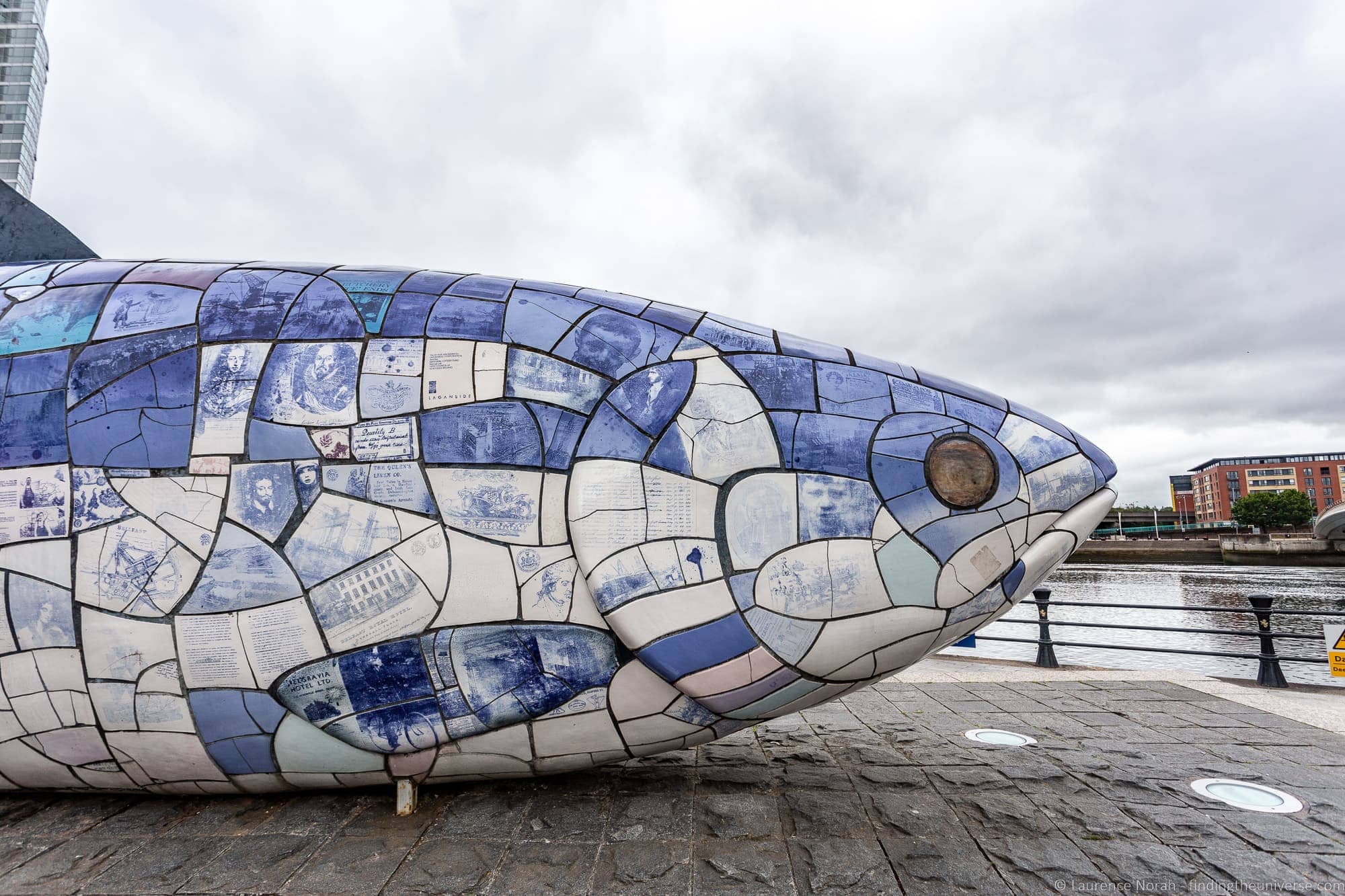
One good option is along the waterfront, where you can take a leisurely stroll from the actual Belfast Waterfront building (an event space), northwards past a number of art installations including the Beacon of Hope and the Big Fish.
The former is a massive stainless steel and bronze sculpture of a lady holding a large ring, which is meant to symbolise thanksgiving. She also has a globe at her feet which celebrates peace and harmony, and is marked with the cities where the people and goods of Belfast have migrated and been exported to respectively.
The Big Fish, also known as the Salmon of Knowledge, is a large sculpture of, as you would imagine, a Salmon. This is covered in ceramic tiles, and each one tells a different story of the city, meaning you can spend quite a while here looking at all the different tiles. It’s also located at the meeting point of Belfast’s two major rivers, the River Farset (from where Belfast gets its name) and the River Lagan.
First on our list of indoor attraction is the MAC , Belfast’s Metropolitan Arts Centre. This opens at 10 am, and there are three major art galleries on site, with exhibitions varying depending on when you visit. Most of these are also free, which is nice. You can see what’s on by visiting the art exhibition page .
When we visited the Mac, we toured the exhibitions and we were impressed by the variety of what was on offer, so we definitely recommend you check out their listings and add this to your itinerary.
As well as the exhibition space, the venue plays host to numerous events, including family focused events, art shows and performances. We didn’t have time to take in one of the events, but they did seem to have some excellent options. You can see the full event listing here , although obviously you’ll need to tweak this itinerary if something is coming up that interests you.
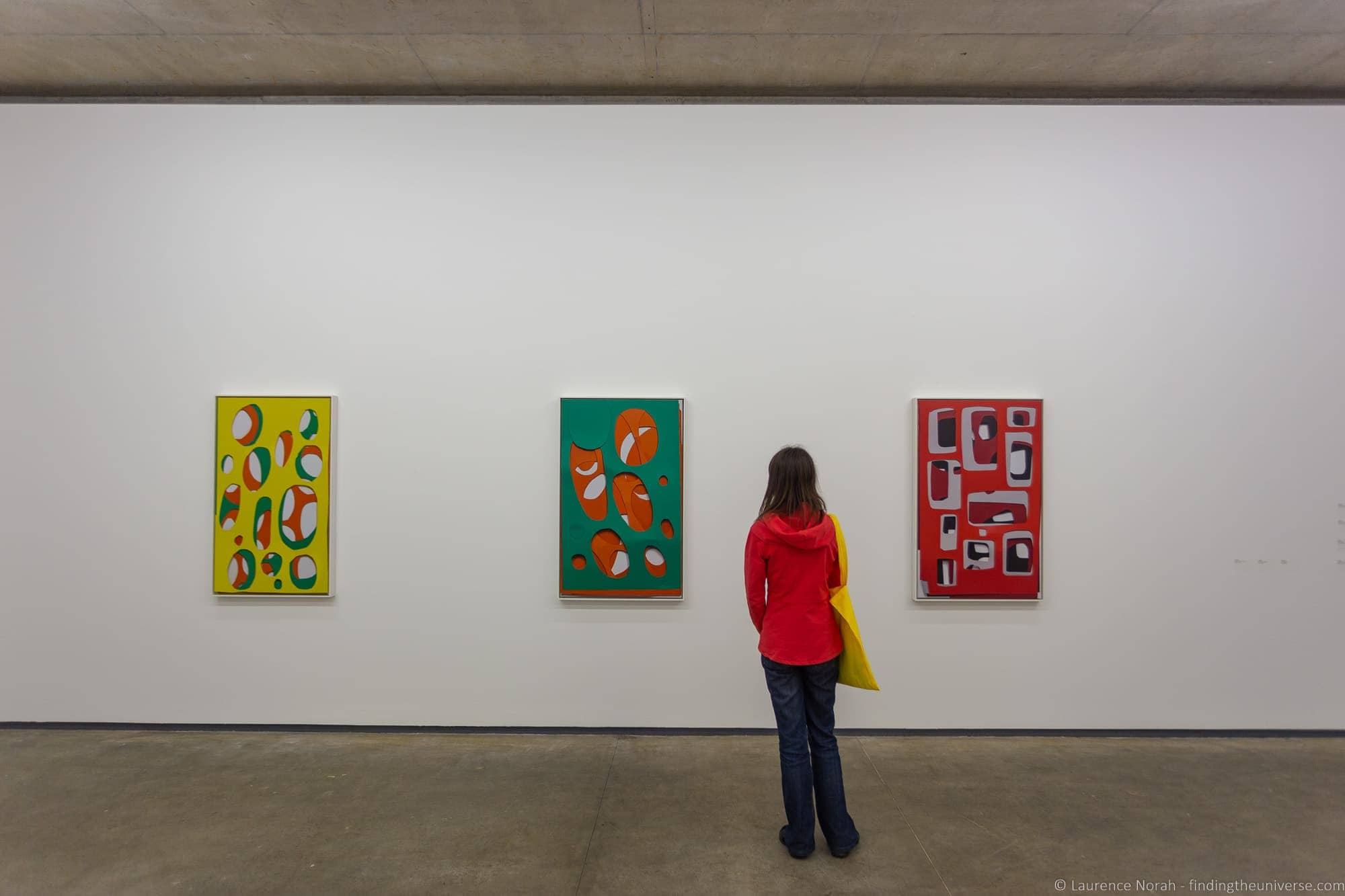
If you have time, just near the MAC is the Northern Ireland War Memorial Museum . This is quite a small museum that covers the history of World War II in Northern Ireland, and particularly the damage inflicted on Belfast by a number of air raids which targeted the docks here.
Belfast was initially believed to be out of range of the German bombers, so was quite badly prepared for the attacks when they did come, resulting in significant damage and loss of life. This is a free museum that is open from 10 am, just a two minute walk from the MAC.
Crumlin Road Gaol
Our next stop in Belfast is the Crumlin Road Gaol . This was, for over 150 years, one of Northern Ireland’s main prisons, and is today the only surviving Victorian era prison in Northern Ireland.
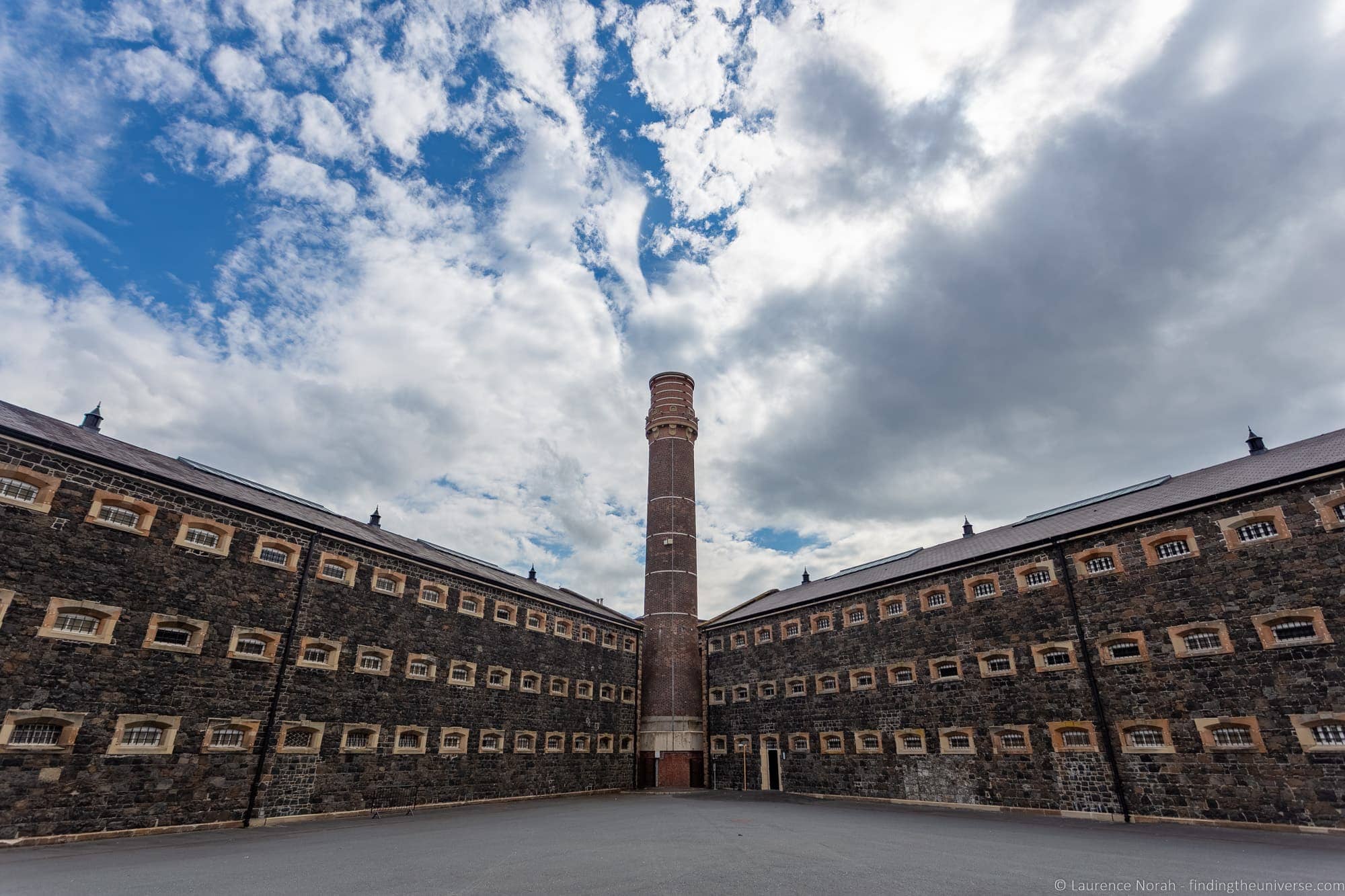
Opened in 1846, the prison was one of the most advanced of its time, and was originally built to house around 500 prisoners, although in its later years, and especially during the Troubles, it held many more than this. It closed in 1996 as a prison, and following an extensive restoration project, was opened as a visitor attraction in 2012.
Visits, which are by tour only, take you to all the major parts of the prison. This includes a visit to the tunnel under the road which linked the prison with the courthouse over the road (now derelict, but slated to become a luxury hotel), as well as to a cell wing and the execution chamber – seventeen prisoners were executed on site by hanging, with the last execution taking place in 1961.
The tour shares lots of information about the history of the prison, its design and notable inmates, and the tour takes around 70 – 90 minutes. It’s definitely worth booking your tour in advance as it is slightly cheaper than booking in person. You can do that online here.
For our itinerary we’d recommend booking a tour between 12 pm & 1 pm, which will give you time for your afternoon activities. There’s a café on site where you can get some food too.
As a side note, in 2024 a new distillery opened in one of the wings of Crumlin Road gaol. McConnell’s Distillery opened it’s doors to tours in 2024, and if you like whiskey or just want to learn more about how it’s made, this would make a logical stop at this part of your visit. You can find out more and book tours here . Note, there is another new whiskey distillery in the Titanic Quarter as well if you can’t find time on your first day in Belfast!
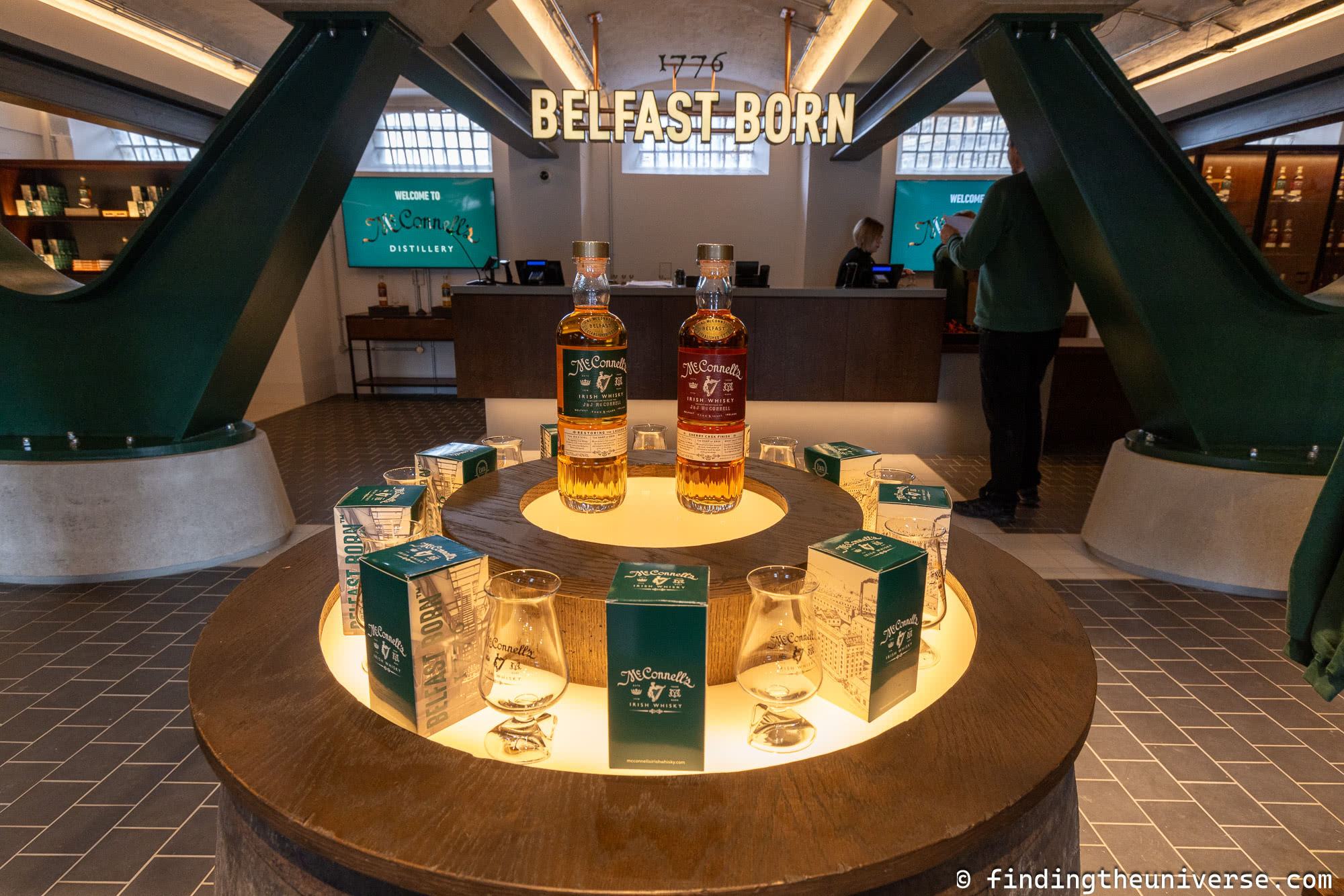
Tours of Belfast
For your afternoon in Belfast we recommend taking a tour. We took three different tours in Belfast during our time in the city, which included a street art walking tour with Seedhead Arts , a Black Cab Tour with Belfast local blue badge guide Billy Scott, and a gin tasting tour with Taste & Tour .
Naturally, the tour you want to take will very much depend on your interests! Here’s a quick overview of each tour we took so you can see which is right for you. You can also see more Belfast tour options here .
Belfast Street Art Tour
The Street Art walking tour of Belfast that we took was put together and is run by local Belfast street artists. The tour lasts around ninety minutes, and in that time you’ll learn all about the history of the Belfast street art scene, as well as see a lot of different pieces of street art.
Note that this is a bit different to the tours that cover the Belfast murals, such as the Black Cab tour we mention below. Those primarily focus on the political art, while this one focuses more on everyday street art and the local & international artists who have visited and worked in the city.
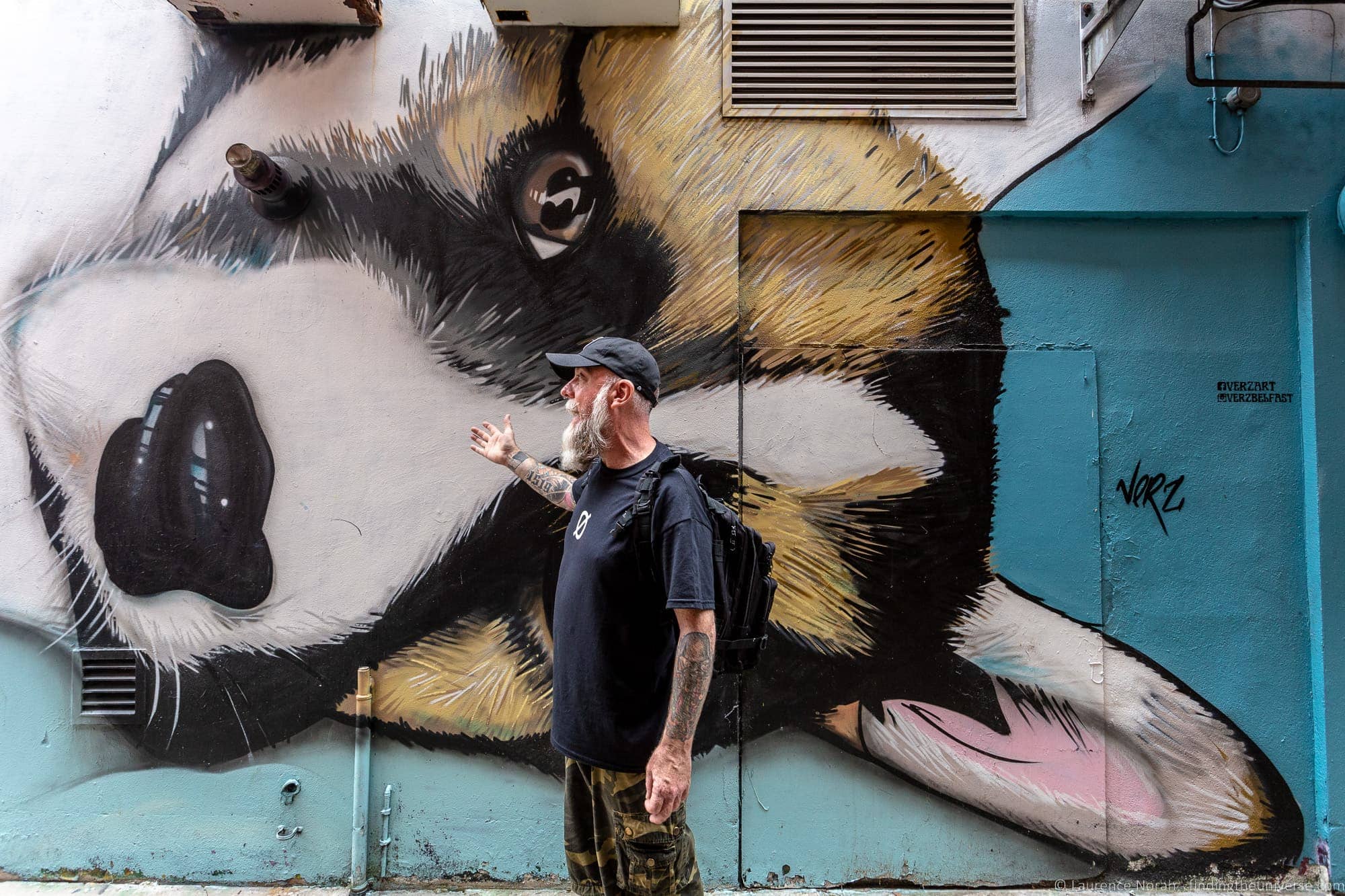
We really enjoyed this tour, and particularly getting an insight into the various pieces of art and street artists from our tour leader Tim, a Belfast Street Artist who works under the artist name Verz. Whilst you can of course walk around Belfast and spot street art on your own, a tour is a great way to really get an understanding of each piece, and the thinking behind it.
Currently tours run weekly and start at noon, so if this is a tour you want to take you will have to check it’s on the right day for you, and also you’ll need to slightly juggle this itinerary to fit it in. We’d suggest doing it in place of your Crumlin Road Goal tour, and scheduling that for a bit later – around 3pm perhaps. Alternatively, you can contact Seedhead Arts about a tour outside of their usual times. See their website for more information. We also have a post with lots more Belfast street art for you to check out!
Belfast Black Cab Tour
If you’re interested in learning a bit more about the political history of Belfast, then a Blackcab tour is a great option. This tour, which takes place in an iconic Black Cab vehicle, will take you around various parts of Belfast, many of which are synonymous with the years of conflict that the city went through during the time known as The Troubles.
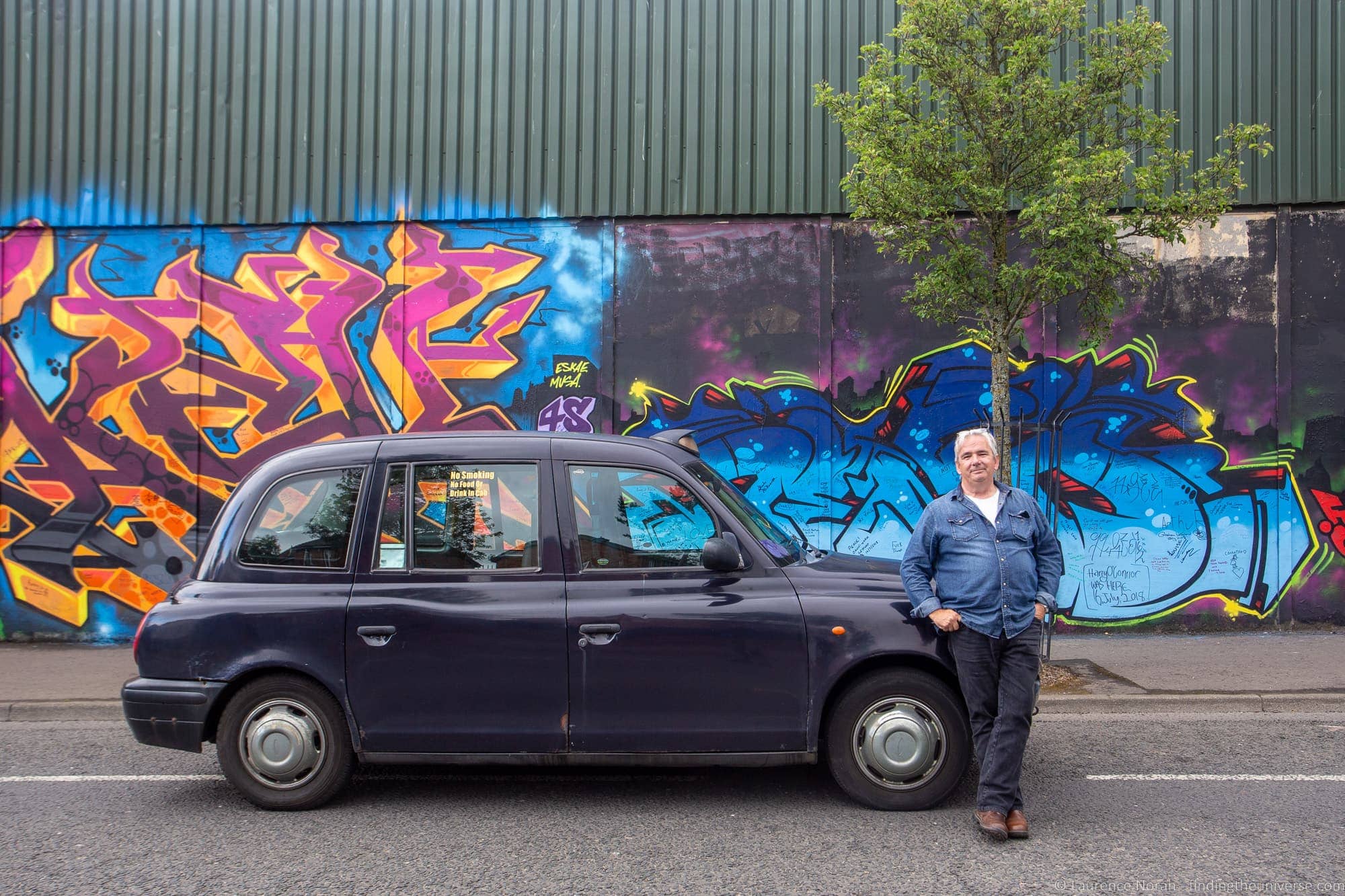
Parts of the city are still separated by the Peace walls, massive barriers that literally divide the Republican / Catholic neighbourhoods from the Loyalist / Protestant neighbourhoods. The Black cab tour we took was run by Belfast local Billy Scott.
Billy knows a great deal about the local history of the city, and seemed to know hundreds of people – often waving out the cab window to wish hello to folks passing by. He’s also a registered Blue Badge guide, which is the highest level of qualification awarded to tour guides in the UK, meaning he has to really know his stuff. Which, he did.
We were able to tailor the tour as we wished based on our interests. We saw several different quarters of the city and learnt a lot about the history of the city and its people and struggles over the years from Billy. The tour was at times moving and at times funny. We also had the opportunity to write our own message on the Peacewall, which has been covered in murals, as well as signed by people including the Dalai Lama and US President Bill Clinton.
Tours run on demand, visit the official website for booking and pricing information. You can also book a similar tour here .
Gin Tasting Tour of Belfast
If you’re looking for something a bit more, well, alcohol focused, then the Gin tasting tour of Belfast might be for you. Gin has experienced a surge in popularity around the world, and Northern Ireland is no stranger to this trend.
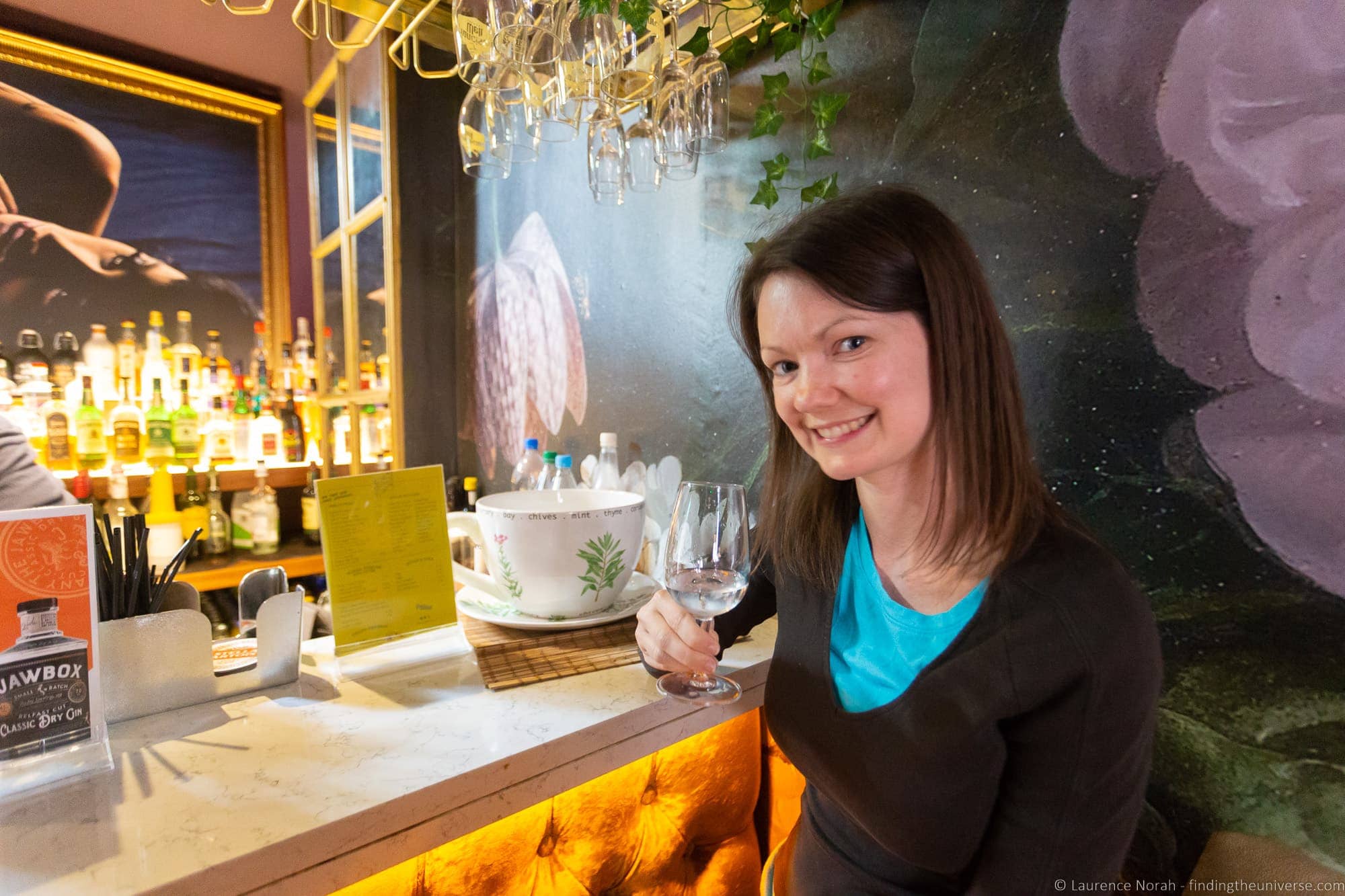
A number of local gin distilleries have started creating their own gins, and this gin tour is a great way to both sample a number of these as well as learn about the history of this drink and visit some of Belfast’s iconic drinking venues.
The tour we took lasted around four hours and included seven generous gin drinks! Our tip is definitely to have prepared yourself with a good meal beforehand, as this is a fair amount of gin to drink. The drinks came in a variety of ways, from straight up gin shots through to gin martinis and the classic gin and tonic.
As well as gin, the tour included some nibbles, and in total we stopped at five different pubs and bars. The tour guide was very knowledgeable and a lot of fun, and we particularly enjoyed chatting with the other folks on the tour, many of whom were Belfast locals out for a fun afternoon exploring their own city.
The Gin Jaunt is currently offered on weekends, but the company who runs the tours also runs other food and drink based tours, so you should be able to find something to suit whenever you visit. See all their tours, prices and details here .
Visit The Crown Bar
Belfast has no shortage of watering holes (see the section later on in the post on where to drink in Belfast), but one location that deserves its own entry is the Crown Liquor Saloon, also known as the Crown Bar.
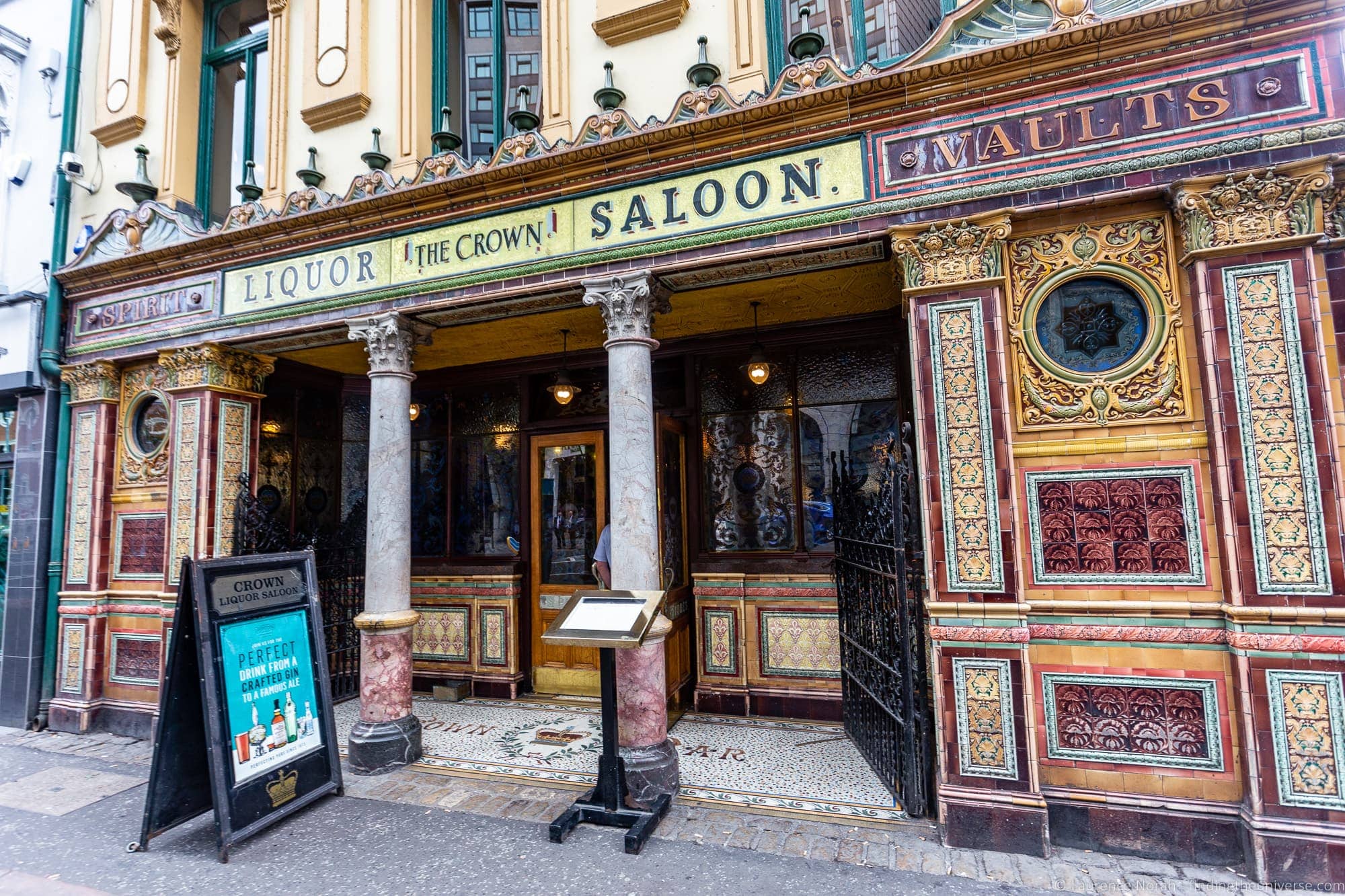
This is actually owned by the National Trust, and is probably the most famous pub in Belfast. It dates from at least 1826, and features an incredible ornate interior of tiles, original gas lamp fixtures and a beautiful carved ceiling. There’s even a heated footrest under the granite bar.
This was the place to be in Victorian times, when it was a gin palace of unparalleled design. Appropriately, the gin tour we took started here, with a gin and tonic. Today you can enjoy a wide range of drinks as you admire the incredible interior, and we think this is the perfect place to end your first day in Belfast!
Day 2: Belfast Itinerary
Our second day in Belfast has you visiting one of Belfast’s most popular attractions – the Titanic Museum.
However, there’s a lot more to do here than this museum, so we think you should allocate around half a day to visiting this quarter, known as the Titanic Quarter, and we’ll go through some of our favourite attractions in this area which will easily fill your time.
This part of Belfast is also home to the “Maritime Mile”, which is a mile long walkable stretch which focuses on the maritime history of the city. It’s also here where the Titanic Studios are found, one of the key filming locations of the popular Game of Thrones TV show.
There’s a nod to the show in the form of six giant stained glass windows depicting scenes from the show, which are found along the Maritime Mile. See our guide to Game of Thrones locations in Ireland for more information. We also have a full review of the Game of Thrones studio tour here .
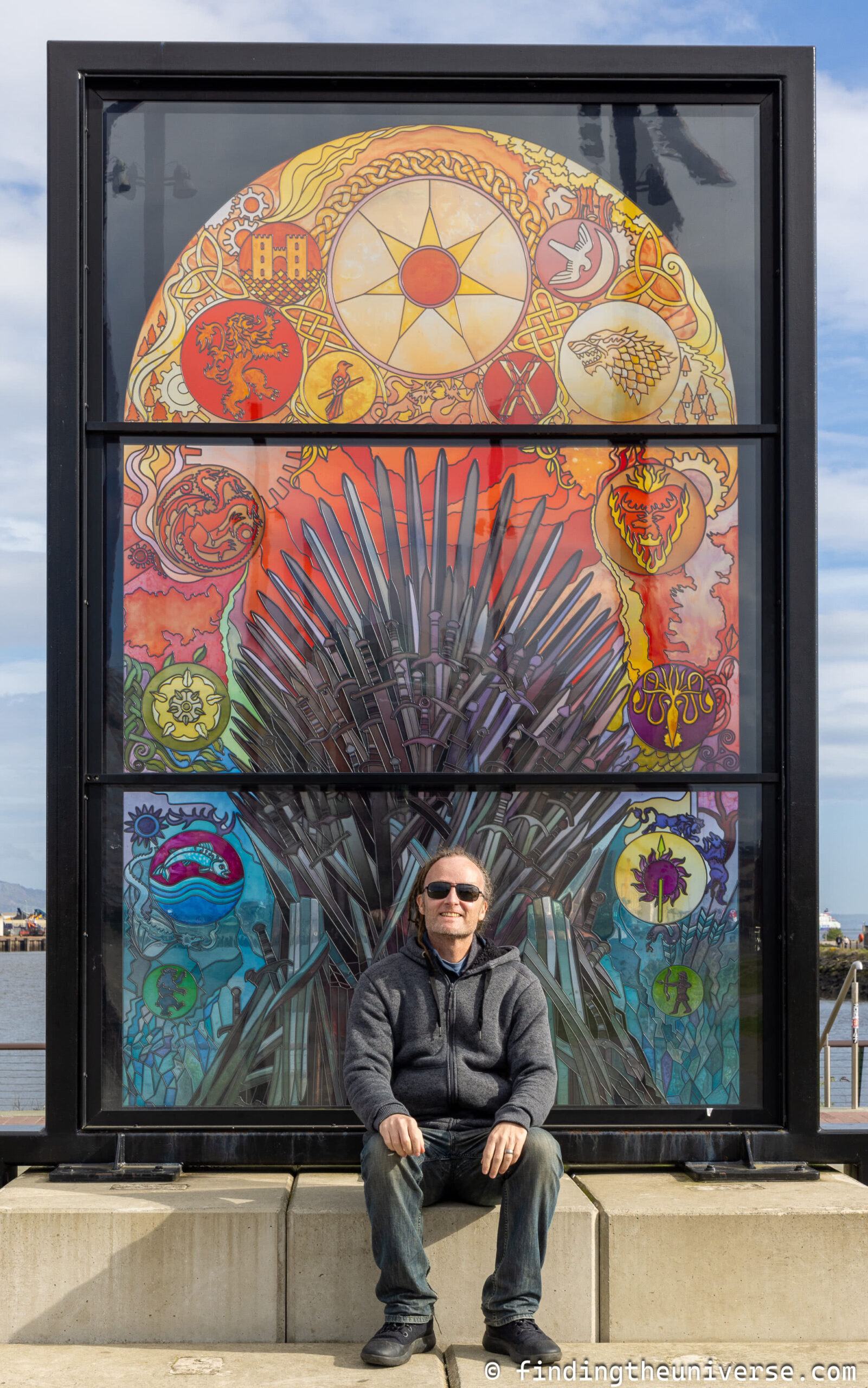
Titanic Museum
First on our list for this area is the Titanic Belfast Experience itself. For those of you who weren’t aware, the RMS Titanic was built in Belfast’s dockyards, by shipbuilders Harland and Wolff. Harland and Wolff were responsible for the majority of the ships of the White Star Line, including the Titanic, and are still operating today – although they have since diversified into other products including offshore wind turbines.

The most recognisable feature of the present day Harland and Wolff facility are the massive Samson and Goliath cranes, huge yellow gantry cranes which dominate the Belfast skyline, and which you’ll definitely spot when you visit the Titanic Quarter.
Back to the Titanic Belfast experience. This visitor attraction, which opened in 2012 (100 years after the Titanic sank), is found on the site of the original Harland & Wolff shipyard. Here, both the RMS Titanic and her sister ship, the RMS Olympic were built and launched.
The museum, whose four corners are shaped like the prow of a ship, takes you on a fascinating journey into the history of the shipyard, the building of the RMS Titanic itself, the people who worked on her and, her first voyage and, of course, an overview of the tragic events that resulted in the sinking of the Titanic in 1912, with a loss of over 1,500 lives.
The museum goes further than that, and covers events up to the current day, including the discovery of the wreck and stories about how popular culture has portrayed the events. Yes, you will even hear that famous Celine Dion song. Overall, this museum is a fascinating attraction, and well worth two or three hours of your time.
The Titanic Museum operates a timed ticketing system, with entrances every 15 minutes from opening time. These varies depending on the time of year, and are currently from 9 am April – September, and 10 am October – March. It’s always a good idea to check the official website for opening times first though to be sure.
We definitely recommend you get your ticket in advance here to save queuing and coming early to avoid the crowds. Tickets bought online include your entrance to the SS Nomadic, which is just next to the Titanic Museum.
Note that the Titanic Museum also has a full shop, on-site paid parking and dining options. Find out more about visiting in our comprehensive guide to the Titanic Belfast here .
The SS Nomadic is the last surviving White Star Line ship in the world. Built by Harland & Wolff in Belfast, she was originally designed to serve as a tender to both the Titanic and the Olympic.
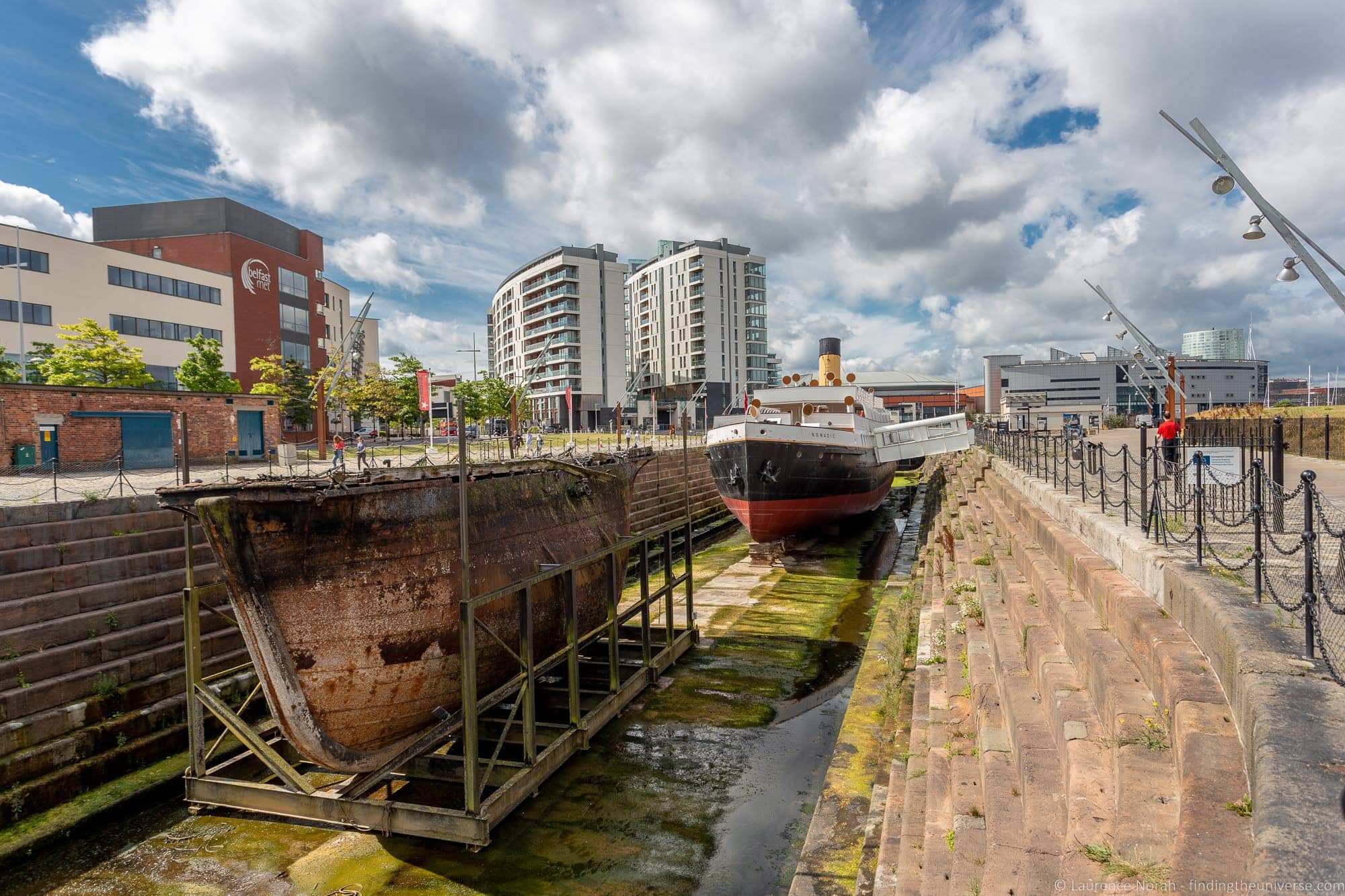
Due to the massive size of the Titanic and Olympic, not every harbor could accommodate them. In particular for the Titanic, the SS Nomadic ferried first and second class passengers and their luggage from Cherbourg Harbour in France onto the Titanic. Third class passengers primarily travelled on the SS Traffic, Nomadic’s running mate.
Following her role as tender to the Titanic and other White Star Ocean Liners, the SS Nomadic had a varied existence, from minesweeper and troop transport during World War One, through to troop evacuation in World War Two. Between and after the wars she continued to work as a tender, including to vessels such as the Queen Mary and Queen Elizabeth.
Finally, she wound up as a restaurant ship on the Seine in Paris, where she spent almost thirty years – a function which likely saved her from being scrapped. Following the failure of the restaurant business, her fate hung in the balance, before she was saved by the Northern Ireland government and returned to her original port of Belfast, a rather sorry version of her former self.
Following extensive restoration, including work by Harland & Wolff, the SS Nomadic was opened to visitors in June 2013. Today, you can tour the wonderfully recreated ship and learn everything there is to know about her past and association with the Titanic. We’d recommend visiting this in conjunction with the Titanic Museum, as you can purchase an entry ticket that will get you access to both attractions. Alternatively, you can just pay a lower entry fee for only visiting the SS Nomadic, and you can buy this on site.
Titanic Dock & Pump House
If you want to get a feel for the massive scale of the Titanic, the best option is to visit the Titanic Dock and Pump House. This is about a ten minute walk from the Titanic Museum in the opposite direction to the SS Nomadic, which you can do along the waterfront.
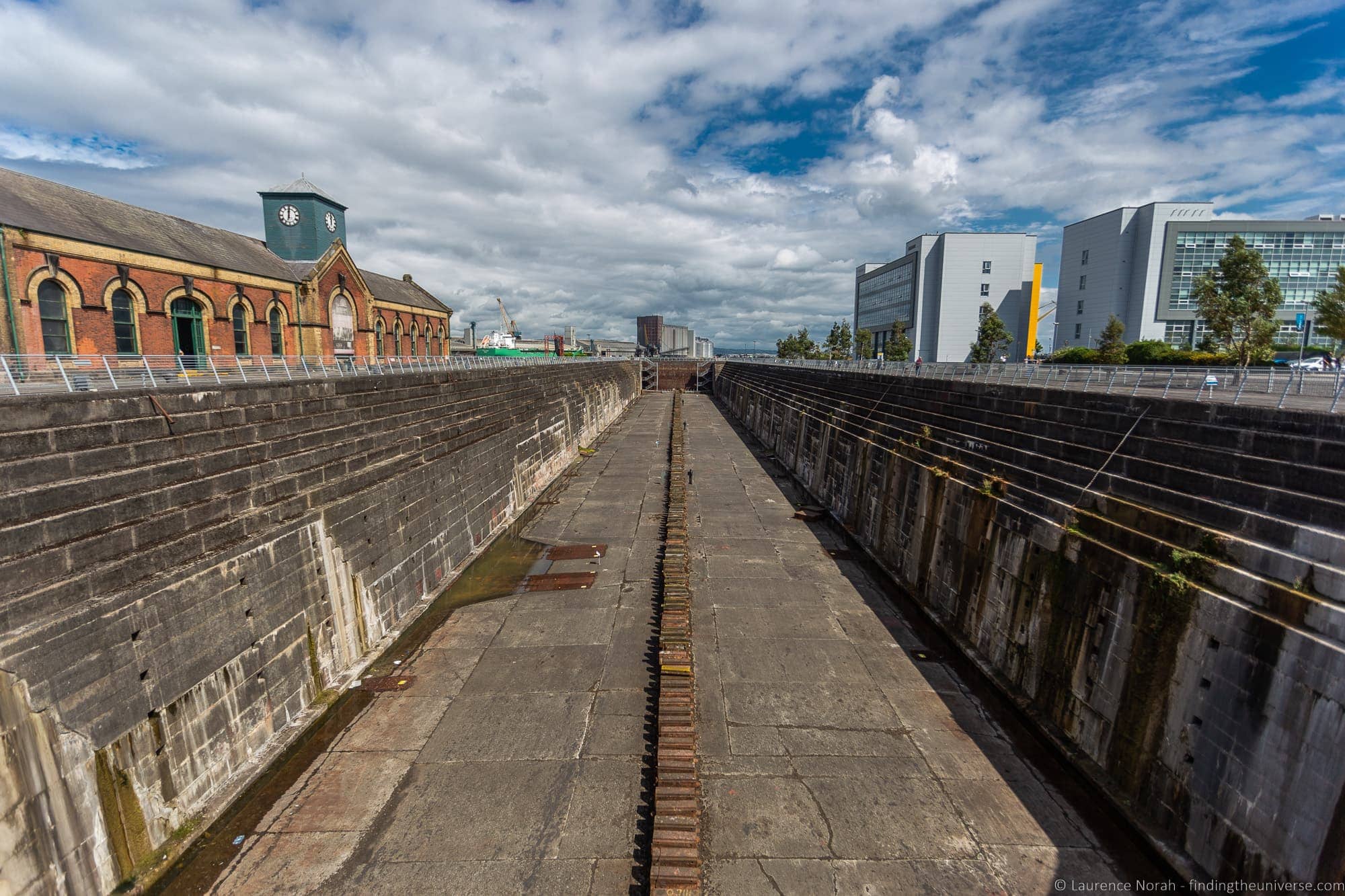
The Titanic Dock, officially called the Thompson Graving Dock, was where the Titanic was fitted out, after the superstructure had been completed and her engines and other major components were fitted.
In terms of a timeline, from her original point of construction (marked out outside the Titanic Museum), the hull was first floated to the Thompson deep water dock where things like engines, boilers, anchors and so on were fitted.
She was then put in the Thompson Graving Dock in February 1912. This dry dock was where all the final parts of the Titanic was completed, including fitting her propellors, painting of the hill, and all the finishing she needed prior to her sea trials and maiden voyage.
At the time it was opened, the Titanic dry dock was the largest of its kind in the world. It was specially designed to accommodate the Titanic and Olympic, and at 850 feet in length, was the same size as the Titanic herself. So a visit here really gives you an impression of the incredible size of these vessels.
You can walk all around the dry dock as well as down inside it, where you can see the keel blocks where vessels rested. You can also visit the pump house, which was responsible for moving water out of the dry dock. As of 2023, this has been turned into a new Irish whiskey distillery, Titanic Distillers. You can take a tour which just focuses on the pump house, and there are also tours which include the whisky distillery with tastings.
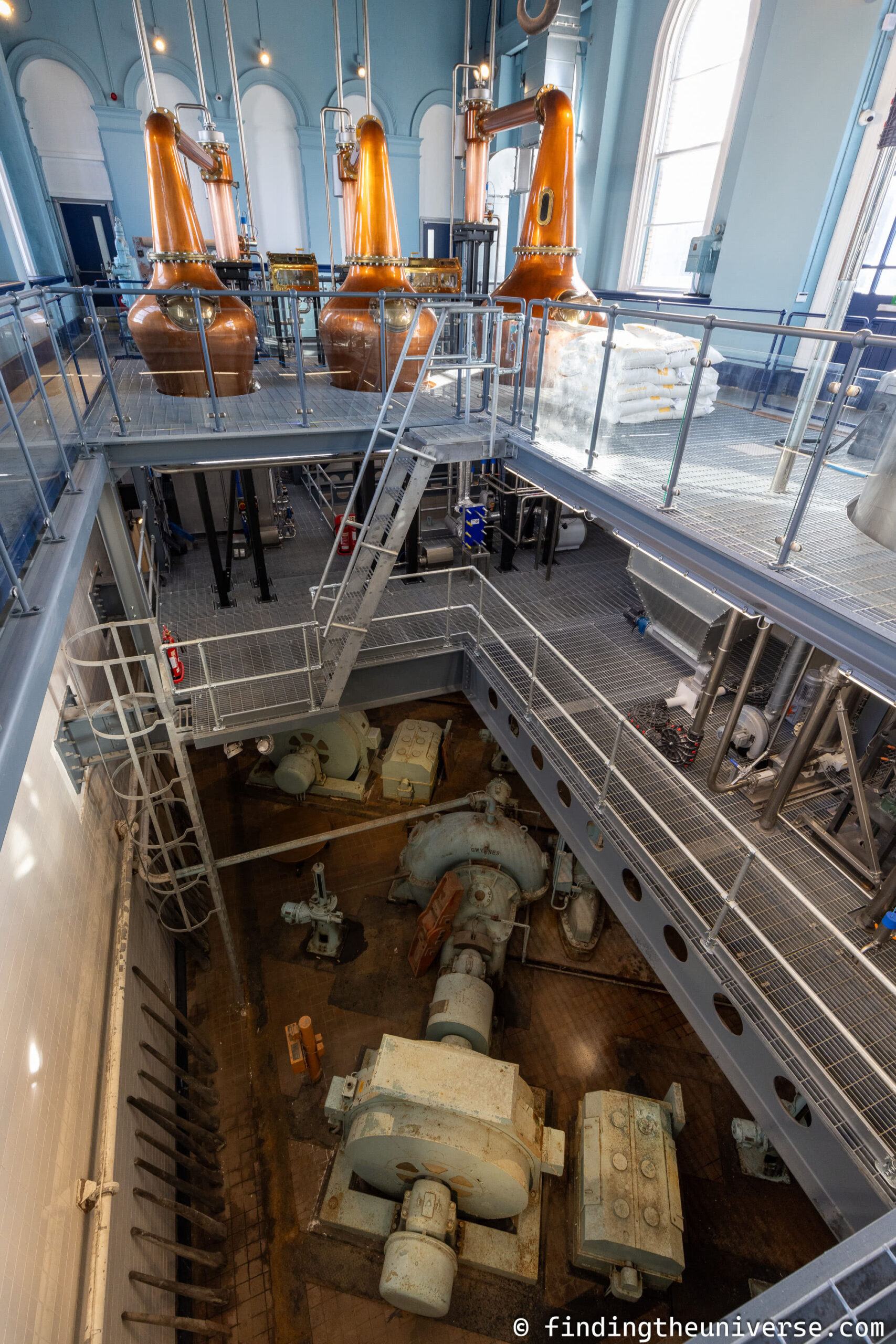
We have done both. We actually visited the Pump House before it became a distillery, and then took a whisky distillery tour in 2024. If you enjoy whisky, the tour is definitely worth doing, the staff are excellent and the tour is very interesting. You can book tickets for the tour in advance here .
If you’re interested in naval history, you can also visit the HMS Caroline , which is a world war one light cruiser and last survivor of the Battle of Jutland. This is parked in the dry dock right next to the Pump House, and as well as the ship itself you can visit the small museum on shore about the vessel. We really enjoyed exploring the ship and learning about its history.
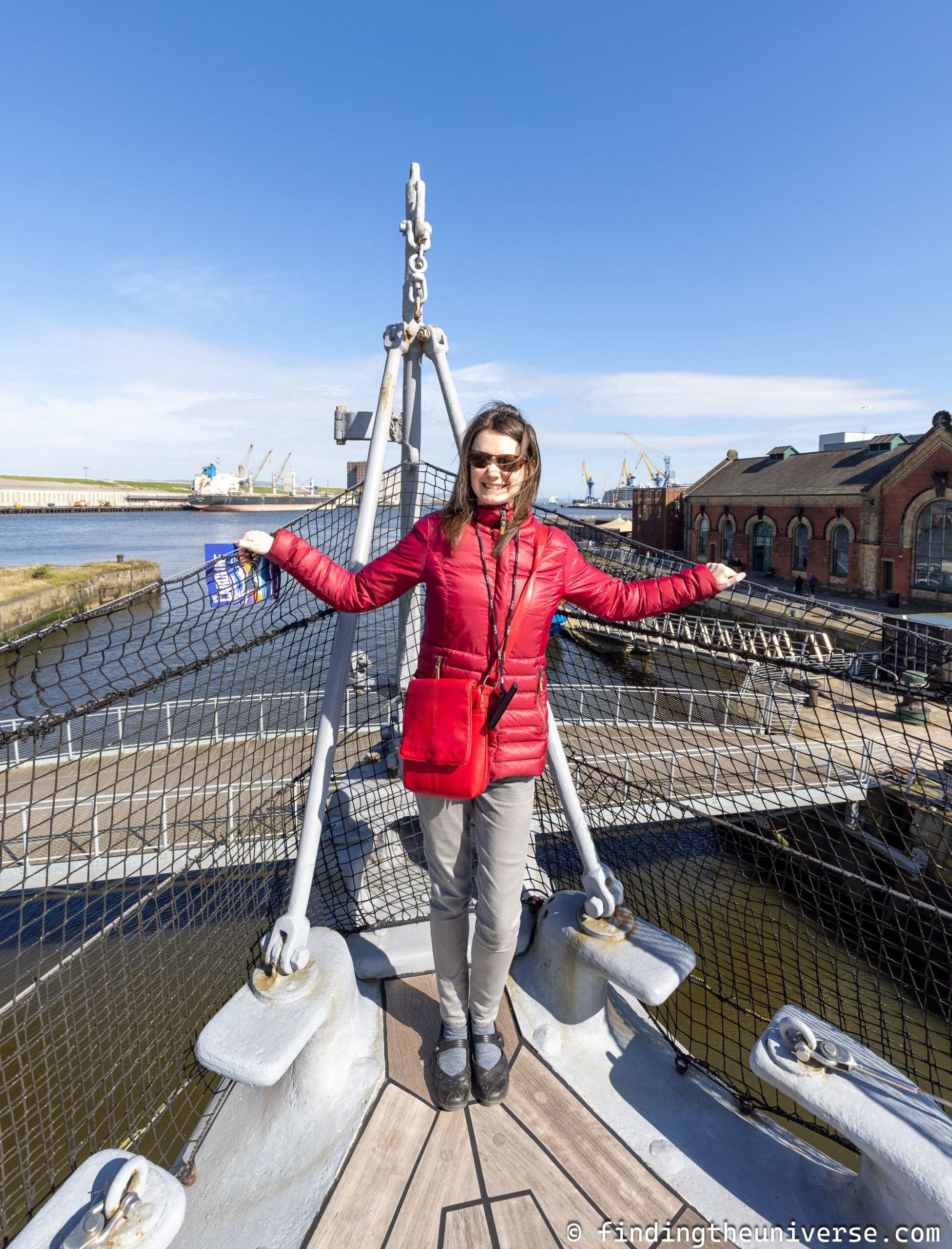
Belfast’s City Hall is a fantastic piece of Victorian engineering, built in the late 19th century following Belfast being awarded city status by Queen Victoria in recognition of its rapid growth.
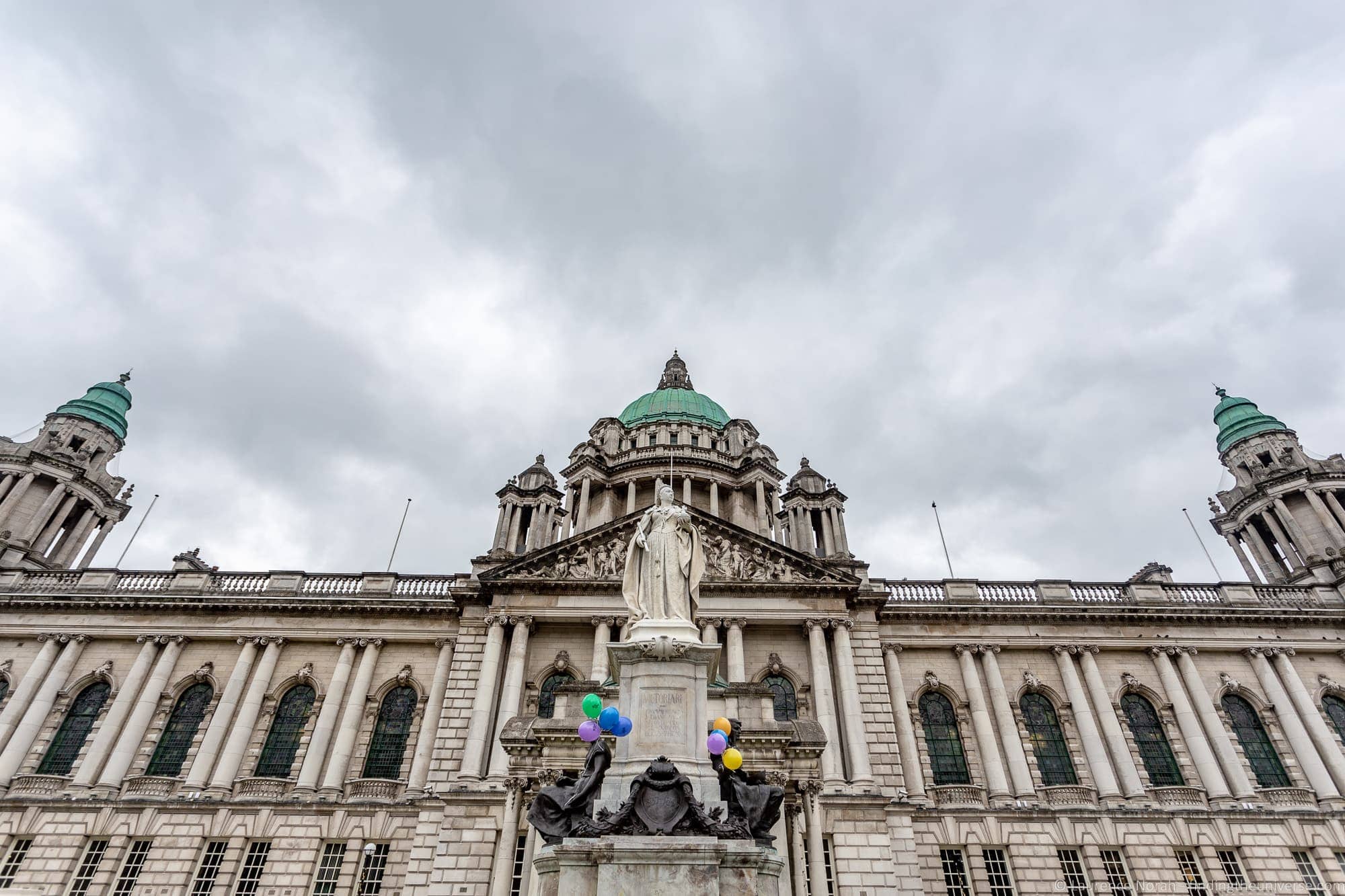
Spread over an area of an acre and a half, the Baroque Revival style building is a beautiful centrepiece to the city, and the park area around it is a popular place in summer for people to visit. While we were in Belfast, part of this grassy area was being used an outdoor cinema screening venue, which appeared to be a popular event given the large number of people in attendance.
It’s also possible to visit City Hall. As well as an exhibition space that features stories of the city itself, you can take a free guided tour of the main areas of the building, including the main rooms used by the council.
Tours last around 45 minutes, and run at various times throughout the day, depending on the time of year. You can see the tour times on the official website here . Tours are free and are on a first come first served basis – if you want to join one, we’d advise turning up 15 – 30 minutes before the tour to register for spaces. You can then spend the time before the tour looking at the free exhibition.
Based on our 2 day itinerary layout, we’d advice aiming for the 2pm tour, which will give you time to go to the next attraction on our itinerary.
Ulster Museum & Botanic Gardens
Now, we think it’s time to head to another part of the city. You can either grab some food around the Titanic Quarter (the Titanic Hotel is an excellent spot), near City Hall, or wait until you get to the Ulster Museum area of town, depending on time and your hunger levels.
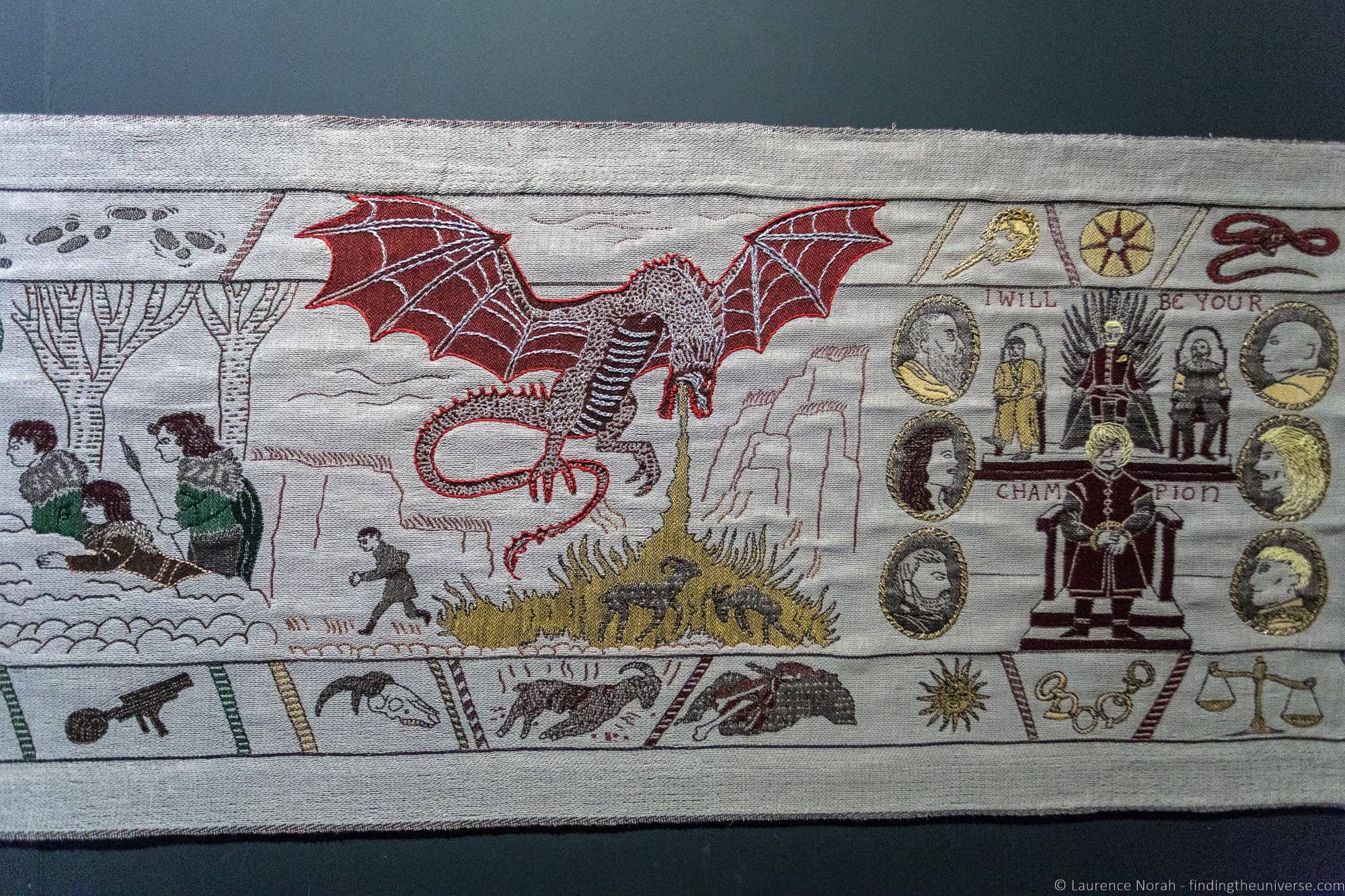
The Ulster Museum is found in Belfast’s Botanic Gardens, with both attractions featuring free entry (although donations are of course welcomed). It’s a large building spanning multiple floors, and has a little bit of everything from natural history through to archaeology, art and culture.
When we visited the museum, a highlight for us was the massive Game of Thrones tapestry. This is a 77 metre long linen tapestry which features a scene from every episode of the show up to the current season – with room for the final season.
This is a fun way to celebrate Belfast’s rich linen history, and the detail of the tapestry is quite wonderful. Unfortunately this was a temporary exhibit, but it gives you an idea as to the quality of the exhibits on offer!
In case you are wondering why a Game of Thrones tapestry was on display in the Ulster Museum, this is because Game of Thrones is filmed in Northern Ireland , at such iconic sites as the Dark Hedges as well as at the Titanic Studios . This is one of Europe’s largest film studios, which is found right next to the Titanic Museum. When we walked past this, we saw the massive green screens inside, as well as a set featuring a ruined castle. Pretty cool!
Ulster Museum is open 10am – 5pm every day except Monday, when it is closed. If this is something you want to do, and this day falls on a Monday, feel free to switch the days around, or the locations you visit on each day, so you can see everything you want.
Drink in the Cathedral Quarter
Last on our list of activities for your 2 days in Belfast is to have a drink in the Cathedral Quarter. This is a region of Belfast that is famous for its bars and restaurants, and is the perfect location to end your trip.
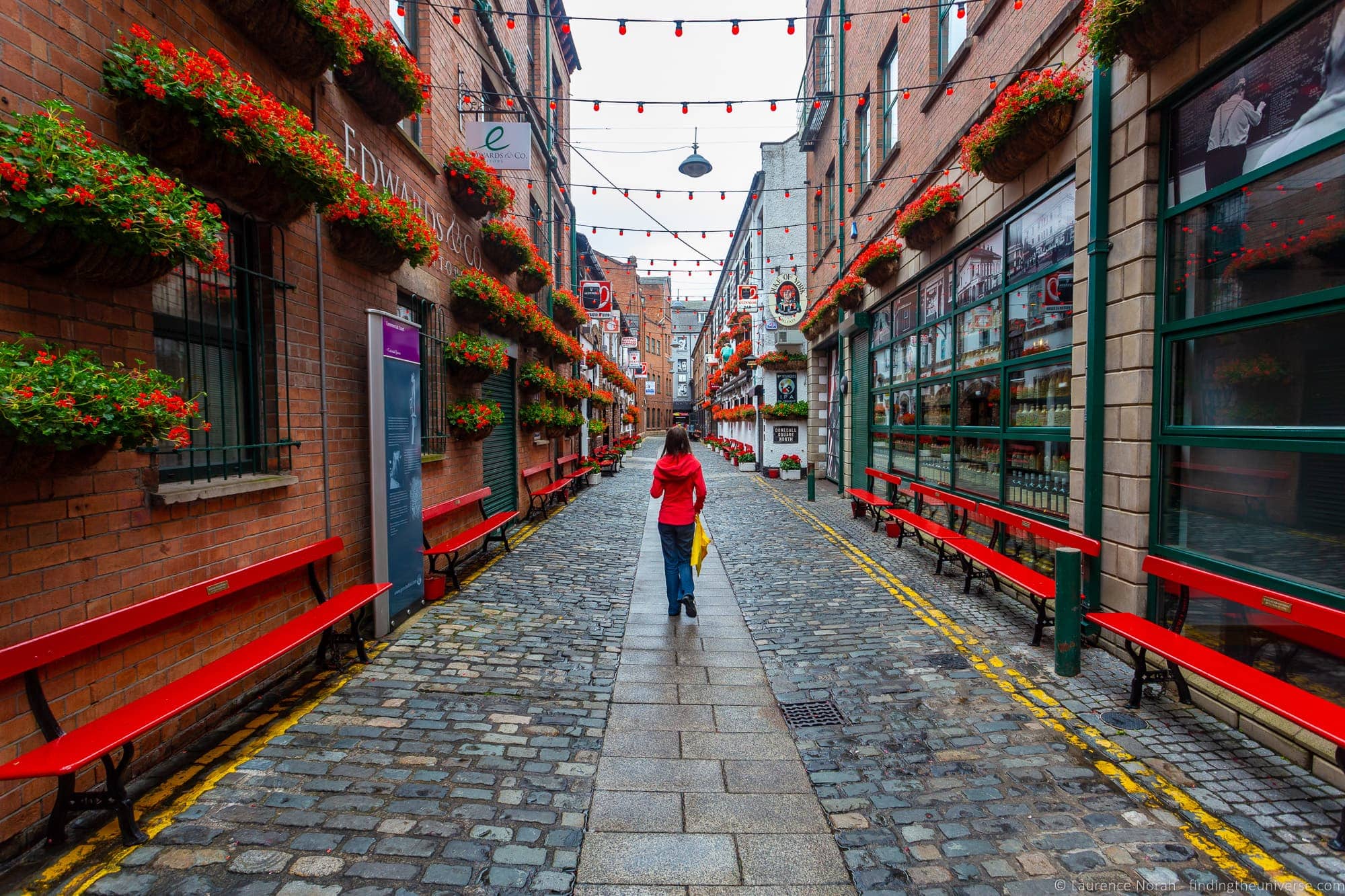
For some suggestions of where to go, take a look at our where to drink in Belfast section below. You can also take a beer bike tour , which sees you pedalling around the city and enjoying a beverage as you go.
Map of 2 Day Belfast Itinerary
To give you an idea of where the various attractions in this Belfast itinerary are we’ve put together this map, which should help you with planning your trip to Belfast. You can also see this on Google Maps here .
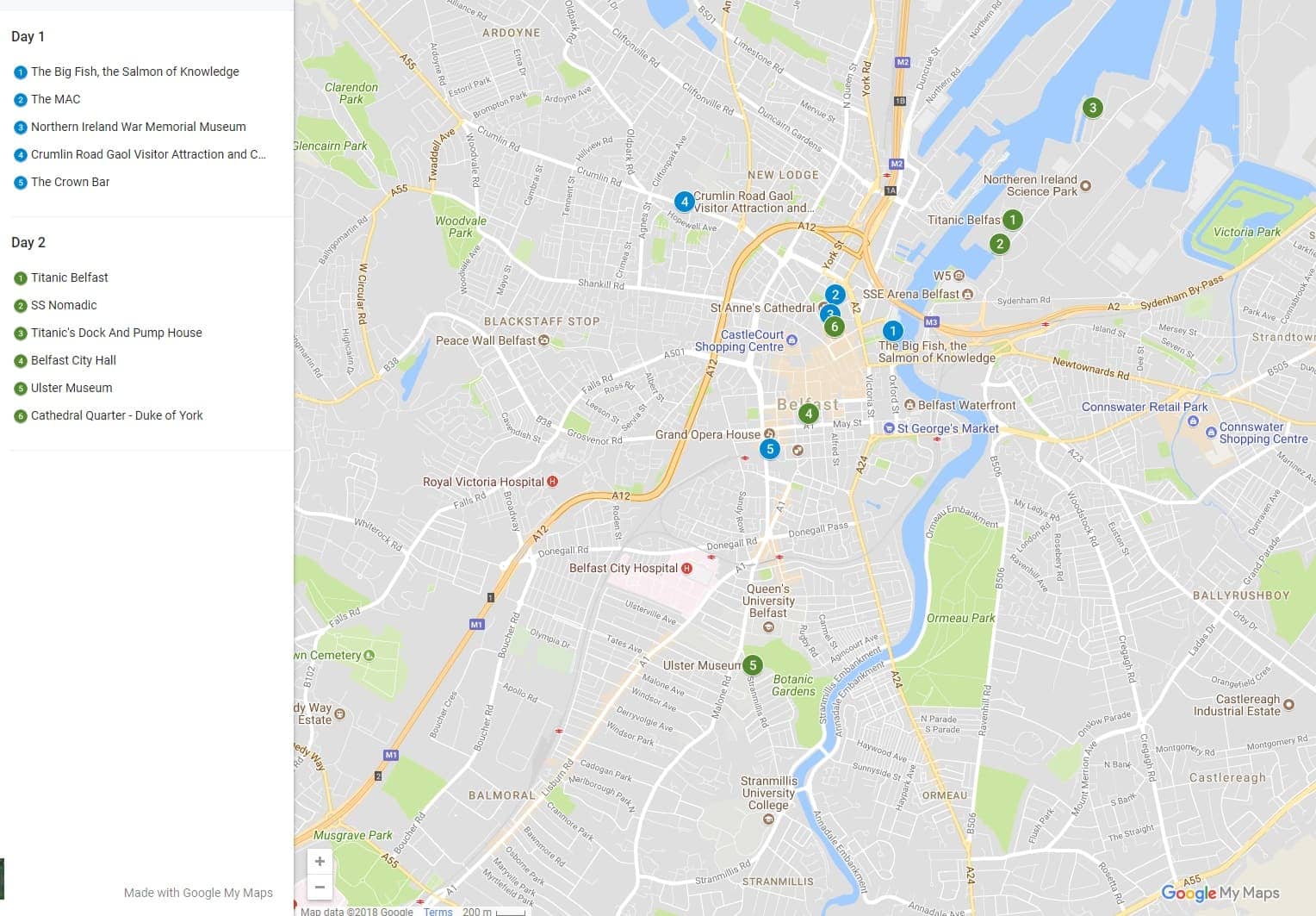
2 Day Belfast Itinerary Overview
Here’s a summary of this 2 day Belfast itinerary for quick reference:
- Day 1: The Waterfront Area, The MAC, Crumlin Road Gaol, Tour of Belfast, The Crown Bar
- Day 2: Titanic Museum, SS Nomadic, Titanic Dock & Pump House, City Hall, Ulster Museum & Botanic Gardens, Drink in the Cathedral Quarter
Where to Drink in Belfast
As mentioned throughout this post, there’s no shortage of fantastic venues to drink in in Belfast. To help you put a shortlist together for your Belfast visit, here’s a few options to choose from that we visited.
- The Crown : A Victorian era gin palace that is a must for any visit to Belfast
- Muriel’s Cafe bar : Famous for cocktails, but you can get everything from a traditional pint to a range of craft gins
- John Hewitt Bar: A more traditional style bar with live music and a full range of drinks
- The Duke of York: A staple of the Cathedral Quarter, this bar was blown up in 1972 during the Troubles, and has since been restored as a tribute to the city. The cobbled streets and hanging flower baskets mean this is a very photogenic pub!
- The Dirty Onion: On warmer days the outdoor seating in this Cathedral Quarter bar makes it hugely popular. There’s also a massive indoor seating area, plus the restaurant upstairs, Yardbird, serve really good chicken wings and ribs.
- Babel Bar: If you’re after a rooftop bar, the Babel Bar in the Bullitt Hotel (just next door to Muriel’s) is an excellent choice
- Whites Tavern : Down a series of winding alleys, Whites Tavern isn’t obvious, but it has been serving drinks since 1630, so is worth finding. Good pub food too!
Where to Stay in Belfast
Belfast has been growing quickly as a tourism and business destination, and as such, there is a huge choice of hotels to stay in, with multiple new hotels opening every year! At most times of the year, it is easy to find a good value deal here.
The first time we visited Belfast we stayed at the Bullitt Hotel . This was fantastically central, within easy walking distance of the Cathedral Quarter and the majority of the sights on this itinerary.
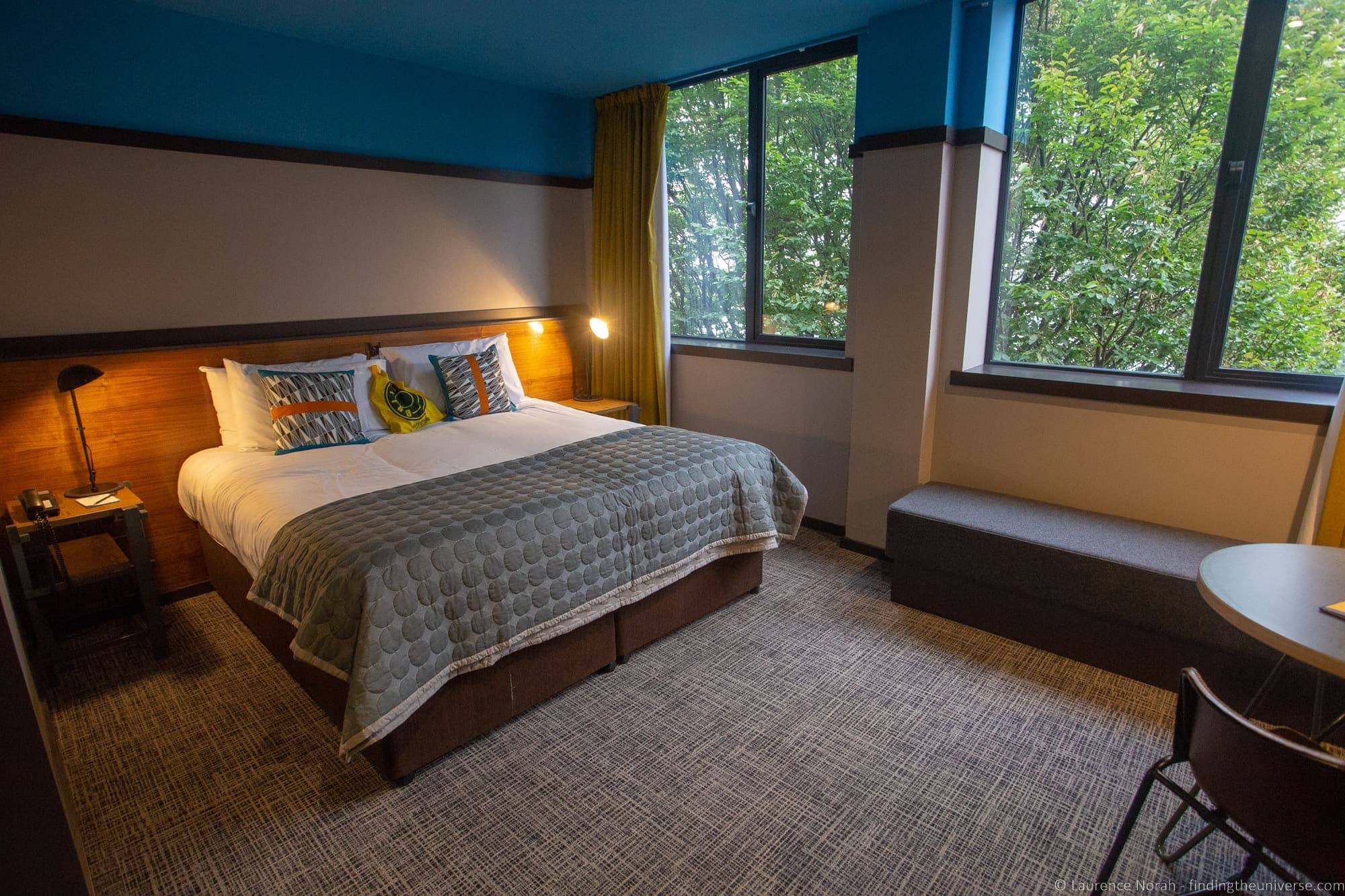
It also has an excellent on site restaurant, as well as three bars to choose from – including the previously mentioned Babel Bar. Staff were friendly and very knowledgeable about the area, and we have no hesitation in recommending this as a central Belfast option. See prices and book online here .
Of course, there are lots more options to choose from in Belfast when it comes to accommodation. As always, we recommend booking.com for planning your accommodation – they offer a range of properties from hotels to hostels and apartments, meaning you can usually find what you need. Some options to consider include the following:
- Belfast International Youth Hostel – One of the best centrally located hostels in Belfast in our opinion. It offers private shared and private dormitory rooms, an on-site cafe, linens, a communal kitchen, a breakfast menu, self-service laundry, and even free parking (rare in Belfast!).
- easyHotel – This well-rated budget hotel offers no-frills but comfortable rooms and a 24 hour staffed desk. A great central option for those on a tighter budget.
- Jurys Inn – This 4-star hotel offers spacious rooms, breakfast buffet, bar, and restaurant. We have stayed in a number of Jury’s Inns and have always found that they provide good value for money.
- The Titanic Hotel – on a subsequent visit to Belfast where we were focusing on the sights in the Titanic Quarter, we stayed at this hotel. It’s found opposite the Titanic Belfast attraction, and is actually in the original buildings where the Titanic was designed. We enjoyed our stay here.
- The Merchant Hotel – A beautiful 5-star historic luxury hotel in the heart of Belfast. Found in a beautiful 1860 building, the hotel offers all the luxury amenities you would expect, including a restaurant, bar and lounge, spa, hot tub, and a rooftop gymnasium.
You can see all the listings available in Belfast here .
Getting To and From Belfast
Belfast is an easy city to reach from multiple locations around the world.
From Ireland, there’s a direct rail link between Dublin and Belfast which takes just over two hours. From the rest of the Republic of Ireland you’ll probably want to take the train to Dublin and then continue on to Belfast.
There are also multiple bus options from Dublin, including direct from Dublin Airport. Journey time is around two hours, depending on traffic. It’s also easy to drive yourself of course.
From the UK, you can either fly or take the ferry. Ferries to Belfast depart from Liverpool, Cairnryan (Scotland) and the Isle of Man. We travelled with Stena Line and enjoyed the crossing from Cairnryan in Scotland. You can book your ferry here .
Numerous flights service Northern Ireland’s three major airports, with service from the UK, continental Europe and North America. There are even more options available if you include Dublin Airport as an option. We recommend checking prices on flights using Kiwi.com for the best deals.
Saving Money in Belfast
Belfast has a visitor pass which offers free public transport around the city and discounted admission on a number of attractions as well as food.
It’s probably going to be the easiest way to manage your public transport around the city if you plan on using it, plus the discounts can quickly pay for the cost of the card, which is very reasonably priced.
You can buy the Belfast Visitor Pass for 1, 2 or 3 days, either from the tourist office in the city, or online from the Visit Belfast website here .
When to visit Belfast
The Emerald Isle, as Ireland is often referred to, did not get its lush green colour as a result of being a dry and sunny hotspot. As such, similarly to Scotland, the weather in Belfast and Northern Ireland is best described as changeable, although we had our share of sunny weather.
Rain is a possibility year round, but if you want a chance at better weather, then May through September are your best options. The city is a popular destination year round, and there are plenty of indoor attractions to keep you busy regardless of the weather outside.
Belfast also plays host to events throughout the year, so if you are interested in attending one of these, check the Visit Belfast events page for ideas on what’s on that you might want to see.
How to Get around Belfast
Belfast is an easy city to get around on foot, and many of the attractions on this list are a short walk apart.
The city also has an excellent public transport system which includes buses as well as local trains. The aforementioned Belfast Visitor Pass makes it affordable to get everywhere you need to go, including to and from the airport.
In particular, of the attractions on this list, you might want to take a bus to the Crumlin Road Gaol, Ulster Museum, and perhaps from the Titanic Quarter to central Belfast.
There’s also a hop on hop off bus tour of Belfast you can take, which visits all the attractions covered in the article.
There are also taxis available, which can be quite cost effective for shorter journeys, especially if you are in a group. You can either hail these on the street, or book in advance – we recommend a taxi booking service called minicabit, book them for Belfast here .
Further Reading
Well, that sums up our idea of how to spend two days in Belfast! We’ve got a lot more content to come on the city which we’ll be linking to below, so do check back and don’t forget to subscribe to get updates on new content, which you can do here .
In the meantime, here’s some content to help you along with planning your Belfast trip.
- Our detailed guide to things to do in Belfast .
- A tour of Belfast’s street art
- Our detailed guide to Titanic attractions in Belfast , which includes the excellent Titanic Belfast.
- Our guide to visiting the Dark Hedges , an excellent day trip from Belfast
- Speaking of which, we have a complete guide to the best day trips from Belfast for more inspiration
- Our guide to the best Game of Thrones filming locations in Northern Ireland
- The highlights of the Causeway Coastal Route , which runs from Belfast right around the coast to Londonderry, and makes for an awesome road trip
- Our guides to spending 2 days in Dublin and 3 days in Dublin
- An overview of how much it costs to travel in the UK to help you with budget planning
- Our guide to spending 2 weeks in the UK , which includes time in Belfast
- A guide to driving in the UK , in case you choose to hire a car and do a road trip
- The official Visit Belfast website , which has lots of information to help you plan your visit
- If you are looking for a guidebook, we recommend the Lonely Planet guide to Ireland, the Rick Steves Northern Ireland guide or the DK Eyewitness Ireland Travel Guide
And that’s it! Hopefully you found this post useful. As always, if you have any feedback or questions, do let us know in the comments below.
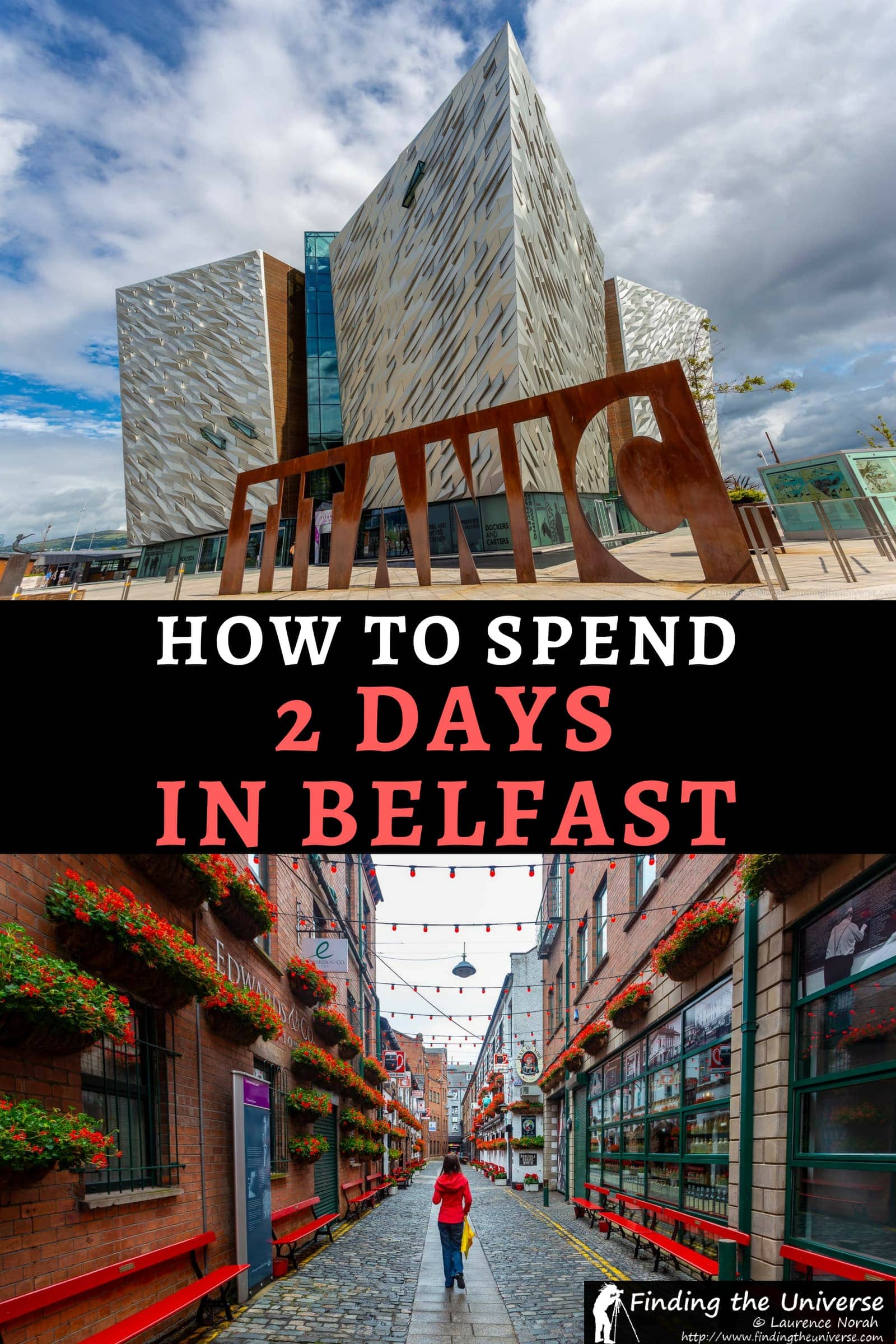
So you know: Our accommodation and tours in Belfast were covered by Discover Northern Ireland, who invited us to experience the country and write about it. We covered our own meals and other expenses, including transport and attraction entry, and as always, only share our honest opinions and advice. See our code of ethics for more on how we work with brands and destinations.
Enjoyed this post? Why not share it!
There are 6 comments on this post
Please scroll to the end to leave a comment
Geraldine Moran says
24th February 2022 at 9:37 am
Thanks for all that info – a group of us are going to Belfast next month on a 2-trip , this article will help us confirm our choices. Best wishes
Laurence Norah says
24th February 2022 at 11:13 am
My pleasure Geraldine, have a great trip!
24th February 2020 at 2:22 am
You guys are just amazing. What a well written experience. It is helping me plan so much of my trip
24th February 2020 at 12:38 pm
Thanks very much Udit, that’s very kind of you. Have a great trip, and if you have any questions just let us know!
Melissa says
26th September 2018 at 4:14 pm
Me and my boyfriend are planning a trip to Ireland and I would love to share this 2 days itinerary Belfast Google Maps with him but I can’t because of the permissions. can you please change from “Private” to “Public on the web” ? I really enjoyed all of your itineraries and we are going to follow them soon!
27th September 2018 at 12:38 am
Hey Melissa!
Sure thing, that should be working now 🙂
Let us know if you have any questions!
Leave a Reply Cancel reply
Your email address will not be published. Required fields are marked *
Let me know when there's a reply to my comment (just replies to your comment, no other e-mails, we promise!)
Subscribe to our monthly Newsletter where we share our latest travel news and tips. This also makes you eligible to enter our monthly giveaways!
We only ask for your e-mail so we can verify you are human and if requested notify you of a reply. To do this, we store your data as outlined in our privacy policy . Your e-mail will not be published or used for any other reason other than those outlined above.
Belfast Travel Guide
Book your individual trip , stress-free with local travel experts
Select Month
- roughguides.com
- Travel guide
- Local Experts
- Travel Advice
- Accommodation
Plan your tailor-made trip with a local expert
Book securely with money-back guarantee
Travel stress-free with local assistance and 24/7 support
The North’s largest city by some distance, with a population of some 270,000 in the inner city rising to 600,000 across its wider metropolitan area, Belfast has a pace and bustle you’ll find nowhere else in Northern Ireland. For many, however, the city will always be remembered as the focus of the Troublesthat dominated Northern Ireland’s politics for almost three decades from the late 1960s and scarred so many lives. Indeed, as the North continues to come to terms with the aftermath of the peace process, instigated by the 1998 Good Friday Agreement, the city remains in some ways on a knife’s edge, always expecting some new predicament to emerge.
Some history
Accommodation in belfast, eating in belfast, belfast drinking and nightlife, lgbt travel information for belfast, sports and outdoor activities in belfast, donegall square, the entries and around.
- Belfast's Cathedral Quarter
The Laganside
The golden mile, south belfast, west belfast, belfast’s murals, belfast and the titanic, east belfast, george best, the botanic gardens.
In appearance Belfast closely resembles Liverpool, Glasgow or any other industrial port across the water, and, similarly, its largely defunct docklands– in which, famously, the Titanic was built – are undergoing massive redevelopment. Though the city centre is still characterized by numerous elegant Victorian buildings, there’s been an enormous transformation here, too, not least in the greater prosperity of the shopping streets leading northwards from the hub of Belfast life, Donegall Square. Yet economic improvement is not reflected in every aspect of Belfast life. Some areas of the city display obvious economic decline, most notably North Belfast and the once-thriving so-called Golden Mile (now little more than a silver two hundred yards at each end). On week-nights the city centre can resemble a ghost town, though there’s no doubt that Belfast continues to thrive culturally. Theatre and the visual arts are flourishing, and there are plenty of places to catch the city’s booming traditional-music scene.
A couple of days are enough to get a feel for the city, although it is a good base from which to visit virtually anywhere else in the North. In the city centre, concentrate on the glories resulting from the Industrial Revolution – grandiose architecture and magnificent Victorian pubs – and the rejuvenated area from Ann Street to Donegall Street now known as the Cathedral quarter. To the south lies Queen’s University and the extensive collections of the Ulster Museum, set in the grounds of the Botanic Gardens. A climb up Cave Hill, a couple of miles to the north, rewards you with marvellous views of the city spread out around the curve of its natural harbour, Belfast Lough. The River Lagan flows towards Belfast Lough along the eastern side of the city centre and offers riverside walks, and is also the focus for the most radical development in the last few years, the Laganside, focused on the Waterfront Hall and the Odyssey Complex across the water. In East Belfast, across the river beyond the great cranes of the Harland & Wolff shipyard, lies suburbia and very little of interest apart from Stormont, the former Northern Irish parliament and home to the modern Assembly. The city’s once-formidable security presence and fortifications are now virtually invisible, but the iron blockade known as the Peace Line still bisects the Catholic and Protestant communities of West Belfast, a grim physical reminder of the city’s and country’s sectarian divisions – and there are certain flashpoints such as the Short Strand in East Belfast and North Belfast’s Ardoyne area that it is still inadvisable to visit.
Travel ideas for Ireland, created by local experts

Fascinating Ireland & North Ireland
Ireland is one of the most popular destinations for tourists: its rich cultural heritage, the beautiful landscapes and the laid-back lifestyle attract many travelers. Visit the famous Giant's causeway, fascinating Cliffs of Moher, the Ring of Kerry and many more highlights.

Spectacular Ireland
This itinerary will give you a chance to discover the most spectacular places in Ireland within eight days. Visit the Killarney National Park and the South West Coast of Ireland. Travel back in time during your visit on the Aran Islands and cross the region of Connemara.

Game of Thrones – Northern Ireland
The Seven Kingdoms await you in this Game of Thrones adventure. The incredible landscapes of Northern Ireland make up an enchanting array of fortresses, heart-stopping cliffs and countless small villages steeped in history. A trip to the universe of Game of Thrones is about to begin!

Pearls of Ireland: Cliffs of Moher, Galway and the Burren National Park
Take some time off with your family and friends and discover the most spectacular places that Ireland has to offer. In addition, we recommend you pay for the beautiful city of Dublin a visit.

The West Coast and Cliffs of Moher
This itinerary discovers the most authentic parts of the Emerald Isle. The spectacular Cliffs of Moher on the west coast, the many castles and fortresses in the south, together with the breathtaking landscapes of the Wicklow Mountains National Park presents the perfect backdrop to a trip.
Belfast began life as a cluster of forts built to guard a ford across the River Farset, which nowadays runs underground beneath the High Street. An Anglo-Norman castle was built here in 1177, but its influence was limited, and within a hundred years or so control over the Lagan Valley had reverted firmly to the Irish, under the O’Neills of Clandeboye. In 1604, Sir Arthur Chichester, whose son was to be the First Earl of Donegall, was “planted” in the area by James I, and shortly afterwards the tiny settlement was granted a charter creating a corporate borough. It was not until the end of the seventeenth century though that Belfast began to grow significantly, when French Huguenots fleeing persecution brought skills which rapidly improved the fortunes of the local linen industry – which, in turn, attracted new workers and wealth. Through the eighteenth century the cloth trade and shipbuilding expanded tremendously, and the population increased tenfold in a hundred years. With economic prosperity, Belfast became a city noted for its liberalism: in 1791, three Presbyterian Ulstermen formed the Society of United Irishmen, a gathering embracing Catholics and Protestants on the basis of common Irish nationality, from which sprang the 1798 Rebellion.
However, the rebellion in the North was quickly and ruthlessly stamped out by the English, and within two generations most Protestants had abandoned the Nationalist cause. Presbyterian ministers began openly to attack the Catholic Church, resulting in a sectarian divide that as time drew on became wider and increasingly violent. At the same time, the nineteenth century saw vigorous commercial and industrial expansion, and by the time Queen Victoria granted Belfast city status in 1888, its population had risen to 208,000, soon exceeding that of Dublin.
Book tickets and tours in Dublin
With Partition came the creation of Northern Ireland with Belfast as its capital and Stormont as its seat of government. Inevitably this boosted the city’s status, but also ensured that it would ultimately become the focus for much of the Troubles. Though its fortunes now reflected the status of the British economy, Belfast mainly fared well, despite major German bombing raids during World War II. However, the economic status of the Catholic population was deliberately maintained at a low level by the Stormont government, largely consisting of Protestant landowners and businessmen, which saw no reason to challenge existing sectarian employment, housing and policing policies – all fuel to the fire which was to follow.
For 25 years from 1969, Belfast witnessed the worst of the Troubles and, by the time the IRA declared a ceasefire in 1994, much of the city resembled a battle site. Then followed a sea change in the city’s fortunes as Britain and the EU funded a revitalization programme costing billions of pounds. Major shopping centres were built, swish hotels, bars and restaurants seemed to spring up almost overnight, and buildings such as the Waterfront Hall and Odyssey complex have fundamentally altered the city’s skyline. Young Belfast partied like never before – and to some extent still does – while the atmosphere of the whole city centre changed irrevocably.
Nevertheless, Belfast remains a city divided and all evidence suggests that sectarian attitudes are hardening, especially among young people, some of whom, though not old enough to remember the Troubles, regard the Orange Order marching season as an opportunity to confront both their “opposing” community and the police with bricks and petrol bombs. Yet while the peace is fragile, there is still optimism for the future as seen in the ambitious centenary celebrations that commemorated the launch of the Titanic, a product of Belfast’s once thriving docklands.
Belfast has a broad range of accommodation, especially at the top end of the market. However, there’s still a relative dearth of budget places. Much of the city’s accommodation is concentrated around Great Victoria Street and south of the centre in the university quarter, particularly on and around Botanic Avenue and in the network of streets running between the Malone and Lisburn roads. Many hotels and guesthouses are geared towards business travellers and so frequently offer significant reductions for weekend breaks; most hotels offer free wi-fi.
Eating out in Belfast is very much a movable feast with new places popping up and others vanishing or relocating. There are plenty of options for food during the day in the centre and at the southern end of the Golden Mile, ranging from new cafés (many of which in the city centre stay open until 8.30pm on Thurs nights) to traditional pubs (which generally only serve lunch but in some cases continue providing food until 9pm).
Most of the city’s well-established restaurants are around Donegall Square or in the university area. Bear in mind that they are often fully booked on Friday and Saturday evenings, so reserving a table’s essential unless you’re prepared to eat early. There is a fair choice of cuisine, from modern Irish and European, with French and Italian especially popular, to a smattering of Indian and East Asian restaurants. Standards are generally high and often exceptionally good value for money. The choice is limited for vegetarians but many places include veggie options on their menus.
Belfast has numerous excellent pubs concentrated in the city centre and the club and music scenes continue to thrive on Fridays and Saturdays, although Sundays can be quiet, with many bars closing early or remaining shut all day. To tap into the city’s pulse, your best bet is to wander around the Entries or up and around Donegall Street, while there’s plenty of action at each end of the Golden Mile. For the latest information on what’s going on, the monthly listings freesheet The Big List is essential, though the Belfast Telegraph also features extensive, if somewhat disorganized, listings.
As always in Ireland, the pubs are the heart of the city. The liveliest in the evenings are on Great Victoria Street, on and near Donegall Street, and around the university, and if you start drinking at the famed Crown Liquor Saloon you can manage a substantial pub crawl without moving more than a few hundred yards. Several of the finest pubs also offer regular traditional music sessions, usually free with your pint. If you’re short of time, you could always join the Historical Pub Tour, covering six of Belfast’s best-known bars. For pub reviews, check wwww.belfastbar.co.uk.
As well as the traditional music on offer in pubs, Belfast also benefits from a thriving indie and rock scene. There are always good up-and-coming bands playing in the city, just waiting to get noticed and the number of visiting international performers has increased dramatically since the opening of the Waterfront Hall and Odyssey Arena. Rock venues may charge between £5 and £20 depending on the act’s reputation. Pre-booked tickets for the biggest names will usually cost much more – between £15 and £75.
Clubs and DJ bars
Belfast’s club scene isn’t what it was ten years ago, but there are still plenty of dance dens, as well as pre-club DJ bars around. Check The Big List for who’s on when; you’ll find most venues run different clubs on different nights. Venues are scattered fairly evenly around the city centre; students – not surprisingly – tend to dominate those closest to the university area. Admission may be free early in the week (and at some places all week) and as low as £2 or £3 up to Thursday nights, while weekend prices are usually around £5 to £15. Many places stay open until 1am Monday to Thursday and till 2am on Fridays and Saturdays.
Classical music, opera and theatre
Almost all classical-music concerts take place in the Ulster or Waterfront halls, while opera fans are catered for by the Grand Opera House. Most of Belfast’s theatres are concentrated in the south of the city. Although the choice is relatively limited, there is still enough to please most tastes.
The main resource of Belfast’s gay scene is Queerspace, part of Cara-Friend, 9–13 Waring Street (wwww.queerspace.org.uk), a collective that aims to serve the needs and raise the profile of the gay, lesbian, bisexual and transgender community of Belfast and Northern Ireland; it holds weekly drop-in sessions on the afternoons of the first and third Saturdays of the month (3–6pm). Alternatively, there’s wwww.gaybelfast.net which provides plenty of information on entertainment and nightlife. Helplines include Cara-Friend (t028/9032 2023; Mon–Wed 7.30–10pm) and Lesbian Line (t028/9023 8668; Thurs 7.30–10pm). Belfast’s Gay Pride (wwww.belfastpride.com) week begins on the last Saturday in July.
The number of gay bars and venues has increased substantially over the last few years and the majority are geared towards men (check wwww.gaybelfast.net/scene.htm for listings) though there are occasional lesbian club nights organised by The Glory Box (wwww.gloryboxgurlz.com).
Though watching, discussing and betting on sport is as much of a pastime in Belfast as anywhere else, you’ll find very few locals expressing particularly passionate opinions about the city’s teams and players, with the notable exception of boxing. Indeed, when people watch sport here, it’s usually the televised variety, and attendances for most events are relatively small, an indifference that applies equally to the North’s national teams. Nevertheless, if you’re interested in attending a match of whatever kind, there are plenty of opportunities, and the Belfast Telegraph usually has the details.
The Northern Ireland football (soccer) team has enjoyed little success on the international stage over the last twenty years, but lit a blaze of glory in the summer of 2005 when it defeated England 1–0 in Belfast, reignited by a 3–2 victory over Spain the following year. Internationals are played at Windsor Park (the home ground of the Linfield club) near the Lisburn Road (buses #9A and #9B to Lower Windsor Avenue). The biggest club sides in Belfast – paradoxically enough – are Glasgow’s Celtic and Rangers, generally supported respectively by Catholics and Protestants, as well as Liverpool and Manchester United.
Since football is the Belfast sport, success at either hurling or Gaelic football has been lacking, and County Antrim (which in this case includes Belfast for sporting purposes) has never won either All-Ireland Senior Final. You can see both sports most weekends at Roger Casement Park, on Andersonstown Road (buses #10A, #10B, #10C and #10D).
The provincial rugby-union team, Ulster, plays its games at the Ravenhill Grounds, Ravenhill Park (bus #78), and features in both the Celtic League and the Heineken Cup. Perhaps the most popularly attended matches are the ice-hockey games at the Odyssey Arena, featuring the Belfast Giants.
The core of Belfast is the stately, though often traffic-clogged, Donegall Square. In its centre stands the City Hall, a vast, Neoclassical bulk. Completed in 1906 and made of bright white Portland stone, its turrets, saucer domes, scrolls and pinnacle pots are all representative of styles absorbed by the British Empire. In front stands an imposing statue of Queen Victoria, the apotheosis of imperialism, her maternal gaze unerringly cast across the rooftops towards the Protestant Shankill area. At her feet, sculpted in bronze, stand proud figures showing the city fathers’ world-view: a young scholar, his mother with spinning spool and his father with mallet and boat, the three of them representing “learning, linen and liners”, the alliterative bedrock of Belfast’s heritage.
The predominantly pedestrianized streets north from Donegall Square lead you into downtown Belfast. The main shopping street, Donegall Place, continues into Royal Avenue and houses familiar chain-store names. Castle Place, off Donegall Place, was once the hub of Victorian Belfast, and the grand old department stores here, in creams, pinks and browns, have been transformed into a plethora of voguish shops, though happily only the ground-floor frontages have been converted, leaving the lofty grandeur of the storeys above undisturbed.
East along Castle Lane or Castle Place leads to Ann Street and the High Street, interlinked by the narrow alleyways known as the Entries. You’ll stumble across some great old saloon bars down here, like The Morning Star in Pottinger’s Entry, with its large frosted windows and Parisian-café-like counter, and White’s Tavern in Winecellar Entry, which dates from the seventeenth century. Crown Entry was where the Society of United Irishmen was born, led by the Protestant triumvirate of Wolfe Tone, Henry Joy McCracken and Samuel Nielson. Nielson also printed his own newspaper in this area, the Northern Star; heavily influenced by the French revolutionary ideals of liberty, equality and fraternity, the newspaper’s inflammatory material led to his being hounded out of town.
From the High Street, a similar set of Entries used to run through to Waring Street to the north, but was destroyed by bombing in World War II. Still, this end of the High Street, with the River Farset running underground, is the oldest part of the city, its atmosphere in places redolent of the eighteenth century.
Belfast's Cathedral Quarter
The area north of Waring Street has seen much redevelopment in recent years, with plenty of new restaurants and bars opening up – some of which offer a wide range of entertainment, such as the excellent John Hewitt – leading to its acquisition of the term Cathedral quarter to suggest a Parisian ambience, though one as far removed from the Left Bank as it’s possible to imagine.
A couple of hundred yards up Donegall Street you’ll find the most monolithic of all the city’s grand buildings, the Protestant St Anne’s Cathedral, a neo-Romanesque basilica started in 1899, but not fully completed until 1981. Entrance is via the huge west door, immediately to the right of which is the baptistery, with an intricately designed representation of the Creation on its ceiling consisting of 150,000 tiny pieces of glass. Most significant, however, is the cathedral’s only tomb, marked by a simple slab on the floor of the south aisle, which contains the body of Lord Edward Henry Carson (1854–1935). The symbol of Partition, he’s seen either as the province’s saviour or as the villain who sabotaged Ireland’s independence as a 32-county state.
Lord Edward Carson
Lord Edward Carson is a name that Northern Ireland has never forgotten. A Dubliner of Scots-Presbyterian background, he took the decision in 1910 to accept the leadership of the opposition to Home Rule, which in effect inextricably allied him to the Ulster Unionist resistance movement. Yet, though this association is about the only thing for which he is remembered, his personality and integrity went far deeper than this. He abhorred religious intolerance, and behind the exterior of a zealous crusader was a man who sincerely believed that Ireland couldn’t prosper without Britain and only wished that a federalist answer could have involved a united Ireland. Nonetheless, this was the same man who, as a brilliant orator at the bar, and in the role he loved the most, brought about the humiliating destruction of Oscar Wilde at the writer’s trial in 1895.
On Donegall Quay is the ambitious Laganside development project, the first component of which to be completed was the Lagan Weir, designed to protect the city against flooding. Millions of pounds have been pumped into dredging the river to maintain water levels and revive the much depleted fish population – successfully it seems: there was salmon fishing on the weir’s inauguration day. However, little can be done to restore the river’s erstwhile crucial role in the successful development of the city as a centre for industries as diverse as linen, tobacco, rope-making and shipbuilding – a glance across the river to the Harland & Wolff shipyard confirms that the last-named still survives.
If the sea air’s twitching your nostrils, head a few hundred yards further north towards the ferry terminals, where you’ll find the restored Harbour Office and nearby Sinclair Seamen’s Church on Corporation Square. The latter is yet another Lanyon design, but it’s the contents that are most intriguing. Sailors must have felt truly at home among the cornucopia of maritime equipment – an old-fashioned wooden wheel, the bell from HMS Hood, assorted navigation lights and a ship’s prow for a pulpit.
The most obvious changes to the city’s skyline can be seen from almost any river viewpoint: further south along Oxford Street sits the glittering two-thousand-seater Waterfront Hall concert venue, a housing development and a Hilton hotel.
The Odyssey
Across the river on Queen’s Quay, the massive Odyssey leisure complex features a ten-thousand-seater indoor arena, cinemas and a complex of bars, restaurants and shops. Also here is the Whowhatwherewhenwhy scientific discovery centre, known as W5 with over 150 interactive exhibits, aimed primarily at children. Best of these is the See/Do section in which you can create your own animated cartoon and have a go at composing on a laser harp. From mid-July to August, W5 also runs a series of special workshops for children – the subjects change annually.
The strip of Belfast running south along Great Victoria Street to Shaftesbury Square and thence to the university area and beyond is ascribed the name of the “Golden Mile”, though in its present state its middle is, in truth, mostly a pretty depressing stretch of boarded-up businesses and building sites.
It begins at the grandiose, Victorian Grand Opera House, which sits just a short distance west of Donegall Square at the northern end of Great Victoria Street. At the northern head of the street, almost opposite the Europa Hotel, stands one of the greatest of Victorian gin palaces, the Crown Liquor Saloon. The saloon has a glittering tiled exterior resembling a spa baths more than a serious drinking institution, while inside the scrolled ceiling, patterned floor and the golden-yellow and rosy-red hues led John Betjeman to describe it as his “many coloured cavern”. Once armed with drinks (and if it’s not too crowded, or lunchtime when they’re reserved for diners only), grab one of the snugs and press the button to receive service. If the snugs are all busy, it’s still a great experience to sit or stand at the bar, with its carved-timber dividing screens, painted mirrors and frieze-decorated oak panelling.
Before heading into the university quarter, sidestep off Great Victoria Street into Sandy Row, which runs parallel to the west. A strong working-class Protestant quarter (with the tribal pavement painting to prove it), it’s one of the most glaring examples of Belfast’s divided world, wildly different from the city centre’s increasingly cosmopolitan sophistication, yet only yards away. In Blythe Street and Donegall Road, off to the west, are some of the murals that characterize these sectarian areas (see Belfast’s murals). Sandy Row used to be the main road south and, although hard to credit today, it was once a picturesque stretch of whitewashed cottages.
Towards the Golden Mile’s southern extremity lies the university area, the focal point for South Belfast’s attractions (wwww.visitsouthbelfast.com). You’re likely to spend much of your time in the area, since it boasts plenty of eating places, pubs and a range of accommodation. Near Queen’s University are the lush Botanic Gardens, within which sits the vast Ulster Museum, displaying everything from dinosaur bones to contemporary art. Heading south from here along Stranmillis Road it’s a relatively short step east to the Lagan Towpath, running several miles southwest to Lisburn, while a detour along the way leads to the Neolithic earthwork known as the Giant’s Ring.
The university quarter
Towards the Golden Mile’s southern extremity lies the university quarter. You’re likely to spend much of your time in the area, since it boasts plenty of eating places, pubs and a range of accommodation. Just south of Shaftesbury Square stand three churches – Moravian, Crescent and Methodist – whose distinctive steeples frame the entrance to the university quarter. From here, leading up to the university buildings, the roads are lined with early Victorian terraces that represent the final flowering of Georgian architecture in Belfast. The Upper Crescent is a magnificent curved Neoclassical terrace, built in about 1845 but sadly neglected since; it is now used mainly for office space. The Lower Crescent, perversely, is straight.
Queen’s University is the architectural centrepiece of the area, flanked by the most satisfying example of a Georgian terrace in Belfast, University Square, where the red brickwork mostly remains intact, with the exception of a few bay windows added in the Victorian era. The university building itself was constructed in 1849 as a mock-Tudor remodelling of Magdalen College, Oxford, to a design by Lanyon, and houses a visitor centre, which provides information about the university, hosts a series of art exhibitions, and runs guided tours. Across the road from here is the Students’ Union, a white 1960s design. The Italianate Union Theological College, nearby on College Park, also by Lanyon, was temporarily the site of the Northern Ireland Parliament until 1932 when Stormont was built. A little further south down University Road, the university bookshop is especially good for Irish history and politics and has particularly impressive fiction, drama and poetry sections.
The Ulster Museum
Within the Botanic Gardens is the Ulster Museum which reopened in 2009 after a long redevelopment programme. Retaining its original eighty-year old shell, the Museum now incorporates a bold modernist design and sheds light both literally and figuratively on subjects from the North’s troubled history to Ireland’s geological past. The grand open-plan ground floor, which also features a much-improved café, introduces some of the museum’s themes via its “Window on the World” displays which include everything from an impressive dinosaur skeleton to an Alexander McQueen dress. From here it’s best to head up to the third floor to explore the art exhibits. The undoubted highlights here are the modern art collection (featuring Francis Bacon’s macabre Head II, Bridget Riley’s unnerving Cataract IV and Stanley Spencer’s parochial The Betrayal), and the stunning landscapes and rural scenes by painters such as Belfast’s Sir John Lavery, plus Turner’s highly symbolic Dawn of Christianity.
The second floor features the “Nature Zone”, depicting the Earth’s origins and Ireland’s development up to the Ice Age. Far more engrossing are the first floor’s history galleries which begin with Neolithic remains and Bronze Age finds (including a remarkable three-foot wide decorated shield), before taking a detailed look at the medieval period – two exhibits to look out for here are the somewhat skew-whiff stone inauguration chair of the O’Neills of Clandeboye and the silver gilt arm-reliquary supposedly created to house St Patrick’s hand. The Armada gallery includes plenty of relics from the ill-fated Girona which sank off the Antrim coast in 1588, while the Ascendancy section includes a remarkable rag-bound tally-stick, used to record the number of prayers said during the then illegal outdoor Catholic service, as well as highlighting the effects of the Great Famine.
From here the exhibits quicken up a pace, especially when focusing upon the War of Independence and the North’s resistance to Dublin rule, before looking at Belfast during World War II and concluding with a disappointingly bland space devoted to The Troubles.
For an unsurpassable overview of the whole city and lough, a climb up Cave Hill, to the north, is a must. Several paths lead up from Belfast Castle’s estate to the hill’s summit – a rocky outcrop known as “Napoleon’s Nose”. From here you can’t help but appreciate the accuracy of the poet Craig Raine’s aerial description of the city in his Flying to Belfast as “a radio set with its back ripped off”. Cave Hill was once awash with Iron Age forts, for there was flint (for weapon making) in the chalk under the basalt hill-coverings. In 1795, Wolfe Tone, Henry Joy McCracken and other leaders of the United Irishmen stood on the top of Cave Hill and pledged “never to desist in our efforts until we have subverted the authority of England over our country and asserted our Independence”.
Though the nexus of the Troubles for 25 years, today West Belfast is as safe as anywhere else in the city to visit. However, there’s little of architectural note among the mainly residential streets and most of the “sights” are associated with the area’s troubled past. Much of the old terraced housing has been replaced in recent years by rows of modern estates, but it’s impossible to miss examples of the partisan mural paintings that decorate walls and gable ends in both Catholic and Protestant areas. Tourist information about the area is available from the West Belfast Tourist Information Point.
The Troubles in West Belfast
The Troubles in West Belfast have their origins in the nineteenth century, when the city’s population expanded dramatically as people flocked from the countryside to work in the booming new flax and linen industries. Many of these migrants were crammed into jerry-built housing in the grids of streets which still today define this part of the city. Conditions were deplorable and did nothing to ease tensions between Catholic and Protestant residents. There were numerous sectarian riots – the worst was in 1886, during the reading of the Home Rule Bill, when 32 people died and over 370 were injured – leading to the almost inevitable definition of two separate neighbourhoods, as Protestant and Catholic families alike began to migrate to more secure surroundings.
In 1968 and 1969, this division was pushed to its limit when, across the city, sectarian mobs and gunmen evicted over eight thousand families from their homes, mainly in Catholic West Belfast. The Royal Ulster Constabulary, or RUC, called for government assistance, and British troops arrived on the streets on August 15, 1969. A month later the makeshift barrier dividing the Catholic Falls from the Protestant Shankill had become a full-scale reinforced “peace line”. British intervention may have averted a civil war, but it failed to prevent an escalation in sectarian conflict. Indeed, the army soon came to be viewed as an occupying force and a legitimate target for a reviving IRA, though local sympathies for its aims were much diminished by the 1972 Bloody Friday bombings. In return, Loyalist paramilitaries sought to avenge Republican violence, often through indiscriminate killings, such as the atrocities carried out by the Shankill Butchers in the 1970s, so called because they used butchers’ knives to first maim then murder their Catholic victims. These in turn sparked Republican “tit-for-tat” attacks against Loyalists and commenced a cycle which finally reached its nadir with the Shankill Road bombing, a botched attempt to blow up Loyalist paramilitary leaders supposedly meeting above a fish shop on the Shankill Road in 1993, which instead killed customers and the shop’s owner.
Over the next 25 years, West Belfast remained the major battleground of the Troubles. The busy Westlink motorway separates West Belfast from the rest of the city, and at the height of the conflict the various overhead bridges and roundabouts were used by the police and army as virtual border crossings to control access to and from the area.
From the city centre, Divis Street, a westward continuation of Castle Street, leads to the Falls Road, which heads on for a further two miles west past Milltown Cemetery and into Andersonstown. The first part of the Falls Road is known as the Lower Falls where most of the land to the left (south) consists of modern red-brick terraced housing estates. The right-hand side of the road is more of a hotchpotch and features some of the local landmarks: the bright blue swimming baths and the DSS (the Department of Social Security, known as “the Brew” – a corruption of “bureau”), cooped up in an awning of chicken-wire. Down Conway Street (by the DSS), stands the old Conway Mill, revitalized by a concerted community effort. Inside you can investigate the wares of the numerous small businesses and local artists who operate from here, as well as an art gallery and a small exhibition depicting the mill’s history. All the way along the Falls Road you’ll spot, blocking the ends of the streets to the right, walls of iron sheeting. These comprise the “Peace Line”, and directly behind them is the Protestant working-class district of Shankill.
Further west lie the red-brick and more recent buildings of the Royal Victoria Hospital, at the junction with Grosvenor Road. During the Troubles, the Royal, as it’s known locally, received international acclaim for its ability to cope with the consequences of the violence. Just beyond it, in a disused Presbyterian church at 216 Falls Rd, is the Cultúrlann MacAdam Ó Fiaich, a cultural centre for Irish-speakers, housing an extensive bookshop (also selling traditional-music CDs), an excellent café and a thriving theatre, often the host to musical events. Although you are unlikely to hear it being spoken on the streets or in most pubs, the Irish language is flourishing in Catholic areas of Belfast and throughout the North.
The Protestant population of West Belfast lives in the area abutting the Falls to the north, between the Shankill Road and the Crumlin Road. As with the Falls, there’s little here of special interest, apart from an array of Loyalist murals (some even including web addresses). Along the Crumlin Road, in particular, are a number of evocative sites symbolizing the worst years of the Troubles. From the Westway you’ll pass between the courthouse and the notorious Crumlin Road Gaol, the two connected by an underground tunnel; former inmates include Éamon de Valera, Gerry Adams and Ian Paisley and it closed in 1996. The gaol is currently being refurbished with a view to reopening in 2011 with visitors’ tours and occasional cultural events planned. Despite many other obvious signs of redevelopment and renovation – the most apparent being the recently constructed leisure centre – the area is in decline, its population shrinking in inverse proportion to the Catholic population on the other side of the Peace Line.
As much a marker of an area’s allegiances as painted kerbstones or fluttering flags and bunting, the politically inspired murals of Northern Ireland are among the most startling sights not just in Belfast, but of the whole country. This ephemeral art form, which recycles the images and slogans of the Troubles, characterizes the violent struggles of the last few decades. Though many have been in place now for a decade, some of the slogans and murals mentioned here may have vanished by the time of your visit: new murals are painted over old ones or the houses they adorn are demolished. A detailed archive of Northern Ireland’s murals is maintained by the University of Ulster at wcain.ulst.ac.uk/mccormick and another large collection of photographs can be found at wwww.belfast-murals.co.uk.
Loyalist murals
For most of the twentieth century, mural painting in Northern Ireland was a predominantly Loyalist activity. The first mural appeared in East Belfast in 1908 and, like many of its successors, celebrated King Billy’s victory at the Battle of the Boyne. Loyalist murals have tended to use imagery symbolic of power, such as the clenched scarlet fist, known as the Red Hand of Ulster, or flags, shields and other heraldic icons. However, the Loyalist response to the Troubles translated into what is now the most common form of painting, the militaristic mural. If King Billy appears at all, it is often with a guard of balaclava-clad, weapon-toting paramilitaries, accompanied by a threatening slogan. Inspired by the desire for “no surrender” and preservation of the status quo, Loyalist mural-painting is certainly less dynamic and diverse than its Republican counterpart. A typical example, on Hopewell Crescent in the Lower Shankill, shows two masked gunmen crouching beside a clenched red fist which is surrounded by the Union Flag and the flags of Ulster, the UFF and UDA – part of the slogan reads “Lower Shankill UFF. Simply the best.”
Recently, Loyalist murals have sought to undermine Sinn Féin’s role in the peace process by attacking the IRA – a striking five-panelled example on the Shankill Road recalls a number of IRA bombings of Loyalist targets and carries the slogan, “30 Years of Indiscriminate Slaughter by So-Called Non-Sectarian Irish Freedom Fighters”.
The greatest concentration of Loyalist murals is to be found on and around the Shankill Road, especially the Shankill Estate, to the north, and Dover Place, off Dover Street, to the south. Other areas are Sandy Row and Donegall Pass in South Belfast, and Newtownards Road, Martin Street and Severn Street in East Belfast.
Republican murals
Republican murals were at first limited to simple sloganeering or demarcation of territory, the best-known example being the long-standing “You are now entering Free Derry” in that city’s Bogside district. As with much else in Republican politics, however, the 1981 hunger strikes had a significant influence. Murals in support of the ten hunger strikers abounded and the (usually smiling) face of Bobby Sands – the IRA commander in the Maze prison who led the strike – remains an enduring image. Murals soon became a fundamental part of the Republican propaganda campaign and an expression of the community’s current cultural and political concerns, though militaristic images have never really dominated Republican murals as much as they have done Loyalist ones. Prominent themes have been resistance to British rule, the call for the withdrawal of troops and questioning the validity of the police.
More recently, however, Republican muralists have turned increasingly to Irish legends and history as their sources of inspiration and the only militaristic murals tend to be found in flashpoints such as the Ardoyne. Equally, artists have paid tribute to other international liberation movements, as in a striking series of murals on Divis Street just before the beginning of the Falls Road. Further Republican murals can be found nearby on Beechmount Avenue, on Lenadoon Avenue in Andersonstown, and on New Lodge Road in North Belfast.
Belfast has numerous festivals throughout the year and a full calendar can be found at www.belfastcity.gov.uk/culture/festivals.asp .
- Guinness Belfast Nashville Songwriters Festival wwww.belfastnashville.com.The North’s love of country music is reflected by this citywide weeklong event in late February, featuring local talent and major US names.
- St Patrick’s Day wwww.belfastcitygov.co.uk/events. Carnival parade on 17 March, followed by a major open-air concert in Custom House Square.
- Titanic Made in Belfast Festival wwww.belfastcity.gov.co.uk/events. More than a week of events early in the month celebrating the city’s maritime culture.
- Belfast Film Festival t028/9024 6609, wwww.belfastfilmfestival.org. The second half of April sees a host of left-field movies and related events with screenings in cinemas, pubs, clubs and other venues.
- Festival of Fools www.foolsfestival.com. Five-day international street theatre festival, held over the first weekend in May, with events around the city centre.
- Cathedral Quarter Arts Festival wwww.cqaf.com. Lively arts festival, featuring Irish and international acts, spread over ten days in early May.
- Belfast City Carnival www.belfastcarnival.com . Annual themed festival in mid-June centred around a parade and live music in Donegall Square.
- Orange Order Parades Orange Order Lodges throughout Belfast commemorate the Battle of the Boyne with parades on 12 July.
- Féile An Phobail wwww.feilebelfast.com. Week-long music and dance festival at the beginning of August based in West Belfast.
- Belfast City Blues Festival wwww.belfastcityblues.com. Three days of 12-bar honky-tonk and foot-stomping riffs at the end of August.
- Open House Festival wwww.openhousefestival.com. Rock, folk and traditional music festival held at various venues around the Cathedral Quarter early in September.
- Belfast Festival at Queen’s wwww.belfastfestival.com. Fortnight-long event held in late October which claims to be Britain’s second-biggest arts festival after Edinburgh.
Much of Belfast’s waterside heritage is associated with English engineer Edward James Harland (1831–1895) who together with his German-born assistant Gustav Wilhelm Wolff (1834–1913) founded the Harland and Wolff shipbuilding company here in 1861. Starting from a small shipyard on Queen’s Island, the company grew rapidly and over the following decades had gained a reputation for innovations such as iron (rather than wooden) decks and flatter, squarer hulls designed to maximise capacity. The firm continued to flourish after Harland‘s death and Wolff’s retirement, most notably when it constructed three steamships for the White Star Line – the Olympic, the Britannic and, most famously, the Titanic. Completed in 1912, the Titanic, then the world‘s largest passenger-carrying steamship, sank on April 14 of the same year, just four days into her maiden voyage from Southampton to New York, having collided with an iceberg in the North Atlantic. More than 1500 of the 2200-plus passengers and crew drowned, a tragedy that continues to hold a macabre fascination today.
East Belfast’s skyline is dominated by the Samson and Goliath cranes which tower above the Harland & Wolff shipyard. The shipyard is the city’s proudest international asset – the ill-fated Titanic was built here – and is said to possess the largest dry dock in the world: over 600m long and 100m wide. Unfortunately, the area is very security-conscious and access is impossible without making a formal application.
East Belfast is trying hard to draw interest to its few attractions: there are notable murals at Freedom Corner near the beginning of the Newtownards Road, and the area does have some well-known scions. The theologian and author of the Narnia chronicles, C.S. Lewis, was born in Dundela Villas, and there’s a plaque commemorating him at Dundela Flats, which stand on the site where the house once stood, off Dundela. Another plaque on Burren Way in the Cregagh estate commemorates the childhood home of the late footballer George Best. And Van Morrison fans might get a thrill from seeking out his birthplace, a private house (with no public access) at 125 Hyndford St, off Beersbridge Road, and the many streets that feature in his songs (Cyprus Avenue, Castlereagh Road and others).
Maradona good, Pele better, George Best (popular Belfast sporting adage).
Born in East Belfast in 1946, George Best became (and remains to this day) Northern Ireland’s most celebrated footballer. Rejected by local clubs, he was signed by Manchester United, then as now England’s glamour team. Making his debut aged 17, Best starred in the 1964-65 and 1966-67 Championship-winning teams, cementing his reputation as a dazzling, jinking and goal-scoring winger. His good looks, long hair, gift of the gab and love of the high life also led to his acquisition of the sobriquet “the fifth Beatle”. Further fame was assured when United beat Benfica 4–1 in the 1967 European Cup Final, Best scoring one of the goals and running the Portuguese team’s defence so ragged before a vast televised audience that his award of European Footballer of the Year was a foregone conclusion.
The latter half of the 1960s saw Best’s celebrity lifestyle (by then he owned nightclubs and boutiques and had dated at least one Miss World) consumed by gambling, alcoholism and chasing women. He walked out of United in 1974, and after that his footballing career declined rapidly, taking in spells in the US and Australia. Alcohol addiction led to a stint in prison in 1984, after which Best was found guilty of drunk driving and assaulting a police officer. By 2002 his health was so poor that he underwent a liver transplant, but continued to drink after its success and eventually succumbed to multiple organ failure in November 2005.
Some 100,000 mourners lined the streets of Belfast as Best’s coffin travelled to his funeral service at Stormont. Belfast City Airport was subsequently renamed in his honour and, in 2006, the Ulster Bank issued one million £5 notes bearing his picture – the entire issue was rapidly snapped up for keepsakes. The great sadness of Best’s football career was that, despite 37 caps for Northern Ireland, he never appeared in a major international competition such as the World Cup) but he inspired a host of young footballers and, indeed, numerous jokes, not least his own oft-quoted remark: “I spent a lot of my money on booze, birds and fast cars. The rest I just squandered.”
Four miles east of the centre, off the Newtownards Road, is Stormont, the home of the Northern Ireland Parliament until the introduction of direct rule in 1972, and now housing the Assembly created by the 1998 Good Friday Agreement. You can’t visit the house itself, unless invited by an Assembly member, but it’s an impressive sight, a great, White Neoclassical mansion crowning a rise in the middle of a park (with adjacent cricket field) at the end of a magnificent long, straight drive. You can wander freely in the grounds, a popular place for a walk. Also here, though obviously not open to the public, is Stormont Castle, the office of the British Secretary of State for Northern Ireland.
Just below Queen's University are the popular Botanic Gardens, first opened in 1827 and well protected by trees from the noise of the surrounding traffic. Within the gardens is the Palm House, a hothouse predating the famous one at Kew Gardens in London, but very similar in style, with a white-painted framework of curvilinear ironwork and glass. It was the first of its kind in the world, another success for Lanyon, who worked in tandem on this project with the Dublin iron-founder Richard Turner. The nearby Tropical Ravine is a classic example of Victorian light entertainment – a hundred-year-old sunken glen chock-full of “vegetable wonders” extracted from far-flung jungles and replanted for the delight of the visiting Belfast public.
Planning a trip? Find out the best ways to get to Ireland .
Discover more places in Ireland

- Travel Guide Morocco
- Travel Guide Namibia
- Travel Guide South Africa
- Travel Guide China
- Travel Guide India
- Travel Guide Indonesia
- Travel Guide Japan
- Travel Guide Laos
- Travel Guide Malaysia
- Travel Guide Myanmar (Burma)
- Travel Guide Nepal
- Travel Guide Philippines
- Travel Guide Singapore
- Travel Guide South Korea
- Travel Guide Sri Lanka
- Travel Guide Taiwan
- Travel Guide Thailand
- Travel Guide Australia
- Travel Guide Fiji
- Travel Guide New Zealand
- Travel Guide Belize
- Costa Rica Travel Guide
- Travel Guide Cuba
- Travel Guide Guatemala
- Travel Guide Honduras
- Travel Guide Jamaica
- Travel Guide Nicaragua
- Travel Guide Panama
- Puerto Rico travel guide
- Travel Guide Trinidad and Tobago
- Travel Guide Albania
- Travel Guide Austria
- Travel Guide Belgium
- Travel Guide Bosnia-Herzegovina
- Travel Guide Bulgaria
- Travel Guide Cyprus
- Travel Guide Czechia (Czech Republic)
- Travel Guide Denmark
- Travel Guide England
- Travel Guide Estonia
- Travel Guide Finland
- Travel Guide France
- Travel Guide Germany
- Travel Guide Greece
- Travel Guide Hungary
- Iceland Travel Guide
The Rough Guides to Ireland and related travel guides
In-depth, easy-to-use travel guides filled with expert advice.
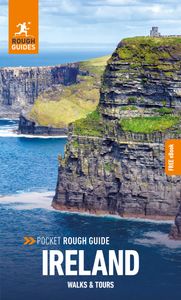
Find even more inspiration here

Planning your own trip? Prepare for your trip
Use Rough Guides' trusted partners for great rates
written by Rough Guides Editors
updated 06.06.2021
Ready to travel and discover Ireland?
Get support from our local experts for stress-free planning & worry-free travels.
- Travel advice
- Where to stay
Belfast Travel Guide: Best Places To Stay, Eat And See (For 2024)
Categories Antrim , Travel Guides
Are you looking for a comprehensive Belfast travel guide ?
Belfast , by far the largest city in the North, has a pace and bustle found nowhere else in Northern Ireland . Many will remember the city as the core of the Troubles, which dominated Northern Ireland’s politics for over three decades beginning in the late 1960s and claimed so many lives.
However, following the signing of the Good Friday Agreement in 1998, the majority of politically driven violence has diminished. Based on a comparison of national crime numbers, Belfast was recently declared the safest city in the United Kingdom.
As part of its dedication to peace, the city now invites visitors from all over the world, notably from countries other than the Republic of Ireland and the rest of the United Kingdom.
A visit to Belfast today offers a glimpse of a one-of-a-kind city that has finally begun to celebrate, rather than struggle for, its position as a cultural crossroads between Britain and Ireland. Belfast’s turbulent history also makes it an appealing destination for travelers from all over the world.
The city undoubtedly radiates a determined optimism, with new hotels , bars , restaurants , clubs, and stores opening at an astounding rate.
Things you'll find in this article
Belfast Travel Guide (For 2024)
Best time to visit belfast, how to get around belfast, where to stay in belfast, where to eat in belfast, where to drink/party in belfast, things to do in belfast.
Are you planning to visit here soon? This Belfast travel guide will help you make the most of your trip and discover why this Northern Ireland city is more than its difficult past.
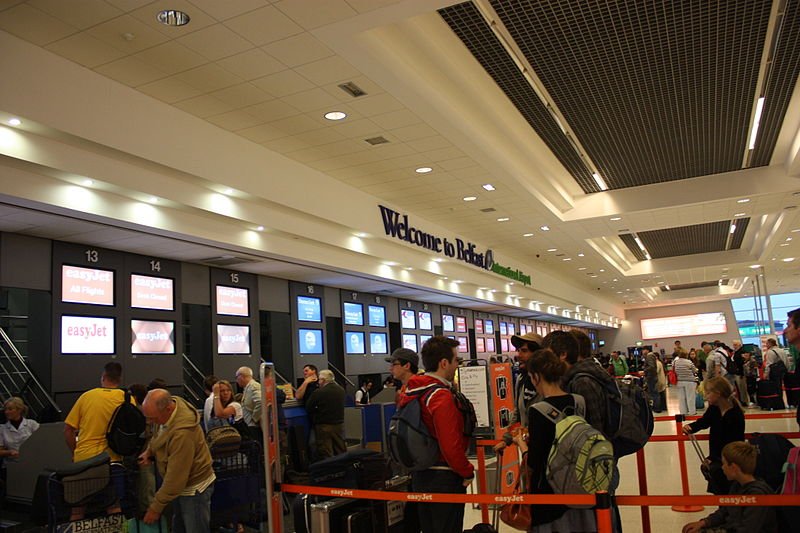
Belfast is located inland in the eastern part of Northern Ireland, hence it is dryer than the western cities. In the winter, the days are short, but the evenings are long. Winter is the wettest season, but it can rain at any time in Belfast.
Belfast is best visited between April and October . Summer is a terrific season to visit because the average high temperature is 82 degrees, so you’ll never be too hot. Bring an umbrella and water-resistant shoes, though, in case of rain.

Belfast, the capital city of Northern Ireland, is a compact city that can be easily navigated by foot or by bicycle. Translink manages the city’s public transportation system, which is advantageous for those who wish to explore the city’s outskirts or use Belfast as a base for journeys to other regions of Northern Ireland.
Here’s a quick guide to navigating Belfast to help you get anywhere in the city.
- Belfast bus network
- Northern Ireland Railways
- Bike rental
- Scooter/Motorbike
Belfast is an Irish city worth visiting for its history, culture, nightlife, and food scene.
While Belfast is quite compact, many of the city’s top attractions are within walking distance of one another, making it easier to determine where to stay in Belfast . Check out this Belfast travel guide for the city’s best accommodations, which include options for travelers of all budgets and preferences.
Ten Square Hotel

A short walk from the city’s main attractions, the Ten Square Hotel is a great place to stay while in Belfast. If you’re looking for a great location in the heart of the city, look no further than Ten Square.
Belfast Cathedral, the Titanic Quarter, the SSE Arena, Waterfront Hall, Belfast Cathedral, and shops are all within a 5-minute drive from the hotel.
Upholstered furniture, quirky artwork, and cozy wood paneling are all part of this stylish hotel’s decor. The chic guest rooms, on the other hand, feature wallpaper and luxurious linens. Enjoy the delicious food and drink options at this well-known steakhouse bar. Ten Square promises a pleasant stay at a reasonable cost.
To book, click here.
Europa Hotel
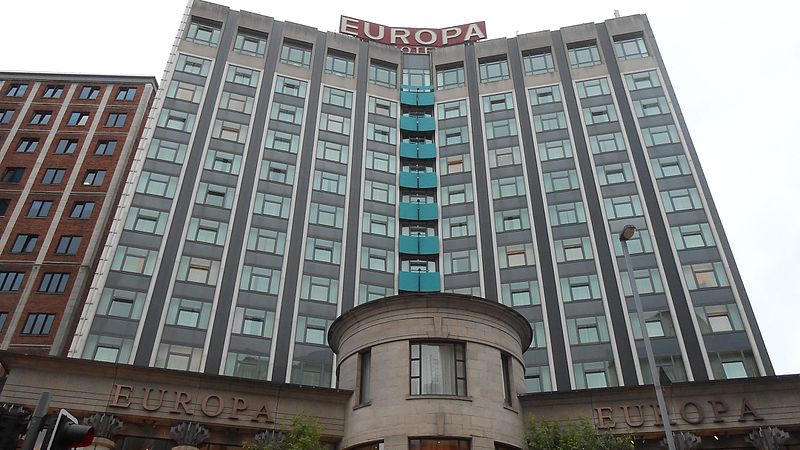
Europa Hotel is situated in Belfast’s city center, right next to Great Victoria Street Railway Station. This historic hotel, which opened in 1971, has long been a favorite of A-listers, dignitaries, and those in the know.
There is an elegant piano lounge, a modern bistro (the Causerie Restaurant), extensive meeting space, and 272 bedrooms here, including family-friendly interconnected rooms.
At the Europa Hotel, the rooms are spacious and tastefully decorated with glass and chrome in the bathrooms. There is no charge for using the free Wi-Fi that is available throughout the public spaces. Parts of the BBC documentary series Lobby Lives have been shot at the Europa Hotel, which is part of the prestigious Hastings Group.
The Fitzwilliam Hotel
View this post on Instagram A post shared by Brides By The Sea 🌊 (@bridesbythesea_ni)
It’s no surprise that celebrities flock to this stylish hotel. For good reason, the hotel’s opulent decor and friendly staff make for a truly relaxing experience. As far as location goes, you can’t go wrong.
The Fitzwilliam is just a short walk from the Opera House and City Hall. Modern art, colorful furnishings, and stylish interiors abound in these impressive luxury hotels in Belfast.
Restaurants and coffee shops are on-site, as well as a fitness center and free Wi-Fi. Room amenities include a laptop safe, a mini-refrigerator, complimentary coffee and tea, a desk and seating area, as well as other standard features Coffee and tea are provided in the lobby, and room service is available. Lounge areas are available for guests to relax in, as well as a 24-hour front desk service.
To book, click here .
For a city of its size, Belfast has a remarkable variety of dining options. The city has fine dining, brasseries, and bistros, as well as gastropubs, cafes, and some of the greatest fish and chips in the country.
Here are the greatest places to dine in Belfast, whether you’re searching for classic Irish cooking like the Ulster fry, Colcannon, or stew, or more sophisticated fare.
Address : 1 Oxford Street – Belfast BT1 3LA
View this post on Instagram A post shared by OX Belfast (@oxbelfast)
One of only two restaurants in Northern Ireland to be awarded a Michelin star , OX is conveniently located near the Lagan River and the market. For as long as OX has been in business, it has been known for its laid-back atmosphere and dishes made with fresh, locally sourced ingredients that are meticulously prepared.
Inspired by his work in Michelin-starred kitchens in Paris, Chef Stephen brings fresh ingredients to life on the plate by combining his imagination and creativity with the ingredients. OX guarantees menus that include high-quality meat and fish, as well as seasonal vegetables and fruit. Every dish at OX is prepared with meticulous attention to the freshness of the produce on the premises.
When you visit, try their tasting menu where each set offers a feast of flavors from a variety of cheeses, seafood, vegetables, and meat.
The Muddlers Club
Address : 1 Warehouse Lane, Belfast BT1 2DX
View this post on Instagram A post shared by Muddlers Club (@themuddlersclubbelfast)
Between Waring Street and Exchange Place in Belfast’s Cathedral Quarter, you’ll find this Michelin-starred eatery. The Muddlers’ Club gets its name from a secret society that used to meet in the building more than two centuries ago. They serve contemporary cuisine in a casual setting and use only the freshest, locally sourced produce.
Gareth McCaughey, the restaurant’s head chef and owner, personally selects the freshest, locally grown ingredients every day to guarantee the quality of each dish served. The Muddlers Club features an open kitchen, so diners can watch as the chefs transform raw ingredients into elegantly simple dishes right in front of them.
Established Coffee
Address: 54 Hill St. Belfast BT1 2LB
View this post on Instagram A post shared by Established Coffee (@establishedcoffee)
With its simple and authentic menu, Established Coffee is a popular destination for both locals and tourists alike. Minimalism is pushed to its limits at this Belfast cafe, which is a testament to its success. Do not be put off by the fact that it looks too simple; the coffee served here is some of the best in Belfast.
A menu that boasts of healthy and affordable dishes, traybakes, and lunches for people on a tight budget makes Established Coffee loved by its patrons. If you’ve been strolling around Belfast Cathedral Quarter and looking for a perfect place to enjoy a meal, Established Coffee is sure to satisfy you. Try their selection of coffee and tea as well as a variety of toasts and sandwiches.
Belfast is recognized for its enthusiasm for having a good time, or “the craic,” and the city has a dynamic and diverse nightlife. The pub scene in this Northern capital ranges from old alehouses to gastro pubs serving steaks washed down with excellent craft beers. There are also trendy rooftop cocktail bars with magnificent views of the city.
Check out this list of the best places to party and drink while you’re in Belfast for a taste of its local nightlife.
White’s Tavern

Ever wondered what Guinness pies taste like? Aside from having a pint of that black stuff, the White’s Tavern is one of the coolest bars you can lounge into. With its simplistic, yet clean and homely interior, it is one of the oldest buildings known in Belfast.
If you want to try some of their local dishes, the Co. Down Supreme of Chicken, Roast Prime Irish Beef, the Grilled Kilrea Rainbow Trout, the Irish Lambs Liver and Bacon, the Northern Irish Lamb Stew, the Fresh Portavogie Scampi, and the Pan Seared Local Cod, all of which are less than 11 euros per local dish meal . Enjoy some of their great beers, whiskeys, have a hearty local Irish meal, and enjoy your stay in White’s Tavern!
The Crown Liquor Saloon
View this post on Instagram A post shared by Danny Webber (@danny_webber)
Commonly known as the Crown Bar, the great pub is located at Great Victorian Street, and is considered one of the most traditional. The bar boasts of a myriad of fine-tasting ales and beers, fresh and local food, and the notable Irish merriment and hospitality. The historic bar, with its carved-mahogany booths and ancient stained windows, gives you the Medieval period feel.
The booths offer privacy, a sanctuary even, from the bustling streets of Belfast. If you are looking for an authentic medieval and classy pub experience, the Crown Bar is the bar for you.
The Belfast Empire

You have no time to be shocked in the interior of the, since its dark-fuchsia colored seating, table, and fixtures focus on the pink, punkish, and warm atmosphere that this bar provides. Great-tasting whiskeys, ales, and wine can be found in their comprehensive menu.

Belfast Castle
Belfast, the city of Northern Ireland and the birthplace of the lost ocean liner RMS Titanic, was once a major shipbuilding center. The city’s violent history is also well-known.
These days, however, Belfast is quickly building a reputation as a must-visit destination. The Titanic Quarter , which is a must-see attraction, as well as the castle and historic tours, are highlights of any Belfast visit.
To make the most of your time, this Belfast travel guide has a list of the top tourist attractions and things to do .
Learn the history of Titanic in the Titanic Belfast Museum

Titanic Museum in Belfast, Image by Christine Rogador
The Titanic Belfast Museum is one of the top places to see in Belfast. This huge museum offers self-guided tours for visitors who want to walk through the history of the RMS Titanic.
The tour starts with a piece of information on the history of Belfast in the 20th century followed by the shipbuilding industry in Belfast which includes the building of RMS Titanic by a local shipbuilding firm, Harland and Wolff.
A series of galleries then shows the launching of the Titanic, its voyage and the great tragedy. Artifacts and replica interiors of the Titanic are also inside the museum.
To enhance the experience, there are also interactive activities. The tour ends with photographs and video footage of the sunken Titanic.
Stop by the Belfast Castle

Built-in Scottish baronial style, the Belfast Castle is perfect for a quick stop before hiking in Cave Hill or visiting the Belfast Zoo. Visitors can only tour a portion of the castle though because most of the space is used for events like weddings and conferences. There are also offices and dining venues here.
The tour shows different exhibits of the history of Belfast Castle. Cafe and restaurant are also available.
Watch a musical in the Grand Opera House.

Grand Opera House is the remaining Victorian theater in Northern Ireland in present times. This theater has become one of Belfast popular landmarks and is popular for its beautiful interior.
From 2500 seats to 1000 seats, the theater still hosts various performance acts like ballet, theatrical plays, musicals, operas, pantomime, family shows, and educational talks.
A self-guided tour is also available for those who want to know the history of the theater.
In 2020, the theater is expected to undergo a large restoration project.
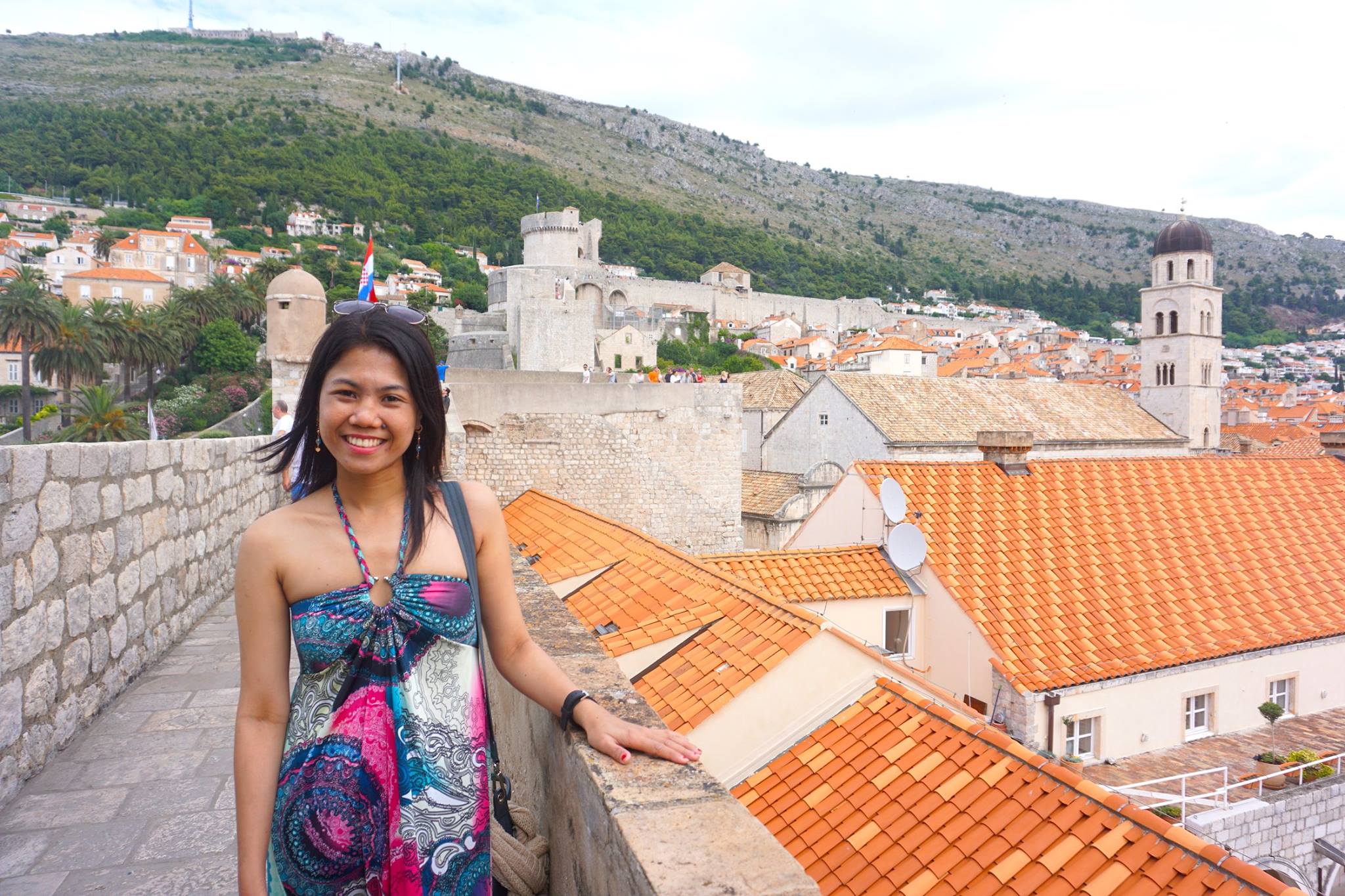
Hi, I’m Christine – a full-time traveler and career woman. Although I’m from the Philippines, my location independent career took me to over 40 countries for the past 8 years. I also lived in 3 continents – from the Caribbean, South East Asia to Africa. But despite living in several countries, my love for Ireland remains the same. A country that had been a part of my life since I was 14 because of my love for Irish music and bands. Ireland Travel Guides was born because of this passion and hopefully, in some little ways, this website will be able to help you on your next trip to Ireland.

Belfast Travel: A Guide To Visiting The City
About belfast.
Belfast is the capital of Northern Ireland and has all the attractions that larger national capitals have such as historic landmarks and a vibrant nightlife. It’s one of the best places to visit in Ireland , for good reason!
Belfast travel is aided by its good transport connections by air, ferry, road, and rail. It can be wet and cool, making summer the best time to travel, but Christmas shopping and sporting events are two of the reasons to consider travelling to Belfast in winter as well.
Have a look at this Belfast travel guide and start planning your trip!
BEST TIME TO VISIT
The climate is affected by Belfast’s proximity to the North Atlantic, the Irish Sea and the Gulf Stream, which has a moderating influence on the weather.
In Belfast, it’s rare to have prolonged periods of hot weather — although summers are pleasant.
Extremely cold weather is rare as well but winters can be damp and gloomy. There is no season where visitors can be guaranteed to avoid rain, but a rainproof jacket and umbrella will ensure you can enjoy your travels in Belfast.
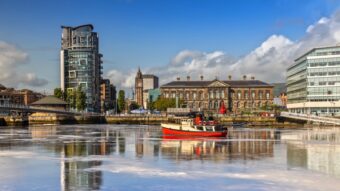
Peak Season
Belfast travel numbers definitely increase between May and the end of September. This is the main holiday period in Northern Europe with schools having an extended summer holiday.
Many of the outdoor activities around Belfast are best enjoyed when the weather is likely to be at its best, and the chance of rainfall diminishes.
Of course, peak season also means higher costs, but it can be worth it to enjoy nicer weather.
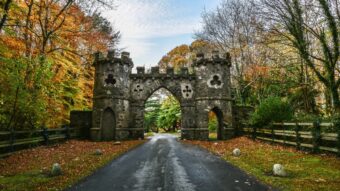
Shoulder Season
Easter is a popular holiday period and with the weather still mild in October, there are some weeks either side of the peak season when travellers can enjoy decent weather, less crowds and lower prices.
If you decide that is the time for travel, Belfast deserves consideration.
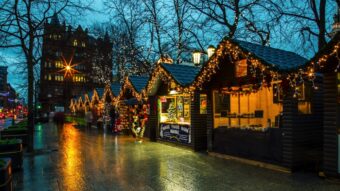
Even on a wet day, travelling in the city is enjoyable with the shopping on offer as well as the bars, restaurants and nightlife — which are open year-round, rain or shine!
Some prices will fall in the off-season and some of Belfast’s main attractions will be quieter, making the off-season a good time to travel Belfast if you’re on a budget, or don’t like crowds.
Neighbourhoods
Where to stay.
Belfast has something for every age and budget, making it a destination that can be enjoyed by everyone.
Of course, being central has its perks (especially if you’re just in the city for a weekend trip ), but there are a few neighbourhoods worth considering. Here are some ideas of where you might stay during your time in the city.
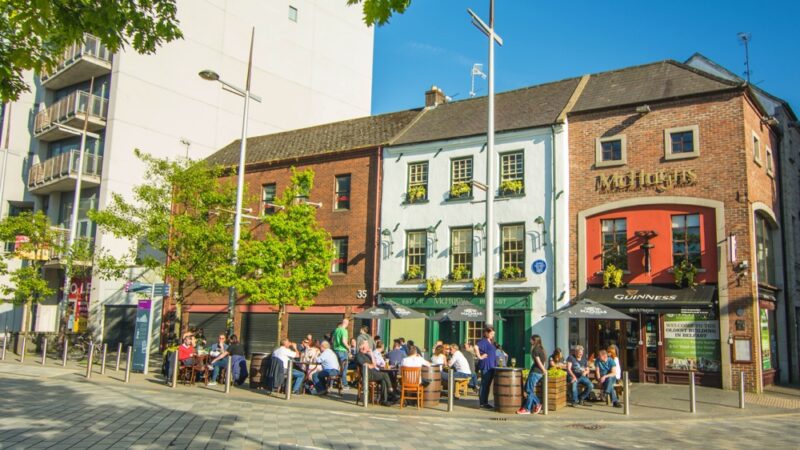
Cathedral Quarter
Centred around St.Anne’s Cathedral, this neighbourhood was formerly home to Belfast’s serious newspapers, it’s the equivalent of London’s Fleet Street.
It remains a busy area with accommodation to suit all budgets right up to the 5-star Merchant Hotel .
The nightlife in the Cathedral Quarter is just one of its attractions; the shopping is great as well.
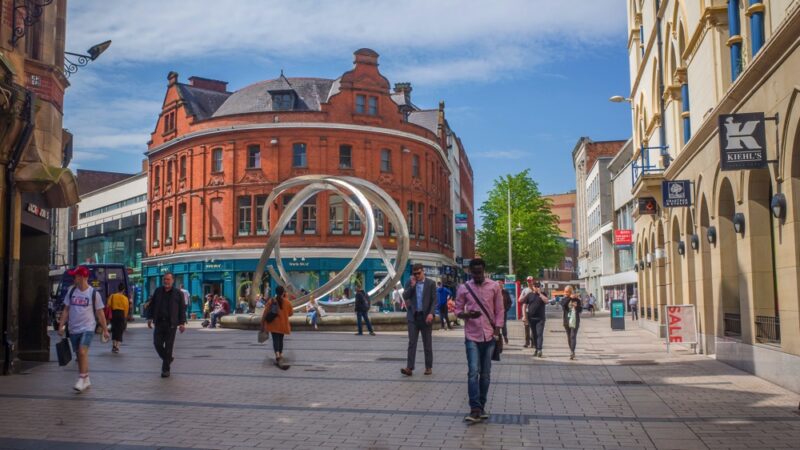
Central Belfast
City Hall is the heart of the Central District and a tour of the Hall and relaxing in its gardens is certainly worth your time.
St. George’s Market and shopping, in general, is close at hand.
This neighbourhood is another with plenty of bars and restaurants. Head to the Welcome Centre to get all the information needed to enjoy this Quarter.
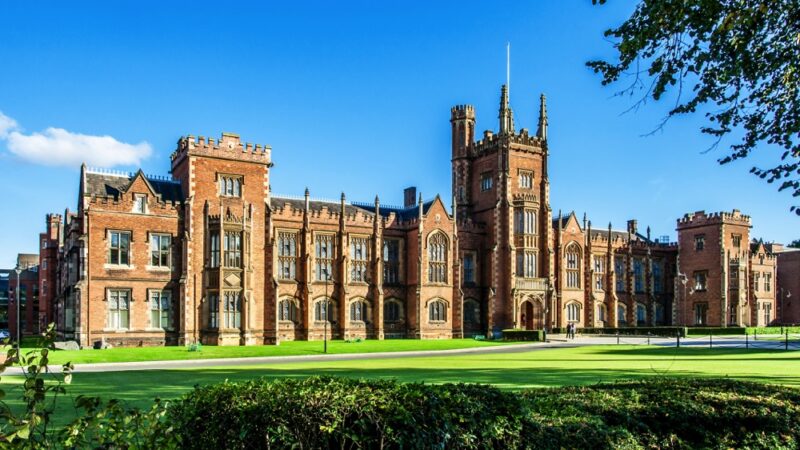
Queen's Quarter
Queen’s is one of the most famous universities in Ireland and this southern neighbourhood of Belfast takes its name from the educational institution.
The university architecture is impressive while the neighbourhood is the heart of Belfast’s cultural life. This is the place to stay if you’re travelling Belfast on a budget.
November’s International Arts Festival is held here while several venues within Queen’s host events attracting impressive audiences.
Anyone interested in theatre is spoilt for choice in this area where you can find Lyric Players’, Cresent Arts Centre and Queen’s Film Theatre.
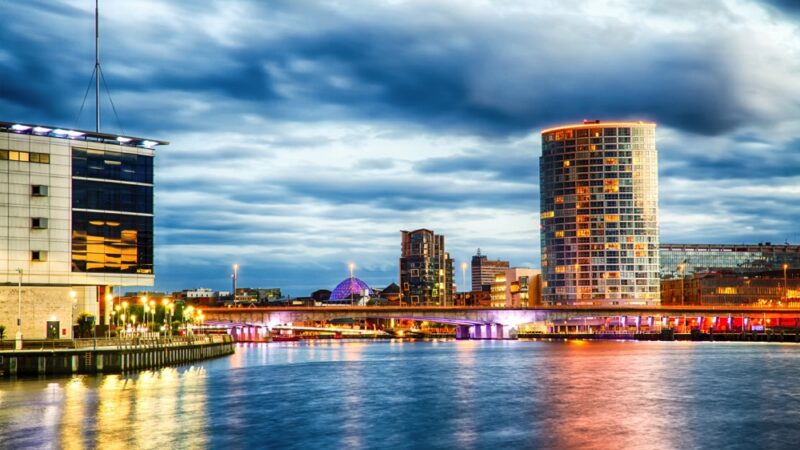
Titanic Quarter
This former shipyard is one of the newer neighbourhoods in Belfast, and is a more modern area.
Known for being where the Titanic was built, this quarter is a good place for families visiting Belfast.
It’s home to a strong maritime theme, with the Titanic Belfast tourist experience and great museums nearby.
THINGS TO SEE AND DO
Belfast is a compact city. Getting around by foot to see the top attractions a breeze.
The introductory city bus tour and the availability of plenty of tourist information make visiting Belfast very easy. Here are a few top things to do to get you started!
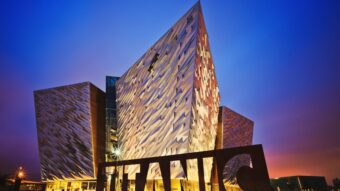
The Titanic was built by Harland & Wolff in Belfast and the museum dedicated to the work of the shipyard is something every visitor should experience. The building itself is impressive while the historical content is amazing.
Guided tours are available and are a means of avoiding queues.
Tickets must be booked in advance and will provide a time slot. Click here to find out more and get your tickets online.
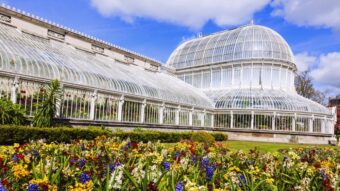
Museum & Botanic Gardens
The National Museum is full of historical and cultural exhibits, the best place to learn about Ireland from its very early days. It is set in the beautiful Botanic Gardens of Belfast.
It would be easy to spend a whole day here. It is closed on Mondays giving you plenty of time to pay a visit.
Admission is free but donations are most welcome. Find it here on the map.
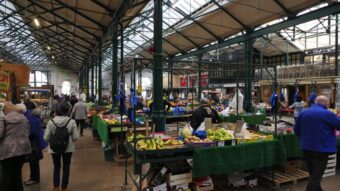
St. George's Food Market
Visit St. George’s Food Market on a weekend morning — it’s a favourite of the locals here. This bustling market is Belfast’s only surviving Victorian indoor market. Here you’ll find local food, flowers, fish, crafts and much more.
You can’t go to the market without ordering up a Belly-Buster Belfast Bap!
The market is open from Friday – Sunday and is located on May Street. Click here for directions.
TOP TOURS IN BELFAST
Join one of the walking tours of Belfast to get your bearings and see the main landmarks — there is no better way to familiarize yourself with the city.
Here are 3 top tours to join when visiting Belfast.
Belfast Murals Tour
There are two main ways to see the stunning art around Belfast; a guided walk or travel in a taxi.
In both cases, you can expect a knowledgeable guide who can explain the importance of each illustration.
The Peaceline Wall is the most significant of the places where you will be taken, while if you already know anything of the Troubles , you will have heard about the Falls Road and the Shankill Road either side of the Wall.
The Belfast Murals tour is a must-do in the city. With a guide, you’ll learn about this divided area and what the Loyalist and Republican murals represent.
The “ Political Taxi Tour ” is one of the most highly rated, and is worth every £. Find out more and book online here .
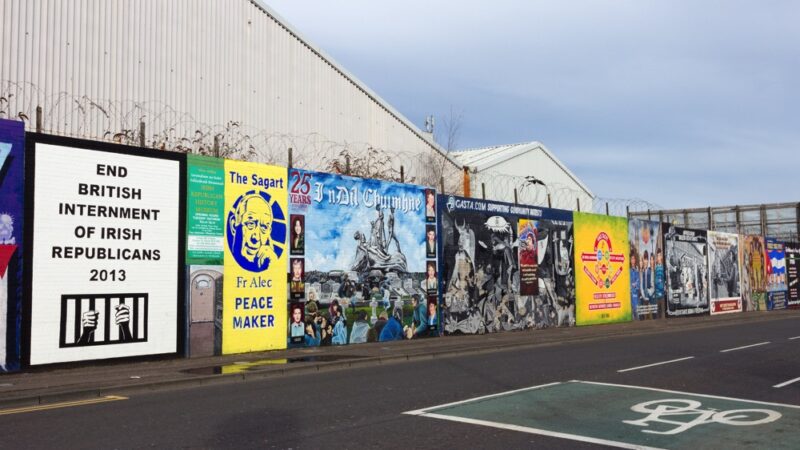
Crumlin Road Gaol Guided Tour
Crumlin Road Gaol played a significant role in the Troubles but it was in use many decades previously. An underground tunnel links the prison to the courthouse and more than 25,000 took that walk during the Troubles.
You can see a typical cell where a prisoner was held, and the place where convicts were hanged in Victorian times and during republican struggles.
The graveyard holds the bodies of those executed, but all in unmarked graves which was part of the sentence that was handed down by their judges.
Find out more and join this highly rated, affordable tour .
The Troubles Walking Tour
The religious conflict in Ulster is well-documented but to learn more and to get further insight into the origins of the Troubles, join a walking tour with a knowledgable guide.
There are several sites within the tour which will give you a feel for what life must have been like in those times before the 1990s saw peace prevail.
£19 ($25) is a small price to pay for the tour giving so much insight. Find out more here .
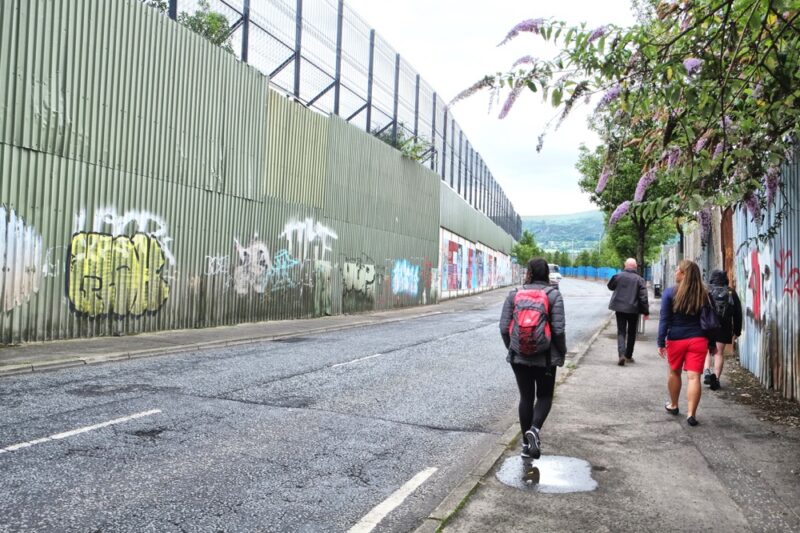
BEST DAY TRIPS FROM BELFAST
This northeast corner of the Island of Ireland is rich in history and has many incredible sites to see! Here are 3 to get you started.
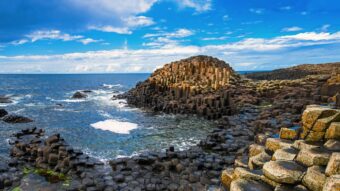
Giant's Causeway
This Causeway on Ulster’s northeast coast is the Province’s most impressive natural feature with a guided day trip the best way to see it.
Myth has it that the formation was built by an Irish giant who sought conflict with a Scottish giant and needed a ”bridge” to get to him.
In reality, the blocks were formed by volcanic activity and it is no surprise that this site has been recognised by UNESCO . You can walk on the rocks but take care because they are slippery.
The Giant’s Causeway is one of the best places to see in the UK in September . A day tour from Belfast will cost less than £22 ($30).

Game of Thrones
The hugely popular HBO Series was filmed at several locations and Ulster was one of the most important.
Fans of the series will love to take this tour and imagine the scenes from GOT while standing in the place where they were filmed!
It is a long but very enjoyable day by coach from Belfast. Find out more about this highly rated day trip here .
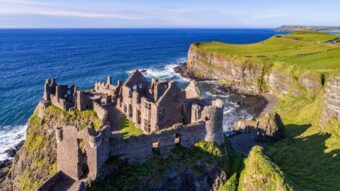
Northern Highlights & Castles
There are over 40 impressive castles built by the Normans for defensive reasons centuries ago and many are open to the public. They are a ”must” for visitors!
Dunluce, which gives its name to Royal Portrush’s Championship Course (one of the top golf courses in Ireland ), is located on a rocky outcrop overlooking the sea and was built by the Earl of Ulster in the 13th Century.
Carrickfergus is the Province’s largest castle, built by John de Courcy in 1177
WHERE AND WHAT TO EAT
Belfast offers a large range of international cuisine these days, but if you want to try some truly Irish food , the three dishes below are great suggestions.
The Ulster Fry
This hearty breakfast is available everywhere, from simple cafes to top hotels. It is a good way to fuel yourself for a day out exploring during Belfast!
You can expect potato bread and soda bread as well as black pudding, sometimes white, together with bacon, sausage, tomato, eggs and baked beans.
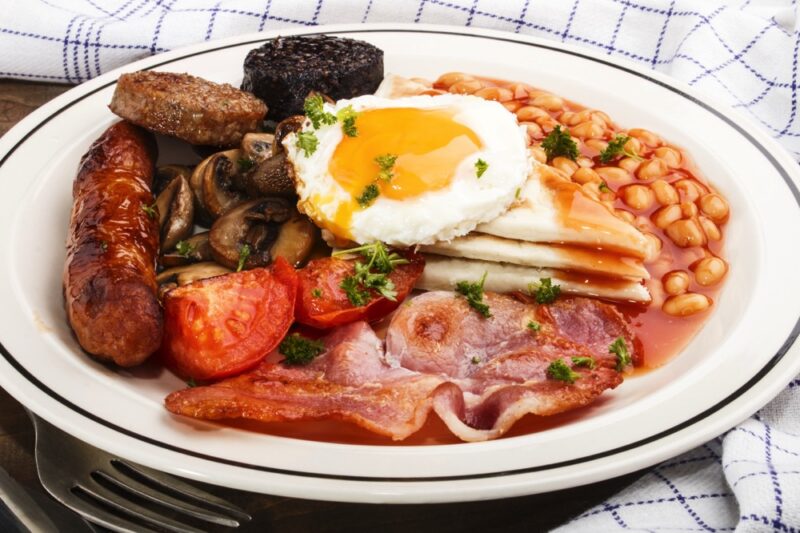
Colcannon, Bacon & Soda Bread
Colcannon combines potatoes with green leaf vegetables and spring onions, mashed using milk and butter. Add bacon and eat soda bread with this filling dish.
This is an inexpensive dish for lunch (unless you have already had a huge Ulster Fry) or for dinner in simple cafes.
Hot and filling food has been key to the health of the Irish working class. Lamb or mutton cooked slowly with root vegetables make up the filling dish on a winter’s day.
Cost varies with where you eat it, but it’s a tasty meal you’ll want to try in Belfast.

Best Restaurants in Belfast
Holohan’s At The Barge : Moored next to the Waterfront Theatre in the heart of Belfast, this restaurant puts emphasis on local produce although its fine wines concentrate on France.
Salmon and venison are both worth sampling, the seafood in general and local meat will match anything you have tried.
A 3-course lunch costs around $25, while for dinner you can spend $40 and be more than satisfied.
The restaurant is closed on Mondays but serves lunch from 1300 – 1600 and dinner 1700 – 2300, Tuesday to Saturday. Sunday is just lunch between 1300 and 1900. Find it on the map, here .
The Hoose Bistro : The novelty of the Hoose is its all-day menu with plenty of choice for all tastes. The food uses largely local produce that can be accompanied by fine wine, a range of gins and cocktails.
It can cater for large parties, pre-booked of course, as well as for an intimate dinner for two.
Opening hours are 1600- 2100, Wednesday to Saturday and 1300 – 1900 on Sundays when the roast is just $12. A three-course meal should cost you around $35 and there is a kids’ menu. Find it on the map, here .
Ox Belfast: This innovative restaurant offers a 6-course summer menu for $75 and three days a week, mid-week, a 4-course version for $62.50 so it is not cheap but if you want a treat, go for it!
At lunchtime, try 2 courses for $30 or 3 for $37.50.
There is plenty of choice in this Michelin-starred restaurant overlooking the River Lagan. Lunch is 1300 – 1430 and dinner 1800 – 2130 midweek. Find it here on the map.
BEST PUBS IN BELFAST
When in Ireland it has to be a pint of Guinness, but cider production has also become popular.
“Atmospheric” is a word often used to describe Irish pubs and you are certain to find that in these places as you visit Belfast and its amazing pubs!
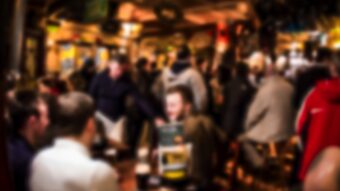
Duke Of York
This traditional bar is found in a narrow cobbled street in Half Bap. It is filled with memorabilia and the air is full of music and craic any day of the year.
Live music is played Thursday to Sunday and the famous group Snow Patrol made their debuts here just over 20 years ago. Find it on the map, here .

Kelly's Cellars
The Cellars are 300 years old and began as a tavern for the lower classes. Musicians would appear here looking for a little money and dancing was popular, especially after a few ales.
Many of its original features are still here today so take a look and enjoy yourself. Music plays every night while in the summer, sessions take place in the garden Friday to Sunday.
Irish stew is sometimes served but nothing else; this is truly a bar and not a restaurant. Find it here on the map .

Crown Liquor Saloon
This saloon was popular in Victorian times and its original gaslighting is still on display. Gin is an ever more popular drink these days and the Crown was one of the original gin palaces.
Many of Belfast’s top attractions are close by so take a break from sightseeing and drop in. Find it on the map here .
LIVE MUSIC VENUES
Ireland and music are synonymous. There is plenty to enjoy in many pubs but there are also larger venues which attract famous acts as well as those trying to carve out careers in entertainment.
Here are a few live music venues in Belfast you won’t want to miss.
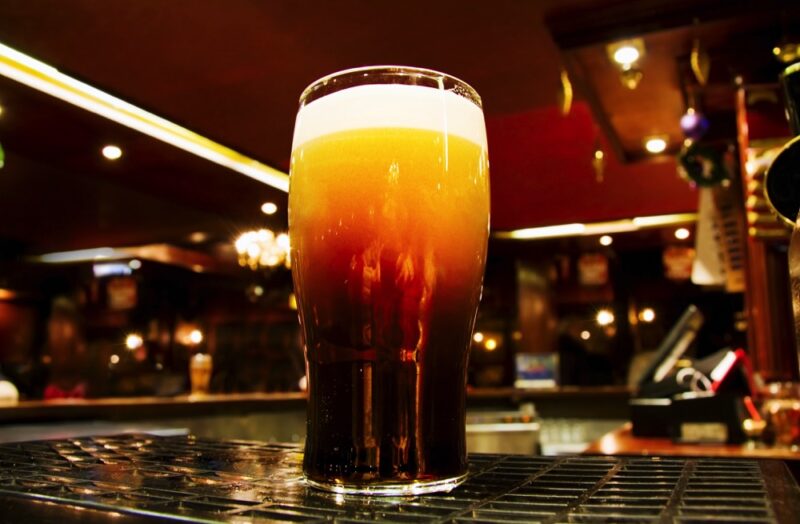
The Empire Music Hall
Seemingly a feature of Belfast life forever, the Empire only opened in 1987 but its architecture, a Victorian church, gives the impression of age.
The acoustics are excellent so everyone is keen to display their talents there while it also has a bar which attracts customers of its own, many going to watch live screenings of sporting events. Find it here on the map.
This large complex also opened in 1987 and comprises Limelight 1 and 2, The outdoor Rock Garden and Katy’s Bar. It is famous for its assistance to emerging local talent and who knows, you may see the next Irish international stars if you pay a visit.
After suffering financial problems, it was refurbished and rebranded by the current owners, MCD & Shine Productions, live Irish music promoters. Find directions here .
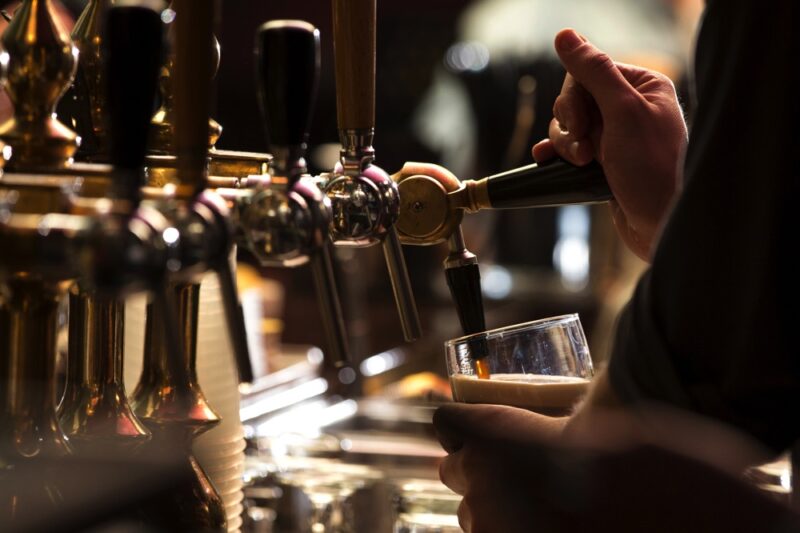
Oh Yeah Music Centre
A converted warehouse in the Cathedral Quarter, this is a place where you can enjoy the best of musical talent in Ulster.
It runs a musical bus tour which includes the places that Van Morrison used to frequent and for those more interested in more classical music, James Galway. Find it on the map here .
FESTIVALS IN BELFAST
Several cultural events appear on Belfast’s calendar and they are in no way confined to the peak summer season making Belfast travel an idea for any time of the year.

International Arts Festival
Belfast Festival at Queen’s began in 1962 until 2015 when the responsibility for hosting what is now the I nternational Arts Festival was handed to a new organisation with charity status.
Enjoy everything from music and dance, film and theatre. Venues are used throughout Belfast over a period of two weeks and in the past, Laurence Olivier, Billy Connolly, Jimi Hendrix and Rowan Atkinson have all appeared.
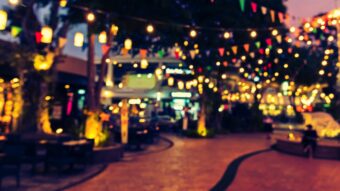
C S Lewis Festival
One of Ireland’s most influential writers has his life and work celebrated in November each year. C S Lewis is perhaps most famous for “The Chronicles of Narnia.”
A few days of workshops and events for all the family take place in different Belfast venues, run by Eastside Arts in C S Lewis Square where you will see seven sculptures of his most famous characters from “The Lion, the Witch and the Wardrobe”.

Cinemagic Film Festival
This is the largest festival of its kind in the UK and Ireland, offering the chance for youngsters to display their talents.
HIKING IN BELFAST
Belfast is in a beautiful area of Northern Ireland, so there are quite a few worthwhile hikes located nearby. When visiting Belfast, there’s no better way to get acquainted with the Northern Ireland landscape than to take a hike.
Here are a few of the best hiking trails to visit when you travel Belfast.
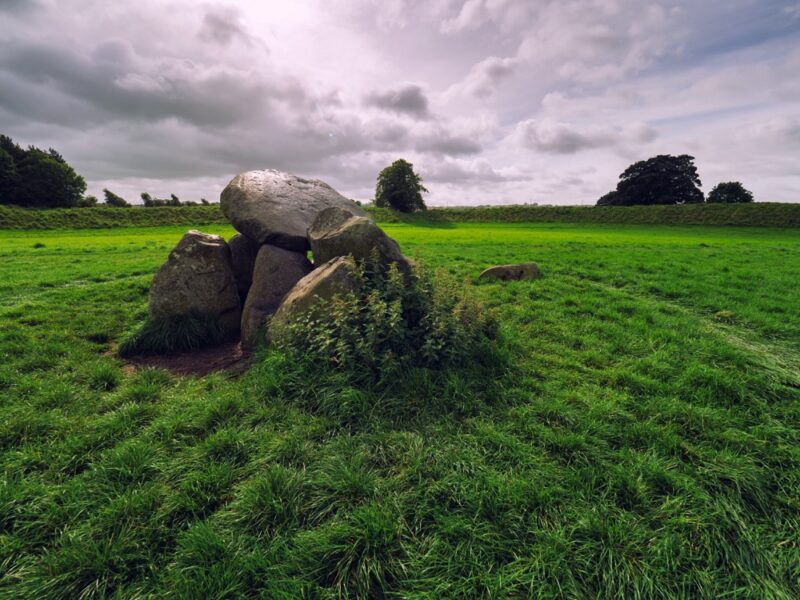
Giant's Ring Trail
Giant’s Ring is only a 15-minute drive outside of the city of Belfast, and it’s a perfect trail for beginners. It’s a scenic 3.5 km trail that takes a little over an hour to hike depending on the number of times you stop to soak up the view.
Along the trail, you can expect to see breathtaking woodlands, streams, bridges, and wildlife. Of course, the real highlight of the trail is the Giant’s Ring, which is a historical monument from the Neolithic period.
Though the route is short and easy, come prepared by wearing sturdy hiking shoes and packing water in case you get thirsty. You’ll also want to bring your camera to take photos of the monument! Find it here on the map.
Cavehill Trail
This beautiful trail is located 13 minutes north of Belfast up near Belfast Castle and is easily accessible by both car and public transportation. It’s a moderate loop trail through mainly the forest that is 6.6 km long.
Try to do this hike in the warmer months or around a time where Belfast doesn’t get a lot of rain. It’s known for getting muddy and slippery if the weather takes a turn which can make it a bit dangerous at times.
The Cavehill Trail is said to offer the best views of the entire city, but it does have different hours depending on the season. Be sure to pack water and snacks because you’re bound to get hungry during the hike. Find it here .
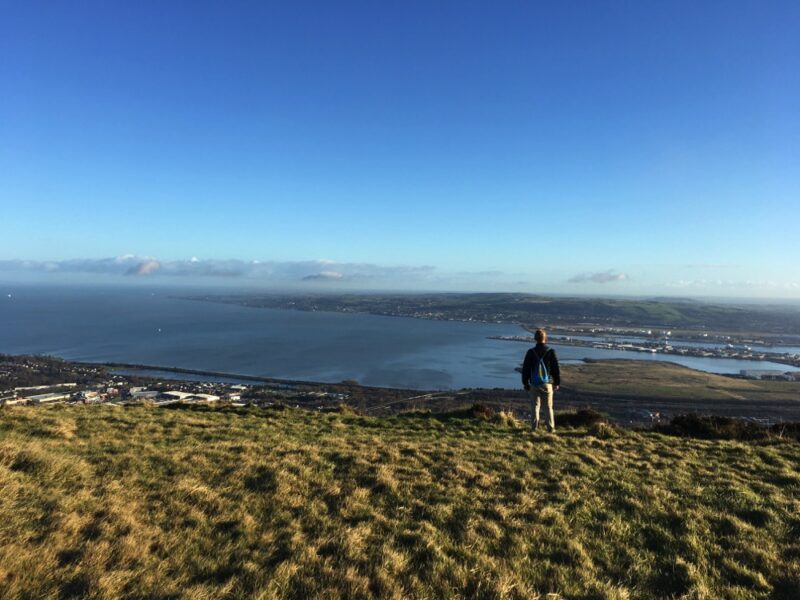
Slieve Croob "Twelve Cairns" Walk
Twelve Cairns Walk is a 4.3 km out and back trail that is perfect for moderate hikers located 45 minutes south of Belfast. It offers some of the best views of Slieve Croob and the Northern Ireland countryside, and, on fogless days, you can even see the Isle of Man and Scotland!
This trail is consistently voted as one of the best paths to do with a family because it’s not super challenging and offers views that you can’t get elsewhere. Just make sure you pack layers and wear good hiking shoes for your hike.
When you’re done, be sure to stop by the Slieve Croob Inn for a pint and a warm meal! Find it here on the map .
BEACHES IN BELFAST
Belfast is located right on Northern Ireland’s coast and is the perfect home base for visiting some of the country’s very best beaches.
The water in Northern Ireland is unlike the water anywhere else, and there’s no better way to spend the afternoon (or entire day) than with your toes in the blue sea.
Below are some of the most magnificent beaches you won’t want to miss out on when you visit Belfast!
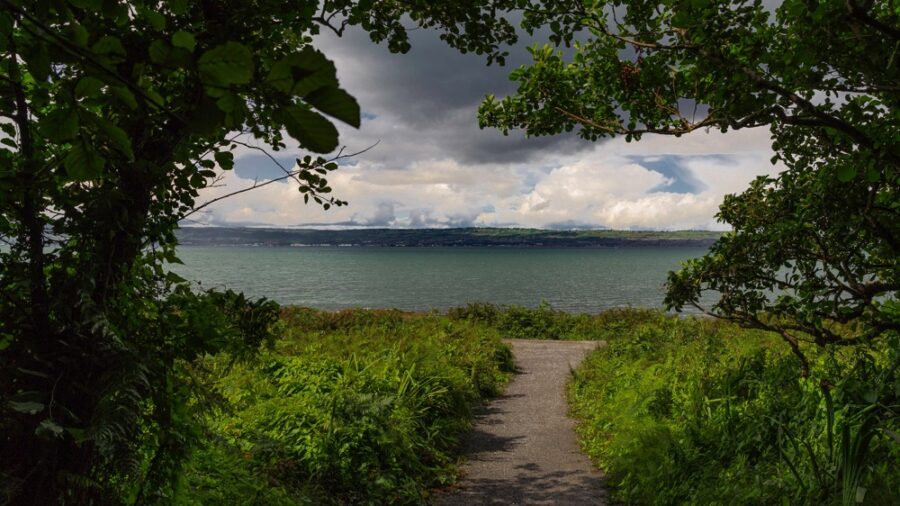
Helen's Bay
Helen’s Bay is only a short 20-minute drive or 1-hour ride on public transportation from Belfast. It’s located in the Carwfordsburn Country Park and is a tranquil sandy beach that is considered to be a hidden gem.
It’s a great place to go swimming or even to relax while the waves crash along the sand. There’s a cafe on-site in addition to a visitor centre and multiple spots to sit and have a picnic. Find it here .
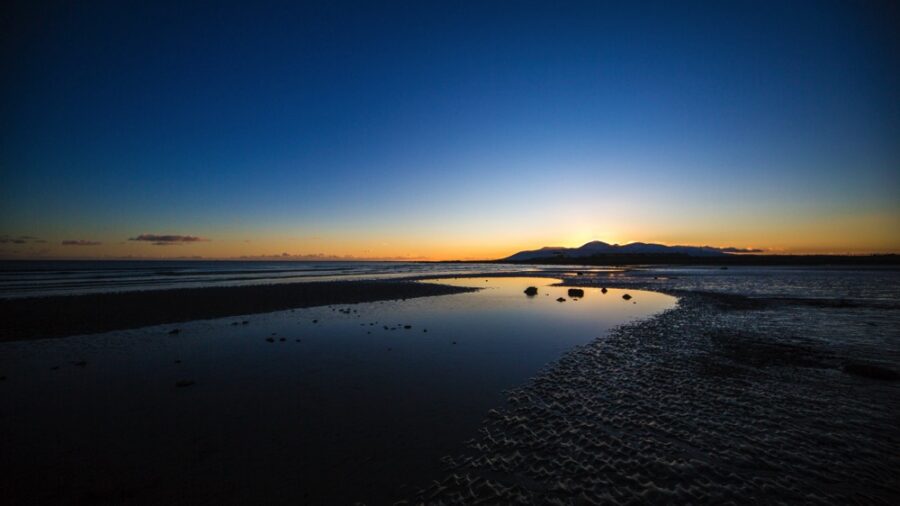
Tyrella Beach
Tyrella Beach is on Northern Ireland’s southern coast, and it takes just 45 minutes to get there by car from Belfast. This beach has won a few awards, including the 2011 Blue Flag Award for being beautiful and clean.
It covers 25 hectares and is incredibly scenic. There are breathtaking walking trails near the water that show some of the area’s most magnificent sights that are unforgettable.
There are multiple fun activities to do at this beach, including swimming and surfing, among other water sports. Tyrella Beach prides itself on being open every day of the year. Find it on the map, here .
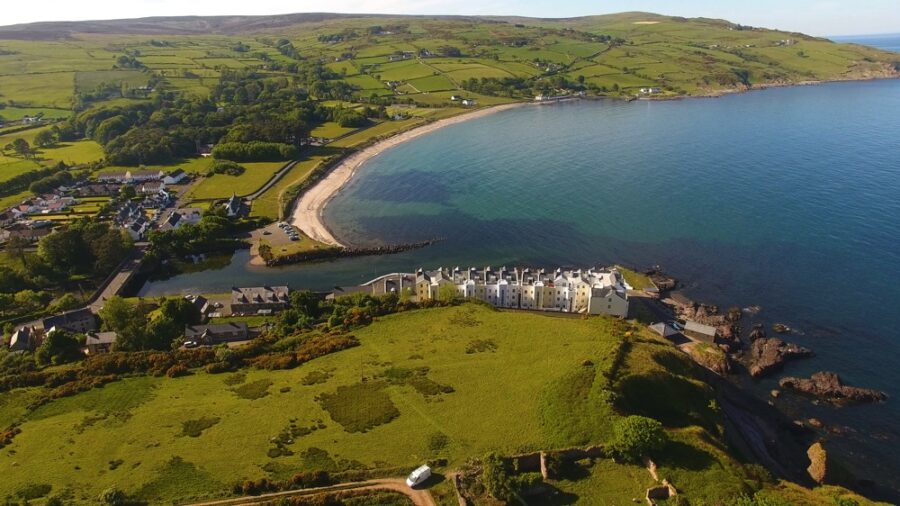
Cushendun Beach
The magnificent Cushendun Beach can be reached in just an hour by driving north of Belfast. It can be reached by public transportation as well, though this takes twice as long.
This sandy beach is picturesque and features lovely walking tours and swimming spots. It’s also located closeby one of the best Game of Thrones locations in Northern Ireland, Cushendun Caves, which is another must-visit when you travel to Belfast.
Cushendun Beach is the perfect place to go for a quick city getaway from Belfast, no matter the time of year. Families will particularly love this beach because of how quaint and spread out the beach is. Find it here on the map.
COST OF TRAVEL IN BELFAST
Belfast caters for those on a budget and those who want to splurge. Travel costs are not so important because of the size of the city, especially for those arriving at the nearby City Airport.
You will find accommodation in all price ranges and food is cheap in cafes if that is what you want.
Budget £45 / Day
Hostel accommodation, still central in Belfast, should be available for £12 ($15) per person so it is possible to live on £45 ($60) a day including food, drinks and public transport.
Mid-Range £130 / Day
You can get a double room in the heart of Belfast for £45 ( $60) so adding a few drinks in a pub and a pleasant dinner, then perhaps a taxi home will not break the bank.
Top-End £200 / Day
Stay at the Merchant Hotel and eat in a top restaurant and you will spend up to £300 ( $400) for a couple before you think about wine with dinner, drinks in a popular pub and taxis.
Transportation
Getting around belfast.
Belfast has a well-developed travel infrastructure for those wishing to travel extensively. Anyone staying within the heart of Belfast can walk to many of the attractions and to enjoy the nightlife.
- Public Bus: Belfast's public bus service called Metro runs high-frequency routes between 06:00 and 23:00, all passing through Donegall Square. Tourist passes and pre-paid cards can be bought at a kiosk in the Square. Buses are relatively expensive, even if the routes cover all the places you might want to go.
- Taxi: Black Taxi tours are famous in Belfast. They are the best way to get to and from the airport at night. Locals regularly share taxis, especially in the North and West and originate from the time when buses were often disrupted. They follow set routes with a fixed price of $1.25. Minicabs can only be booked in advance and not hailed in the street.
- Walking: Belfast has a compact city centre so visitors can see many of the main attractions and enjoy the best nighttime venues without worrying about transport until very late.
- To & From The Airport: George Best City Airport is just a short distance from the city centre. Regular buses run into town for just $3 until 2300 while the train fare is just $2 although trains are less frequent. Belfast International Airport is further away and is served by a bus service every 30 minutes until 2300 with the journey taking up to 45 minutes depending on traffic. The cost is $9 while taxis from this airport will cost at least $30.
IS BELFAST SAFE?
Central Belfast with its bars and restaurants is an extremely safe city at nighttime which is sometimes the time when tourists feel most vulnerable in a strange city.
There is even a strong case that it’s safer than other cities throughout the UK and Ireland. Your hotel will provide you with all the information you need in your immediate vicinity.
There are neighbourhoods to avoid in Belfast but none include attractions that tourists would visit at night. Falls Road, Turk Lodge, Shanklin and Crumlin Roads should not be visited at night and tourists should not write on the Peace Wall because it is a sensitive place.
Common sense should always be applied in any strange place and this applies to Belfast — but no more than anywhere else.
Images in this article are sourced on Shutterstock.com .
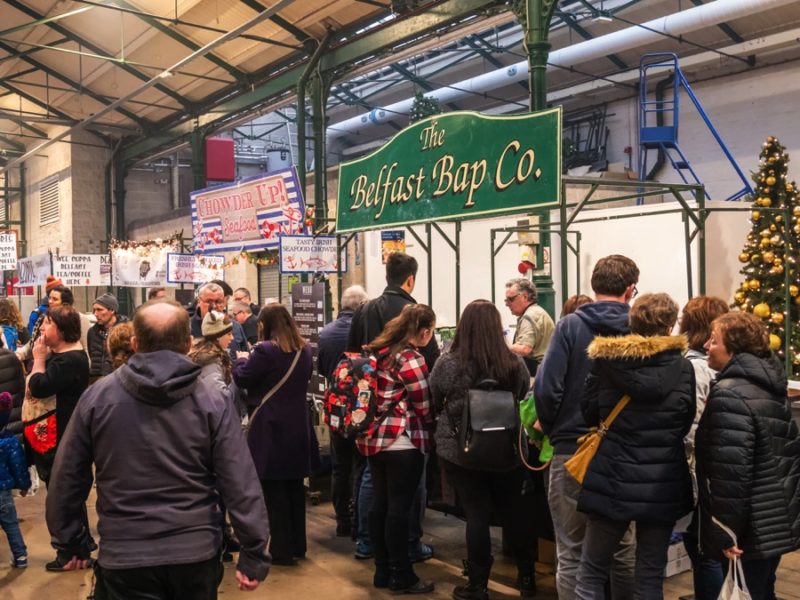
ALL BELFAST POSTS
10 best bars in belfast, northern ireland, 5 best day trips from belfast, ireland, 27 fun things to do in belfast, ireland, best belfast city tours for first-time visitors, lakes in northern ireland you need to visit, the top belfast festivals and events for you this summer, the perfect weekend in belfast, free things to do in belfast this summer, share this page, keep in touch.
Press Herald
Account Subscription: ACTIVE
Questions about your account? Our customer service team can be reached at [email protected] during business hours at (207) 791-6000 .
- Local & State
Celebrate Juneteenth at these Maine events
The holiday is Wednesday, but events start this weekend and run through the end of the month.
You are able to gift 5 more articles this month.
Anyone can access the link you share with no account required. Learn more .
With a Press Herald subscription, you can gift 5 articles each month.
It looks like you do not have any active subscriptions. To get one, go to the subscriptions page .
Loading....
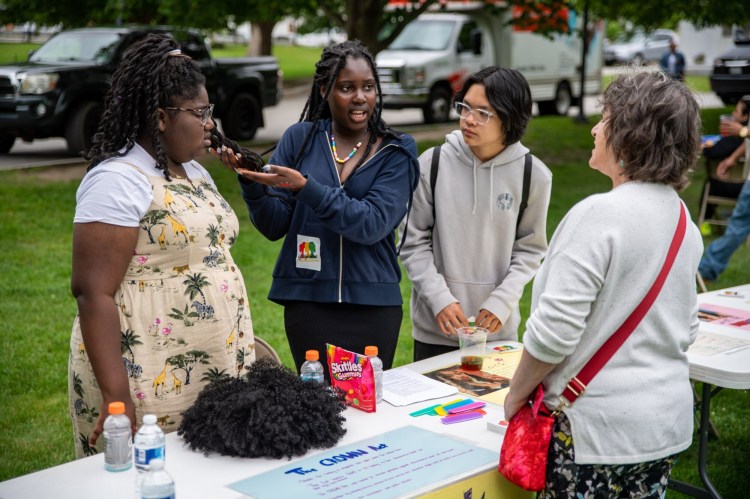
Westbrook Middle School students Bella Zollarcoffer, Priscila Nzolameso and Sarikong Oak held tables educating and informing the community on Black hair history at Westbrook’s Juneteenth celebration last year. Cullen McIntyre/Staff Photographer
Juneteenth, which became both a federal and state holiday in 2021 , celebrates the anniversary of federal troops’ arrival in Galveston, Texas, on June 19, 1865, to ensure all enslaved people had been freed. This year, the holiday falls on Wednesday, but celebrations are happening over the next two weeks.
10 a.m. to 5 p.m. – Indigo Arts Alliance presents The Welcome Table, an intergenerational symposium celebrating global cultural and culinary histories. Activities include art, movement and meditation workshops led by activists and cultural workers. 60 Cove St., Portland. indigoartsalliance.me
10 a.m. to 4 p.m. – Victoria Mansion is hosting a community day with free admission and a recitation of the Emancipation Proclamation by local actors. 109 Danforth St. Portland. victoriamansion.org
10 a.m. to 4 p.m. – Space and the Tate House Museum are putting on a Juneteenth community day with free admission and tours of Ashley Page’s “Imagining Freedom” exhibit at the museum. The historical art piece puts viewers into the shoes of an enslaved woman named Bet. 1267 Westbrook St., Portland. space538.org Advertisement
1-6:30 p.m. – The first event of “The City that Carries Us: Pain, Streets, and Heartbeats” will take place at the Public Theatre in Lewiston. The celebration will have a parade and a block party with performances, as well as scheduled activities and rituals throughout the day. It is hosted by the organization Maine Inside Out. 31 Maple St., Lewiston, maineinsideout.org
2-3 p.m. – Through “Poems of Reckoning and Resilience,” the Portland Museum of Art and Maine Writers and Publishers Alliance seek to honor the legacy of Black Americans. Featured poet Nathan McClain will join local poets in the Great Hall at the museum to celebrate Black liberation and creativity. The museum is also offering free admission Saturday through Monday, in celebration of both Juneteenth and Pride Month. 7 Congress Square, Portland. mainewriters.org
11:30 a.m. to 7:30 p.m. – The fifth annual Juneteenth Celebration on House Island in Casco Bay will focus on Black joy, as well as nature, health and economic opportunity. Guests can stay for one or two days, and partake in activities like camping, hiking, yoga and games, all led by BIPOC leaders. Fortland, House Island, Portland. eventbrite.com
4:30-7 p.m. – The Community Organizing Alliance is putting on an event with speakers, live performances, poetry readings, a voter registration drive and catering by Bab’s Table. There will also be opportunities to get involved in the racial justice movement. The Atrium at Bates Mill, 36 Chestnut St., Lewiston. eventbrite.com
1-3 p.m. – Riverbank Park in Westbrook will host a community event with art, poetry, music and guest speakers. There will also be a barbecue picnic, a student fashion show, hair braiding, pick-up soccer and more activities sponsored by the city. 667 Main St., Westbrook. On Facebook.
7-8 p.m. – The Portland Yoga Project is putting on a class called “Liberated Breath: A Juneteenth Yoga Experience” that seeks to reflect on the holiday through yoga. The class is free for BIPOC community members and is sponsored by the Portland Public Library. 7 Bedford St., Portland, allevents.in
Comments are not available on this story.
Send questions/comments to the editors.
Member Log In
Please enter your username and password below. Already a subscriber but don't have one? Click here .
Not a subscriber? Click here to see your options
You are using an outdated browser. Please upgrade your browser to improve your experience and security.

https://visitbelfast.com/see-do/sightseeing-tours/
- What's On Homepage
- Art & Exhibitions
- Children’s Events
- Food & Drink
- Free Events
- History & Heritage
- Learning Experiences
- Lectures & Talks
- Markets & Fairs
- Music & Concerts
- Nature & Wildlife
- Pubs & Clubs
- Shows & Displays

- See & Do Homepage
- Arts & Entertainment
- Attractions
- Green Attractions
- Green Spaces
Sightseeing Tours
- Information & Services
- Travel & Transport
- Competitions

- Eat & Drink Homepage
- Afternoon Tea
- Restaurants
- Food and Drink Experiences
- Pubs and Clubs
- Visit Belfast Food & Drink Voucher

- Ideas Homepage
- Belfast Plus
- Family Friendly Belfast
- Free Things To Do in Belfast
- Game of Thrones
- Titanic & Maritime
- Music in Belfast
- Embrace a Giant Spirit

- Stay Homepage
- Camping and Caravans
- Serviced Accommodation
- University Accommodation
- Green Stays

- Plan Homepage
- Getting Here
- Belfast Visitor Map
- Accessibility in Belfast
- Sustainable Belfast
- Getting Around Belfast
- Green Travel
- Belfast Visitor Pass
- Car Parking
- Brochures and Downloads
- Visitor Apps
- Neighbourhoods
- Sign Up to Mailing List
- Visit Belfast Welcome Centre

- Offers Offers
- Neighbourhoods Neighbourhoods
- Game of Thrones Game of Thrones
- Search Enter your search above to discover things to do, events, offers and more... Close
Explore Belfast and Northern Ireland with a sightseeing tour led by an experienced local guide. Choose from walking, bus, boat, bike and taxi tours, as well as themed tours on Titanic, Game of Thrones, Giant's Causeway, and food and drink.
Filter by Tag
- Accredited Green Attraction
- Adventure And Outdoor
- Arts, Crafts And Gifts
- Belfast City Tours
- Bus And Coach Tours
- Cathedral Quarter History & Heritage
- Cathedral Quarter Tours
- City Centre Heritage & History Attractions
- City Centre Tours & Information Services
- Cycling, Walking And Hiking
- Eastside Tours & Trails
- Family Attractions
- Family Friendly
- Family Friendly Restaurants
- Food And Drink
- Food And Drink Tours
- Foreign Language Available
- Foreign Language Service
- Full Day Tours
- Gaeltacht Quarter Tours
- Game Of Thrones Tours
- Giant's Causeway Tour
- Gluten Free Options
- Group Friendly
- Guided Taxi Tour
- Hen/stag Group Friendly
- Historic Attractions
- Historic Pub
- Hop-off Bus Tour
- Hop-on, Hop-off Bus Tour
- Music And Dance
- Performing And Visual Art
- Political History
- Political History Tours
- Self-guided Tour
- Titanic & Maritime
- Titanic Quarter Tours & Trails
- Titanic Tours
- Tour Guiding Service
- Tour Organiser/ground Handler
- Traditional Pub
- Unique And Unusual
- Vegan Friendly
- Vegetarian Friendly
- Walking Tour
Filter by Attribute
- Children's Play Area
- Lift/Elevator
Recommended in Sightseeing Tours
The discovery tour at titanic belfast.
The Discovery Tour is a one hour walking tour including a walk around the Titanic Slipways and inside…
Value Cabs Taxi Tours
Value Cabs offers a range of tours throughout Northern Ireland, with pick up and drop off at your…
Allens Giant's Causeway Tours
This Giant's Causeway Tours includes Carrick-a-rede Rope Bridge, Carrickfergus Castle and Bushmills Distillery.
Belfast à Pied
Discover the city on a tour of Belfast, exclusively in French, led by Stéphane.
Belfast Bike Tours
Belfast Bike Tours offers you a unique guided tour around the bustling streets of Belfast, steeped in history and culture!
Belfast City Bike Tours
A great way to orientate yourself in Belfast, choose from six fun and illuminating guided city tours, with bike hire service.
Belfast City Sightseeing Tour
Hop on and hop off bus tour throughout Belfast. Enjoy unlimited travel for 48 hours with more frequent departures than any other tour.
Belfast City Walking Tours & Coach Guiding Services
Belfast City Walking Tours and Coach Guide Services provide fully qualified and experienced local guide.
Belfast Free Walking Tour
Belfast Free Walking Tour is the only local, independent free tour company in Belfast, and all of the guides love to share their city and its…
Belfast Hidden Tours
Belfast Hidden Tours explore the city's art, history, politics and culture by walking the streets, meeting local people and enjoying the craic!
Belfast Photo Tours
Welcome to the World of Analogue Photography. A Small Group Photography Tour of Belfast's Titanic and Cathedral Quarters.
Belfast Print Workshop
Belfast Print Workshop print studio located in the Cathedral Quarter Est.1977 welcoming artists in the practice and promotion of printmaking for over 45 years.
Belfast Pub Crawl
Join for a night to remember experiencing Belfast’s historic & modern pubs and lively music scene on this Irish Traditional pub crawl.
Belfast Sightseeing
Belfast Sightseeing run award-winning guided tours and are the perfect way to explore the Emerald Isle.
Belfast Traditional Music Trail
The Belfast Traditional Music Trail is a unique way to experience Irish music in Belfast.

Belfast: Self-Guided City Walk & Interactive Treasure Hunt with Escape Room Twist
Adventure through Belfast unlocking a secret trail, solving puzzles & completing challenges earning points along the way. Learn fun facts & discover hidden gems. Will you…
Belfastlad Tours
Belfastlad tours provide a range of guided tours across Belfast and the north of Ireland.
Belfastology Walking Tours
Discover Belfast in a sustainable and eco friendly way. Hear of the Belfast humble beginnings, its troubled past. Yet rise to be a global leader in…
Bike Mourne
Welcome to Irelands Cycling Capital… Majestic mountains, dramatic coasts, stunning landscapes, enchanting forests, award winning mountain bike trails and endless year-round cycle adventures… the Mourne Mountains.
Black Taxi Tours
Travel with Black Taxi Tours to view the biggest outdoor art gallery in the world, the Belfast peace walls and listen to local history.
Brit Movie Tours - TV & Film Location Tours
Fun and informative guided tours of filming locations in Belfast and beyond from iconic TV shows made in Belfast
Cab Tours Belfast
Enjoy an amazing local tour with Cab Tours Belfast, Belfast's only cross-community owned black taxi tour company. Sit back, relax, and take in the history and…
Carlingford Lough Ferry
A voyage of discovery and unforgettable scenery as you cross the lough of myths and legends.
City Tours Belfast
City Tours Belfast – The BEST tours & Combination Tours In Belfast.
Clifton House Belfast
Clifton House, formerly the Poor House, was built in 1774 by the Belfast Charitable Society and is one of Belfast's most historic buildings.
Coiste Irish Political Tours
A unique walking tour delivered by former political prisoners who share their personal experiences of the British/Irish conflict
Creative Tours Belfast
Music and cultural tours of Belfast are their passion! Join your expert guide for a guided walk around cool music, heritage and arts spots in the…
DC Tours – ‘A History of Terror’ and ‘Best of Belfast’ City Centre Walking Tours
DC Tours offers a variety of walking tours led by expert local guides that explore Belfast's historical and cultural heritage.
Dr Tom’s Tours
Dr Tom is a Belfast historian, resident and Green Badge Tour Guide offering guided historical walking tours through Belfast’s complex past.
Experience Ards Tours
Experience Ards is a series of guided tours to help you explore Strangford Lough and the Ards Peninsula.
Game of Thrones Tours
Full day coach tours to Game of Thrones locations throughout Northern Ireland. Stark cloaks, Iron Island costumes and replica swords add to the adventure.
George Best Trail (Self guided)
Explore east Belfast as George Best would have seen it, and discover the places where the world-famous footballer grew up.
Hometown Tours
Hometown Tours provides fun and memorable guided bike and walking tours along the cycle paths and greenways of Belfast with local expert Steven Patterson.
If Buildings Could Talk Tour
Take a tour through Belfast City centre and hear stories of interesting, unusual and entertaining events that have happened in Belfast over the last 150 years.
Irish FA Tours
Irish FA Tours tells the unique story of Northern Ireland football from 1880 to present day using a variety of media, interactive displays, key artefacts and…
J&K Coaches LTD
J&K Coaches Ltd is a family run business operating a fleet of luxury coaches so that all customers can travel in style.
Kabosh Theatre Company
A Belfast based theatre company that specialise in cultural experiences embedded in the city space.
McComb's Coach Tours
McComb's Coach Tours is Belfast's original day tour company offering Giant's Causeway day tours, private tour, and Ireland's only Cabrio Tour.
Montalto Estate
For the first time in its history, this mystical and enchanting estate, set in magnificent natural surroundings, is open to visit.
Northern Ireland Tourist Guide Association
Northern Ireland Tourist Guiding Association (NITGA) is the professional tour guiding body that covers not just Northern Ireland but the whole island.
Northern Ireland War Memorial Museum
Discover the story of Northern Ireland during the Second World War.
Odyssey Tours Giant's Causeway Day Tour
A long established Giant's Causeway Tour, travel in a luxury coach along the Causeway Coastal Route - one of the world's most spectacular drives.
Paddywagon Tours
Daily tour from Belfast to the Giants Causeway, also visiting the Carrick-A-Rede Rope Bridge!
Street Art Walking Tour
Like Berlin and Bethlehem, also famous for their walls, Belfast has become a place where Street Art has flourished, where artists from around the world have…
Taste and Tour
Award-winning food & drink tours in Belfast, offering immersive culinary experiences. Discover, savour and love Belfast’s diverse flavours!
Taxitrax is the original Belfast Black Taxi Tour with over 40 years experience.
The Black Cab Tour
Blue Badge Guide Billy Scott provides black cab mural tours, city tours, Giant's Causeway tours and walking and pub tours.
The Discovery Tour is a one hour walking tour including a walk around the Titanic Slipways and inside the Titanic Belfast building.
Titanic Trail
The free, self-guided Titanic Trail is available to download on your mobile device.
Tour Guides NI
Tour Guides NI provide established and experienced guides for groups looking to experience the best that Northern Ireland has to offer.
Tour por Belfast - Tours en Español en Irlanda del Norte
Tours por Belfast es un equipo de guías que hace tanto tours en la ciudad de Belfast como tours privados y para grupos por todo Irlanda…
Value Cabs offers a range of tours throughout Northern Ireland, with pick up and drop off at your hotel.
Vegan Table Tour
For passionate vegans and non-vegans alike, this tour is for everyone who wants to sample a world-wide growing food movement.
Winterfell Castle – Game of Thrones Location Tours & Events
Breath fire into your Ireland vacation on a private Game of Thrones tour of Winterfell Castle. Meet Direwolf Dogs, try Archery & learn how the epic…

We're here to help, so if you can't find the info you're after, or you just want to ask a really odd question, then we're here for you.
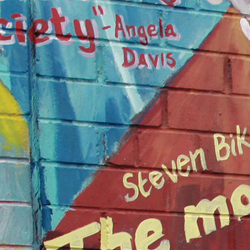
Visit Belfast Newsletter
Sign up to the Visit Belfast newsletter and receive inspiring ideas, events and offers which showcase the best of Belfast and Northern Ireland.
Ask a Question
" * " indicates required fields

Choose a date
- This Weekend
If you select a location more than 15km from the Visit Belfast Welcome Centre, your location will be set to Belfast City Centre.
Hide this tool

IMAGES
VIDEO
COMMENTS
For Belfast 2024, we're embracing our creativity. So, come and enjoy special moments, performances and celebrations in the city. Stroll through urban street art, relax in city gardens and discover Belfast's vibrant neighbourhoods. Then take in the sounds of the city with live music at bustling trad pubs and cool rooftop bars.
Visit Belfast Newsletter. Sign up to the Visit Belfast newsletter and receive inspiring ideas, events and offers which showcase the best of Belfast and Northern Ireland. We have a range of brochures and downloads to help you plan your trip to Belfast. This includes our city guide, food and drink guide, and maps of Belfast and No.
City Hall. Belfast. Belfast's classical Renaissance-style City Hall was built in fine, white Portland stone in 1906. Highlights of the free, 45-minute guided tour include the…
We're here to help you plan your perfect trip to Belfast. From information about getting to Belfast and travelling around the city to car parking, travel tips and guides to our neighbourhoods. Download Belfast visitor maps and brochures, and discover a host of visitor apps to help plan your trip. And if you've got a question, contact our ...
A travel guide to the top things to do in Belfast Northern Ireland as well as suggestions on getting around, where to stay, and day trip ideas. Belfast is probably best known for Belfast Titanic (Titanic museum), street murals, and The Troubles, but there is a lot to do and see in Belfast. It also has a lively historic city center, the famous Titanic Quarter, fun pubs, excellent museums ...
Dark tourism at Crumlin Road Gaol. Opened in 1846, the Victorian-era Crumlin Road Gaol is a brooding prison that closed its doors in 1996 after 150 years of operation. Self-guided tours with audio guides and holograms are the best way to explore its cavernous tunnel, shoebox cells, and macabre graveyard.
Waterman Restaurant. Opened in June 2022 by Niall Mckenna and his team, and awarded a Bib Gourmand in the Michelin Guide for Great Britain & Ireland 2023, the Waterman restaurant offers a no-frills dining experience in Belfast's Cathedral Quarter. Serving a local, seasonal menu, with accents and influences from Europe, the menu changes daily.
Phone +44 28 9031 4762. Web Visit website. The Belfast Botanic Gardens have been one of the best places to take a stroll in the city since 1828. The gardens were created to satisfy a growing public interest in plants of all sorts and the park is now full of rare and exotic trees, shrubs, and flowers.
The best time to visit Belfast is generally during the summer. So, the most popular months for traveling are June to August. The temperatures are pleasant, and the long days are ideal for exploring every nook and cranny Belfast offers. The only disadvantage is that this is the peak tourist season in Northern Ireland.
16. Drink to the Game of Thrones Doors. The famous Kingsroad is a real life road of trees in Northern Ireland, locally called the Dark Hedges. After the show aired, tourists and massive buses descended upon the road, weakening the trees' roots. Storm Gertrude hit the coast and 2 of the massive trees actually blew over.
54.589722 -5.979167. 20 City Cemetery, 511 Falls Road, Belfast BT12 6DE ( at the corner of Falls Rd and Whiterock Road ), ☏ +44 28 9032 3112. M-Sa 8AM-4PM, Su 10AM-4PM. Opened in 1869, the cemetery is full of Victorian funerary statuary, with separate areas for Catholics and Protestants, plus Commonwealth war graves.
Queen's Arcade. You'll find endless things to do in Belfast, from world-class attractions, historic landmarks, museums, shopping and entertainment venues, to walking, coach, taxi and bike sightseeing tours. And as the gateway to Northern Ireland, Belfast is perfectly positioned for sightseeing tours to Giant's Causeway, Game of Thrones ...
The Merchant Hotel - A beautiful 5-star historic luxury hotel in the heart of Belfast. Found in a beautiful 1860 building, the hotel offers all the luxury amenities you would expect, including a restaurant, bar and lounge, spa, hot tub, and a rooftop gymnasium. You can see all the listings available in Belfast here.
Keswick. Plan your Visit to Belfast with free Belfast itineraries, guides, things to do and maps. Create your personal guide to Belfast with full information on all top attractions.
LGBT Travel Information for Belfast. The main resource of Belfast's gay scene is Queerspace, part of Cara-Friend, 9-13 Waring Street (wwww.queerspace.org.uk), a collective that aims to serve the needs and raise the profile of the gay, lesbian, bisexual and transgender community of Belfast and Northern Ireland; it holds weekly drop-in sessions on the afternoons of the first and third ...
Titanic Belfast. Located at the city's Titanic Quarter, this attraction is more than just a museum. It's an immersive experience into the life of the Titanic. Visitors can explore interactive displays, artefacts, and even a shipyard ride. Adult tickets start at £24.50, and it's recommended to book in advance.
Doubles from £75. 36 Cromwell Road, Botanic Avenue; 028 9059 0900. • A complete guide to the best hotels in Belfast. Take home luxurious lambswool, cashmere and mohair blankets, throws and ...
The Titanic Quarter, which is a must-see attraction, as well as the castle and historic tours, are highlights of any Belfast visit. To make the most of your time, this Belfast travel guide has a list of the top tourist attractions and things to do. Learn the history of Titanic in the Titanic Belfast Museum. Titanic Museum in Belfast, Image by ...
Restaurant Guide To Belfast Family Friendly Restaurants in Belfast ... Queen's University is one of the great architectural landmarks and must-see attractions in Belfast with over 160 years of heritage. Find Out More. Redburn Country Park. 10.89 KM.
Belfast travel is aided by its good transport connections by air, ferry, road, and rail. It can be wet and cool, making summer the best time to travel, but Christmas shopping and sporting events are two of the reasons to consider travelling to Belfast in winter as well. Have a look at this Belfast travel guide and start planning your trip!
This Belfast travel guide shares the best things to do in Belfast, Northern Ireland.-----Recommended Tours in Belfast:Cab tours belfast famous bl...
Take a look at our top 10 visitor attractions in Belfast! From the birthplace of the Titanic to our iconic City Hall, you'll find a large selection of historic landmarks and world-class visitor attractions in Belfast.
Given below are the top tourist attractions in Belfast: 1. Titanic Belfast - Museum ... Backstage Tours: Embark on a knowledgeable guide-led behind-the-scenes tour of the Grand Opera House. This tour offers a fascinating glimpse into its storied past, backstage areas, and production facilities.
Questions about your account? Our customer service team can be reached at [email protected] during business hours at (207) 791-6000.
Sightseeing Tours. Explore Belfast and Northern Ireland with a sightseeing tour led by an experienced local guide. Choose from walking, bus, boat, bike and taxi tours, as well as themed tours on Titanic, Game of Thrones, Giant's Causeway, and food and drink. Items 1 to 52 of 52. A-Z.